Onity HTRFIDMFR01 RFID TRANSMITTER User Manual HT28v5 1 Aug 17 2011
Onity, Inc. RFID TRANSMITTER HT28v5 1 Aug 17 2011
Onity >
Users Manual
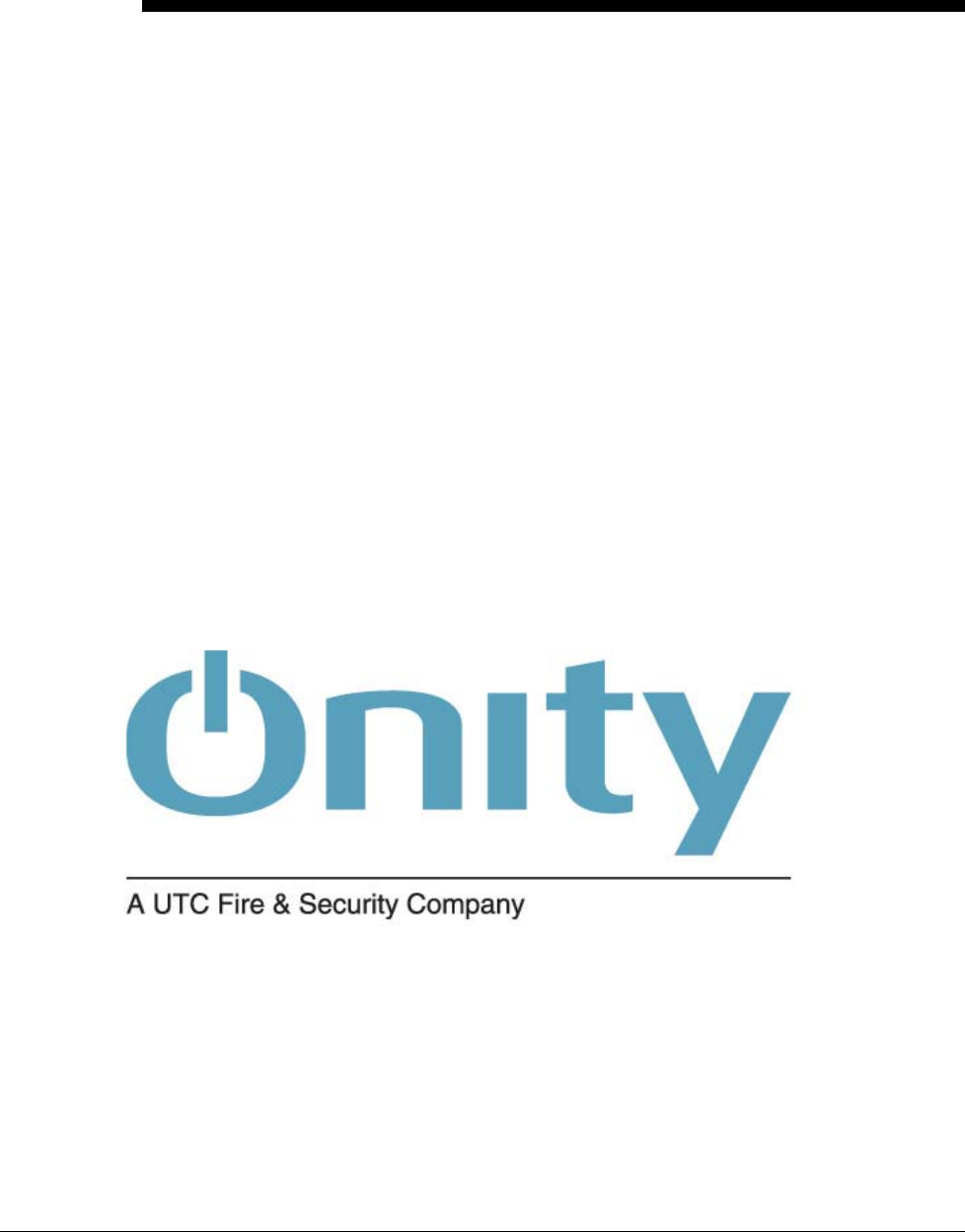
Onity
HT24W / HT28 Smart
Version 5.2 User Manual

Contacting Onity
Worldwide Headquarters
Atlanta, GA USA
1-770-497-3949
1-800-424-1433
moreinfo@onity.com
North America
1-770-935-4228
1-800-424-1433
NORAM@onity.com
Europe / Middle East / Africa
34-943-448-300
EMEA@onity.com
Latin America
55-11-3031-1909
LAM@onity.com
Asia / Pacific
+8862 2719 2665
ASPAC@onity.com
The information contained within this manual is subject to change without notice. In no way does Onity,
Inc. warrant that the operation of this system will be entirely error free or perform precisely as described
within this documentation, or that the functions and features of this system will meet your specific
requirements.
Windows is a registered trademark of Microsoft Corporation
All information contained in this documentation is the sole property of Onity, Inc. Unauthorized use and
reproduction is strictly prohibited. Documentation © 2011 Onity, Inc.

Onity HT24W / HT28 Smart Contents • iii
Contents
Contacting Onity ........................................................................................................................ ii
Worldwide Headquarters ............................................................................................. ii
North America ............................................................................................................. ii
Europe / Middle East / Africa ...................................................................................... ii
Latin America .............................................................................................................. ii
Asia / Pacific ............................................................................................................... ii
Introduction 1
Who is Onity .............................................................................................................................. 1
Problems with Metal Key Systems ............................................................................................ 1
Benefits of Onity Electronic Locking Systems .......................................................................... 1
About this Manual ..................................................................................................................... 2
What's New ................................................................................................................................ 2
Software - HT24W / HT28 Smart 3
General ....................................................................................................................................... 3
HT24W vs. HT28 Smart ............................................................................................................ 3
HT24W ........................................................................................................................ 3
HT28 Smart ................................................................................................................. 3
Reception Menu (F10) ............................................................................................................... 4
New Guest Check-In (F5) ........................................................................................... 4
Copy Guest (F6) .......................................................................................................... 7
Check-Out (F7) .......................................................................................................... 10
Single Opening Card (F8) ......................................................................................... 11
Read a Card (F3) ....................................................................................................... 14
Erase a Card (F4) ....................................................................................................... 15
Hotel Information (F2) .............................................................................................. 16
Groups ....................................................................................................................... 18
Peripheral Openings .................................................................................................. 23
Logout / Login (F9) ................................................................................................... 25
Exit ............................................................................................................................ 25
Masters Menu .......................................................................................................................... 26
Revalidation............................................................................................................... 26
Master Users (F11) .................................................................................................... 27
Master Canceling Card .............................................................................................. 38
Special Cards Menu ................................................................................................................. 40
Encode Guest Canceling Card ................................................................................... 40
Encode Blocking Card ............................................................................................... 40
Encode Diagnostic Card ............................................................................................ 41
Encode Spare Cards ................................................................................................... 41
Encode Safe Emergency Card ................................................................................... 42
Maintenance Menu .................................................................................................................. 43
Load Portable Programmer ........................................................................................ 43
Peripheral Diagnosis .................................................................................................. 48
Station Diagnosis ....................................................................................................... 50

iv • Contents Onity HT24W / HT28 Smart
Room Out of Service ................................................................................................. 50
Mastering Changes .................................................................................................... 51
Backup Data .............................................................................................................. 53
Emphasized Authorizations Data .............................................................................. 54
Move to Historic ........................................................................................................ 56
Security Menu .......................................................................................................................... 58
System Auditor .......................................................................................................... 58
Lock Openings .......................................................................................................... 61
Door Transactions ..................................................................................................... 61
Card Activity Report ................................................................................................. 64
Lock Status Report .................................................................................................... 66
Operators ................................................................................................................... 68
Operator Levels Required .......................................................................................... 71
XPP Mastering .......................................................................................................... 71
Configuration ........................................................................................................................... 73
Language ................................................................................................................... 73
Change Date and Time .............................................................................................. 73
Station Configuration ................................................................................................ 73
Change Encoder ........................................................................................................ 75
Config. Emergency Reval. ........................................................................................ 75
Check-Out Warning................................................................................................... 76
PMS Enabled ............................................................................................................. 76
Show PMS Communications ..................................................................................... 76
Hardware 77
HT24W / ADVANCE (Magnetic) System Components ........................................................ 77
HT24 Magnetic Stripe Lockset .................................................................................. 77
Magnetic Cards .......................................................................................................... 80
HT24 Card Readers ................................................................................................... 82
Encoders .................................................................................................................... 83
HT28 / ADVANCE Dual Smart System Components ........................................................... 87
HT28 Dual / ADVANCE Dual Technology Lockset ................................................ 87
Smart Cards ............................................................................................................... 90
Smart Card Encoder .................................................................................................. 91
HT Proximity, HT RFID and Advance RFID™ System Components .................................... 94
Lock Configurations .................................................................................................. 94
Lock Operating Modes .............................................................................................. 96
Light & Audible Indications ...................................................................................... 97
Time Tables ............................................................................................................... 98
Daylight Savings Time .............................................................................................. 98
Battery Operation ...................................................................................................... 98
Lock Auditor ............................................................................................................. 99
Keycards & Tokens ................................................................................................... 99
HT22iP Encoder (HT Proximity Only) ................................................................... 102
HT22P Encoder (ADVANCE RFID / HT RFID Only) ........................................... 104
General Components ............................................................................................................. 106
Portable Programmer ............................................................................................... 106
Extended Portable Programmer (XPP) .................................................................... 110
Communications Distributor ................................................................................... 115
Terminal Mode Encoders ....................................................................................................... 117
Online Revalidator ................................................................................................................. 119
Revalidator Options ................................................................................................. 119
Using the Revalidator .............................................................................................. 121
Emergency Mode - Revalidator ............................................................................... 122

Onity HT24W / HT28 Smart Contents • v
Quick Reference Guide 124
Lockset Light Indications ...................................................................................................... 124
HT24W / HT28 Smart Software Icons .................................................................................. 125
HT24W / HT28 Smart Shortcut Function Keys ..................................................................... 126
What to Do If … .................................................................................................................... 127
A staff member has lost a master card … ................................................................ 127
Our PMS interface is down … ................................................................................ 127
Power is out and our encoders don't work … .......................................................... 128
A guest needs a late check-out time … ................................................................... 128
Daylight Savings Time is next week … .................................................................. 128
We want to provide our own cards … ..................................................................... 128
We want to punch holes in our master cards to wear them on a chain … ............... 129
When should we replace our cards … ..................................................................... 129
Troubleshooting ..................................................................................................................... 129
Guest card will not open the door – red light .......................................................... 129
Guest card will not open the door – flashing red light ............................................. 129
Guest and staff cards will not open the door – flashing red and green lights .......... 129
Guest and staff cards will not open the door – solid green, flashing red light ......... 130
Card has broken in lock ........................................................................................... 130
The programmer will not turn on ............................................................................ 130
The programmer beeps, but the screen is blank ....................................................... 130
The screen on our encoder is blank ......................................................................... 130
We get encoding errors when making cards ............................................................ 130
Our PMS says that Onity is not responding ............................................................. 131
Appendix A – Certifications 132
Advance RFID ....................................................................................................................... 132
HT RFID ................................................................................................................................ 133
Appendix B – Import Users 134
Add User Command .............................................................................................................. 134
Glossary of Terms 137
Index 139

Onity HT24W / HT28 Smart Introduction • 1
Introduction
Who is Onity
Onity, (formerly TESA Entry Systems), the leading global provider of electronic
locking systems, offers innovative technological solutions and services for the
Hospitality, Corporate, Education, Government and Marine markets. The company’s
ever-expanding family of electronic solutions today includes electronic locks, related
Smart card & Proximity technology, in-room safes, and Senercomm energy
management systems. Onity has global R&D and manufacturing operations, as well
as an extensive sales and service network that spans more than 115 countries around
the globe. With innovative solutions specially designed to meet clients’ changing
needs, Onity continues to provide real progress — technological advancements in
facility management and maintenance for unparalleled convenience and time and
cost savings.
Problems with Metal Key Systems
Traditional metal key lock systems are vulnerable in a variety of ways. A guest may
simply keep a key or have a copy made so that he can return to the room at a later
time. When keys are missing, the locks are often not re-keyed due to the cost and
time requirements. An experienced criminal can study several keys or look inside the
key cylinders and decode the key system, allowing him to create a grand master key
to the property.
Benefits of Onity Electronic Locking Systems
Onity locks do not require re-keying if a guest keeps a card. Each new guest card
issued automatically re-keys the lock to prevent access by the previous guests, so
your guests are secure. Additionally, the guest cards will expire at the date and time
designated during check-in. There are no mechanical parts able to be decoded that
will allow criminals into the rooms; the lock is unlocked only through an encrypted
code. Onity locks also store the most recent openings in non-volatile memory,
allowing the hotelier to know exactly who has been in the room, and when.
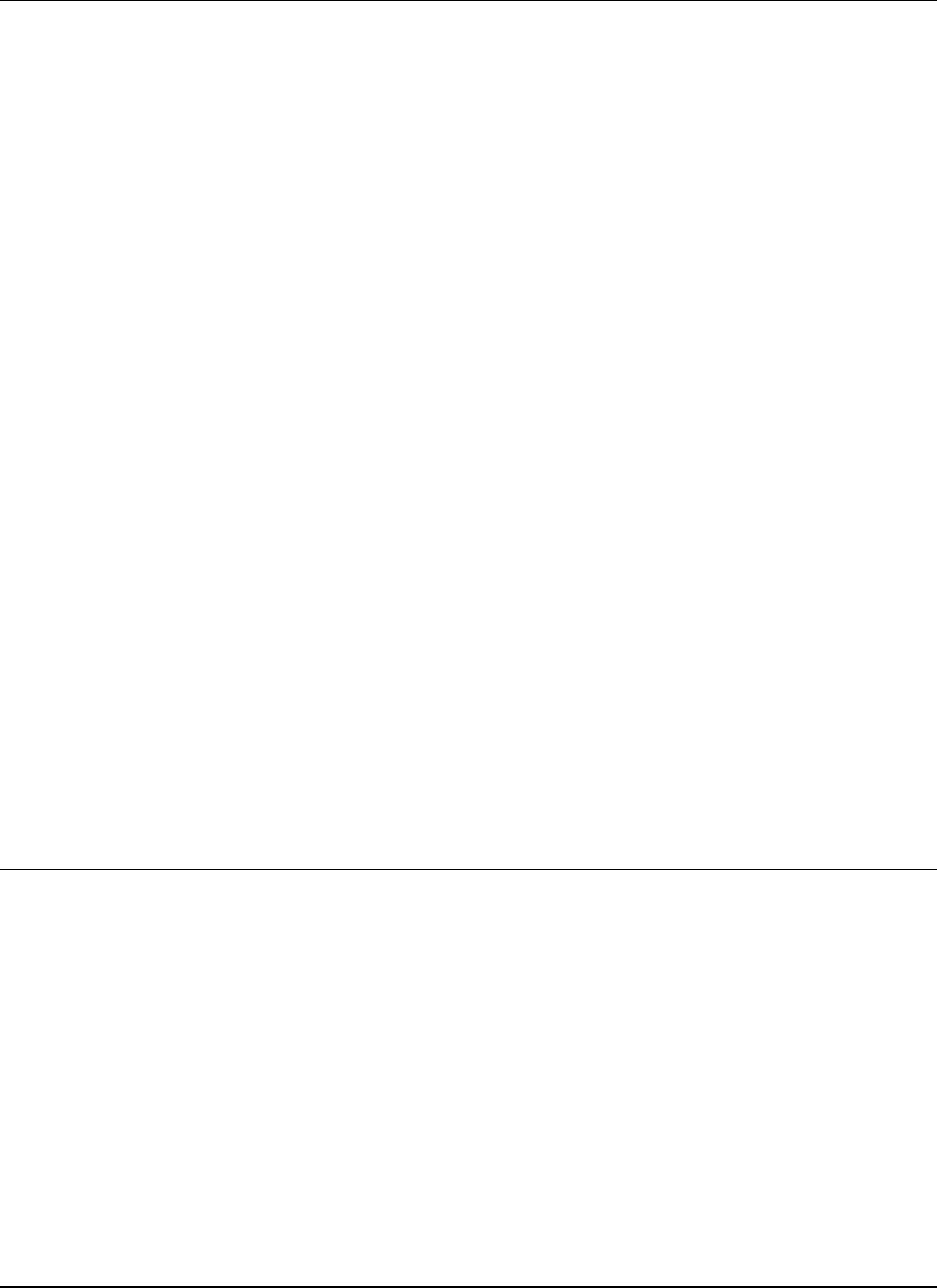
2 • Introduction Onity HT24W / HT28 Smart
About this Manual
This manual is a guide to help you understand the Onity system, including locks,
software, and peripherals. The system is very flexible and can utilize traditional
magnetic stripe cards as well as the latest in smart card technology.
There are many smart and proximity cards available today. Onity has selected
several cards with features that most benefit the hospitality industry. These cards are
detailed later in this manual and are available from Onity.
Throughout this manual, the term 'smart card' will refer to any contact type memory
cards or microprocessor cards, ‘proximity card’ will refer to contactless type
memory or microprocessor cards and RFID will refer to Mifare cards. Though there
are many technical differences between the types of available cards, the Onity
system handles the differences transparently to the user. In cases where the
differences are notable, detailed explanations will point out the differences.
A Word about Maintenance
Your Onity locking system is an important part of an overall security system for your
guest’s safety.
The Onity lock will provide years of service when properly maintained. However,
the lock is a single element of a door system that must also be maintained. Onity can
provide you with full services for the door lock, but it is the properties’ responsibility
to maintain the door and its associated hardware. The lock will not work as
effectively if the door itself is not professionally maintained.
According to Facilitiesnet.com typical failures with doors are: hinges, closers, door
misalignment, and weather stripping. For example, doors can become misaligned
due to the shifting or settling of the walls. Also, they can become misaligned as the
result of the damage to the door frame from luggage carts or maid carts.
Onity recommends that you contract with a professional door maintenance company
and set up a preventive maintenance program for doors and associated hardware.
Note: Onity’s warranty does not cover issues caused by warped doors, misalignment,
dragging edges, or dragging weather stripping, closer issues or sagging / out of
square frames.
What's New
ADVANCE (Magnetic lock)
ADVANCE RFID lock
HT22P encoder
HT RFID lock
Onity’s ADVANCE is a revolutionary locking solution that combines the proven
reliability of the world's most trusted name in electronic locking with a fresh new
aesthetic that is designed to meet the needs of the demanding hospitality
environment
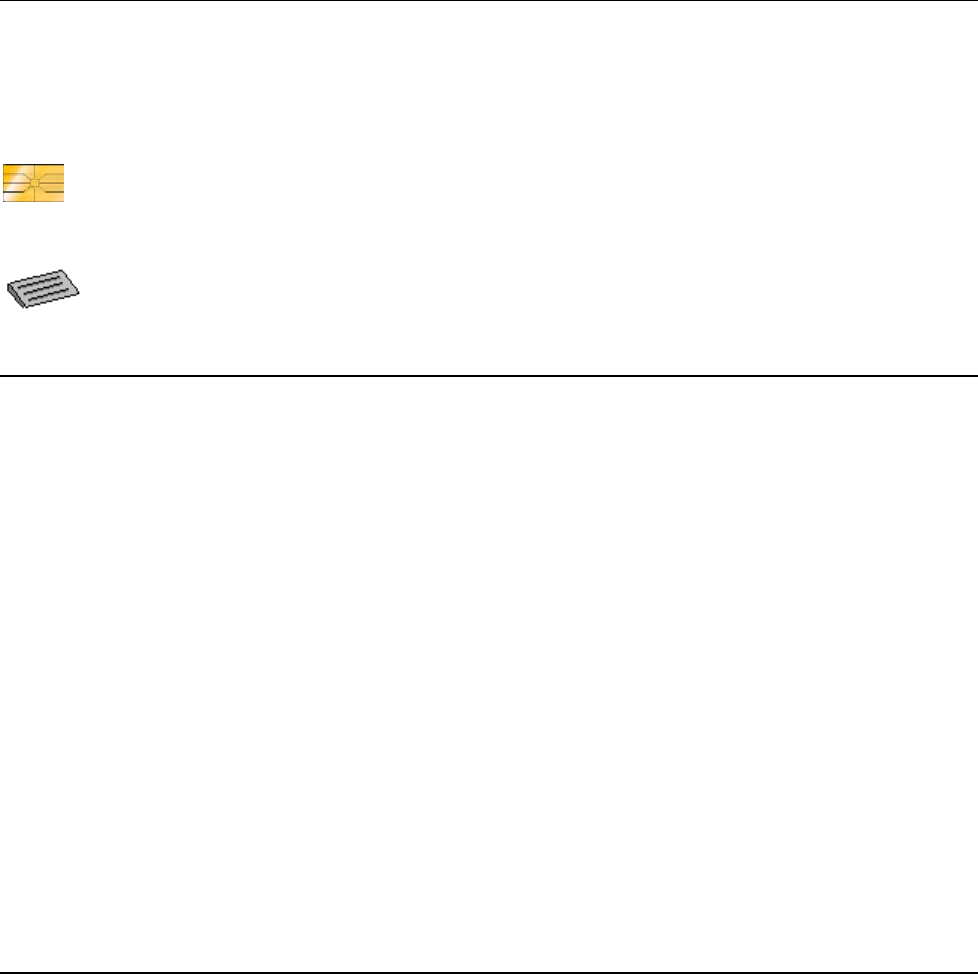
Onity HT24W / HT28 Smart Software - HT24W / HT28 Smart • 3
Software - HT24W / HT28 Smart
General
The HT24W / HT28 Smart system is a revolutionary step in locking systems. The
following sections will take you step by step through all of the features and functions
of the software. Some features are only available in the HT28 Smart system that
uses smart cards.
Available only with
H
T28 Smart!
• In this manual, the Smart only features will be indicated with this symbol in the
left-hand margin.
• The front desk functions that are used most frequently have been designed so
that the operator can quickly complete the process without requiring the mouse.
The keyboard image shown to the left indicates the functions designed for
keyboard use.
D
esigned for keyboard use!
HT24W vs. HT28 Smart
This manual applies to the software and hardware that makes up the HT24W and
HT28 Smart systems. The systems are identical in many ways, but there are several
important differences.
HT24W
The HT24W system uses Windows based software to manage and control the HT24
series magnetic stripe locks,HT Proximity Locks, HT RFID locks, ADVANCE locks
and ADVANCE RFID locks. .
HT28 Smart
The HT28 Smart system uses Windows based software to manage and control HT28
dual technology, smart card and magnetic stripe, locks and/or HT Proximity Locks.
There are several features in the software that can only be used with HT28 locks and
smart cards. The primary feature difference is that card transactions can be stored on
the smart card.
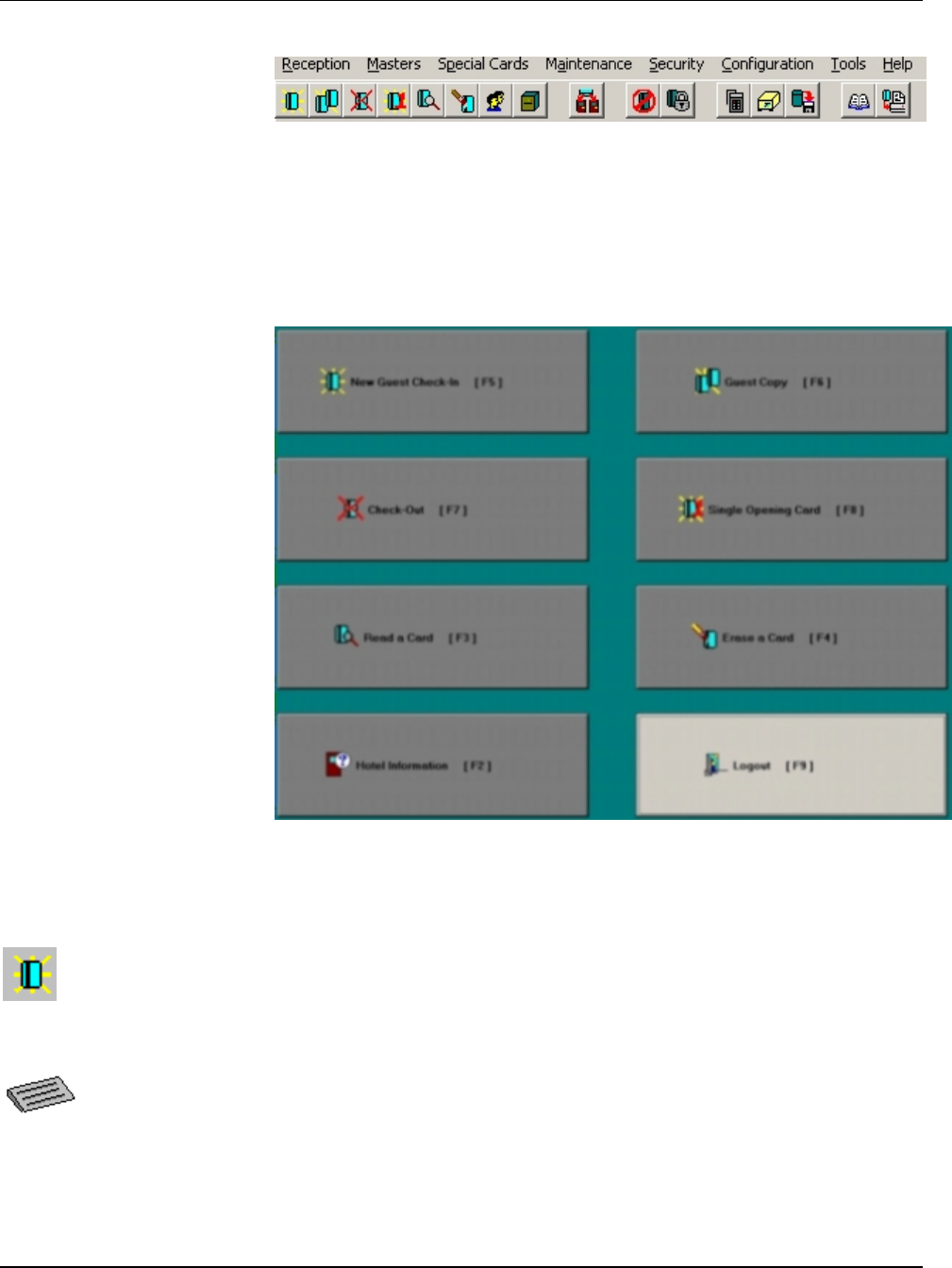
4 • Software - HT24W / HT28 Smart Onity HT24W / HT28 Smart
Reception Menu (F10)
The Reception Menu includes the most frequently used functions, including New
Guest Check-In, Copy Guest and Check-Out. Many functions on the Reception
Menu have been designed to be used without the use of a mouse. Although a mouse
can be used in these functions, the operations will be completed more quickly by
using only the keyboard.
The primary functions of the Reception Menu can be accessed from the main screen
through the Hot Buttons. These buttons are shown in the figure below. For quick
access to the full Reception Menu, press the F10 key.
New Guest Check-In (F5)
New Guest Check-In
D
esigned for keyboard use!
This function is used when a new guest is to be checked into a room. When the
new card is used in the lock, the card of the previous guest will automatically be
canceled.
The New Guest Check-In function of the system allows you to make guest cards
that will work in up to four guestroom doors, depending on the type of encoder
used to make the card. The HT24 motorized encoder can encode up to four
rooms. Manual insertion encoders can encode a maximum of three rooms on
one card. As an example, if a family checked into the hotel, and the parents
requested one room for themselves and another room for the children, the cards
can be made to work in both locks.
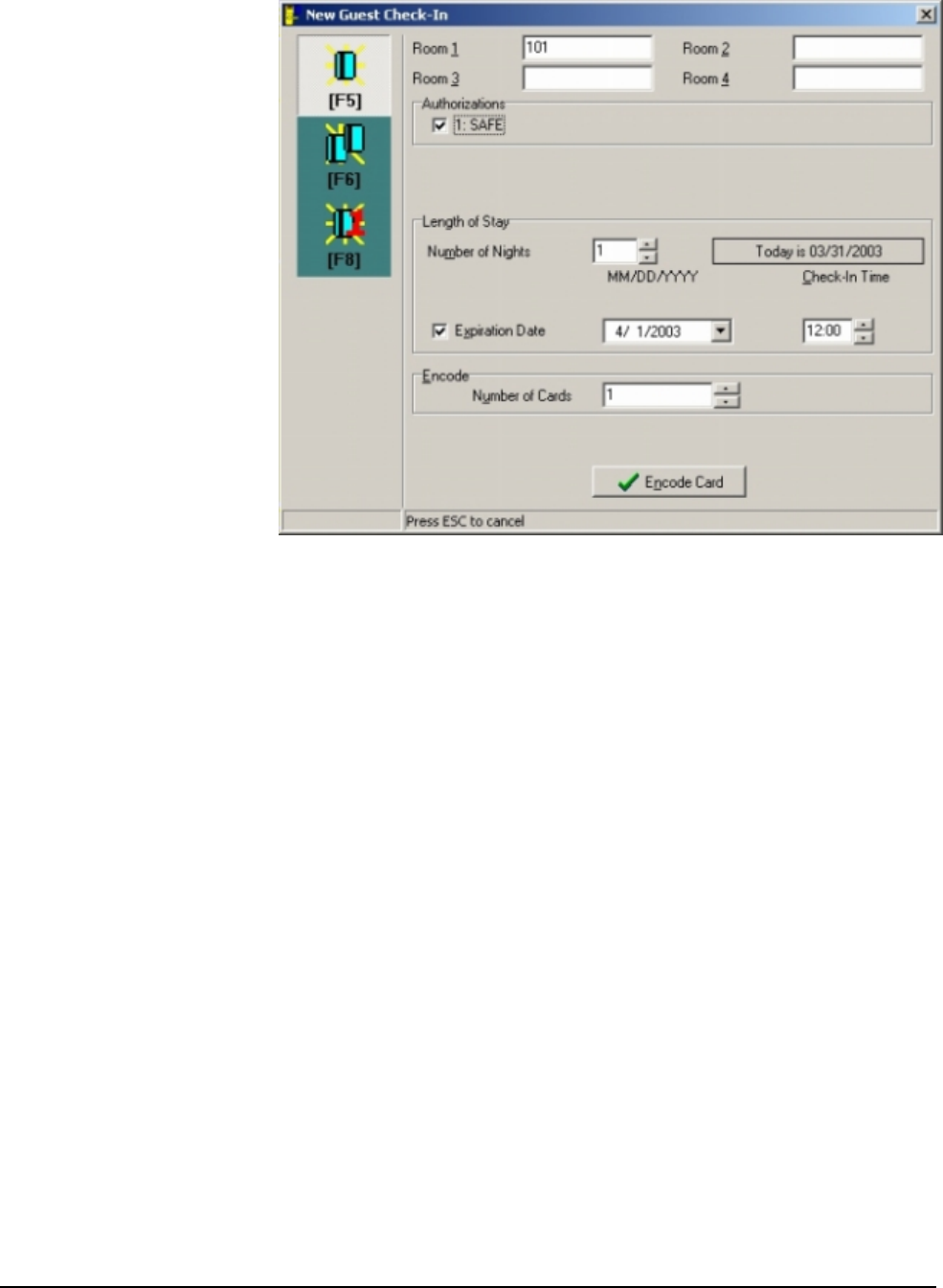
Onity HT24W / HT28 Smart Software - HT24W / HT28 Smart • 5
To check in a new guest, perform the following steps:
1. From the Reception Menu, click on New Guest (Check-In), press F5, or
click on the New Guest Check-In Tool.
2. Enter a room number, and press the ENTER key. The cursor will move
to the next Room field in the display, and allow you to enter a second
room number. By pressing the F2 key, you can select a room from a
pick screen that shows vacant, occupied and out of service rooms.
Simply use the ARROW keys to select a room from this list and press
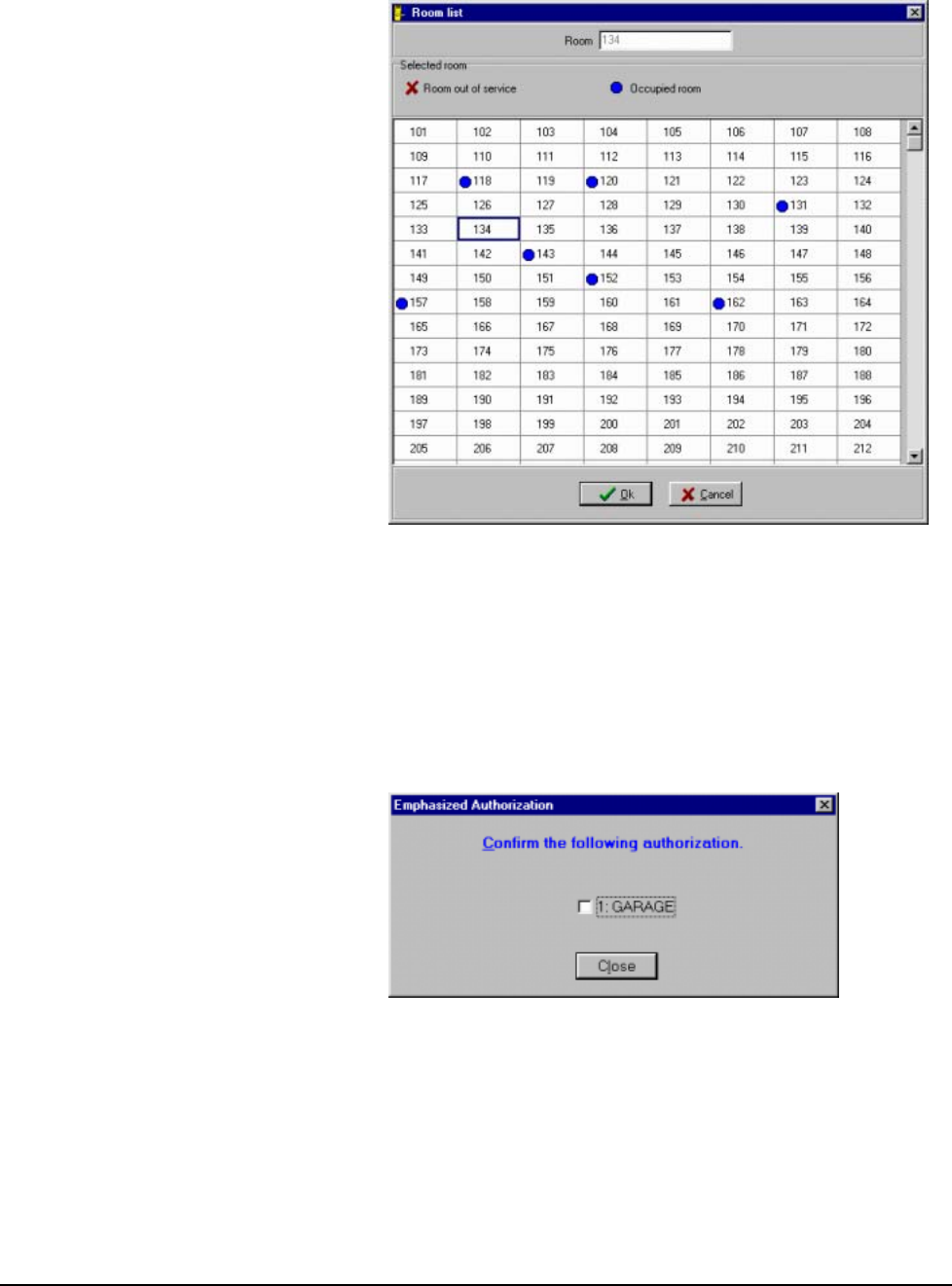
6 • Software - HT24W / HT28 Smart Onity HT24W / HT28 Smart
the SPACE BAR or double click with the mouse to confirm.
3. The cursor will move to the next Room field in the display and allow
you to enter another room number, or select from the list. If you do not
want to add another room to the card, press ENTER again. Repeat this
step until you have entered all of the rooms you want to encode on this
card. When you are finished entering all of the rooms, press the
ENTER key again to continue to authorizations.
4. If your property is using Emphasized Authorizations to promote the
sale of amenities such as the use of an in-room safe, a message box will
appear asking you to confirm this authorization. To select the
authorization, press the SPACE BAR and press the ENTER key to
continue.
5. If your property offers optional authorizations for other amenities, such
as access to the pool or covered parking, you will be given the
opportunity to either grant or deny the use of these items, as shown
below:
Use the UP/DOWN ARROW keys to navigate through the list of
available authorizations. By pressing the SPACE BAR you can grant
or deny each authorization and press the ENTER key to continue to the
length of stay.
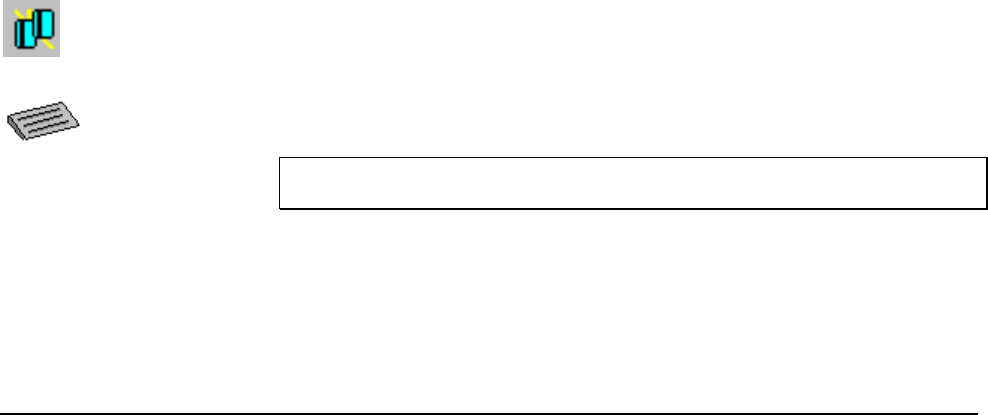
Onity HT24W / HT28 Smart Software - HT24W / HT28 Smart • 7
6. Once the authorizations section is completed, the cursor will move to
the area of the screen to enter the number of nights the guest will be
staying.
Type a number or use the UP/DOWN ARROW keys to set the number
of nights for the stay and press the ENTER key.
7. If your property uses a starting date on guest cards, the cursor will
highlight the start date. The default start date is today. You can use the
number pad to set the starting date of the card. To change the starting
time, press the TAB key to move the cursor to the time and use the
number keys to change the time. Press ENTER to continue to the
Expiration date and time.
8. The software will convert the number of nights into the expiration date.
You may make any changes you wish to the check-out date and time by
using the number keys to enter the new hour, day, month or year. Press
ENTER to continue to Track 1 and 2 data.
9. If you are using magnetic cards and a motorized encoder, you are able
to encode information on tracks 1 and 2 of your card. This information
is not needed to operate the Onity locks, but is commonly used for
Point Of Sale (POS) systems. Track 1 data can contain letters or
numbers and track 2 data can contain only numbers.
10. The last thing to do before encoding your cards is to tell the software
how many cards your guest will need. You can type the number or use
the UP/DOWN ARROW keys. When you are ready to encode the
cards, press the ENTER key.
A message will appear on the screen instructing you to insert the card.
When encoding is complete, a message will instruct you to take the
card.
If more than one card was requested, the screen will repeat the prompts
until all of the requested cards are made. When you are finished making
cards, select another function, or press the F9 key to log out of the
system.
Copy Guest (F6)
Copy Guest
D
esigned for keyboard use!
This function is used to encode extra cards for an occupied guestroom after the initial
check-in procedure. These cards will not affect the use of the existing guest card.
WARNING: Never make a copy of a guest card if the guest has LOST their card.
Make a NEW GUEST CARD to void out a lost card.
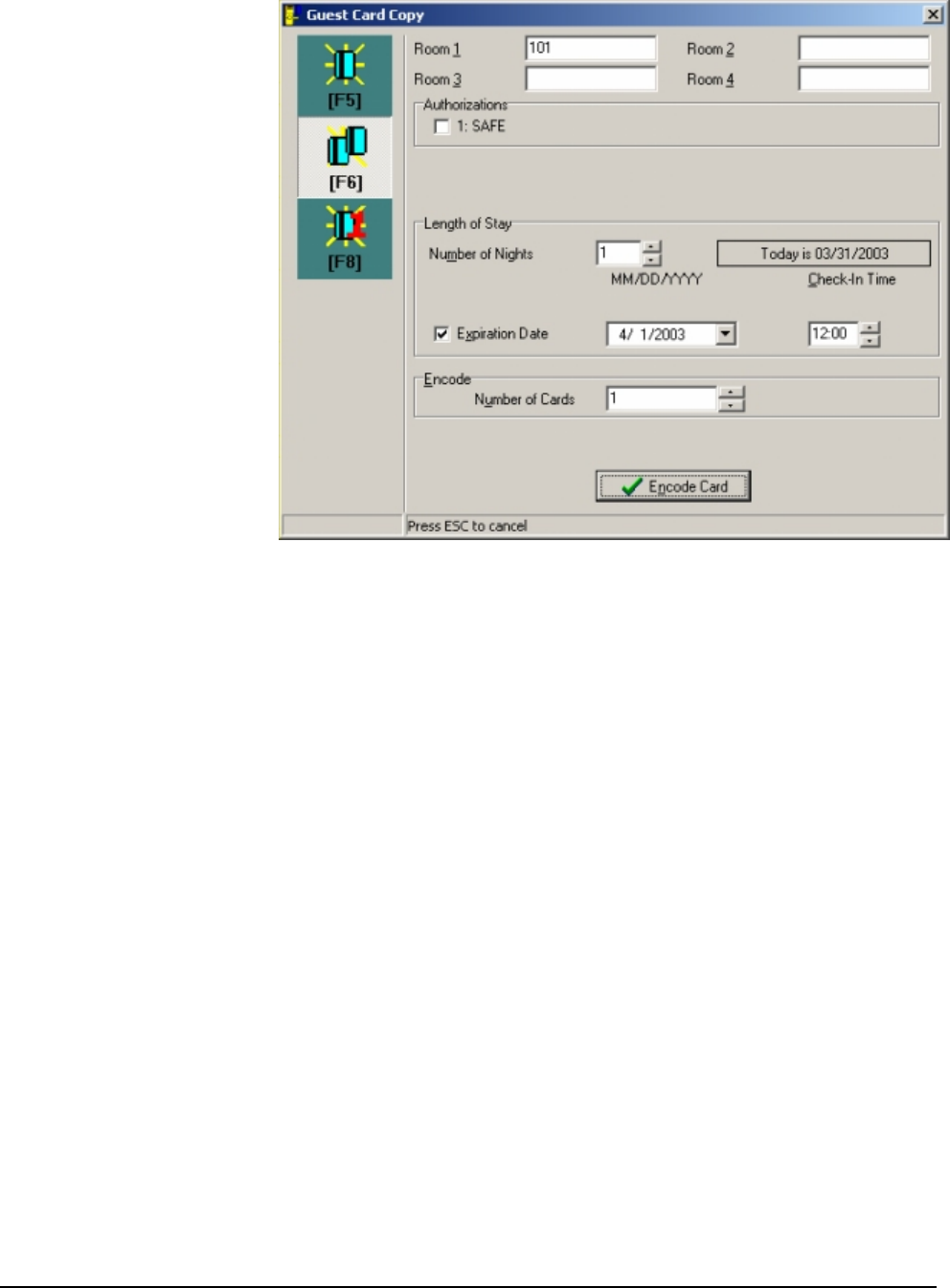
8 • Software - HT24W / HT28 Smart Onity HT24W / HT28 Smart
To encode a copy of a guest card, perform the following steps:
1. Select Copy Guest from the Reception Menu, press F6, or click on the
Copy Guest Tool.
2. Enter a room number, and press the ENTER key. The cursor will move
to the next Room field in the display, and allow you to enter a second
room number. By pressing the F2 key, you can select a room from a
pick screen that shows vacant, occupied and out of service rooms.
Simply use the ARROW keys to select a room from this list and press
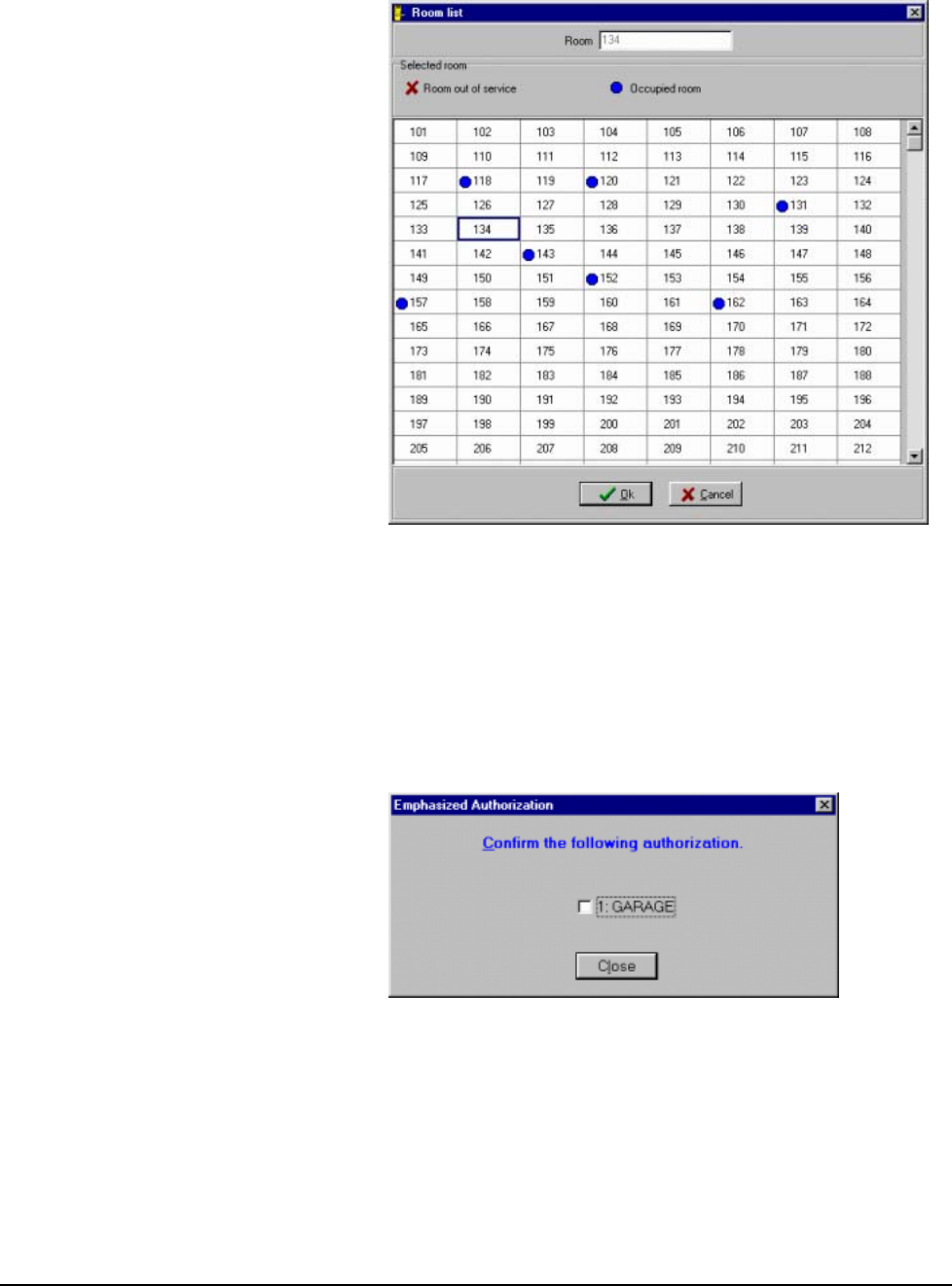
Onity HT24W / HT28 Smart Software - HT24W / HT28 Smart • 9
the SPACE BAR or double click with the mouse to confirm.
3. The cursor will move to the next Room field in the display and allow
you to enter another room number, or select from the list. If you do not
want to add another room to the card, press ENTER again. Repeat this
step until you have entered all of the rooms you want to encode on this
card. When you are finished entering all of the rooms, press the
ENTER key again to continue to authorizations.
4. If your property is using Emphasized Authorizations to promote the
sale of amenities such as the use of an in-room safe, a message box will
appear asking you to confirm this authorization. To select the
authorization, press the SPACE BAR and press the ENTER key to
continue.
5. If your property offers optional authorizations for other amenities, such
as access to the pool or covered parking, you will be given the
opportunity to either grant or deny the use of these items, as shown
below:
Use the UP/DOWN ARROW keys to navigate through the list of
available authorizations. By pressing the SPACE BAR you can grant
or deny each authorization and press the ENTER key to continue to the
length of stay.
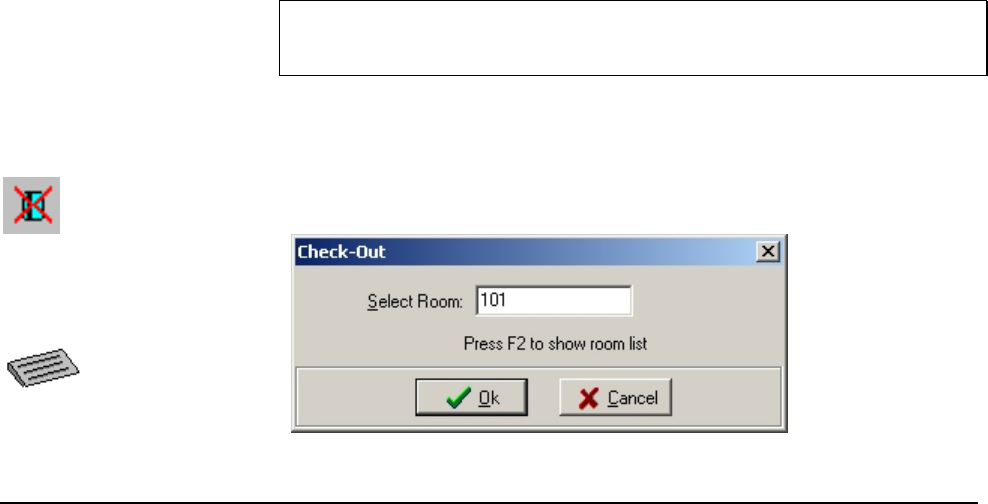
10 • Software - HT24W / HT28 Smart Onity HT24W / HT28 Smart
6. Once the authorizations section is completed, the cursor will move to
the area of the screen to enter the number of nights the guest will be
staying.
Type a number or use the UP/DOWN ARROW keys to set the number
of nights for the stay and press the ENTER key.
7. If your property uses a starting date on guest cards, the cursor will
highlight the start date. The default start date is today. You can use the
number pad to set the starting date of the card. To change the starting
time, press the TAB key to move the cursor to the time and use the
number keys to change the time. Press ENTER to continue to the
Expiration date and time.
8. The software will convert the number of nights into the expiration date.
You may make any changes you wish to the check-out date and time by
using the number keys to enter the new hour, day, month or year. Press
ENTER to continue to Track 1 and 2 data.
9. If you are using magnetic cards and a motorized encoder, you are able
to encode information on tracks 1 and 2 of your card. This information
is not needed to operate the Onity locks, but is commonly used for
Point Of Sale (POS) systems. Track 1 data can contain letters or
numbers and track 2 data can contain only numbers.
10. The last thing to do before encoding your cards is to tell the software
how many cards your guest will need. You can type the number or use
the UP/DOWN ARROW keys. When you are ready to encode the
cards, press the ENTER key.
A message will appear on the screen instructing you to insert the card.
When encoding is complete, a message will instruct you to take the
card.
If more than one card was requested, the screen will repeat the prompts
until all of the requested cards are made. When you are finished making
cards, select another function, or press the F9 key to log out of the
system.
Note: The original and 4 copies can be uniquely identified in the audit record of
the lock. If you encode more than 5 cards, the audit report will indicate that a
'Redundant Card' was used.
Check-Out (F7)
Check-Out
D
esigned for keyboard use!
The Check-Out function is used at the end of a guest's stay to indicate that the room
is now vacant and available for use by a new guest.
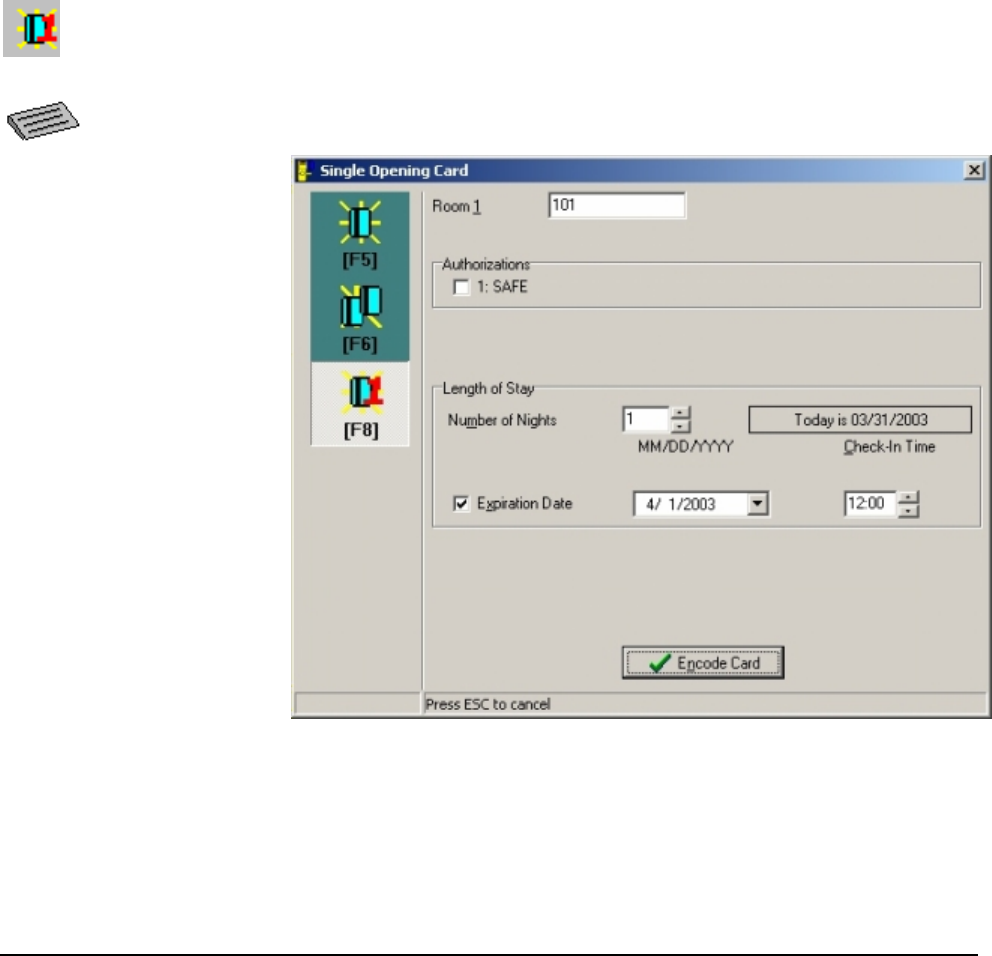
Onity HT24W / HT28 Smart Software - HT24W / HT28 Smart • 11
To check a guest out of a room, perform the following steps:
1. Select Check-Out from the Reception menu, press the F7 key or click
on the Check-Out Tool.
2. The screen will prompt you to enter the room number for the guest to
be Checked-Out. Type in the room number or select it from the list.
3. Once the room number has been selected, press the ENTER key to
complete the operation.
4. When the Check-Out is complete, select another function or press F9 to
log out.
Single Opening Card (F8)
Single Opening Card
D
esigned for keyboard use!
This function is used to make a card that will work in a guestroom lock only once.
The single opening card is commonly used by the hotelier to allow a guest to
preview a room, or to allow a vendor to place an item inside of a room. Once the
card is used in the lock, it is no longer valid. A maximum of four Single Opening
Cards may be made for a single guestroom between new guest Check-Ins.
To make a single opening card, perform the following steps:
1. From the Reception Menu, click on Single Opening Card, press F8, or
click on the Single Opening Card Tool
2. Enter a room number, and press the ENTER key. The cursor will move
to the next Room field in the display, and allow you to enter a second
room number. By pressing the F2 key, you can select a room from a
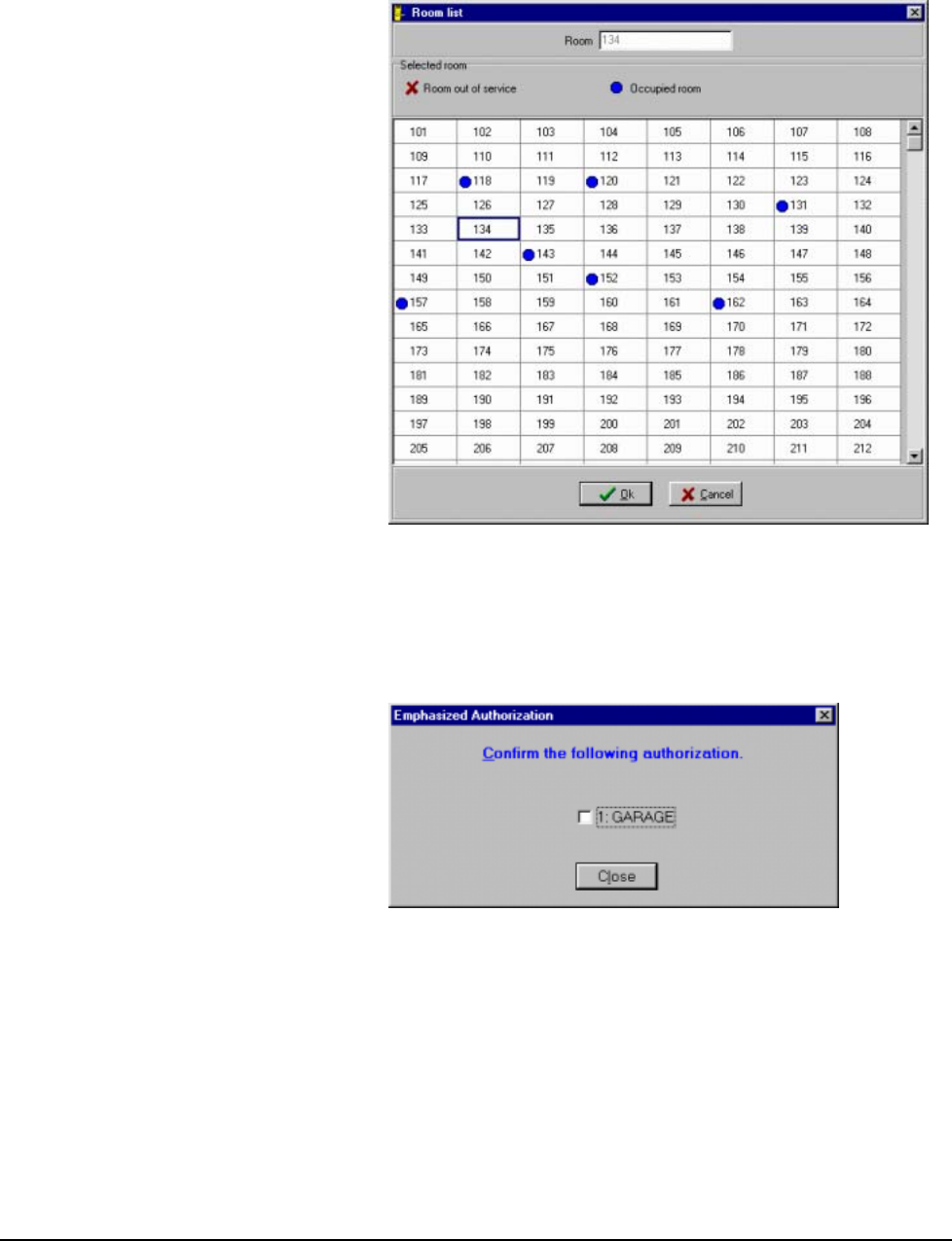
12 • Software - HT24W / HT28 Smart Onity HT24W / HT28 Smart
pick screen that shows vacant, occupied and out of service rooms.
Simply use the ARROW keys to select a room from this list and press
the SPACE BAR or double click with the mouse to confirm.
3. Note: Unlike other cards, a single opening card can only be encoded
for one room.
4. If your property is using Emphasized Authorizations to promote the
sale of amenities such as the use of an in-room safe, a message box will
appear asking you to confirm this authorization. To select the
authorization, press the SPACE BAR and press the ENTER key to
continue.
5. If your property offers optional authorizations for other amenities, such
as access to the pool or covered parking, you will be given the
opportunity to either grant or deny the use of these items, as shown
below:
Use the UP/DOWN ARROW keys to navigate through the list of
available authorizations. By pressing the SPACE BAR you can grant
or deny each authorization and press the ENTER key to continue to the
length of stay.
6. Once the authorizations section is completed, the cursor will move to
the area of the screen to enter the number of nights the guest will be

Onity HT24W / HT28 Smart Software - HT24W / HT28 Smart • 13
staying.
Type a number or use the UP/DOWN ARROW keys to set the number
of nights for the stay and press the ENTER key.
7. If your property uses a starting date on guest cards, the cursor will
highlight the start date. The default start date is today. You can use the
number pad to set the starting date of the card. To change the starting
time, press the TAB key to move the cursor to the time and use the
number keys to change the time. Press ENTER to continue to the
Expiration date and time.
8. The software will convert the number of nights into the expiration date.
You may make any changes you wish to the check-out date and time by
using the number keys to enter the new hour, day, month or year. Press
ENTER to continue to Track 1 and 2 data.
9. If you are using magnetic cards and a motorized encoder, you are able
to encode information on tracks 1 and 2 of your card. This information
is not needed to operate the Onity locks, but is commonly used for
Point Of Sale (POS) systems. Track 1 data can contain letters or
numbers and track 2 data can contain only numbers.
When you are ready to encode the card, press the ENTER key.
A message will appear on the screen instructing you to insert the card. When
encoding is complete, a message will instruct you to take the card. When you are
finished making the card, select another function, or press the F9 key to log out of
the system.
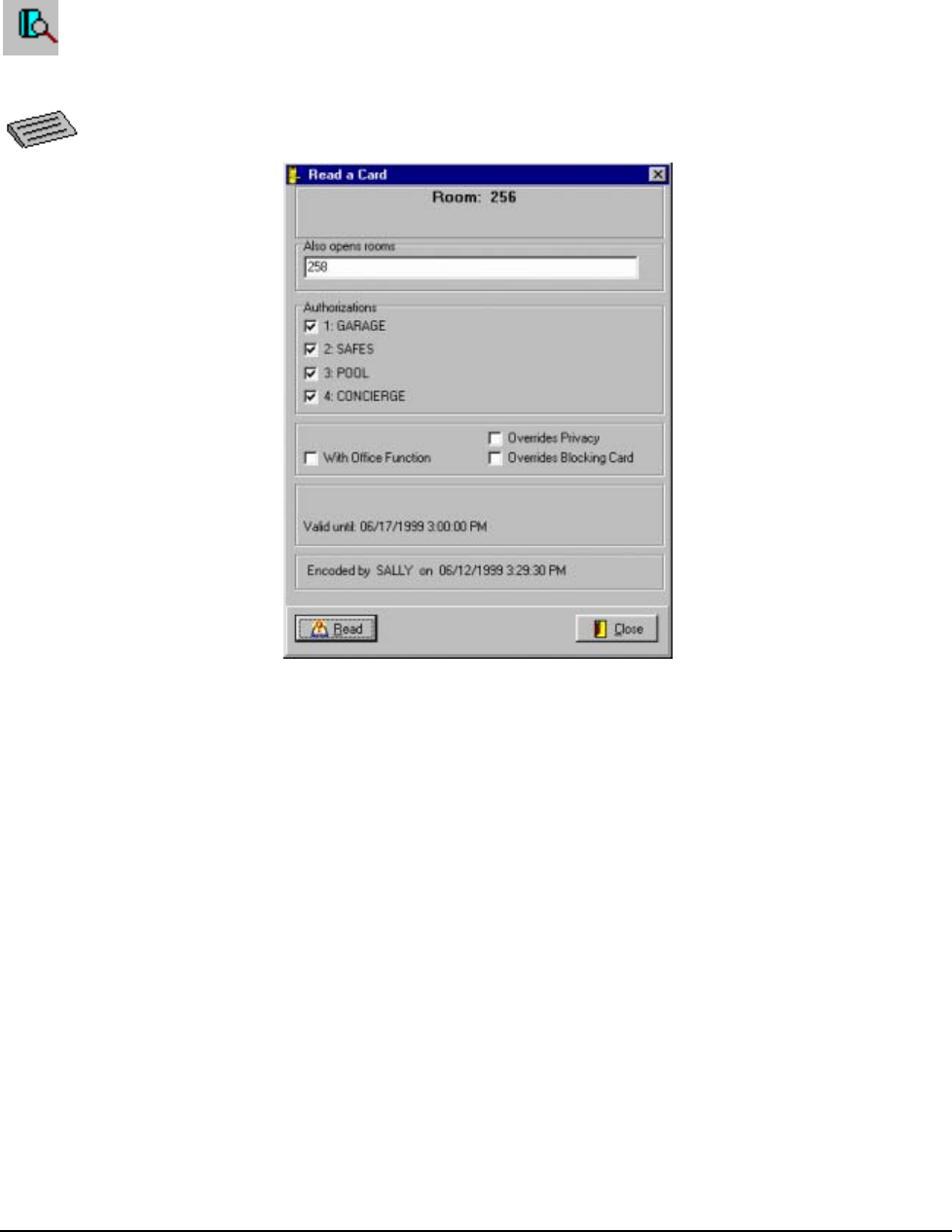
14 • Software - HT24W / HT28 Smart Onity HT24W / HT28 Smart
Read a Card (F3)
Read a Card
D
esigned for Keyboard Use!
This function is used to identify an unknown card and to examine the information
encoded on the card.
To read a card, perform the following steps:
1. From the Reception menu, click Read, press the F3 key, or click on the
Read Card Tool.
2. The screen will prompt you to insert the card. Insert and remove the
card in the encoder.
3. Once the card has been read, the screen will display all of the guest
information encoded on the card, such as the authorizations and the
expiration date and time. In the example in the figure above, the card is
for room 256 and 258, and it is the original card (not a copy). The card
was authorized to operate the guestroom safe, garage, pool, and the
concierge lounge. This card will not override guest privacy or the
blocking card, and it cannot place a door into office mode. The card
will expire at 3:00 p.m. on June 17, 1999 and was encoded by Sally on
June 12 at 3:30 PM.
You may read another card by pressing the READ button located in the
bottom left of the window. When you are finished reading cards, press
the ESCAPE key and select another function, or press the F9 key to log
out of the system.
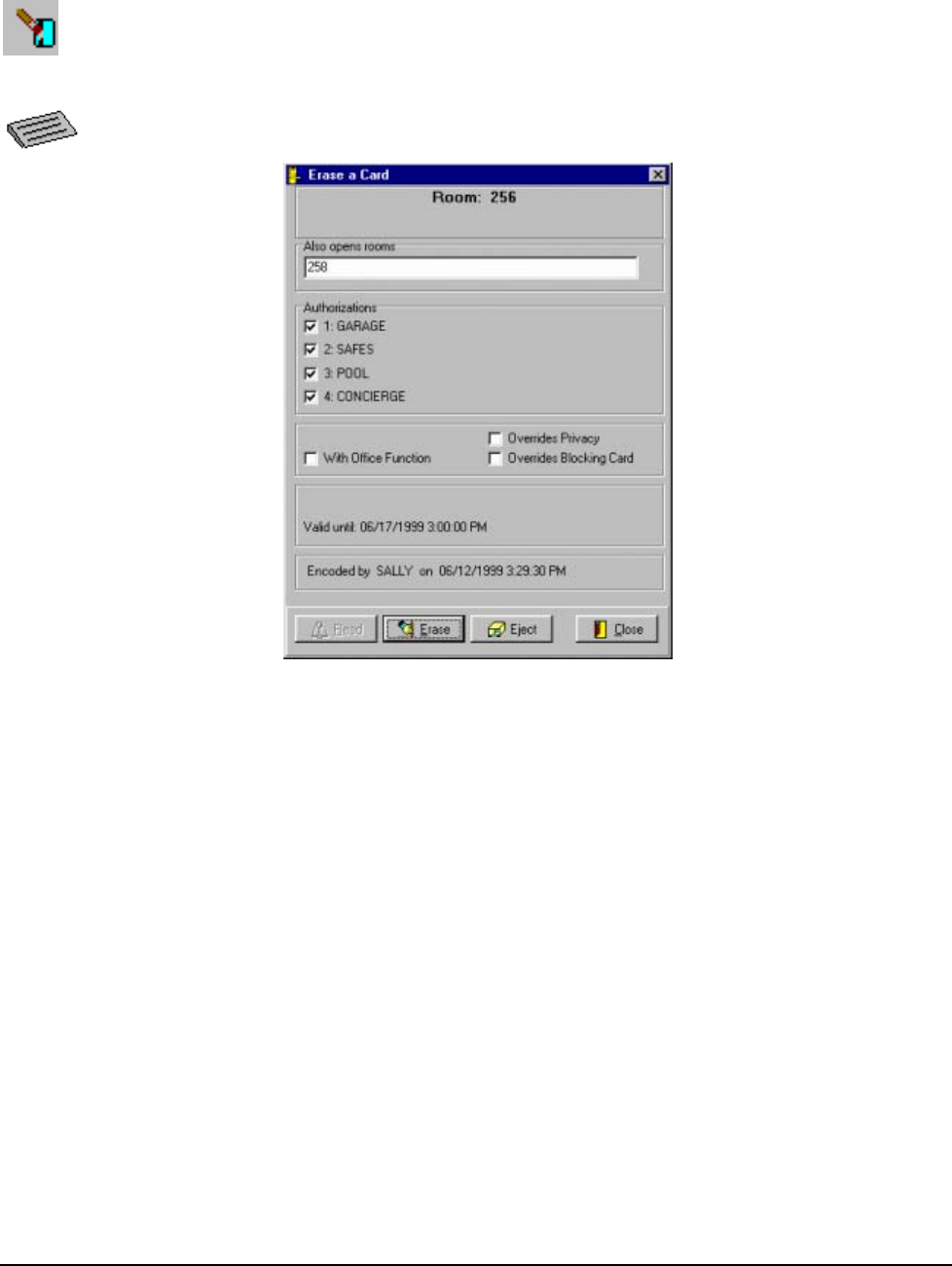
Onity HT24W / HT28 Smart Software - HT24W / HT28 Smart • 15
Erase a Card (F4)
Erase a Card
D
esigned for Keyboard Use!
This function will read a card, erase it, and check out the room if the card is still
valid. Use this function if a group of cards is left at the front desk by the guests or the
housekeeping staff for Check-Out. This feature can be used to enhance the hotel’s
Express Check-Out function.
To use the Read and Erase a Card function, perform the following steps:
1. From the Reception menu click Erase Card, press F4, or click on the
Erase Card Tool.
2. The screen will prompt you to insert the card.
3. Once the card has been read, the screen will display all of the guest
information encoded on the card, such as the authorizations and the
expiration date and time. In the example in the figure above, the card is
for room 256 and 258, and it is the original card (not a copy). The card
was authorized to operate the guestroom safe, garage, pool, and the
concierge lounge. This card will not override guest privacy or the
blocking card, and it cannot place a door into office mode. The card
will expire at 3:00 p.m. on June 17, 1999 and was encoded by Sally on
June 12 at 3:30 PM.
4. If you wish to erase the card, click on the Erase button at the bottom of
the window. The screen will prompt you to insert and remove the card.
Insert and remove the card in the encoder. Once this is done, the card
is now erased and may be re-used in the system at any time.
After a card is erased, the system will ask you if you wish to perform a
Check-Out for this room. If you select yes, the room will appear vacant
in the rooms list and can be used again. After a Check-Out, you can
read another card, press ESCAPE and select another function, or log
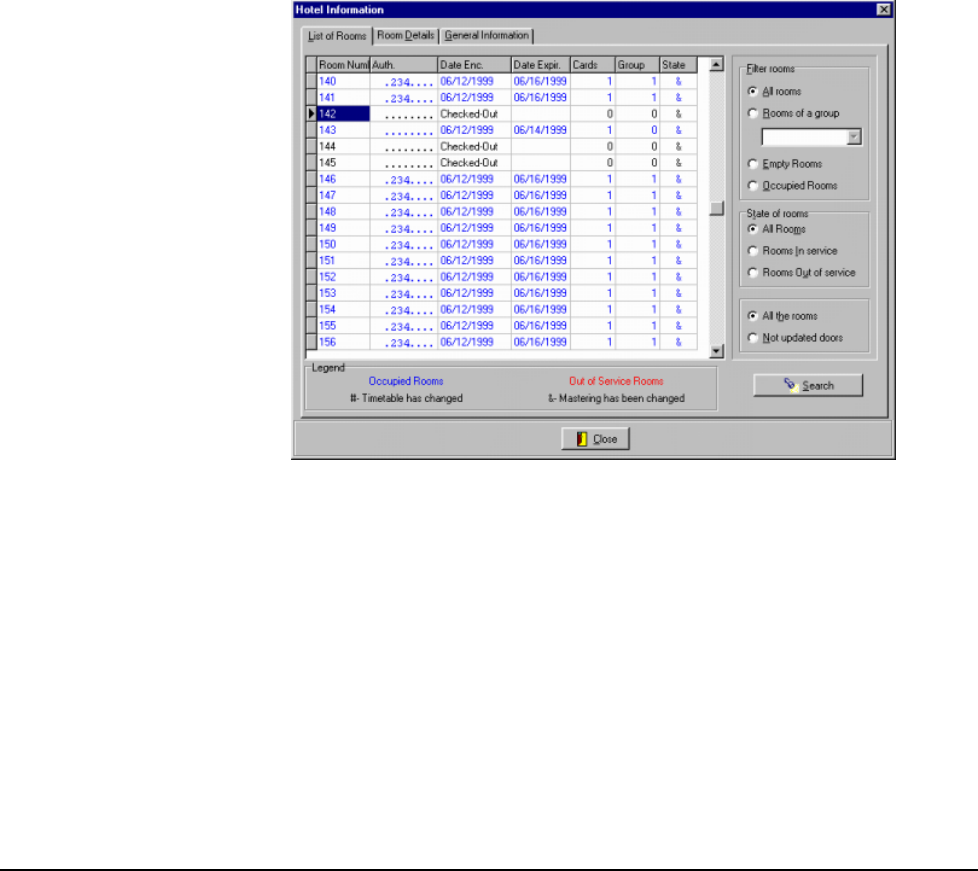
16 • Software - HT24W / HT28 Smart Onity HT24W / HT28 Smart
out of the system by pressing F9.
If you do not want to erase the card, press ESCAPE or click the eject
button at the bottom of the window.
5. You may read another card by pressing the READ button located in the
bottom left of the window. When you are finished reading cards, press
the ESCAPE key and select another function, or press the F9 key to log
out of the system.
Hotel Information (F2)
This function allows the property to display the status and availability of all
guestrooms. This screen also shows the attributes of the last cards encoded for the
room, including authorizations, starting date and expiration date.
To view the State of Rooms, click State of Rooms from the Reception menu, or press
the F2 key.
Room List Tab
The Hotel Information window is divided into three (3) tabs. The leftmost tab shows
the list of rooms in a table with columns for important information about each room.
Use the UP/DOWN ARROW keys to navigate through the rooms. To rapidly move
through the table, you can use the PAGE UP/DOWN, or click on the slider to the
right of the table. You can also use the Search button to jump directly to a room if
you know the room number.
The information includes the authorizations encoded on the cards, when the room
was last Checked-In, when the cards expire, how many valid cards are encoded for
the room, if the guests are a part of a group, and if the room has been placed out of
service or is occupied. Occupied rooms appear in blue and rooms that are out of
service appear in red. To see even more details about the highlighted room, click on
the center tab labeled ‘Room Details’ or press ALT+D.
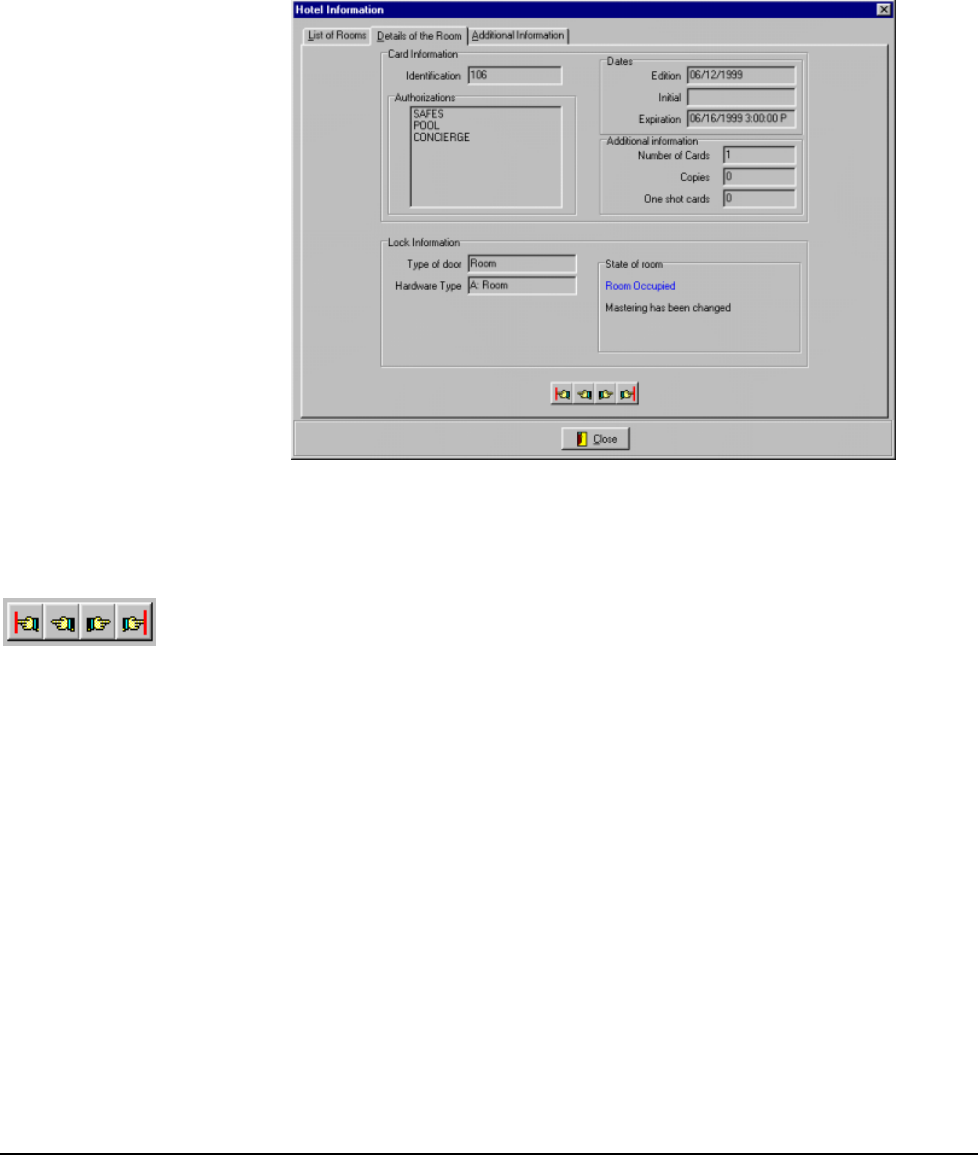
Onity HT24W / HT28 Smart Software - HT24W / HT28 Smart • 17
Tip: You can use the filters to
limit the rooms in the list.
N
ote that the Search button
cannot find a room that is
hidden by a filter.
You can use the filtering boxes on the right of the Room List tab if you want to
limit the rooms you see by certain criteria. For example, you may wish to view
only the rooms that are occupied. Or, perhaps you wish to see a list of rooms that
need to be updated with the portable programmer. The state column of the table
will show the reason a room needs updating.
Room Details Tab
The Room Details tab shows all of the information from the room list table as well as
the starting date, if any single opening cards have been encoded, what type of lock
hardware is installed, and which mastering scheme is being used. Multiple
mastering schemes are optional, so your property may not display this information.
N
avigation Buttons
If you wish to see details of other rooms, you can return to the room list or use the
navigation buttons at the bottom of the window. From left to right, the buttons
perform the following task: view the first room in the list, view the previous room in
the list, view the next room in the list, and view the last room in the list.
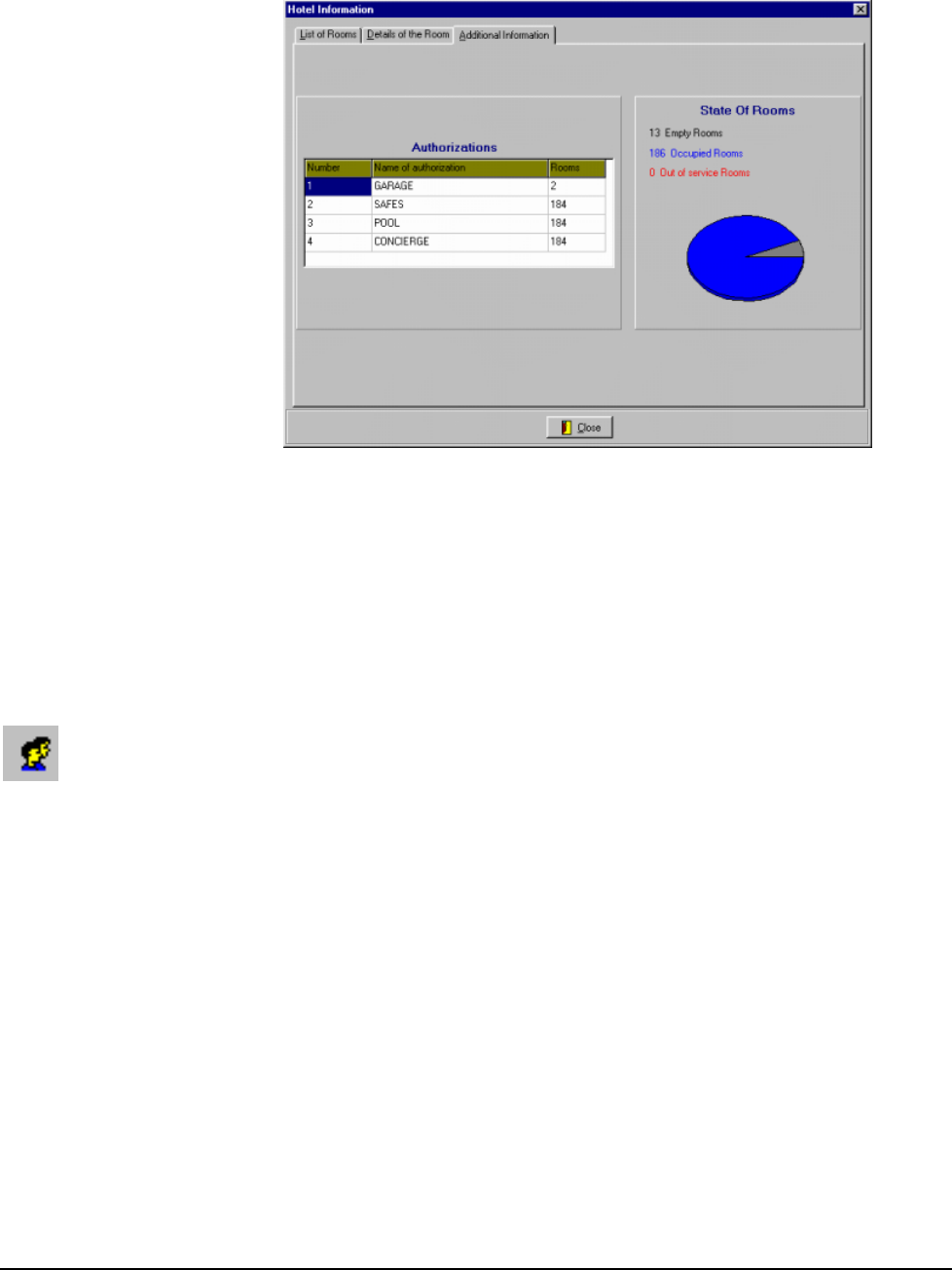
18 • Software - HT24W / HT28 Smart Onity HT24W / HT28 Smart
Additional Information Tab
The right tab of this window shows general information about your property. At
times, it may be useful to know the number of guests that have access to a particular
amenity. The Additional Information tab shows each of the authorizations declared
for your property and how many valid guest cards are encoded with access to these
authorizations. This tab also shows a chart with the percentage occupancy and the
percentage of rooms that are out of service.
When you have finished viewing the room information, click the close button at the
bottom of the window, or press the ESCAPE key.
Groups
Groups
This function provides a convenient method of encoding cards for a large group of
guests in advance so that the group is not delayed by this operation when they arrive.
Group cards are encoded with a special code so that the new group cards do not
cancel current cards, and group cards will not affect the ability to replace lost cards
of current guests.
To manage groups, select Groups from the Reception menu or click on the Groups
Tool.
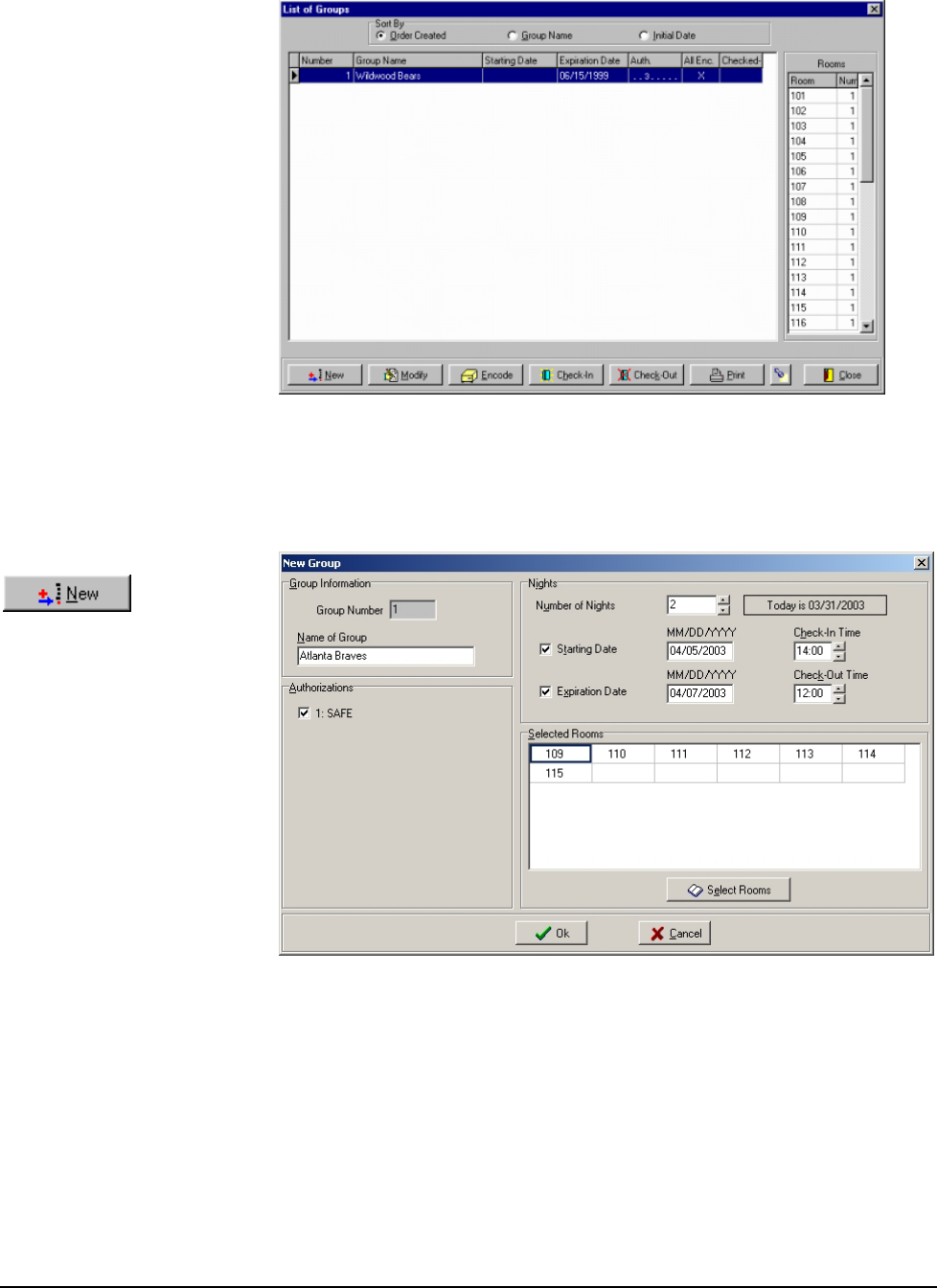
Onity HT24W / HT28 Smart Software - HT24W / HT28 Smart • 19
Tip: Make Group cards in
advance so large groups don’t
have to wait when they arrive.
There are several steps necessary to successfully manage groups of guests. First, a
group must be created and given a name. Attributes and rooms must be assigned.
Then, the cards must be encoded. Finally, once the group arrives at your property,
everything is ready for Check-In.
Creating New Groups
N
ew Group Bu
t
ton
To create a New Group, follow these steps:
1. Click the New button.
2. The New Group window is where you will enter all of the group
information. The first piece of information that you should enter is a
group name. If you make your group names meaningful, it will help to
manage them later. Once you have entered the group name, press
ENTER to continue.
If you are using Emphasized Authorizations, message boxes will
appear prompting you to promote these amenities. Press the SPACE
bar or click the check box to select access to this amenity. After the
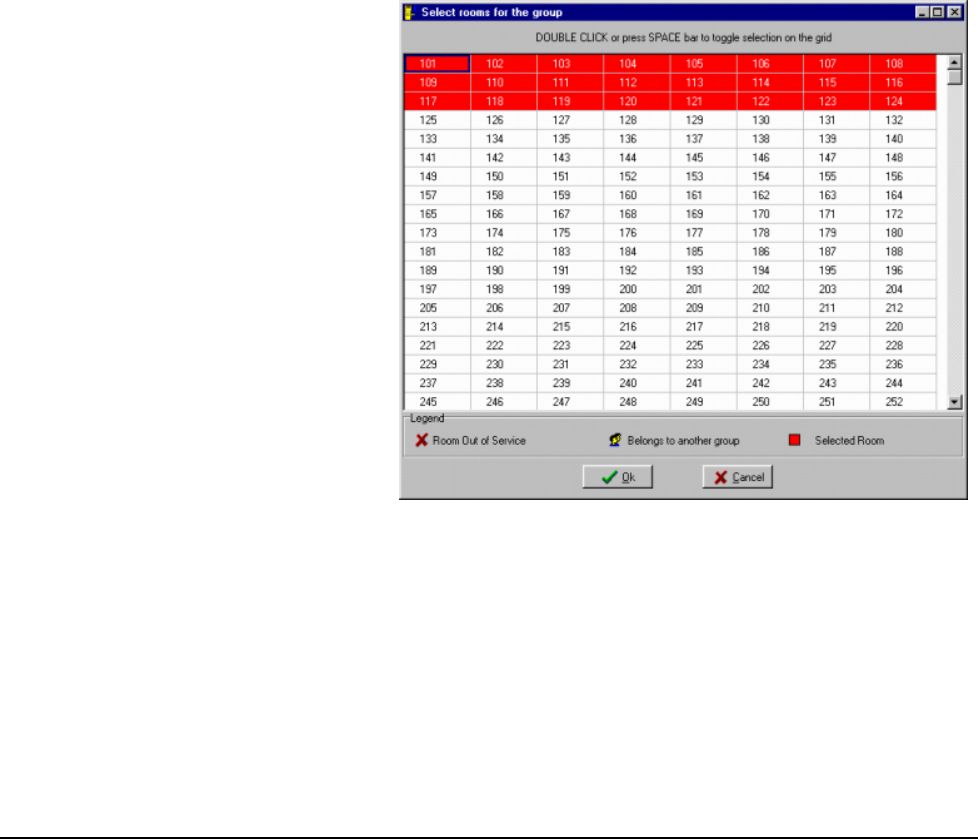
20 • Software - HT24W / HT28 Smart Onity HT24W / HT28 Smart
Emphasized Authorizations are finished, you can select any standard
authorizations the guests may need. Press ENTER when you are
finished selecting authorizations.
3. Now it is time to enter the number of nights this group will be staying
at your property. Set the Starting Date to the expected arrival date of
this group. By checking the starting date, you can be sure that any
group cards made in advance will not work until the day the group is
expected to arrive.
Once the starting date is set, the expiration date will automatically be
calculated based on the number of nights you selected. You can always
manually set the expiration date, if you prefer.
4. Press ENTER when you have finished entering the dates.
5. To select the rooms for the group, click on the Select Rooms button or
press ALT+E. When the room list appears, you can select individual
rooms by Double Clicking or pressing the SPACE bar.
6. To select several rooms, hold the left mouse button and drag the mouse
to create a rectangular block of rooms. Press the SPACE bar to select
the highlighted rooms. Selected rooms will be colored red.
There are a few rules to be aware of when selecting rooms.
• If a room is out of service, you will be warned, but you will be
allowed to proceed.
• If the room has been reserved by another group that has not arrived
yet, you are not allowed to select these rooms for a new group.
• If the room is currently occupied by a regular guest, it is OK to
select this room for a group. When the group arrives and is
Checked-In, all other guest cards will be voided.
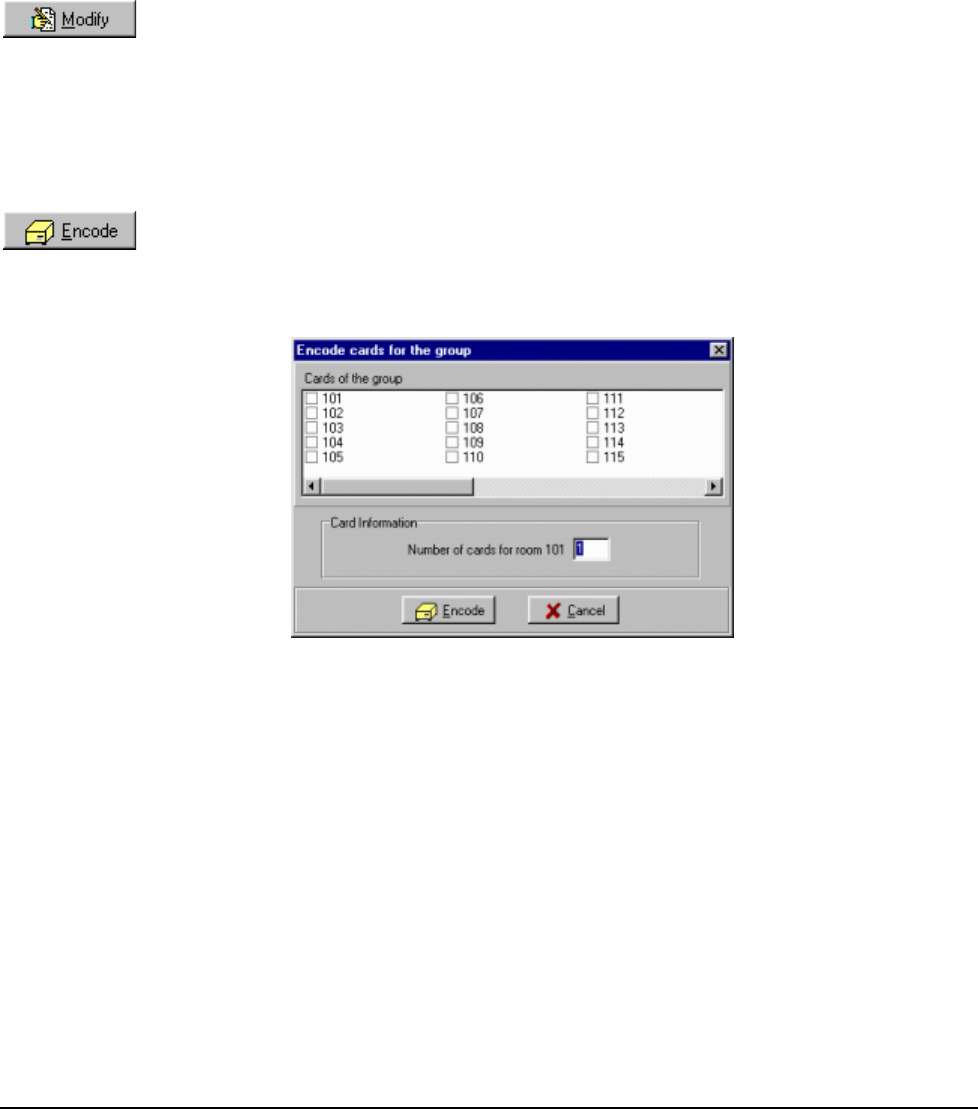
Onity HT24W / HT28 Smart Software - HT24W / HT28 Smart • 21
7. When you are finished selecting rooms, click on the OK button. If you
are not sure which rooms you want to select, click on the Cancel
button.
After you have selected rooms click the OK button to save the group. If you choose
not to select rooms now, save the group now and come back later to select the rooms.
If you decide not to finish creating this group, click the Cancel button.
Modifying Groups
M
odify Group Button
To modify an existing group, select a group from the list and click the Modify
button or Double Click the group.
The steps to modify an existing group are exactly the same as creating a new one.
Any detail of the group can be modified until you encode the first card for the
group. Refer to the steps for creating a new group to see details about group
features.
Encoding Group Cards
E
ncode Group Card Button
Cards can be encoded well in advance of Check-In so large groups of guests are not
inconvenienced by having to wait for cards. Since you will not be handing the cards
to the guest right after encoding, you must take care to keep the cards organized.
Place the cards in marked envelopes or sleeves when you encode them. The time
you take to stay organized now will prevent you from upsetting guests who are using
the wrong card in the door.
R
emember that once the first
card for a group is encoded,
the group can no longer be
modified.
Follow these steps to encode the cards for this group.
1. Select the group from the list and click on the Encode button. A screen
will appear with a list of the rooms assigned to this group. Each room
has a box beside it that indicates if cards have been encoded for this
room. To help you stay organized, the rooms are listed in order. There
is no way to encode cards out of order.
2. Enter the number of cards to make for this room. The default is one
card. If you make multiple cards for a room, the next room in the list
will go back to the default of one card. Press the ENTER key until the
screen appears prompting you to insert a card.
3. Insert and remove the card in the encoder.
Continue encoding cards until all of the rooms in the list have check marks beside
them. All of the cards do not have to be encoded at one time, but they must be
encoded before the group can Check-In.
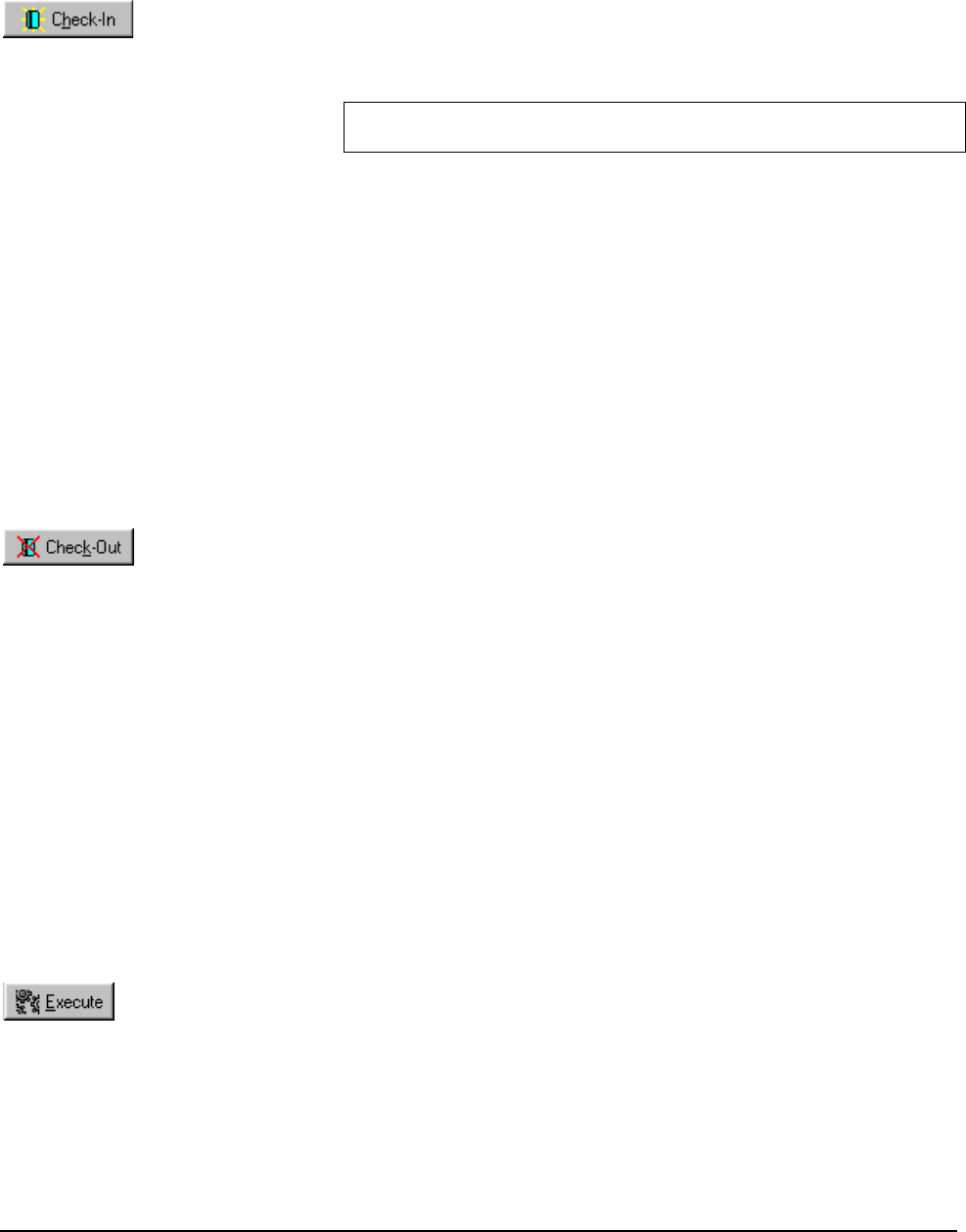
22 • Software - HT24W / HT28 Smart Onity HT24W / HT28 Smart
Group Check-In
Group Check-In Button
The Group Check-In process is very important. Remember that pre-encoding group
cards will not affect your ability to make new guest cards for a room because groups
use a special ‘Advanced’ code. If group cards are given to guests without
performing the Check-In operation, you may disrupt the encoding system and
subsequent guest cards will fail to operate the guest room locks.
Note: Always remember to perform the Check-In operation at the time the
cards are given to the guests.
If you find that you have cards that do not operate the guest room locks because you
have accidentally given group cards to guests without performing the Check-In
operation, simply Check-In the group to realign the HT24 system. New guest cards
must be made for any subsequent guest who is having card troubles.
Follow these steps to Check-In a group:
1. Select a group from the list.
2. Click the Check-In button. If all cards have been encoded, you will get
a confirmation message. If you have not encoded cards for all of the
assigned rooms, a message will appear on the screen telling you that
some of the cards have not been encoded. Encode all the cards and try
the Check-In process again.
Group Check-Out
Group Check-Out Button
The Group Check-Out process is a simple operation to help organize your list of
groups. When a group leaves or cancels before arrival, there is no need to keep the
group in your list. The Check-Out process removes the group from the list and
clears the occupied status of the rooms in the Rooms List.
You can Check-Out any group at any time. The cards do not need to be encoded,
and the group does not need to be Checked-In. This can be useful if a group cancels
a stay before arrival.
To Check-Out a group, perform the following steps:
1. Select a group from the list.
2. Click the Check-Out button. A confirmation box will appear on the
screen; therefore, you can’t accidentally Check-Out a group. Click Yes
to finish the Check-Out operation.
After the Check-Out another message box will appear confirming the success of the
operation.
Automatic Group Function Reminders
A
utomatic Group Function
E
xecution Button
When you log on to the software, the system will check to see if there are any
operations that need to be performed. If there are any operations pending, a
window will appear with a list of all these operations. To perform these
operations, select one and click the Execute button. You will receive
confirmation that the operation was completed.
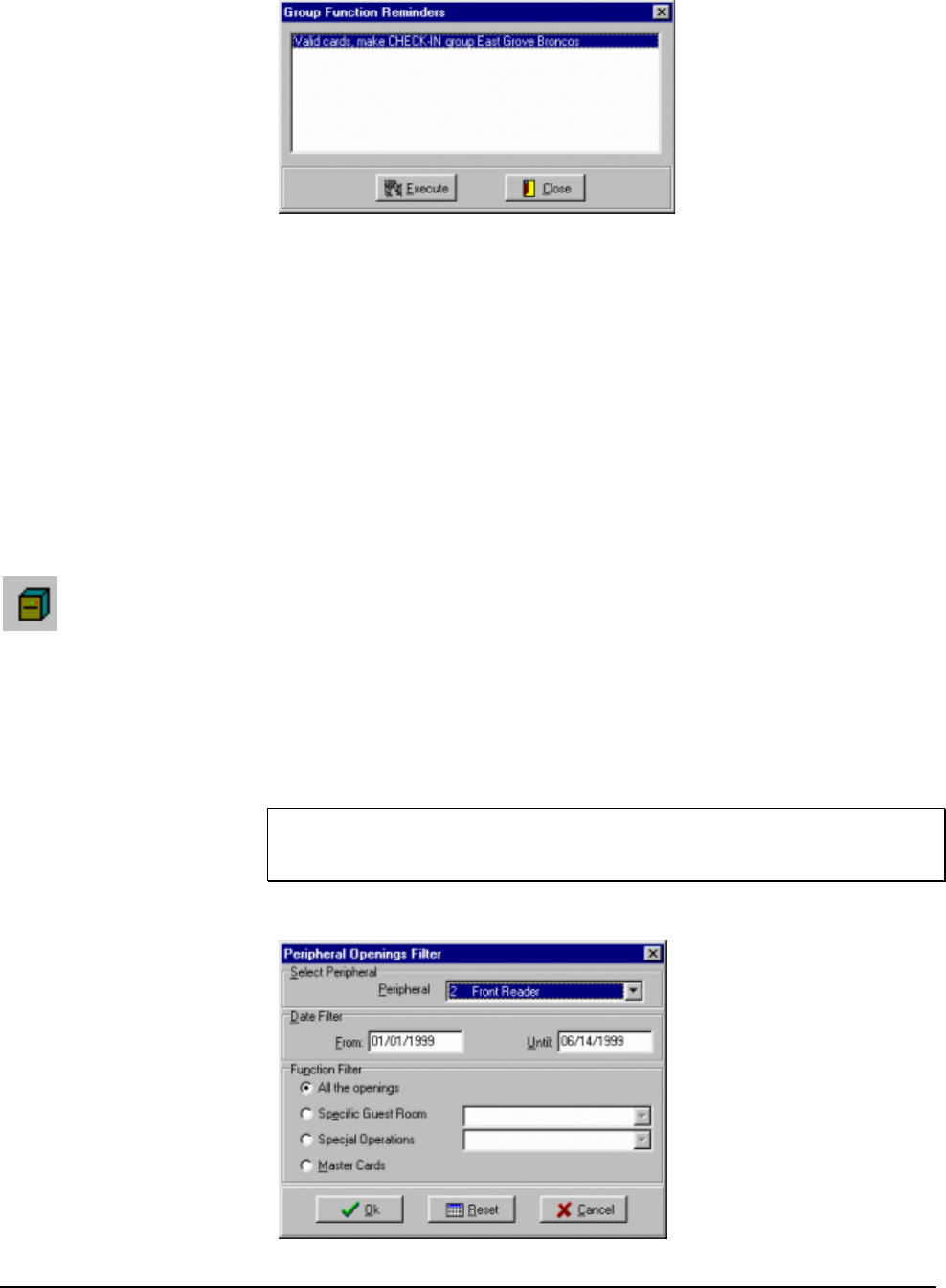
Onity HT24W / HT28 Smart Software - HT24W / HT28 Smart • 23
If you prefer not to perform the operation, click the Close button or press the
ESCAPE key. You will be prompted every time you log in until the operation is
performed.
Operations that will prompt the reminder screen include:
• Check-In a group that has all cards encoded and the starting date is
today. Remember to double check the Starting Date of your groups
before you begin encoding cards. Once you encode a single card, this
information cannot be changed.
• Check-Out a group that has expired. If cards were encoded with a date
that has passed and the group has not been checked out, the group will
be listed in the reminder list.
Peripheral Openings
Peripheral Openings
The purpose of the Peripheral Openings window is to allow a quick and easy way
to see the number of times a particular guest used a particular door or amenity.
For example, you may wish to have front desk operators examine this list at
Check-Out and charge the guest based on the number of trips to the sauna.
The Peripheral Openings function will display or print the openings from any on-line
card reader, a door whose auditor has been collected by the portable programmer, or
an insertion identifier.
To view this list, select Peripheral Openings from the Reception Menu, or click the
Peripheral Openings Tool.
The Peripheral Openings List will not include invalid access attempts. If you wish
to view the full audit recorded in an on-line reader, including invalid attempts,
select Door Transactions from the Security menu.
Filtering the Peripheral Openings Report
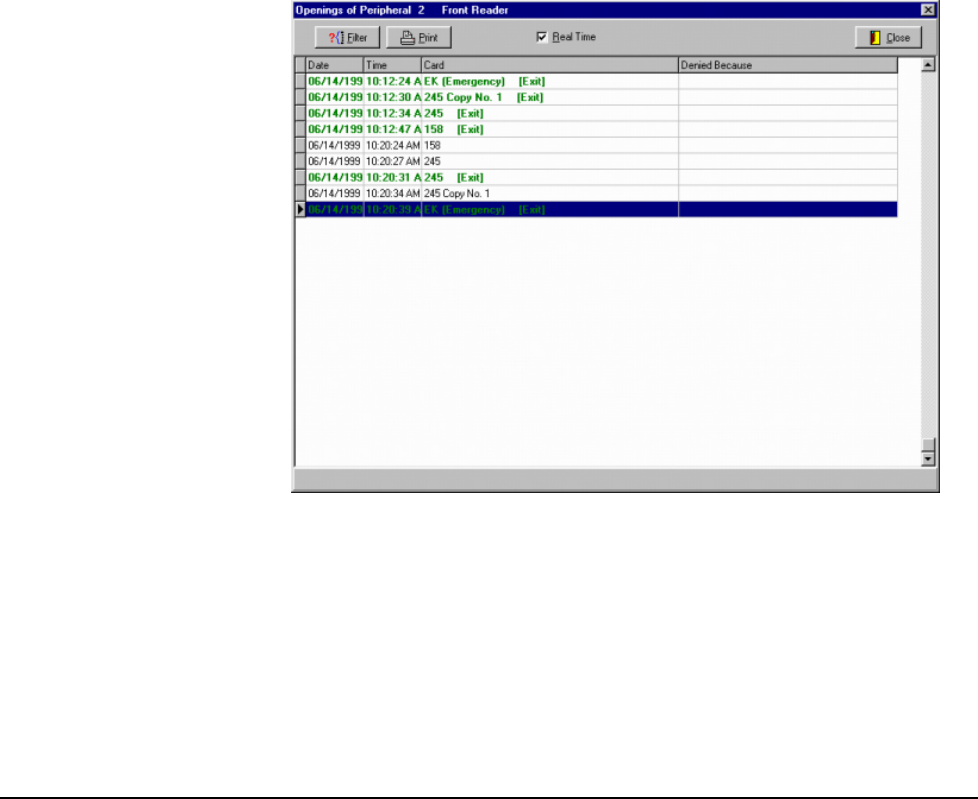
24 • Software - HT24W / HT28 Smart Onity HT24W / HT28 Smart
Follow these steps to set up the definition of the openings you wish to see:
1. Select Peripheral Openings from the Reception Menu, or click on the
Peripheral Openings Tool.
2. Using the date filter, you can limit the openings you see to only those
in the time frame that interests you. The default dates are the beginning
of this year and today, but you can set these limits to any dates you
choose. Type a date or use the UP/DOWN ARROW keys to change the
dates to limit your search. Only those openings that fall between the
dates will be shown.
3. The Function Filter can further limit your search to only those openings
that interest you. You can view all openings, only the openings for a
particular guest room card, special operations, or openings of a
particular master card. Special operations include the use of the Exit
Button, Spare Cards, Programming Cards, Canceling Cards, and other
operations that might interest you.
4. When you are satisfied with your filter criteria, click the OK button to
view the openings. If the list of openings does not contain the event
you were searching for, you can modify your filter at any time. To
reset all the filters back to the default, click the Reset button.
The Openings List
Valid uses of an entrance
reader appear in black, and
valid uses of an exit reader
are in green.
The openings list is a table showing all of the openings from the selected peripherals
or doors that match your filter criteria. The table shows the date, time, and which
card was used.
The table shows the openings in Real Time. This means that if someone uses their
card in an online peripheral, you will see a record of the opening within moments of
the actual event. The system will scan the peripheral every few seconds and any new
openings will be added to the bottom of the list. If your list is long, you may wish to
turn this feature off while you look at your list so that the list is not changing. To
turn off the Real Time feature, click the check box at the top of the window so that
there is no check in the box.
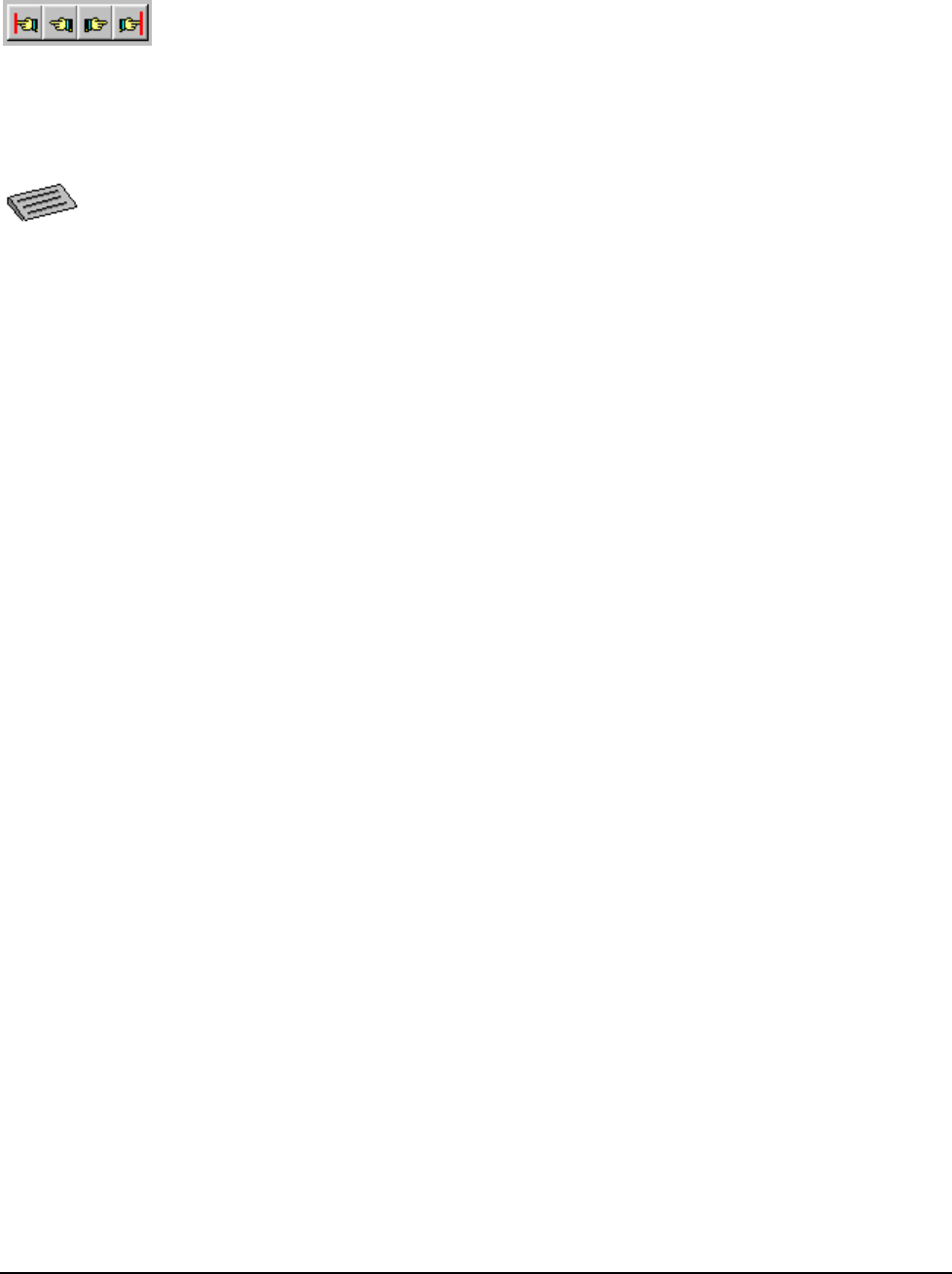
Onity HT24W / HT28 Smart Software - HT24W / HT28 Smart • 25
N
avigation Buttons
With the Real Time feature turned off, you can use the special navigation buttons to
move to the first record at the top of the list, to the previous record, to the next
record, or to the last record at the bottom of the list.
To print your list, click on the Print button at the top of the window.
Logout / Login (F9)
D
esigned for keyboard use!
This function logs the current operator out of the system and locks the system so that
an operator must enter a valid password before any new function can be performed.
Workstations, terminal encoders and other on-line devices will still function properly
while no one is logged in to the software on the server.
When logged out, this function key is used to login an operator. Simply press F9 and
enter your password to log into the system.
To logout of the software, press the F9 key or select Logout from the Reception
Menu.
Exit
This function logs the current operator out and closes the software. PC workstations
will still function properly if this function is performed on the server, but terminal
encoders and the PMS interface are shut down.
Task List
If there is a task running in an encoder, such as a PMS command waiting for the desk
clerk to perform the operation, the system will display them before you exit the
software. You can complete these tasks or discard them. This warning is to prevent
you from accidentally losing information or commands from the PMS

26 • Software - HT24W / HT28 Smart Onity HT24W / HT28 Smart
Masters Menu
Managing master cards is one of the most important tools to keeping tight security at
any facility. A lost master card is dangerous because it can open many, if not all, of
the doors at a facility. There are three features of the Onity system that reduce the
risk of a lost master card – sequential encoding, master canceling cards, and
expiration dates.
• Sequential encoding means that an old card is locked out by using any
new card in a lock. This is the same principle that works with the guest
cards.
• Master canceling cards will also lock out a lost master card. To be sure
that a lost master cannot be used, make a canceling card and dip it in all
the locks and readers. The canceling card will not unlock the doors, it
will only cancel the appropriate master type.
• The expiration date is an easy way to limit the risk of a lost master. If a
master expires in a few hours you may feel that a notification to all
employees and a watchful eye will get you through those hours.
The software makes managing masters simple and allows various levels of risk
management. This section explains all of the details about managing master cards,
master users and the security of your facility.
Revalidation
Revalidation is a new feature in the system that allows you to manage your master
users simply and effectively while maintaining the security of your facility. This
section will explain the basic philosophy of revalidation and the flexibility it offers.
First we will briefly discuss the traditional method of managing master cards.
Traditionally, master cards are encoded with an expiration date that will allow the
card to operate for several months. If a card is lost it poses a significant threat
because the card can enter all or nearly all of the doors in a hotel. To prevent an
incident the management must cancel the card using a master canceling card in all of
the Onity locks and by encoding new master cards for all users who hold that type of
card. For example, if a housekeeping master (HK) is lost, a canceling card should be
used in all of the locks, and all staff members who carry an HK master card must be
located to have their cards re-encoded. This process is time consuming and
inconvenient because all of the users must be found and their cards updated or they
will be locked out of the guest rooms.
To reduce some of the logistical problems you could issue daily cards to your staff.
These cards would work for only one day and then they expire. This reduces some
of the problems because everyone gets a new card at the same time each day, but
someone must encode all of those cards.
Suppose that each employee encoded their own card each day – automatically. That
is what the revalidation system does. Every day when an employee arrives for work
he inserts his card into the revalidation unit which reads the card and identifies the
user. If the user is still employed, the card is re-encoded, or revalidated, to operate
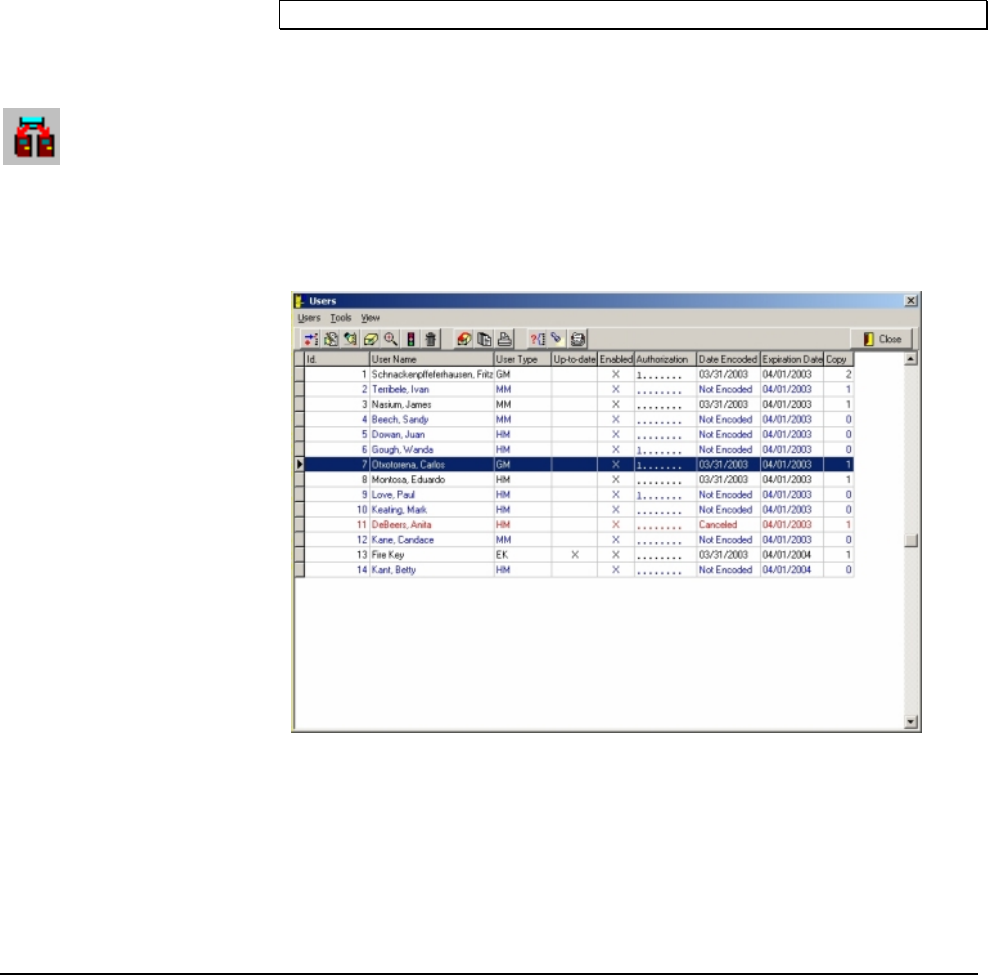
Onity HT24W / HT28 Smart Software - HT24W / HT28 Smart • 27
for one more day. If a card is lost it can be canceled as usual and the new
information automatically gets encoded on the proper cards the next morning.
With the flexibility of the revalidation system you can set the cards to work for a
week at a time or only a few hours. The choice is yours. Revalidating more
frequently obviously offers more security, but it may also be more inconvenient for
your staff. Revalidating daily at the beginning of the work day is a compromise that
does not cause much inconvenience and maintains a very high level of security.
Revalidation is not only about expiration dates and security. Because the users must
update their cards on a regular basis, the revalidation system provides a simple way
to distribute information about assignments, schedules, or special events. This is
also a convenient way to change an employee's shift or other attributes such as office
mode.
The following sections will provide details about how to set up the parameters for
revalidation. See page 85 for additional information.
Note: The parameters for revalidation can be different for each master user.
Master Users (F11)
Master Users
The Master Users List is a table that shows many of the attributes of your master
users and the cards they hold. From this screen, you can perform all of the
functions necessary to manage all of your master card holders. These functions,
create, modify, encode, update and cancel, are accessed with the buttons at the
bottom of the screen.
To view this list, Select Master Users List from the Masters menu or click the Master
Users List Tool to open the Masters window.
Master Users List Details
The Master User list provides an overview of the parameters assigned to every
master user. This section explains each field in the list.
• ID – The software assigns each master an ID number for easy
reference.
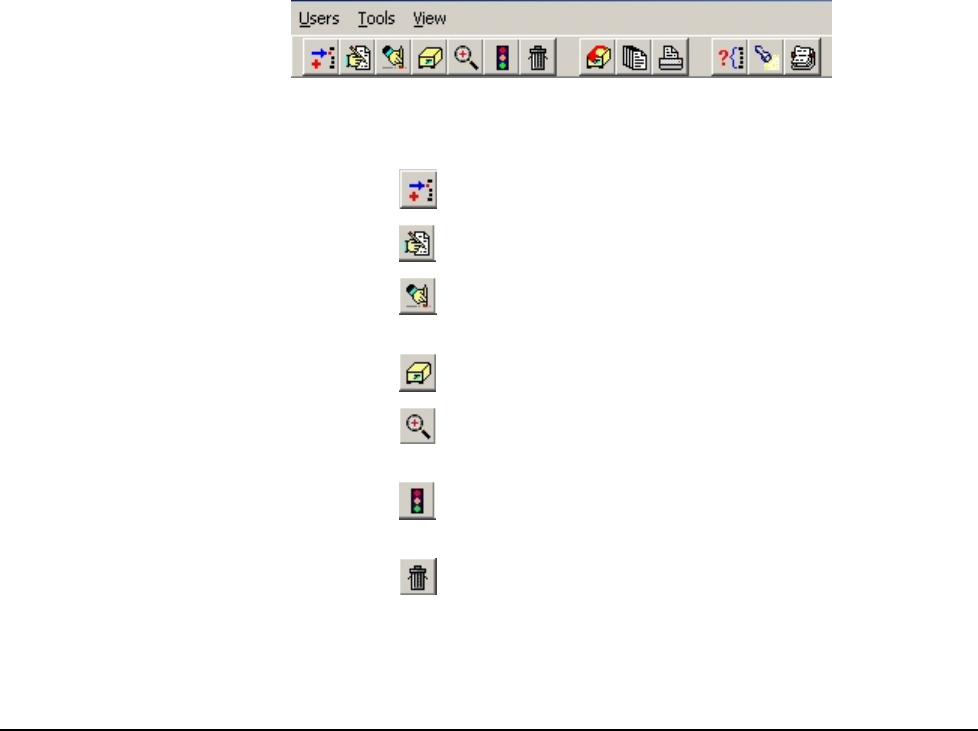
28 • Software - HT24W / HT28 Smart Onity HT24W / HT28 Smart
• User Name – This field should hold the name of the person who has
been issued a card. It is this name that is displayed in the lock audit
report to indicate who has entered a room.
• User Type – The user type field indicates the function and locking plan
of the master user. For example, a GM template typically has access to
all or most of the doors on a property, while a Floor Master template
will only have access to doors on one floor.
• Up-to-date – If a master user has been modified since the time the card
was encoded, the card is not considered up-to-date. The next time the
card is revalidated, the card will be encoded with the new parameters.
An X indicates that the card is up-to-date.
• Enabled – An X indicates that this master user is allowed to revalidate
if there is an X in this column.
• Authorization – All authorizations that are granted to this master user
are listed in this column.
• Date Encoded – This is the most recent date that a card has been issued
to this user.
• Expiration Date – The card will no longer operate the locks after this
date.
• Copy – The number of copies of that have been made for this user.
User Toolbar
When the main Users screen is displayed, there are several icons available which
allow for quick navigation to a specific task. They are briefly explained now, and
covered in detail in the pages that follow.
• New – Used to create a new user.
• Edit – Used to Edit an existing user.
• Cancel / Reactivate – Used to cancel an active user, or reactivate
a previously canceled user.
• Encode – Used to encode a user card.
• View – Used to view the details of a user without the ability to
change any details.
• Enable / Disable – Used to enable or disable the ability of a user
to revalidate.
• Delete / Undelete – Used to delete a user, or undelete a
previously deleted user.
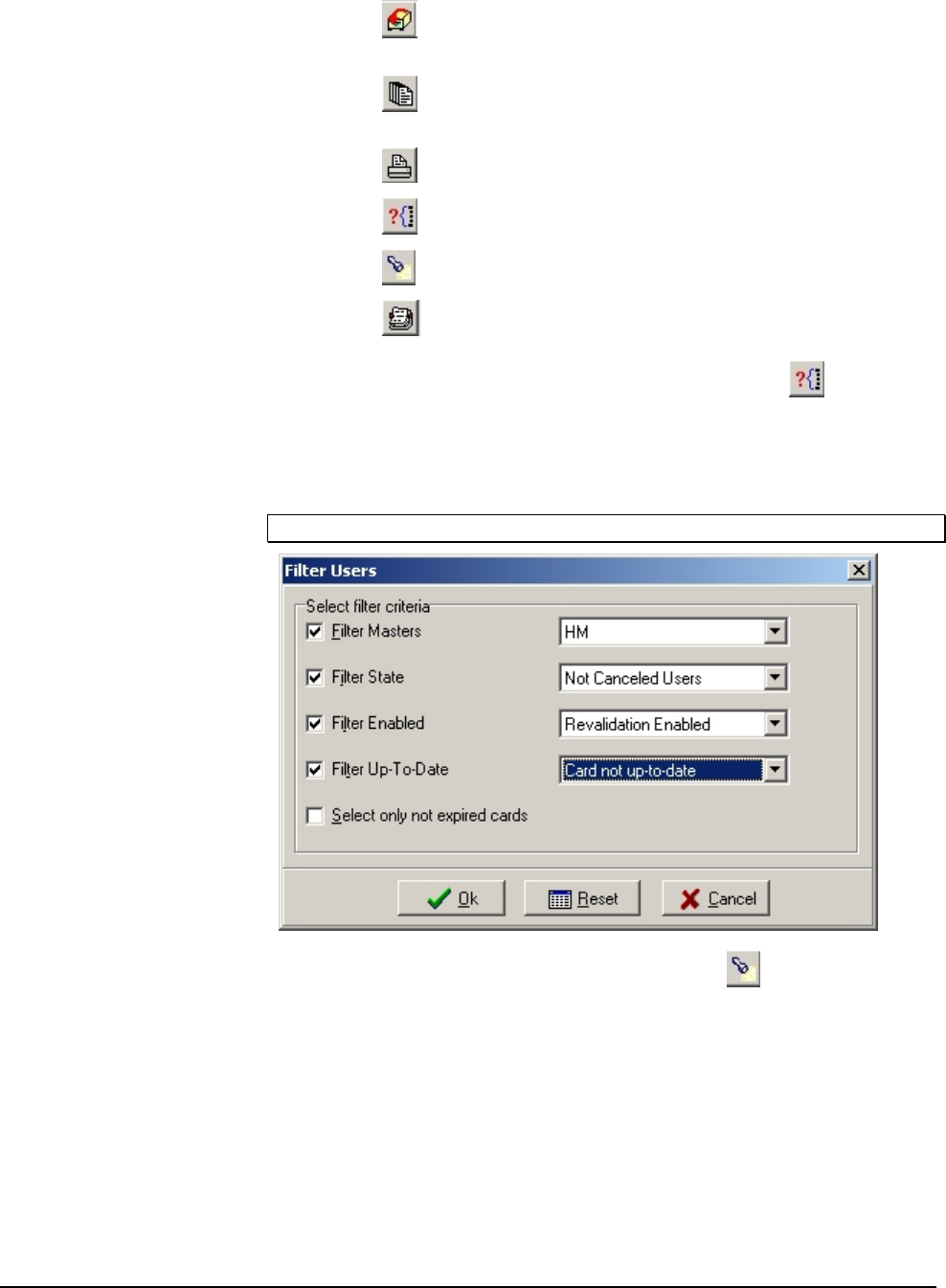
Onity HT24W / HT28 Smart Software - HT24W / HT28 Smart • 29
• Update – Enters the revalidation screen to allow users to update
their cards at the computer.
• Batch Edit – Allows the modification of several users at the same
time.
• Print – Used to print the user list.
• Filter – Used to filter the user list.
• Find – Used to search for a user.
• Mastering – Shows the keying information for a user.
Filter – How to Show Only a Few Master Users
The filter screen allows you to select which masters appear in the Master Users List.
If you have a lot of master users you may find that this is a handy tool. For example,
you can use the filter to see which users have expired cards, or cards that need to be
re-encoded because of a change in a shift or some other parameter.
Note: The top of the master users list will indicate if a filter is being applied.
Find – How to Search for a Specific User
To save time searching for a specific user, use the Find icon. Click on the icon, then
type in the full user name, or a portion of the name and click the ‘Find First’ button.
If there is more than one match, click the ‘Find Next’ button to go to the next match.
You can also perform exact match and case sensitive searches by checking the
appropriate boxes.
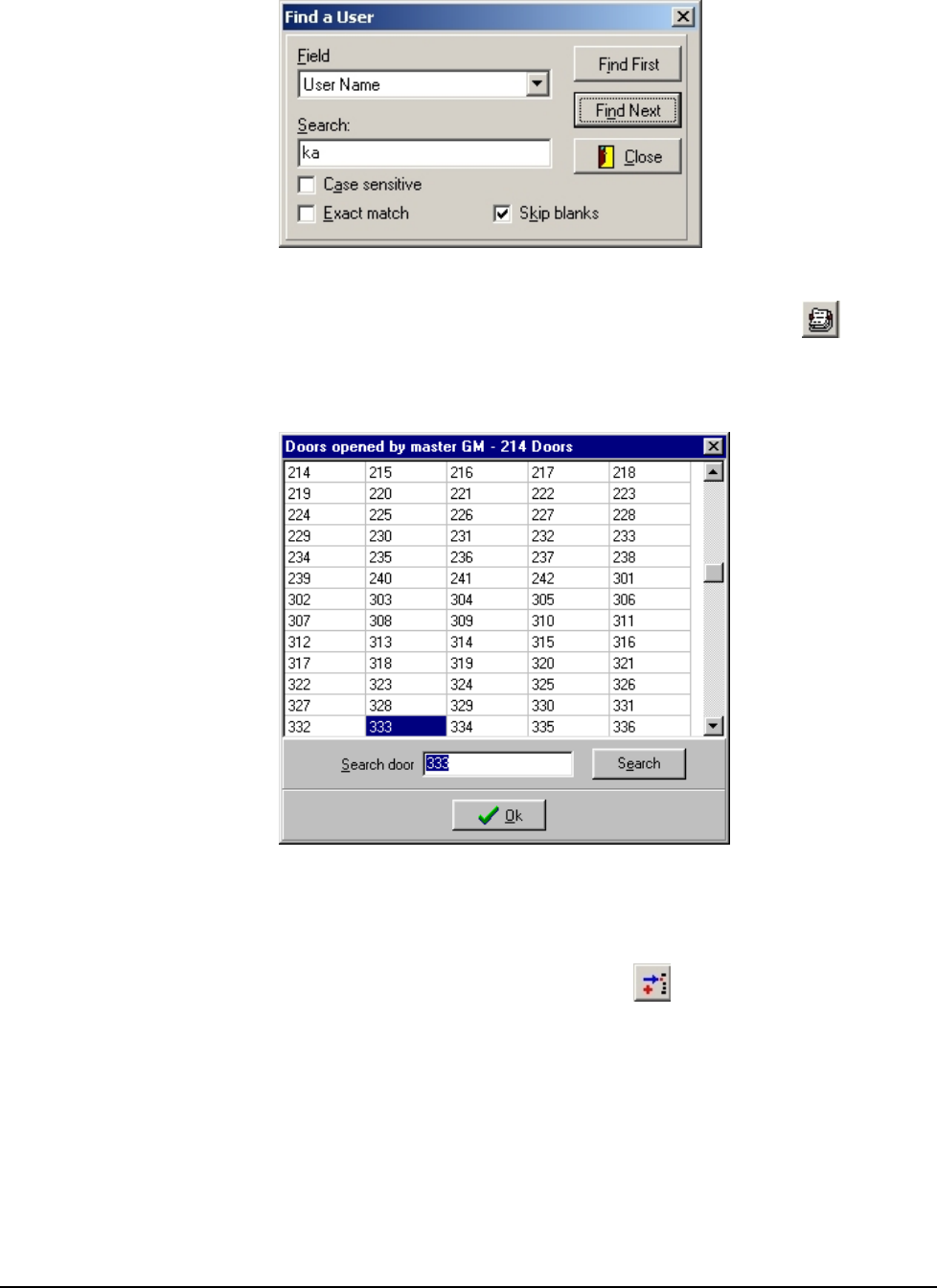
30 • Software - HT24W / HT28 Smart Onity HT24W / HT28 Smart
Mastering – Which Doors Can This Card Enter?
It is challenging to remember which master cards can access which doors, especially
in larger hotels. To easily see which doors a master card can enter, simply highlight a
master user on the Master Users list and click the Mastering button.
If the list of doors is lengthy, you can check a particular door by typing it in the text
box and clicking the Search button. If this master can enter that door, the list will
jump to that door and highlight it. A message will be shown if this master cannot
open that door.
New – Create New Master Users
When new employees come in to work to fill new positions, you need to create new
master users. These users will have access to doors based on the template you
choose for them.
The New Master screen is divided into two tabs – General and Revalidation. The
General tab contains the standard master user information such as card type, shift,
and other attributes. The Revalidation tab allows you to set and manage the
revalidation attributes for this user. Each user can have different revalidation
attributes.
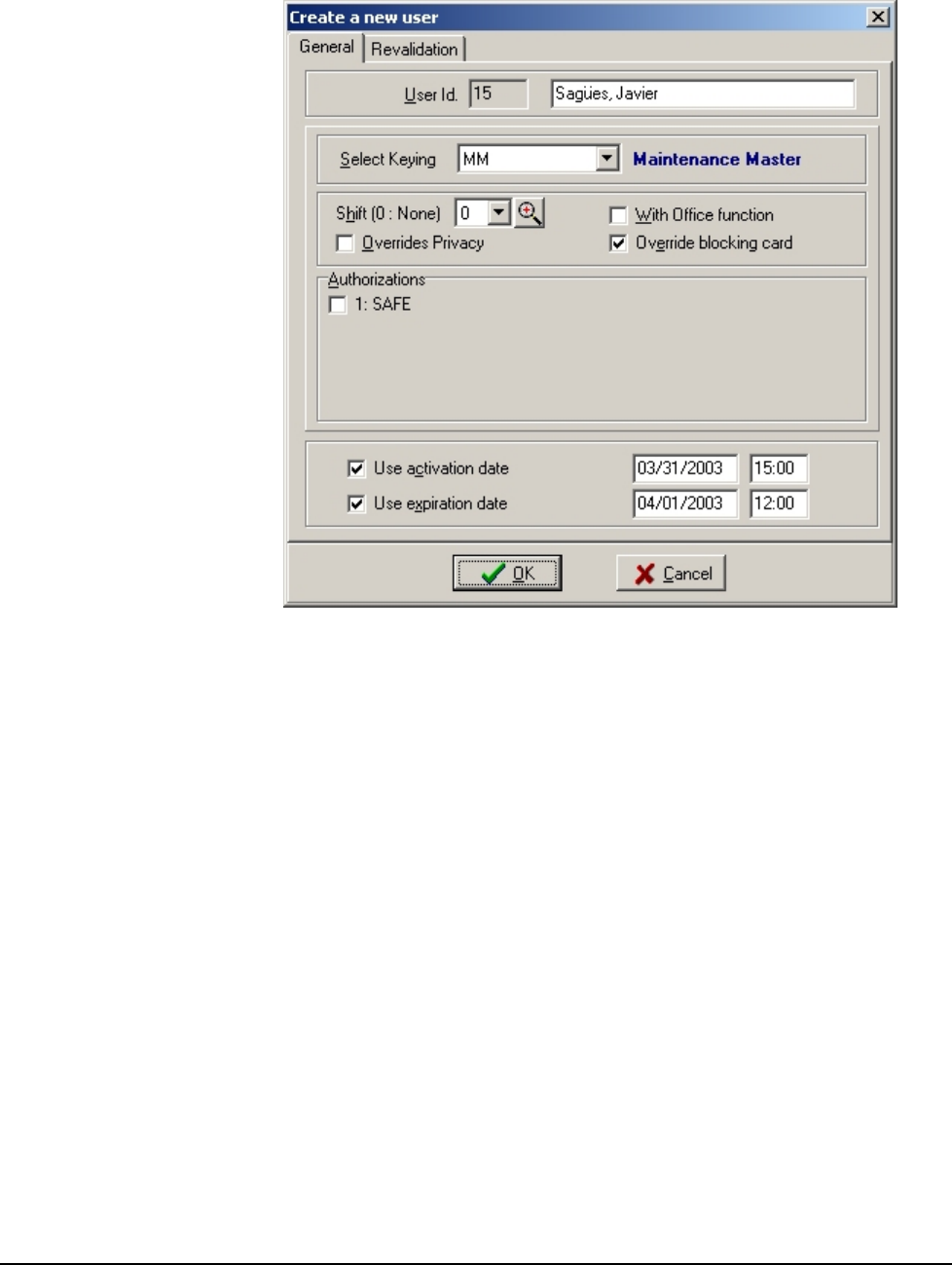
Onity HT24W / HT28 Smart Software - HT24W / HT28 Smart • 31
General Tab
1. Enter the name of this user. Entering the full and correct name will
help you to find this user in the list in the future when you need to
encode a new card or cancel this user.
2. The Master Template determines where this master card can be used.
For example, a master template called 2nd FLOOR HM, would be used
to access guest rooms and housekeeping closets on the second floor.
3. Now you must select a shift for this Master User. The shift limits the
time that a card will work in the locks to a specific time window. Enter
shift number 0 to allow 24 hour access or refer to your property
paperwork to select the appropriate shift number for this user.
4. Next, you can choose if this Master User has certain special privileges.
To select a privilege, click the appropriate option button or press the
space bar when the option is hi-lighted. All special privileges are
explained below.
• Override Privacy – This privilege allows the card to enter guest
rooms even if a guest has activated the privacy indicator.
• With Office Function – This privilege allows the Master User to
place certain doors into Office Mode so that they remain unlocked.
• Override Blocking – This privilege allows the master card to enter
a room that has been blocked by the Blocking Card.
5. Now, select any authorizations that this user will have. Authorizations
allow access to amenity areas, such as pools or exercise facilities.
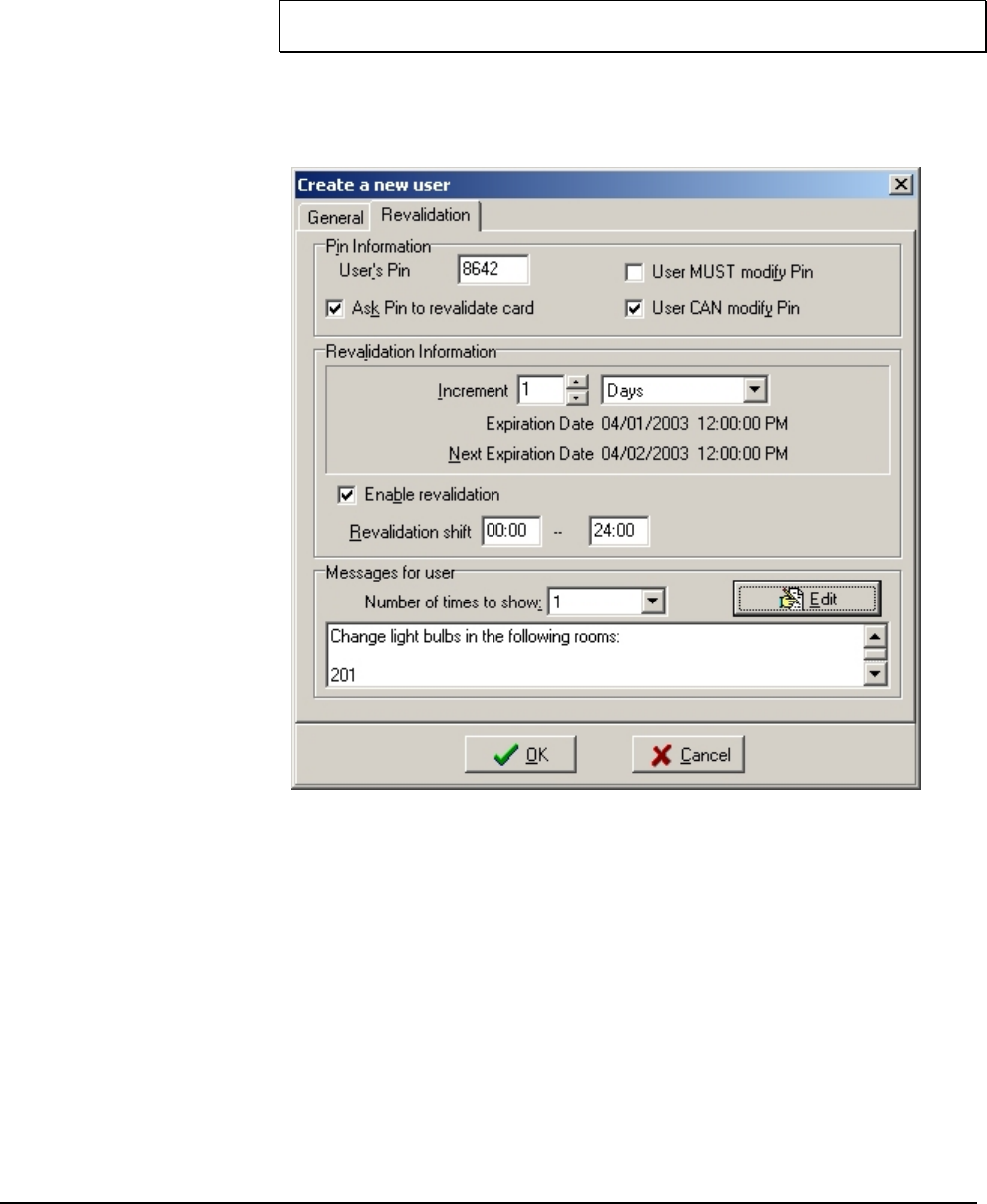
32 • Software - HT24W / HT28 Smart Onity HT24W / HT28 Smart
6. Next, choose a time at which point the user card will be active. This
option will only appear if you are using user card activation dates.
7. Finally, if you want the master card to expire make sure the Use
Expiration Date box is checked and the date is the way you want it. By
default, the card will expire in one day.
Note: Onity recommends that you encode all master cards with an expiration date.
This can be the best way to reduce the threat of a lost card.
Revalidation Tab
The Revalidation tab contains the settings for using the revalidation system. If you
are not using this system in your facility the information on this tab is not
important.
1. The PIN information section applies when the master user uses a
revalidation terminal. If your facility is not using the revalidation
function, leave the PIN Information section completely blank.
• PIN – This is the Personal Identification Number that may be
required for the user to use a re-validation terminal.
• Ask PIN to revalidate card – If this box is checked, the user will be
required to enter the PIN to use the re-validation terminal.
• User MUST modify PIN – This box indicates that a user must
change his or her PIN during the next use of the revalidator.
• User CAN modify PIN – If this box is checked, the user has the
option to change his or her PIN during the next revalidation
session.
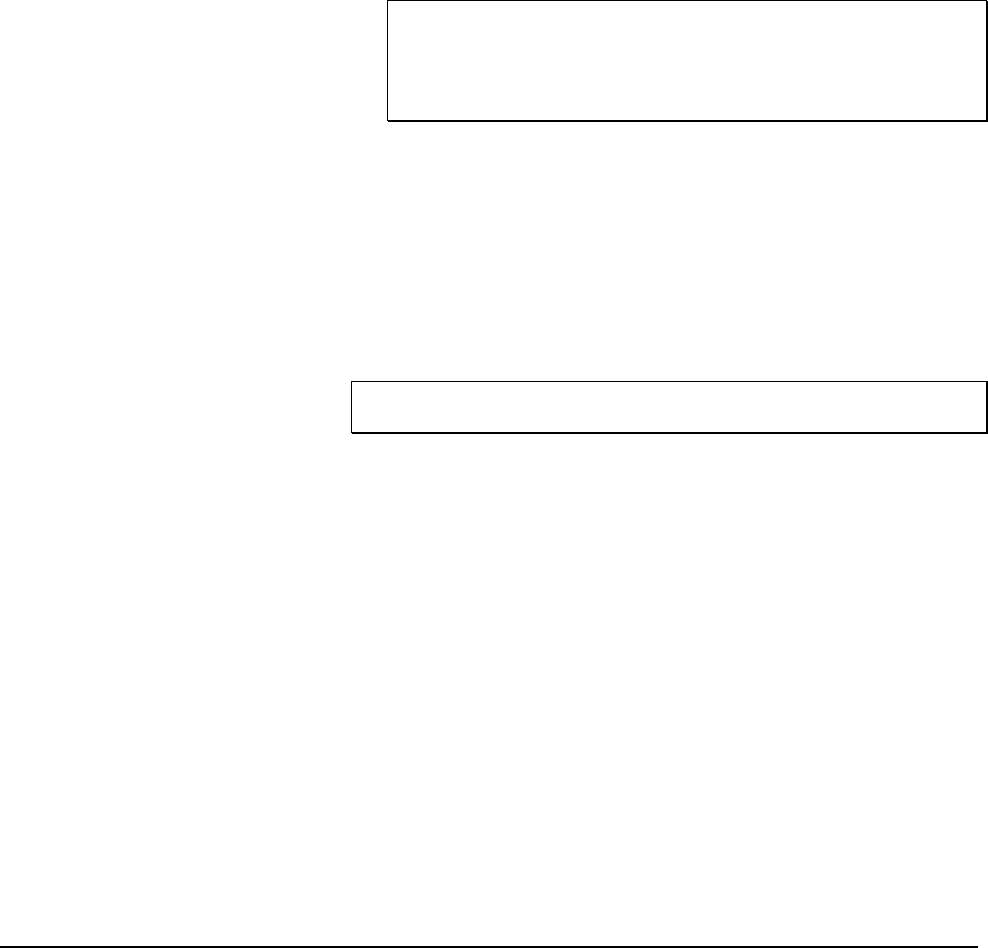
Onity HT24W / HT28 Smart Software - HT24W / HT28 Smart • 33
2. The Revalidation Information section contains parameters used to
determine when the card will expire and what will happen when the
card is encoded again.
• Increment – This field is used in the revalidation process. It
indicates the length of time the expiration date of a card will be
extended the next time it is revalidated.
• If the increment is set in days or months the card always expires at
the same time of day. If the expiration time set on the general
information tab is set to 6 PM for example, it does not matter if a
user revalidates at 8 AM or 3 PM. The card will always expire at 6
PM.
• If the increment is set in hours, the revalidator acts as a 'recharger'
and the card is encoded so that it will expire in X hours. If the
setting is 24 hours, a user revalidating at 8 AM will extend her
expiration until tomorrow at 8 AM.
Note: All expiration times are on the hour. When the card is
revalidated, the time is rounded to the nearest hour. For example,
when the revalidation increment is set to 1 hour and a card is
revalidated at 9:15, the new expiration time will be 10:00. If the card
is revalidated at 9:45, the new expiration time will be 11:00.
• Expiration Date – The expiration date encoded on the current
master card is displayed below the Increment field. Use this
information to determine when a lost card will expire.
• Next Expiration Date – This would be the expiration date if the
master user revalidated her card right now.
• Enable revalidation – If this check box is not checked, the master
user is not allowed to revalidate the card. This is commonly used
to temporarily prevent a user from using the card. To permanently
prevent usage, cancel the master.
Note: Even though revalidation has been disabled for a user, the card will
operate normally until it expires.
• Revalidation Shift – If you wish, you can limit the time of day that
the master users can revalidate their cards. To do this, simply enter
the beginning and end times that they are allowed to revalidate.
By default, these times are set to 00:00 and 24:00 so users can
revalidate at any time.
3. Message for the user – This section is again used in the revalidation
system. You can enter a message in this section that will be displayed
to the master user each time the card is revalidated, for the number of
times indicated. The message text can be printed from the revalidation
terminals with the printer option enabled.
4. When you have finished making all of your selections, click the OK
button at the bottom of the window. If you choose not to finish
creating this user, click the Cancel button.
Import Users
It is possible to import users into the system using a plain text file. Refer to
Appendix A for details on this function.
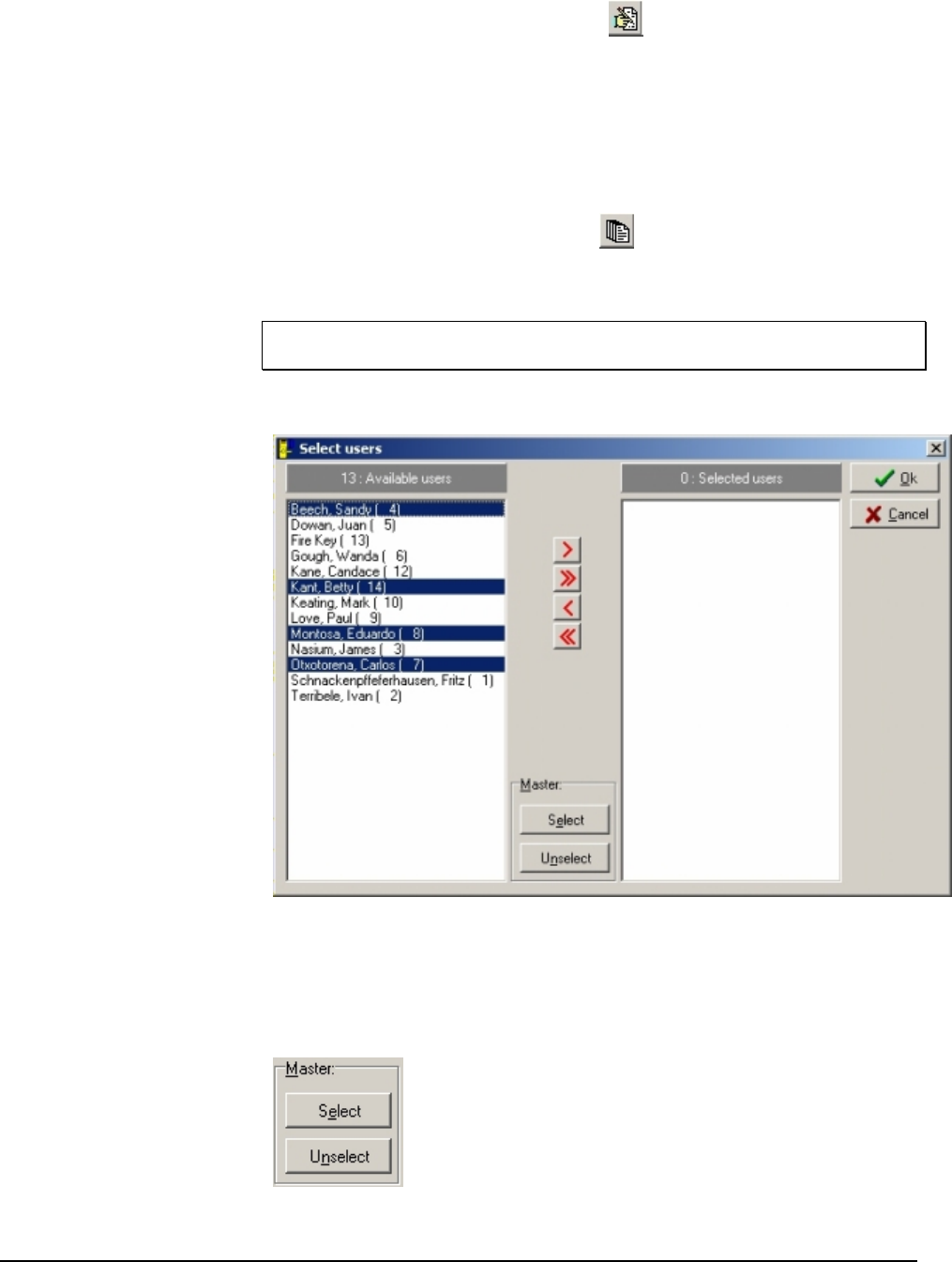
34 • Software - HT24W / HT28 Smart Onity HT24W / HT28 Smart
Modify – Edit Master User Data
N
ote: Changes do not take effect
until the card is encoded or
updated.
From time to time, you may wish to change the shift, authorizations, or other
attributes of a master user. You may modify the attributes of a Master User at any
time. The steps and the screen to modify a user are exactly the same as those to
create a user.
Because most of the master user attributes are stored on the card, most changes will
not take effect until you encode a new card for this user.
Batch Edit – Master User Data
To modify the data of more than one user at the same time, use the Batch Edit
function.
Note: Be very careful using this function. Improper use will cause undesired
results
To use the Batch Edit function, choose Batch Edit from the Tools menu of the Users
screen or click on the Batch Edit icon.
Select the users you wish to edit. To select multiple users in the list, hold down the
CTRL key and click on the desired users. To select a range of users, click on the
first user in the range, then hold down the SHIFT key and click on the last user on
the range. When you have selected the desired users, click the single arrow key.
To select all the users of a particular master type, click on the Select button in the
Master section.
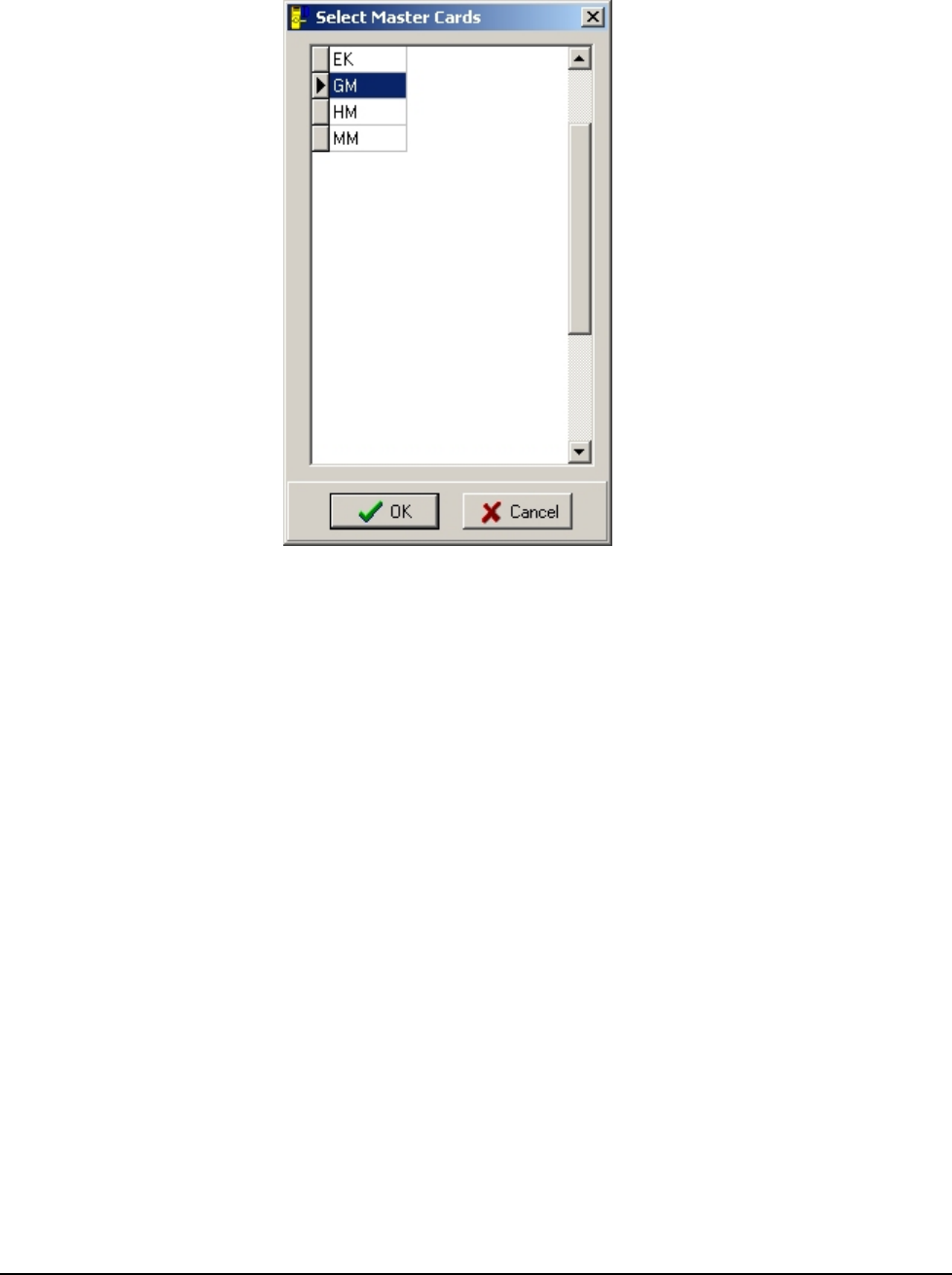
Onity HT24W / HT28 Smart Software - HT24W / HT28 Smart • 35
Now choose the desired master type to select all the users that carry that master card.
The selected users will be moved to the list box on the right side of the screen. Click
OK to continue.
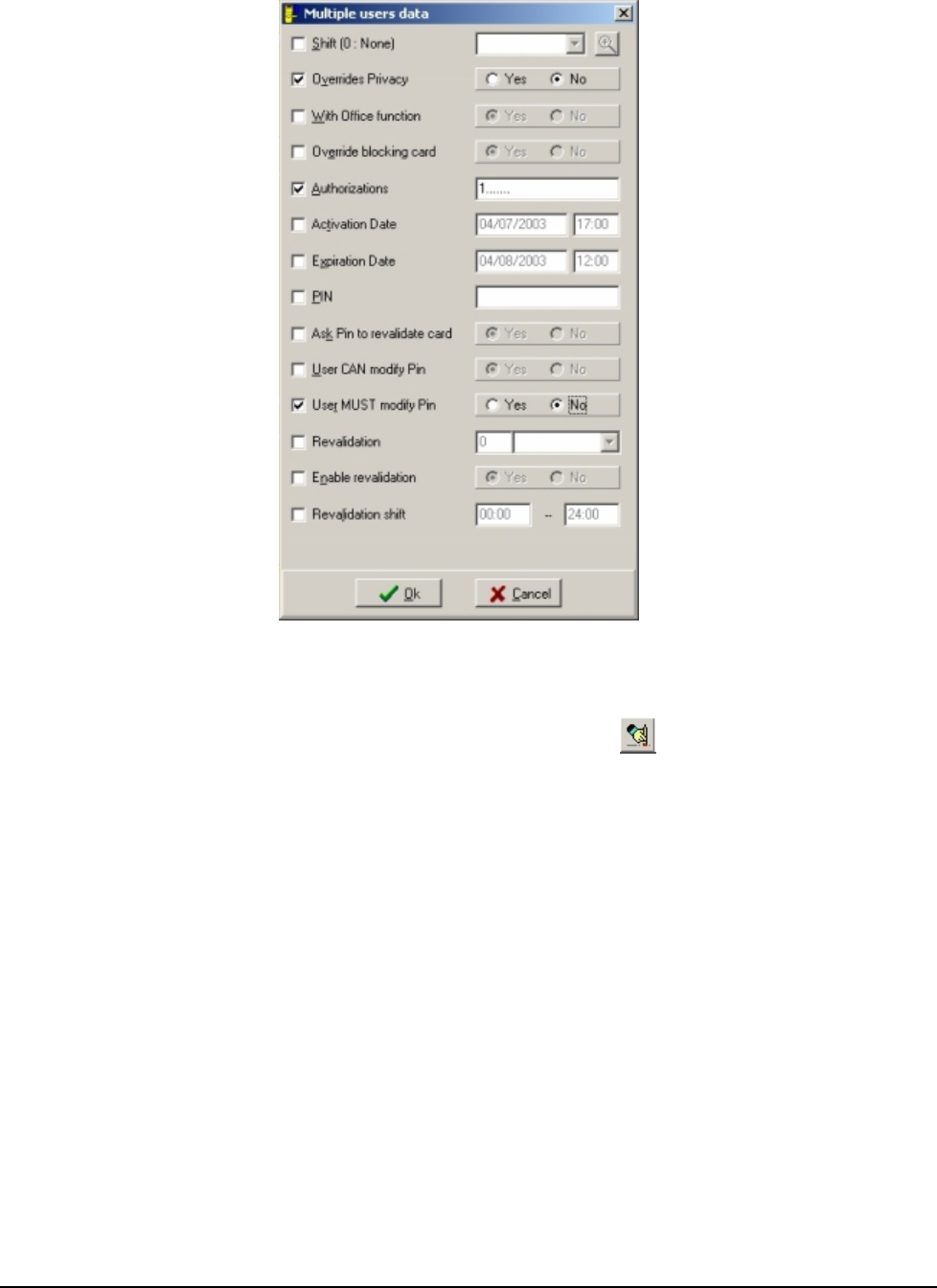
36 • Software - HT24W / HT28 Smart Onity HT24W / HT28 Smart
Now select the options you wish to change and set the parameters of that option.
Remember, this change will be made to all the users selected. When finished, click
OK to accept the changes.
Cancel – Disable Master Cards
There are many reasons you may wish to cancel a master card. The most
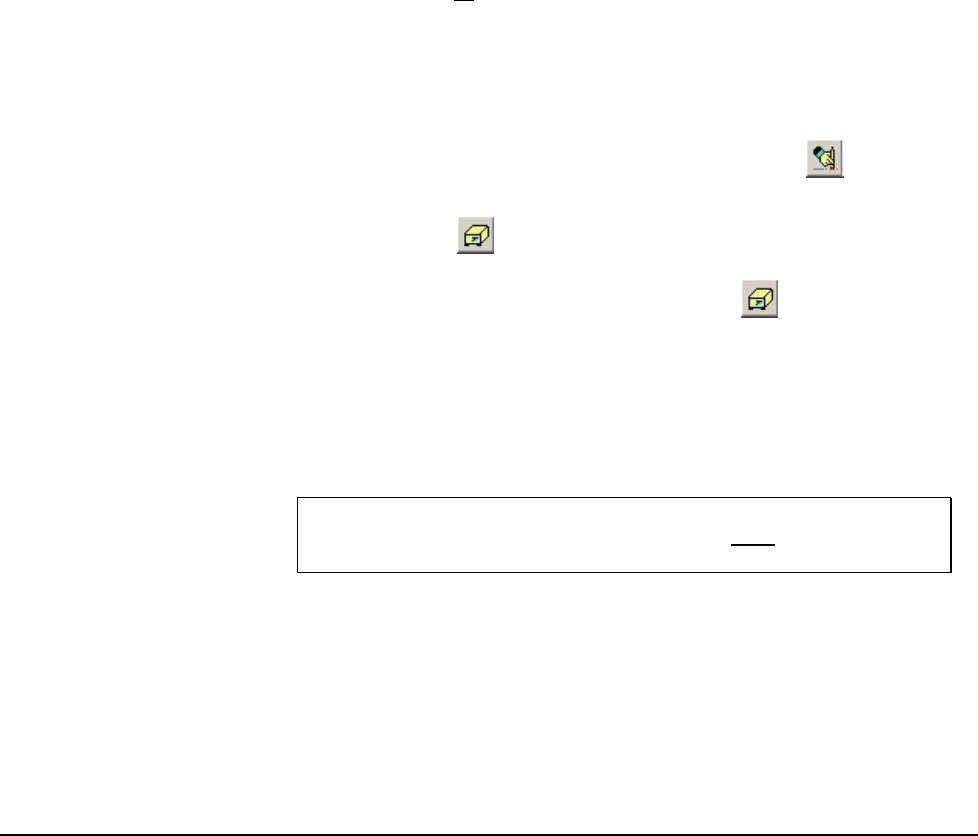
Onity HT24W / HT28 Smart Software - HT24W / HT28 Smart • 37
H
int: All canceled master cards
are shown in RED in the Master
Users List.
common reason is a lost card. When a card is lost, you need to cancel the lost
card in the guest room locks. There are three ways to do this.
• Let the card expire. To check the expiration date of a lost card, highlight the
master user in the list and click the View button. The expiration date is on the
Revalidation tab.
• Cancel the lost card and create new master cards that lock out the lost card.
• Encode a canceling card and use it in all of the locks. See the next section for
details about canceling cards.
Canceling a master affects every user that has this type of master card. Let us
say, for example, that Sandra, a GM type master card holder, loses her card and
you wish to cancel it. Follow these steps:
1. Highlight the lost master card in the list – in this example, Sandra.
2. Click the Cancel button.
3. Answer Yes to confirm that you wish to cancel this user.
A name in red letters indicates that she is canceled in the systems and no new
cards can be made for her. But to cancel her in the locks, either a GM card with the
updated code or the master canceling card must be inserted in the locks. You must
update the cards for all of the other GM type master users, or one of them might
get locked out of a room. Use the Update function to re-encode the other GM
master cards with the new code. If you are using the revalidation system, the cards
will be updated the next time they are revalidated.
Since Sandra lost her card and is still an employee, she needs a new card to
continue working. You must re-activate her to encode a new card.
1. Highlight Sandra in the list and click the Cancel/Reactivate button to
reactivate the user.
2. Use the Encode button to make a new card for her.
Encode – Create or Copy Master Cards
When you create new master users or re-activate canceled users, a new card must
b
e made. Simply highlight the user and click the Encode button to make a card for
a new or re-activated user.
If your system allows copies of master cards, you can use the Encode button to
make copies. Note that copies of master cards make it impossible to tell which
card has been in a room, because all copies are assigned to the same user.
Never make a copy of a Master card that was lost. Always cancel the user,
re-activate and issue new cards. Master copies are exact duplicates and
cannot be individually identified.
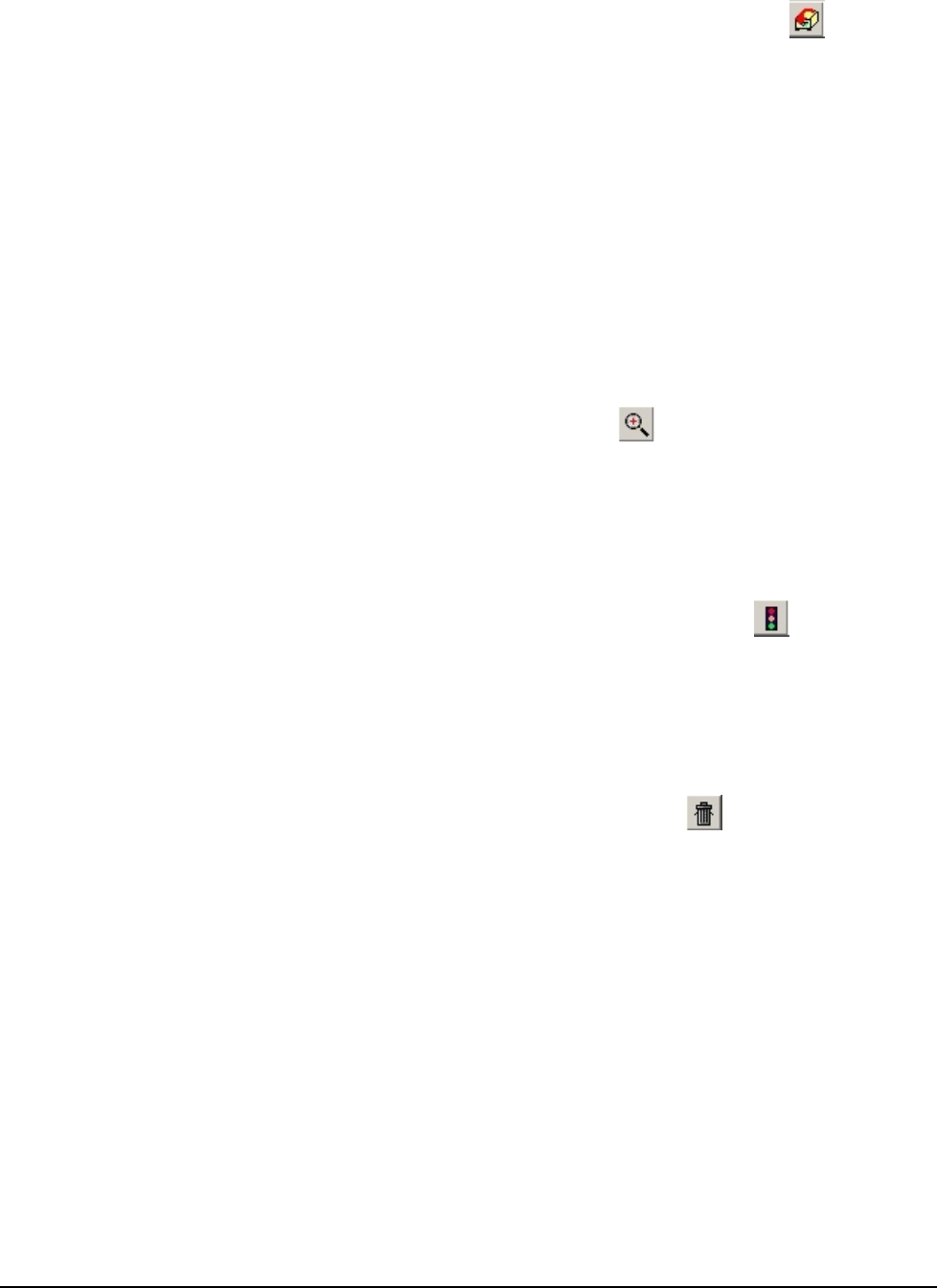
38 • Software - HT24W / HT28 Smart Onity HT24W / HT28 Smart
Update – Encode Master Cards With New Data
The Update function is a simple way to bring existing cards up-to-date with any
attribute changes or a new expiration date. The following steps explain how the
update function operates.
1. Click the Update button.
2. Press any key to begin.
3. Insert and remove the card. If you are using smart cards, insert the card and
leave it in. This step reads the information on the card to see if there are any
changes.
4. If you require a PIN, you must enter the correct PIN when prompted.
5. If the card is not up-to-date, insert the card again to re-encode the card with the
new data.
6. If there is a message for the user, it is displayed along with a list of the new data.
View – Show Master User Data
It may be useful for some operators to be able to see the attributes given to a master
user, but not be able to make changes. For example, anyone could answer "When
does my card expire?", but only a few operators could actually change that attribute.
The View screen allows operators to see everything about a master user, but no
changes can be made.
Disable/Enable – Deny/Allow Card Updates
If you disable a master user, that user will not be allowed to revalidate the card.
Disabling a master user does not prevent you from encoding cards or making
privilege modifications.
You may want to disable a user if you want the user to see a manager before he is
able to revalidate.
Delete - Remove a User from the List
To remove unneeded users from the list, highlight the canceled user and click on the
Delete icon. This will remove the user from the view. If necessary, you can recover
a deleted user. First select ‘View Deleted Users’ from the View menu. Highlight the
user to be undeleted and click the Delete icon to reinstate the user.
Note: Deleted users are not actually removed from the database. This is done to
keep the integrity of the lock audit reports. If you reach the limit of users allowed in
the system (5,000) you will be prompted to overwrite a deleted user the next time a
new user is added.
Master Canceling Card
This function is used to cancel a lost master card in the locks. When a master is lost,
cancel the master user in the Master Users List (F11) and then encode a master
canceling card for that type of master. Insert the master canceling card into each
lock that can be accessed by the lost master. Once the master card is canceled in the
locks, you must modify the master user that was canceled to reinstate the master
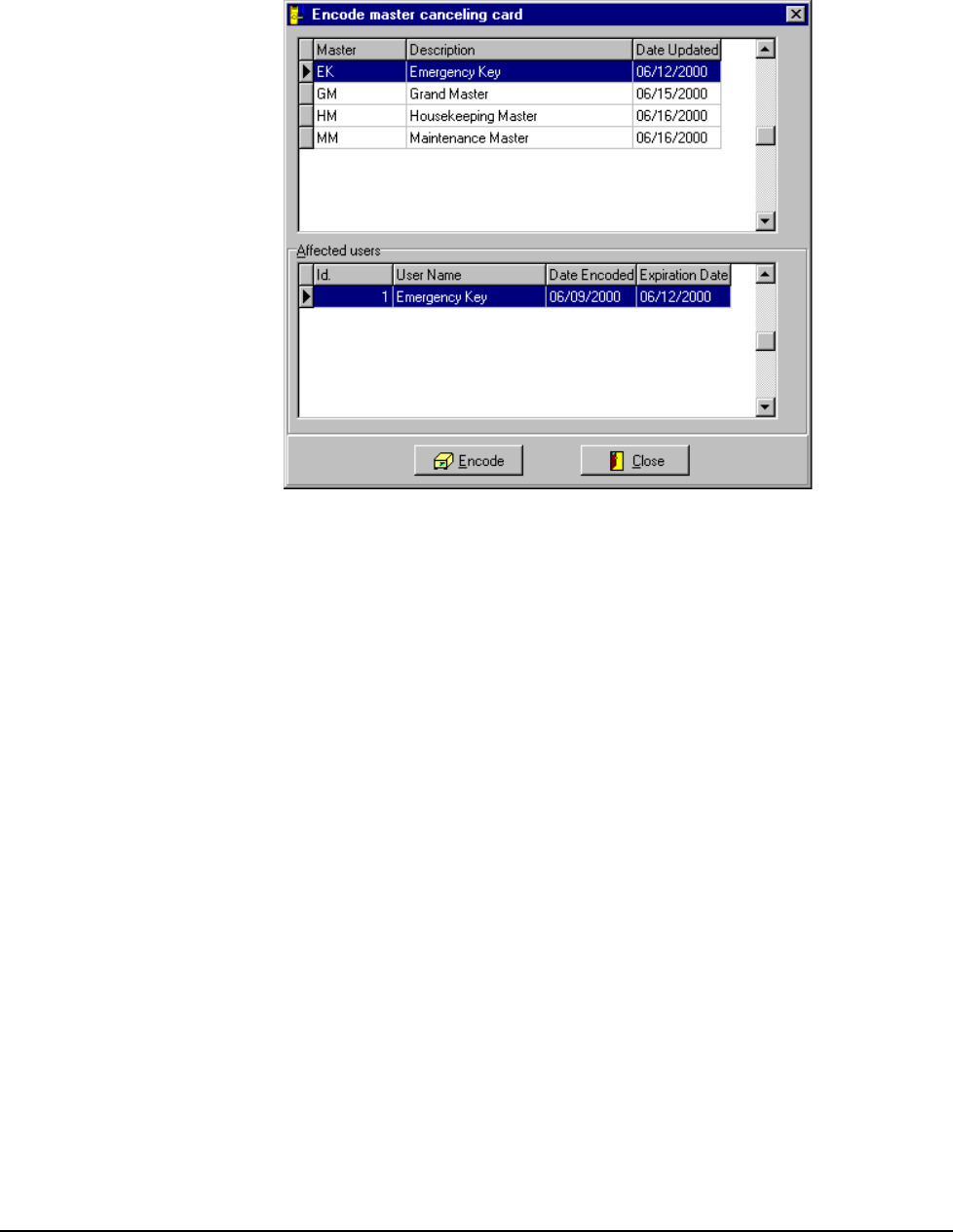
Onity HT24W / HT28 Smart Software - HT24W / HT28 Smart • 39
user, then re-encode the master cards for all cardholders with that type of master. If
using revalidation, users cards not canceled will be re-encoded upon revalidation.
The lower portion of the screen will indicate which master users need new cards.
To encode a master canceling card, select Master Canceling Card from the Masters
menu. Select a master template from the list. The lower list will show all the active
users holding a copy of the master. All of these people will need a new card once
you encode and use the canceling card. If these users revalidate their cards, they will
be encoded automatically – unless the master user has been canceled in the Master
Users List.
When you have selected the master you want to cancel, click the Encode Card
button.
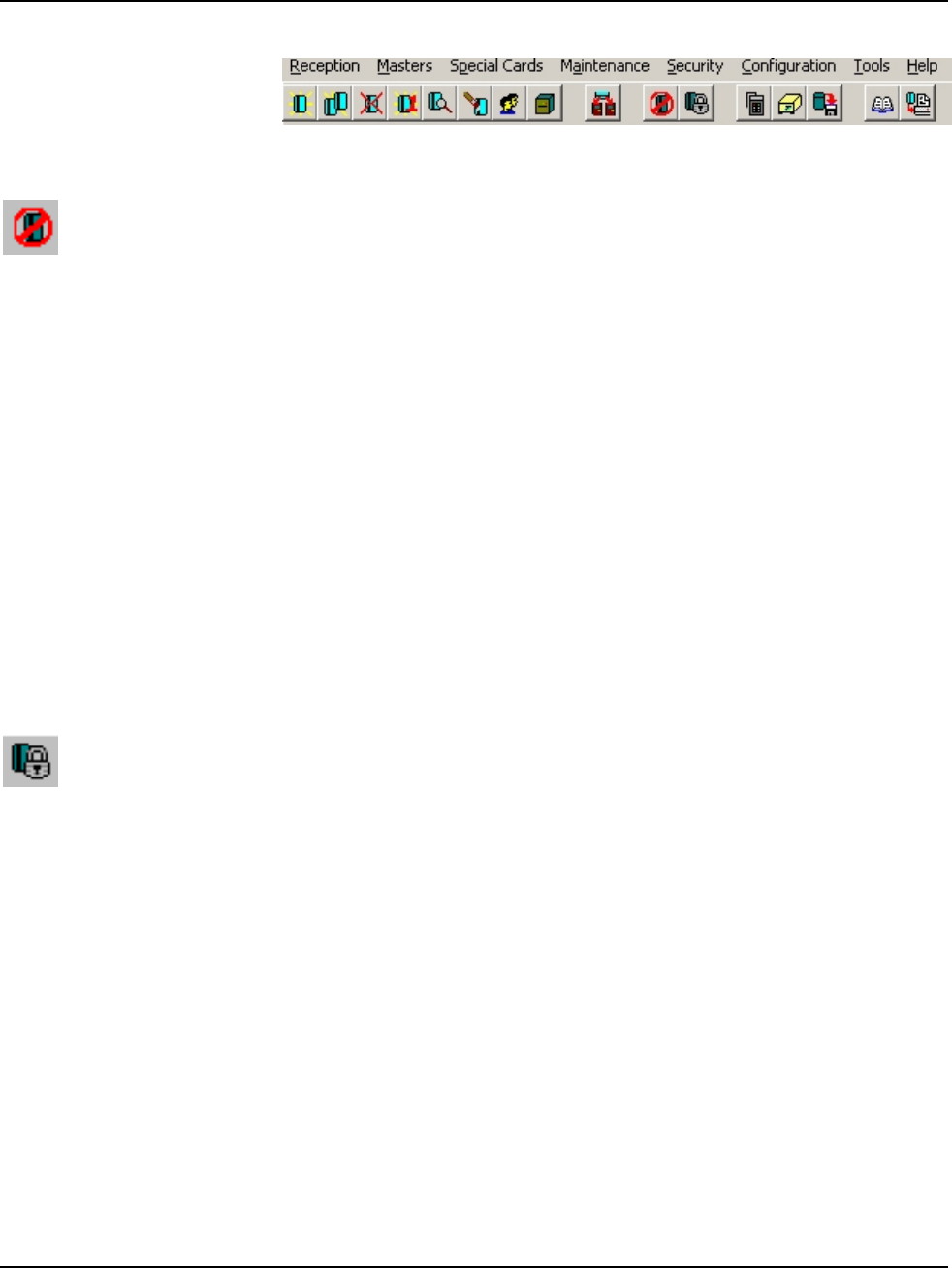
40 • Software - HT24W / HT28 Smart Onity HT24W / HT28 Smart
Special Cards Menu
Encode Guest Canceling Card
Encode Guest
Canceling Card
This function is used to encode a guest canceling card. The guest canceling card is
a card with a special code that will lock the current guest card out of a guestroom
lock. Once the guest canceling card has been used in a lock, the guest must receive
a new guest card in order to get into the room.
To encode a guest canceling card, perform the following steps:
1. Select Encode Guest Canceling Card from the Special Cards menu or
click on the Canceling Card Tool.
2. The screen will prompt you to decide if the code of the card should be
changed, or if a copy of the existing code should be used. Make a
selection by clicking one of the option buttons and press the ENTER
key or click the OK button.
Using a guest cancelling card with a new code in a lock will void any
previous guest cancelling cards
3. You will be prompted to insert a card into the encoder. When you have
finished encoding the card, your canceling card is ready to use.
4. Insert this card into any guest room lock where you wish to invalidate
the cards of the current guest.
Encode Blocking Card
Encode Blocking Card
This function is used to encode a blocking card. The blocking card is used to take a
room out of service for an off season or to seal a room after a criminal incident.
When a blocking card is used in a lock, no other card will operate that lock, unless
it has the blocking override privilege. Typically, only high level master cards have
the blocking override privilege. The lock is restored to normal operation by using
the blocking card a second time in the lock.
1. Select Encode Blocking Card from the Special Cards menu or click on
the Blocking Card Tool.
2. The screen will prompt you to decide if the code of the card should be
changed or if a copy of the existing code should be used. Make a
selection by clicking one of the option buttons and press the ENTER
key or click the OK button.
Using a blocking card with a new code in a lock will void any
previous blocking cards
3. You will be prompted to insert a card into the encoder. When you have
finished encoding the card, your blocking card is ready to use.

Onity HT24W / HT28 Smart Software - HT24W / HT28 Smart • 41
Encode Diagnostic Card
This function is used to encode a Diagnostic Card. The diagnostic card is a card that
is used to check the batteries and read head of a lock. The card is encoded with a low
magnetic level and a special code that the locks will recognize. The lock will respond
with a quick green light if it is functioning normally, a solid green light and flashing
red light if the batteries are low, or a delayed red light if the read head is inoperative.
The diagnostic card will not open any doors.
To encode a diagnostic card, perform the following steps:
1. Select Encode Blocking Card from the Special Cards menu.
2. You will be prompted to insert a card into the encoder. When you have
finished encoding the card, your diagnostic card is ready to use.
Encode Spare Cards
R
emember that when you
need the Spare Cards or a
P
rogramming Card urgently,
y
ou will not be able to
encode them.
This function is used to encode Spare Cards. Spare Cards are used in conjunction
with the programming cards to allow new guests to check in to a room in the event
that the front desk card issuing system is completely down. The spare cards must be
pre-encoded and stored in a safe place that is accessible to the front desk staff in the
event of an emergency, such as a power outage. Spare cards are not assigned to a
room until the programming card is used. Continue reading for further operating
instructions.
Remember that when you need the Spare Cards or a Programming Card urgently,
you will not be able to encode them.
Encoding Programming and Spare Cards
The programming card is used to enable the spare cards in the locks in the event that
the front desk card issuing system is completely down. It is very important to keep
the programming cards and spare cards together in a safe place that is accessible to
the front desk staff in the event of an emergency, such as an extended power failure
in the hotel.
To encode programming and spare cards, perform the following steps:
1. Select Encode Spare Cards from the Special Cards menu.
2. You must decide if you need to encode new programming cards or if
you only need spare cards. To encode programming cards, click on the
check box and enter the number of cards in the appropriate field. Make
as many copies as you think you will need because making new
programming cards invalidates any existing programming cards.
3. Then enter the number of spare cards you want to encode and press the
ENTER key or click the OK button.
4. You will be prompted to encode programming cards first. When you
have encoded all the programming cards you selected, you will be
prompted to encode the spare cards.

42 • Software - HT24W / HT28 Smart Onity HT24W / HT28 Smart
Using the Spare Card System
Allowing a guest into a room is a very simple process. Once the spare card is
assigned to the door, the guest can continue using the spare card until a new guest
card is encoded for this guest or the next guest, or until a guest canceling card is
used.
To assign the Spare Card, a hotel employee, such as a bellman, must walk with the
guest to the proper room. The employee will insert and remove the Programming
Card. At this point, the Green and Red lights will both be on. The lock is now
programmed to accept a Spare Card. The employee then inserts the Spare Card into
the lock. If the Spare Card is accepted, only the Green light will be on. At this
point, the lock is now ready to use this Spare Card.
If a guest is staying in multiple rooms or a suite, all of the locks can be programmed
to accept the same Spare Card.
Note: You cannot program a lock to accept more than one Spare Card.
Encode Safe Emergency Card
This function allows you to make a temporary master card that will work in
conjunction with an existing guest card to open an OS600 Model guestroom safe in
the event that the guest has forgotten the PIN for the safe. Once the safe is opened
this way, the guest must be given a new guest card, and the guest must enter a new
PIN to use the safe.
To encode a Safe Emergency card perform the following steps:
1. Select Safe Emergency from the Special Cards menu.
2. You will be asked to confirm that you really wish to encode a Safe
Emergency Card. Press the ENTER key or click the OK button to
confirm.
3. Next, you will be prompted to insert a card in the encoder. When
encoding is finished, your Safe Emergency Card is ready to use.
Using the Safe Emergency Card
In the event that a guest forgets the PIN for a guestroom safe, simply accompany the
guest to the guestroom.
1. Insert the Safe Emergency card into the safe. The green and red lights
should illuminate.
2. While the lights are on, insert the guest card into the safe and the safe
will open.
3. Issue a new guest card and the guest can enter a new PIN and continue
using the safe normally.
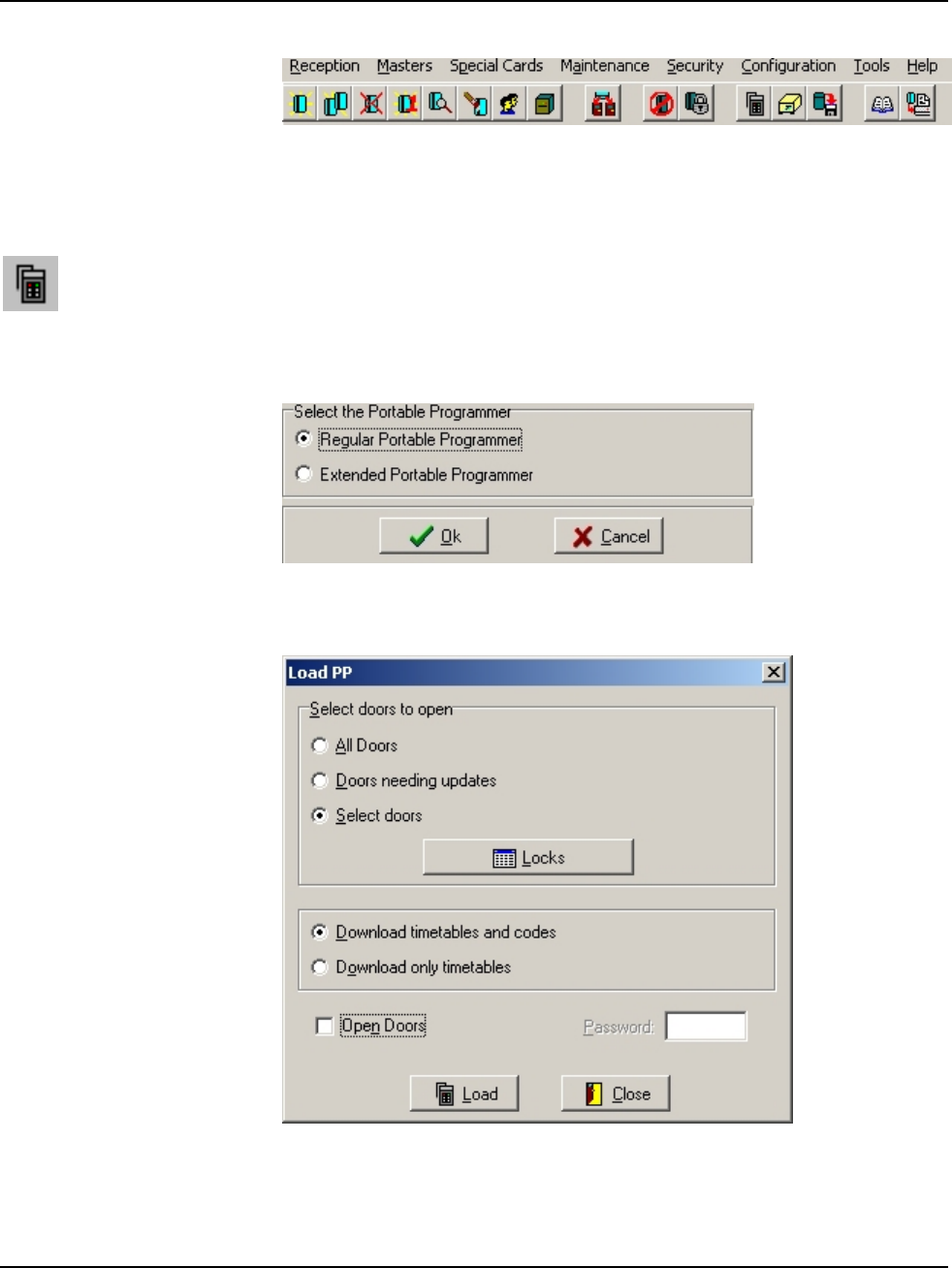
Onity HT24W / HT28 Smart Software - HT24W / HT28 Smart • 43
Maintenance Menu
The Maintenance Menu provides the most useful functions for monitoring and
maintaining the software and locks.
Load Portable Programmer
Load Portable
P
rogramme
r
This function is used to transfer current data to the Portable Programmer (PP), or to
the Extended Portable Programmer (XPP). This device is then used to update the
data in the stand-alone locks.
When you select this option, you will be asked to select the type of programmer to
load.
Choose the appropriate option and then click OK.
Portable Programmer (PP)
To load the PP with current data from the front desk console, perform the
following steps:

44 • Software - HT24W / HT28 Smart Onity HT24W / HT28 Smart
4. Connect the Portable Programmer and turn it on. See the System
Components section of this manual for details about connecting the
Portable Programmer.
5. Select Load Portable Programmer from the Maintenance menu or click
on the Load Portable Programmer tool and choose Regular
Programmer.
6. Before you load data into the programmer, you must decide what data
you need to load. You can choose one of three choices. To select one,
click on the option button beside your choice.
• All Doors – Loads data for all of the stand alone Onity locks for
your hotel, or as much data as the Portable Programmer can hold.
• Select Doors – Loads only the data for the doors you select. This
option can save you time if you only need to visit a few doors.
Click on the Select Doors button to pick from the list.
• Doors Needing Updates – Loads data for any doors that need
updating. Doors can need updates because of changes in mastering
schemes, changed master, blocking, or programming card codes, or
time changes.
7. The PP can be loaded with timetable and code information or only
timetable data. For example, if you only need to set the time in the
locks, for Daylight Savings Time or after changing batteries you only
need timetable data.
8. If you want to be able to open doors with the PP, select this option. If
selected, you must enter a four-digit password. This password may be
different every time you load the programmer. The password is used to
protect the Open function of the portable programmer from being used
by someone else should the PP be lost or stolen. Use the number keys
to enter a password which you will use to unlock doors and press the
ENTER key or click OK.
9. Loading the PP can take a few moments, so wait until the system
confirms that the PP is loaded before you disconnect it from the
computer.
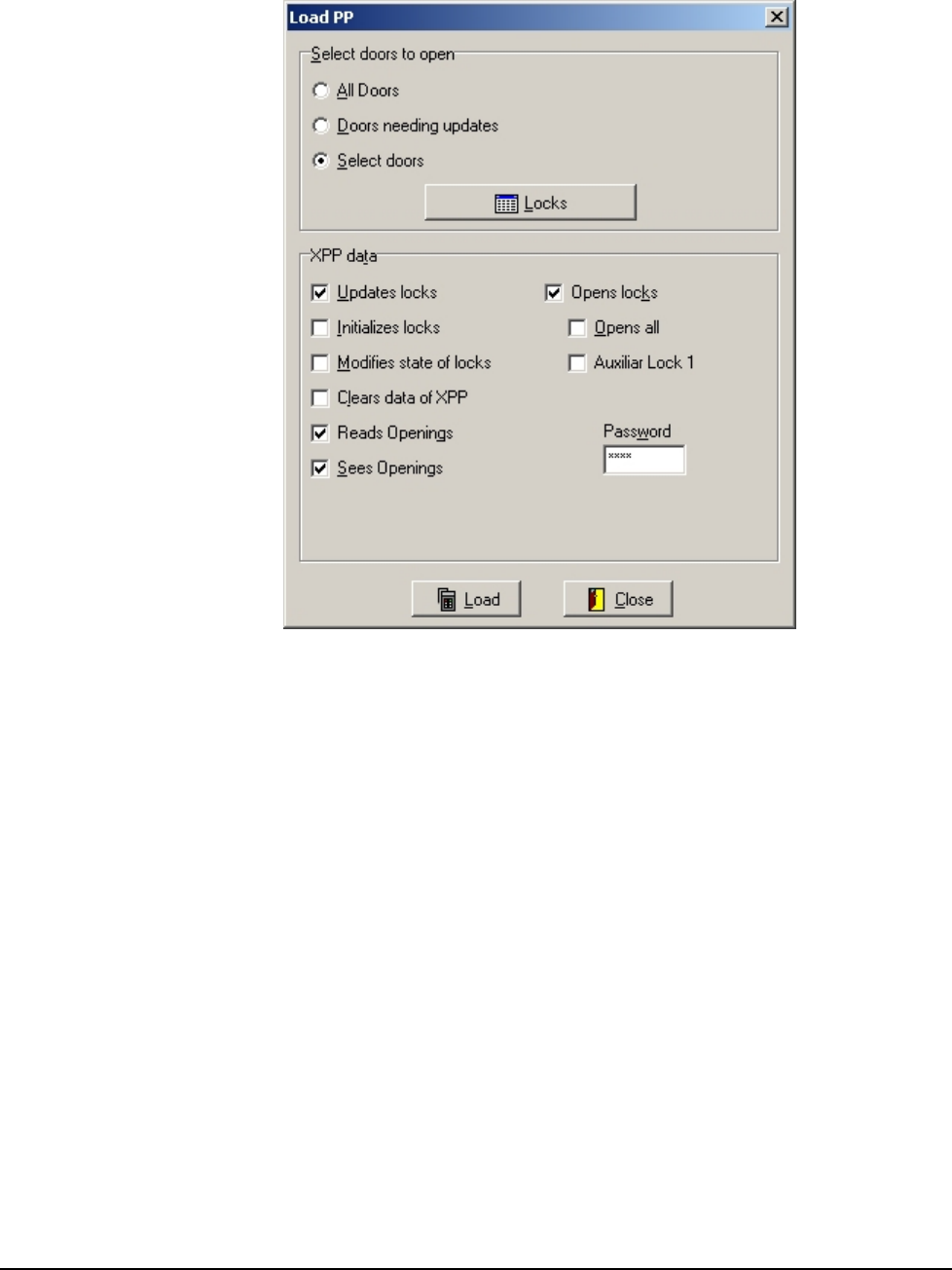
Onity HT24W / HT28 Smart Software - HT24W / HT28 Smart • 45
Extended Portable Programmer (XPP) – No XPP Operators
To load the XPP with current data from the front desk console, perform the
following steps:
1. Connect the XPP and turn it on. See the System Components section of
this manual for details about connecting the Extended Portable
Programmer.
2. Select Load Portable Programmer from the Maintenance menu or click
on the Load Portable Programmer tool and choose Extended Portable
Programmer.
3. Before you load data into the programmer, you must decide what data
you need to load. You can choose one of three choices. To select one,
click on the option button beside your choice.
• All Doors – Loads data for all of the stand alone Onity locks for
your hotel, or as much data as the Portable Programmer can hold.
• Select Doors – Loads only the data for the doors you select. This
option can save you time if you only need to visit a few doors.
Click on the Select Doors button to pick from the list.
• Doors Needing Updates – Loads data for any doors that need
updating. Doors can need updates because of changes in mastering
schemes, changed master, blocking, or programming card codes, or
time changes.
4. Now select the functions that the XPP will be allowed to perform. The
choices are as follows:

46 • Software - HT24W / HT28 Smart Onity HT24W / HT28 Smart
• Update Locks – Allows locks to be updated by the XPP
• Initialize Locks – Allows locks to be initialized by the XPP
• Modifies State of Locks – This feature will allow the XPP user to
change the state of a lock, such as setting a lock to office mode.
This feature is not active as of the writing of this manual.
• Clear Data of XPP – Allows the XPP user to delete locking plan
information from the XPP. It is advisable to clear the XPP data
when you have finished using it. Doing so will protect the
property in the event the XPP is lost of stolen.
• Read Openings – Allows the XPP user to collect openings reports
from the locks.
• See Openings – Allows the XPP user to see the openings reports
on the XPP display.
• Open Locks – Allows the XPP user to open locks.
• Open All Locks – If the XPP is loaded with a selection of rooms
only, the XPP will still be able to open all the locks if this option is
selected.
• Auxiliary Lock 1 – Allows the XPP to open the Auxiliary lock for
a room, typically the in room safe if using safes.
5. If you have selected the Open function, you must enter a four-digit
password. This password may be different every time you load the
programmer. The password is used to protect the Open function of the
XPP from being used by unauthorized persons should the XPP be lost
or stolen. Use the number keys to enter a password which you will use
to unlock doors and press the ENTER key or click OK.
6. Loading the PP can take a few moments, so wait until the system
confirms that the PP is loaded before you disconnect it from the
computer.
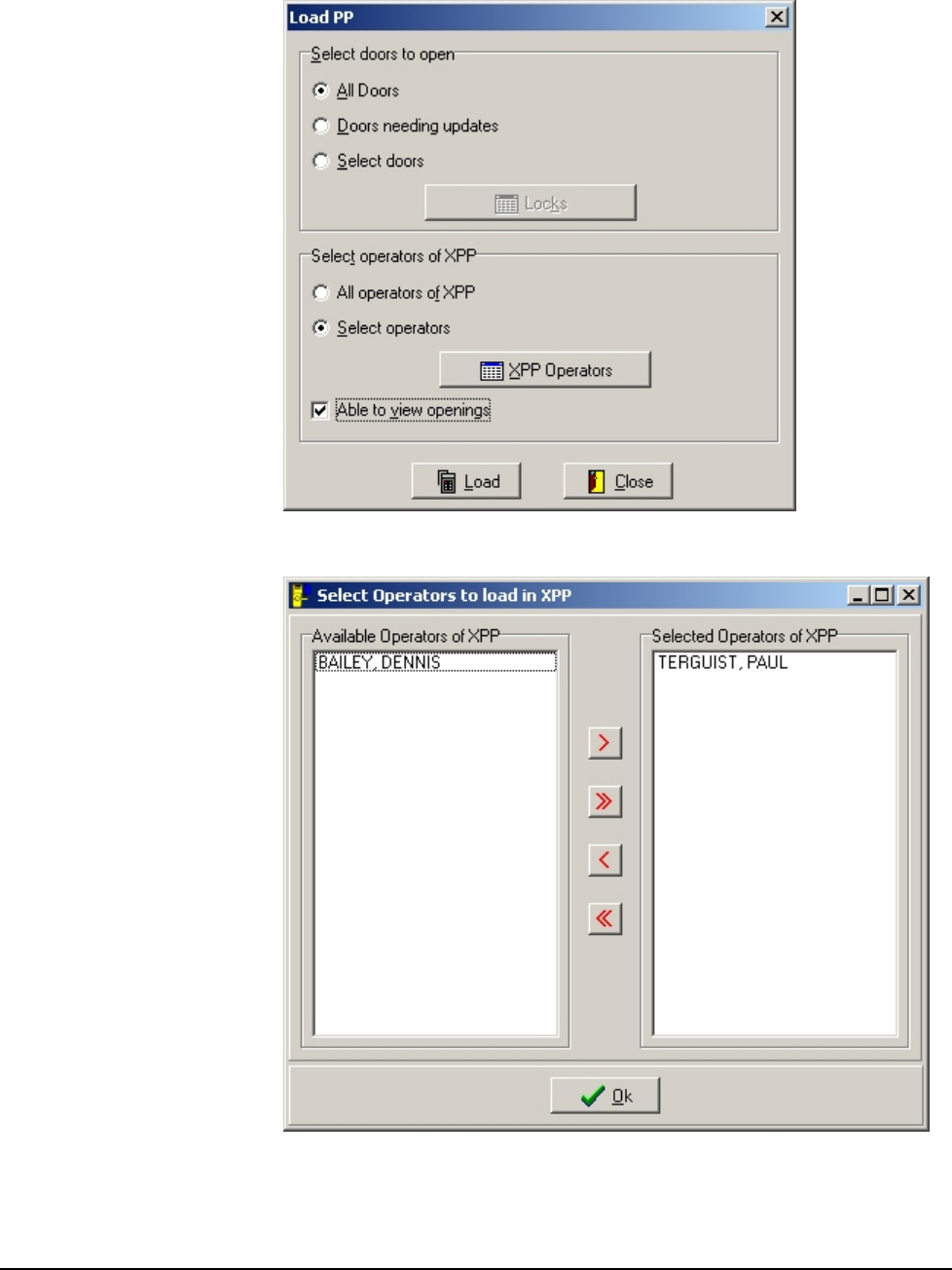
Onity HT24W / HT28 Smart Software - HT24W / HT28 Smart • 47
Extended Portable Programmer (XPP) – With Operators
If your system has set up XPP operators, you will have to option to load all
operators, or select the operators to load from the list.
If you do not intend to view
lock openings directly on
the XPP, deselect the View
Simply select the operators you wish to load and click OK. Now, choose whether or
not you want to be able to view lock openings reports directly on the XPP. If you do
not choose to view the openings, the xpp will load faster because it does not need to
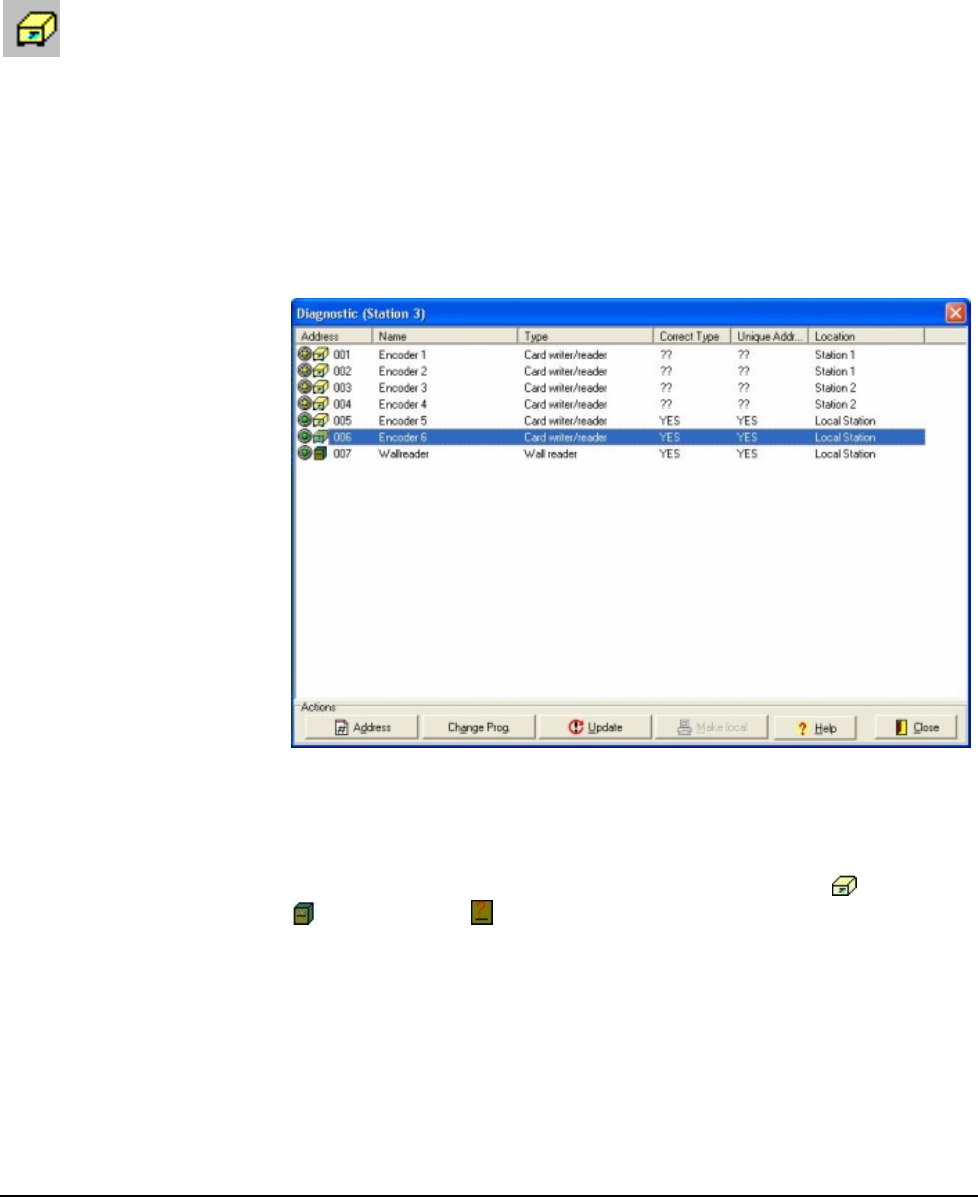
48 • Software - HT24W / HT28 Smart Onity HT24W / HT28 Smart
Openings check box. This
will decrease the time it
takes to load the XPP.
load user names. Click the Load button to load the XPP. The functionality of the
operator is given when the operator is set up. See Operators on page 68 for details
on setting up XPP operators.
Peripheral Diagnosis
Peripheral Diagnosis
This function is used to establish and monitor communications with all on-line
devices. There are four functions within the peripherals screen – Address, Change
Mode, Update, and Make it local. These three functions are used to keep the data
current and determine the operating parameters in the on-line devices. The
peripherals that may be connected to the System include insertion and motorized
encoders, guest card identifiers, revalidators, and on-line card readers.
The main peripherals window maintains a list of these units and their current status.
The list shows the peripheral name, type, address, communication status, and the
computer that the device is attached to. To open the peripherals window, select
Peripheral Diagnostics from the Maintenance menu, or click on the Peripheral
Diagnostics Tool.
The Address field shows the address of the device, and shows some visual
information about the device. First, there is a light that will show either Red,
Yellow, or Green. A Red light indicates that the device is offline, a yellow light
indicates that the device is connected to a different computer, and a Green light
indicates that the device is connected to the local computer and is communicating
properly. Next is a visual reference to the type of device: Encoder , Wallreader
, or Card Identifier .
Addressing a Peripheral
This function is used to establish communications between the system and the
peripheral the first time it is connected.
To initialize a peripheral device, perform the following steps:
1. Prepare one unit to be initialized. Consult your unit’s technical manual
for instructions on proper wiring and preparations for initialization.

Onity HT24W / HT28 Smart Software - HT24W / HT28 Smart • 49
There should be a message in the diagnostic messages box showing that
there is one peripheral asking for an address.
2. Select the peripheral from the list that corresponds to the unit you just
cleared. Click on the Address Peripheral button at the bottom of the
window.
3. If you are addressing an identifier, you will see a screen asking you to
enter the identifier password. This password prevents unauthorized
people from reading the information encoded on guest and master
cards. Press ESCAPE to load the Identifier without a password.
Updating a Peripheral
This function is used to transfer the current console data into an on-line reader
or identifier.
To update an on-line card reader or identifier, select a peripheral from the list and
click the Update Peripheral button. Updating can take a few moments for larger
hotels, so be patient.
Changing the Mode of an Encoder
This function is used to change the operational mode of the HT22 or HT24i terminal
encoders between Regular Encoder mode and Terminal Encoder mode (for a
description of these modes, see the section on Terminal Operation). It is also used to
set a device as a revalidator. This is useful in a system controlled by a PMS if the
PMS is not working properly. The hotel may change the encoders to Terminal
Encoder mode and continue to make cards on the terminal encoders until the PMS is
back on-line. Then they simply change back to the Regular Encoder mode to operate
with the PMS.
To change the operating mode of a workstation, select an encoder from the list and
click Change Prog.. In the type column of the list, regular encoders will be listed as
Reader/Writer and terminal encoders will be listed as Terminal.
Making the Encoder Local
There is a feature in the software that allows online devices like encoders and wall
readers to be connected to any Onity computer. Encoders connected to a workstation
computer can be terminal encoders or PMS controlled encoders. In previous systems,
a workstation computer could only control one encoder.
If an online device is connected to a workstation computer, it must be declared in the
peripheral diagnostic screen from the workstation. All of the devices are listed on the
screen, and the computer that controls the is listed in the right-hand column. Simply
highlight any encoder in the list and click Make It Local to transfer control to this
computer.
Note: This feature is optional and it may not be active in your installation.
This feature is useful in installations that have several large check-in areas with
multiple encoders. It can be less expensive to place a PC in each location than to
provide the cabling necessary to control all of the devices from the server computer.
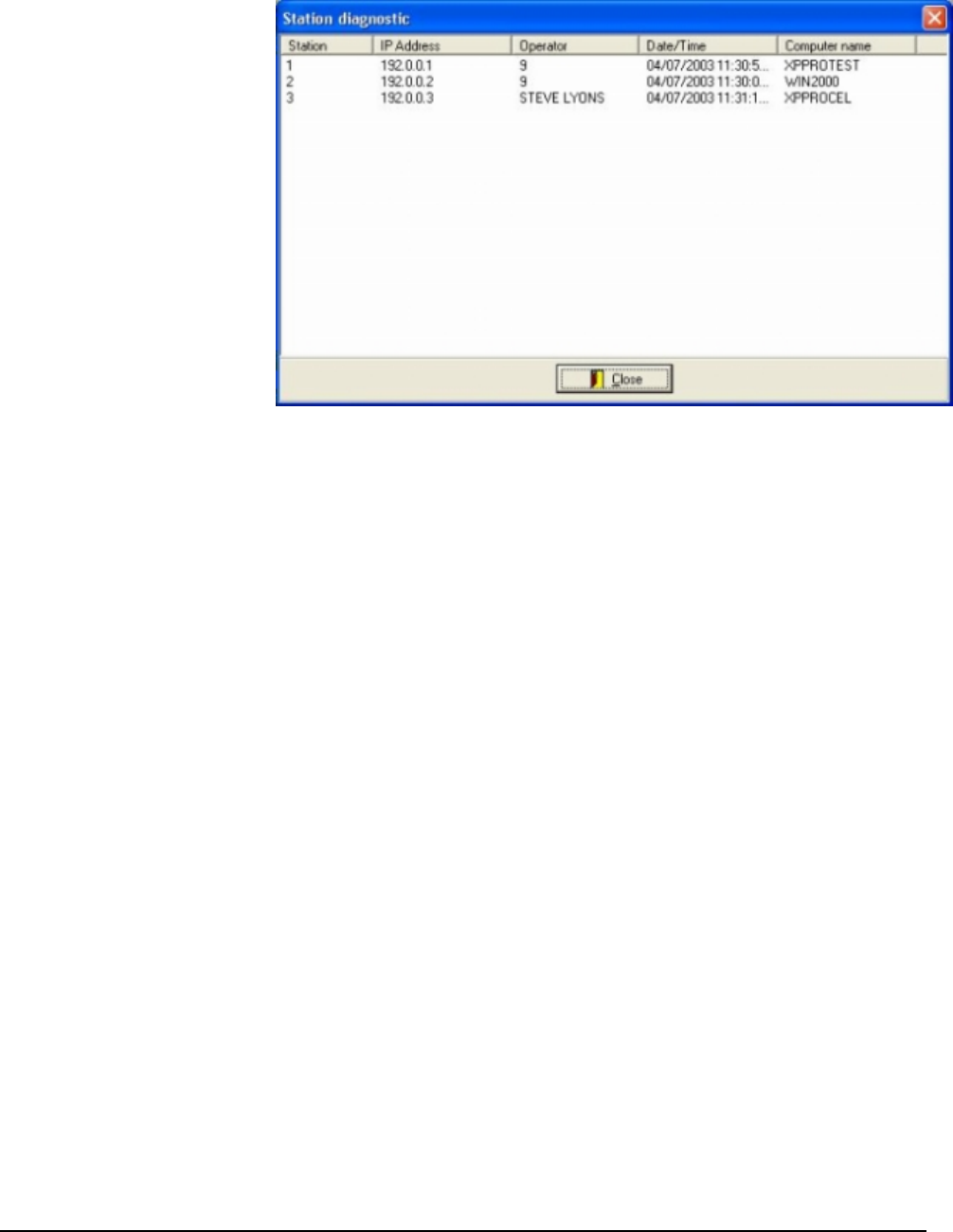
50 • Software - HT24W / HT28 Smart Onity HT24W / HT28 Smart
Station Diagnosis
The Station Diagnosis screen shows a list of all Onity computers. The list shows
which operator is logged in, the network address, if the station is communication
with its encoders, and the name of the computer. This information can be helpful
when troubleshooting problems.
When Onity technicians are making changes to the system, to add new doors for
example, the server must be the only computer accessing the files. This tool is useful
for determining which stations, if any, are logged in to the system.
Room Out of Service
This function is used to take a guestroom lock out of service for an indefinite period
of time. When the room is marked as Out of Service, cards cannot be encoded for
that guestroom. Once the room is placed back in service, cards may once again be
issued for that room. Taking a room out of service does not affect the operation of
the guestroom lock itself. Master cards will still operate the lock, allowing
renovations or repairs during the out of service period.
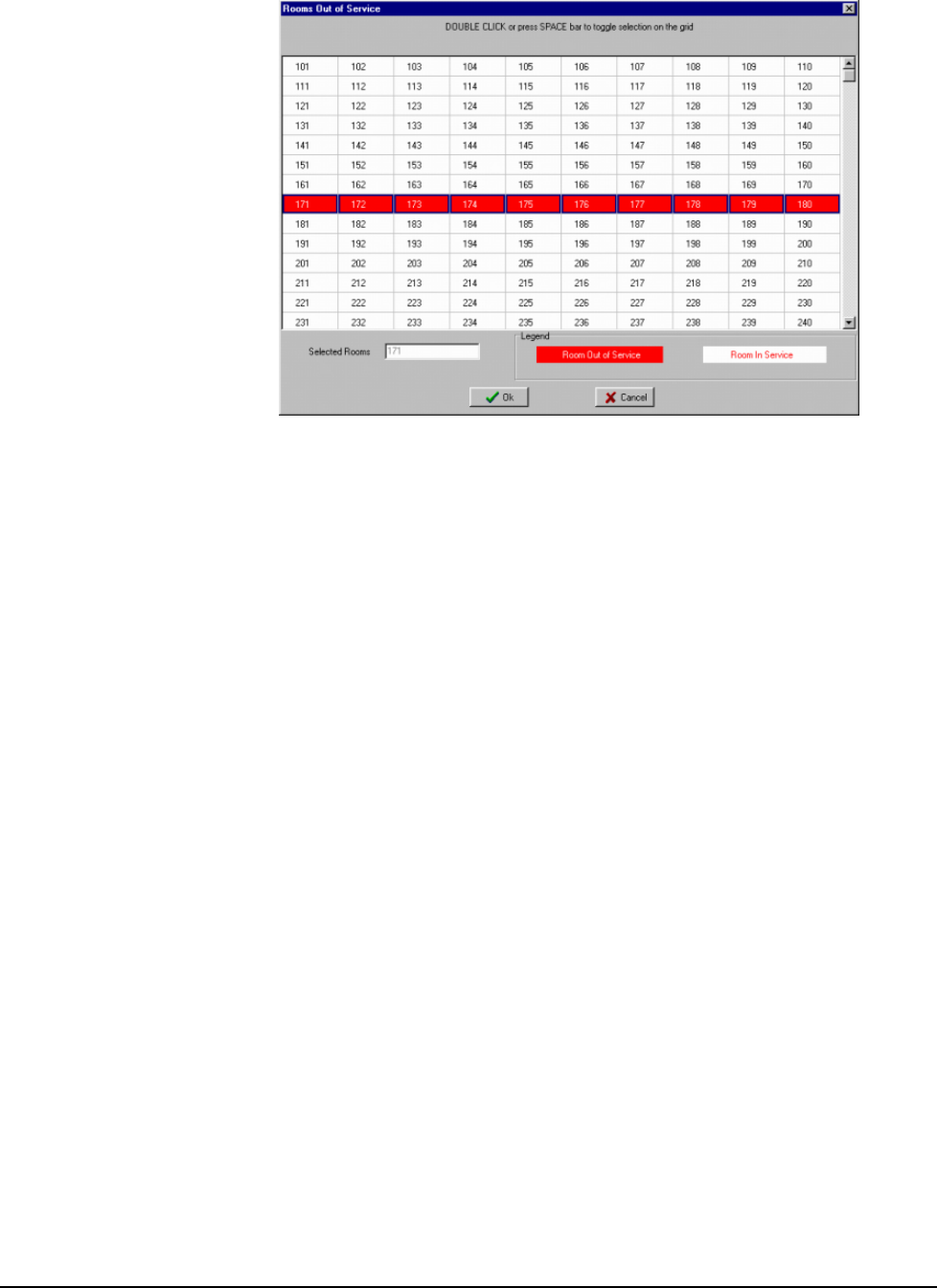
Onity HT24W / HT28 Smart Software - HT24W / HT28 Smart • 51
To take a room Out of Service or return a room to active service, perform the
following steps:
1. Select Rooms Out Of Service from the Maintenance menu.
2. You can use the ARROWS or the mouse to select a room. To take a
room out of service or to bring it back into service, Double Click or
press the SPACE bar. To select rooms in a rectangular block, hold
down the left mouse button or hold down the SHIFT key and press the
SPACE bar to toggle.
3. Press the ENTER key or click OK for the changes to take affect.
Mastering Changes
Your hotel may have different mastering schemes set up. Having different schemes
allows you to change the way your guest and master cards operate the locks. It is
easiest to understand the way mastering schemes work with a good example.
Example:
If you occasionally have important visitors at your hotel, you may wish to have a
mastering scheme that only allows guest keys and emergency keys to operate the
guestroom lock.
You may also wish to lock rooms down if they are out of service such that only the
maintenance staff can enter the room.
With these scenarios in mind, we could create the following mastering scheme.
A. Standard – Guest cards and master cards function normally.
B. VIP – Guest cards and the EK card are the only functioning cards.
C. Maintenance – Maintenance master cards are the only cards that
operate the lock.
You can have a maximum of 3 different mastering schemes and you can switch
between these modes of operation at any time without requiring any action from
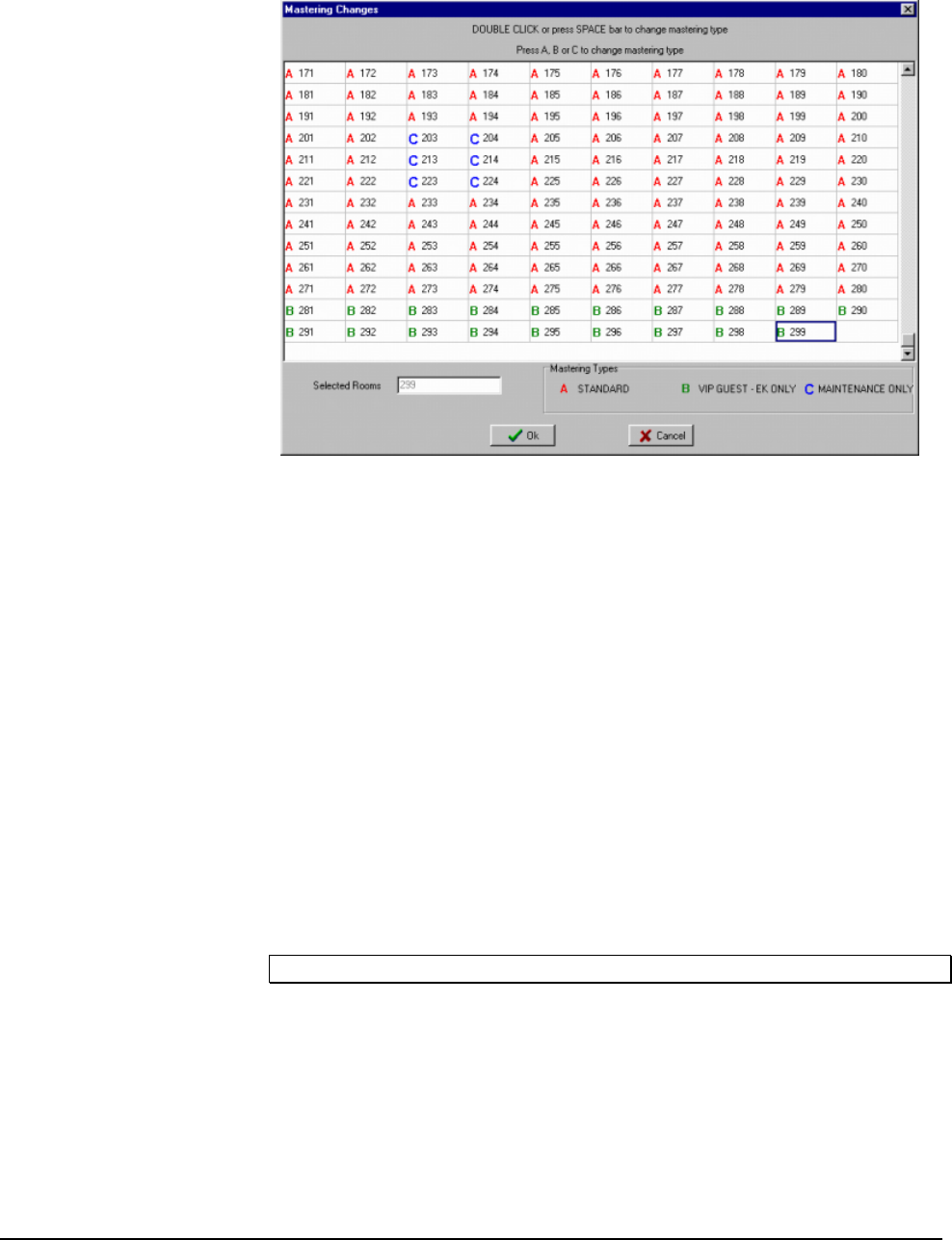
52 • Software - HT24W / HT28 Smart Onity HT24W / HT28 Smart
Onity. The schemes must be set up by Onity before they are available. If you do not
have mastering schemes set up and you would like to have this feature, call Onity.
To make a mastering change, follow these steps:
1. Select Mastering Changes from the Maintenance menu.
2. The Mastering Changes window shows all of the rooms in the hotel and
the current scheme for each room. The three schemes are labeled A, B,
and C and the description of each can be found in the legend at the
bottom of the window.
You can use the ARROWS or the mouse to select a room. To change
the mastering scheme, Double Click, press the SPACE bar, or press the
letter of the scheme. To select rooms in a rectangular block, hold down
the left mouse button or hold down the SHIFT key and press the
SPACE bar to toggle.
3. Press the ENTER key or click OK for the changes to take affect.
4. You will be asked to confirm that you really want to make the changes.
Click OK to confirm.
5. To inform the locks of the changes, you must load the PP with the new
information and update each lock. A message box will appear asking if
you want to load the PP at this time. If you say no, the changes will not
occur until you update the locks.
Note: You must update the locks with the PP before any changes will take affect.
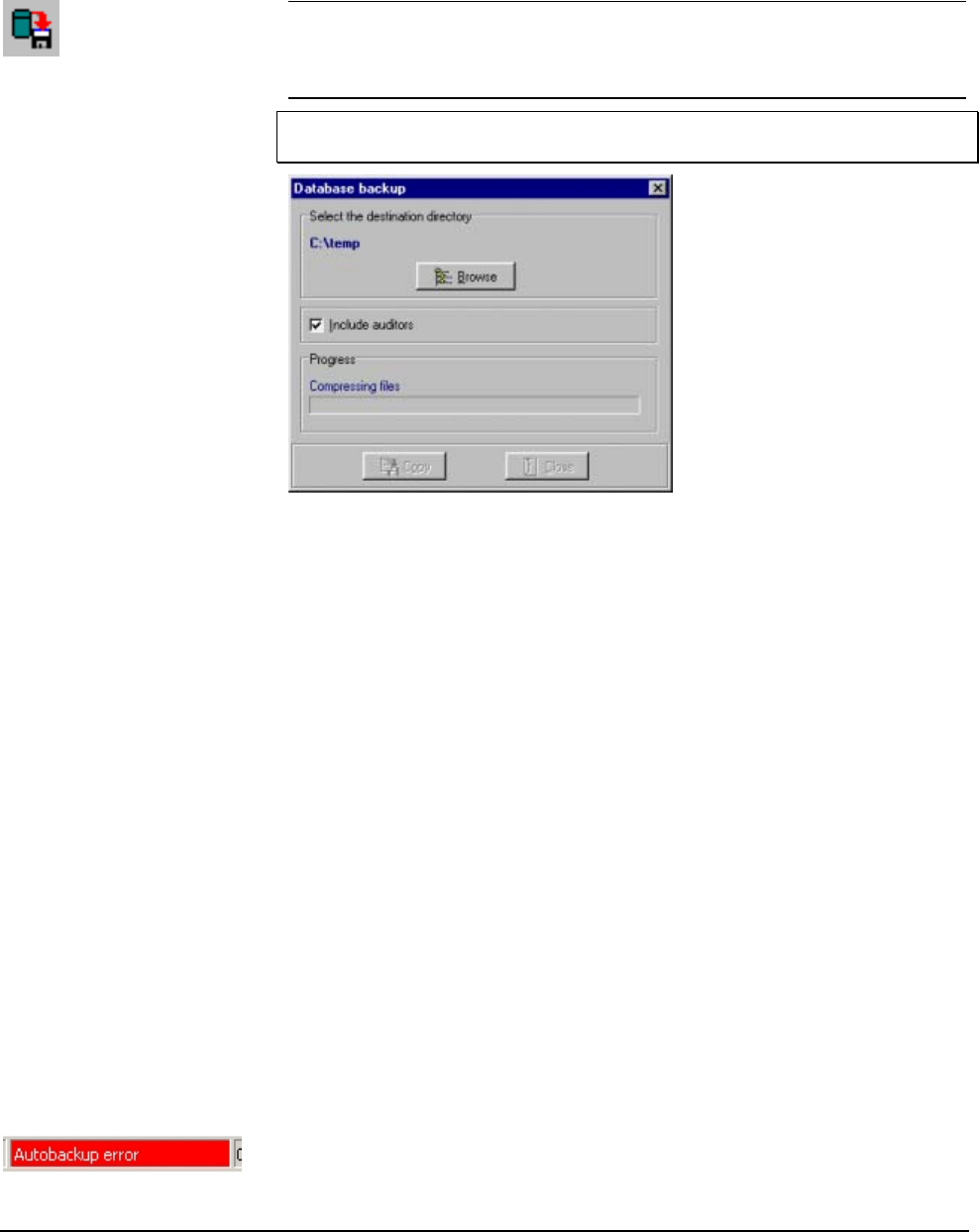
Onity HT24W / HT28 Smart Software - HT24W / HT28 Smart • 53
Backup Data
Backup Data
The Onity system requires many data files to function properly. If these files are
ever corrupted by a hardware failure of the computer system or some other anomaly,
it is important to have a recent backup copy of the data files. The software has a
built-in function to make it easy to maintain these files.
Onity recommends that you back up your data files every day to maintain the
performance of the system.
To use the Backup function, follow these steps.
1. Select Backup Data from the Maintenance menu or click on the Backup
Tool.
2. You can choose the directory that you want to put the backup file in by
clicking the Browse button, or you can use the default directory. If you
want to copy the files to a floppy disk, select 3½ Floppy from the
browse list. Regularly scheduled backups to a floppy disk are highly
recommended to prevent unnecessary down-time in the event of a
computer failure.
3. You can elect not to copy the system auditor in your backup because
this file can get very large over time. If you are copying to a floppy
disk, you probably don’t want to check this box because this file can
grow very large and ,may require several floppy disks.
4. When you have selected the directory, click the Copy button to initiate
the Backup process. The process may take a few moments and the
system will notify you when it is finished.
Automatic Backup
The Onity system may be configured to perform automatic backups of your data. To
have this option configured, contact Onity Technical Support or your Distributor.
When configured, the system will automatically backup your data to a specified
location, typically a different computer on the network, at specified intervals. In
addition, the system can be configured to warn you in the event that the backup is
unable to complete successfully.
When an automatic backup fails to complete successfully, the system will warn you
by putting a message on the task bar, and will also cause a pop up message when a
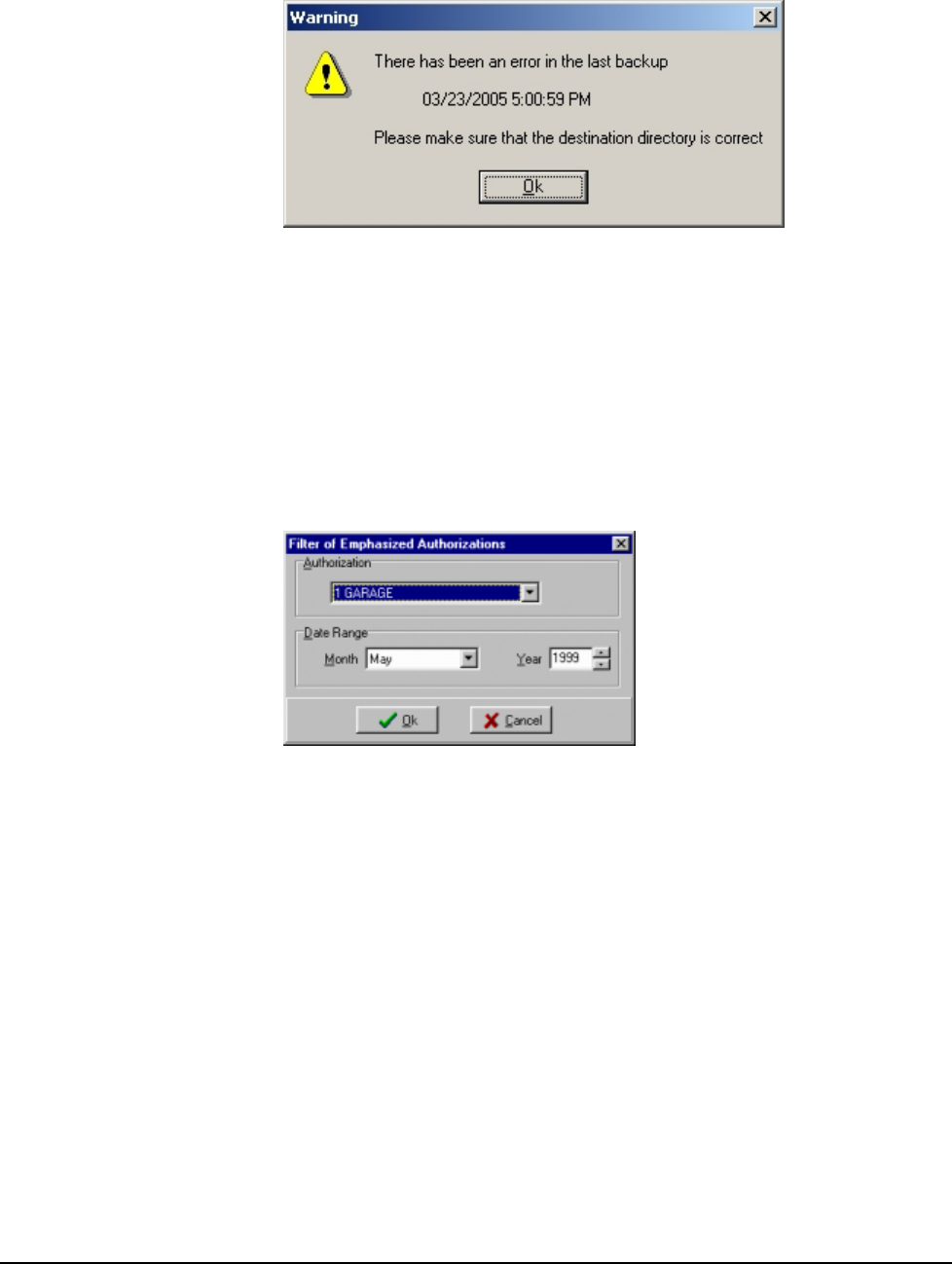
54 • Software - HT24W / HT28 Smart Onity HT24W / HT28 Smart
Status Bar Warning user logs into the system.
This error will occur if the destination directory is incorrect or inaccessible, or if
there are errors in the database. For help with this error, contact Onity Technical
Support or your Distributor.
Emphasized Authorizations Data
The sale of certain amenities provided by your hotel through the use of special
authorizations, called Emphasized Authorizations, can be tracked by the Onity
system. You can generate reports of ‘per day’ usage of these amenities based on
Check-In and Check-Out dates.
Generating Reports
To generate an Emphasized Authorization report, follow these instructions.
1. Select Emphasized Authorizations from the Maintenance menu.
2. Select one authorization from the list of Emphasized Authorizations for
your hotel.
3. Select the month and year of the data for the report.
4. Press the ENTER key or click OK.
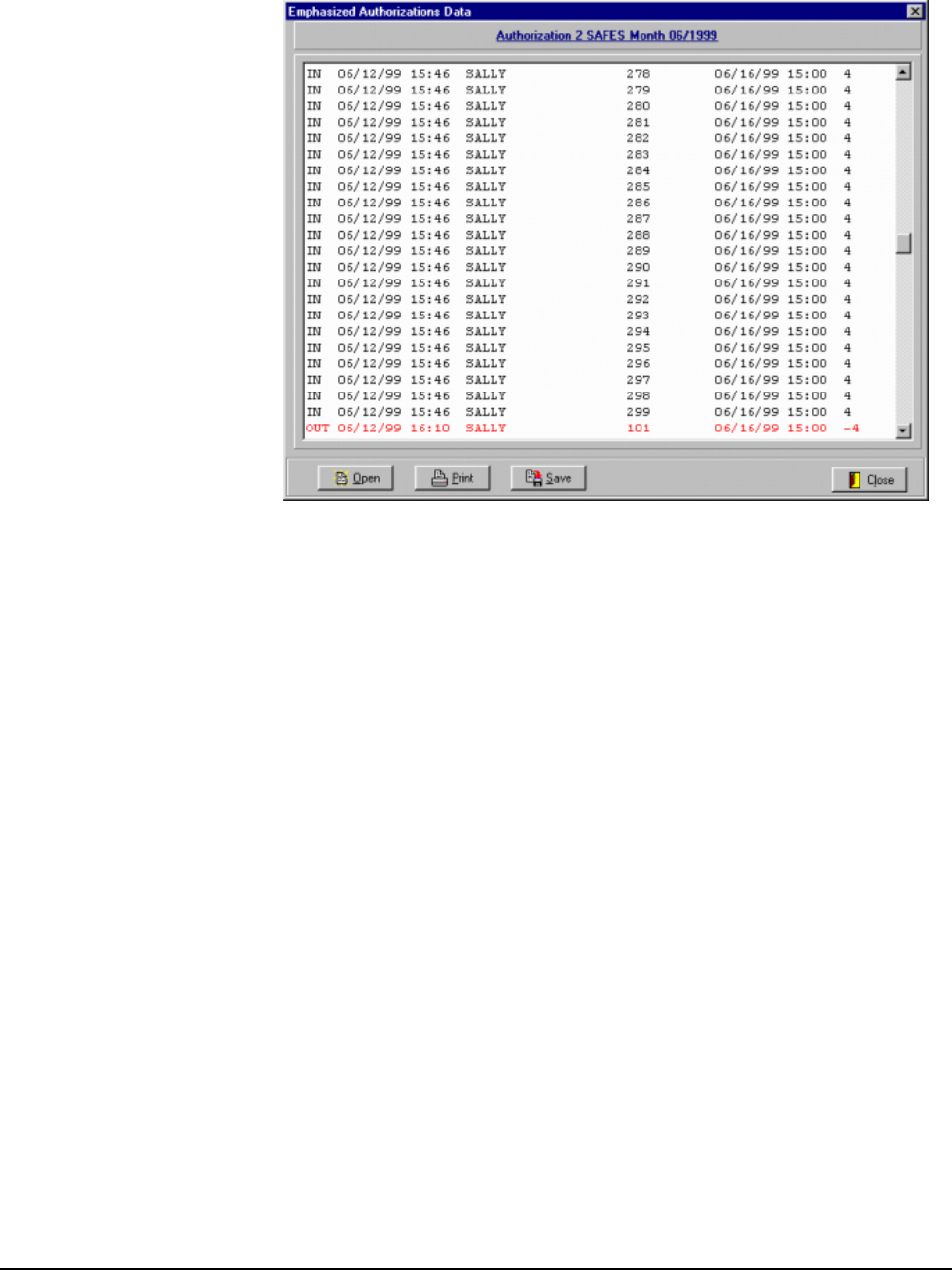
Onity HT24W / HT28 Smart Software - HT24W / HT28 Smart • 55
What it Means
The Emphasized Authorization report contains enough information to accurately
track the usage of an amenity on a ‘per day’ basis. Each line in the report shows:
• The Check-In date and time.
• The operator that ‘sold’ the amenity during the Check-In process.
• The room number of the card with the specified authorization.
• The expiration date and time of the card.
• The total number of nights the card was valid for the amenity.
If a guest leaves before the expiration date on the card, it is important to perform the
Check-Out operation. This will credit the guest for any unused nights. Early Check-
Outs will be designated in red by a negative number of nights in the report.
The report can be printed or saved to a file so that it can be imported into another
system or examined at a later time.
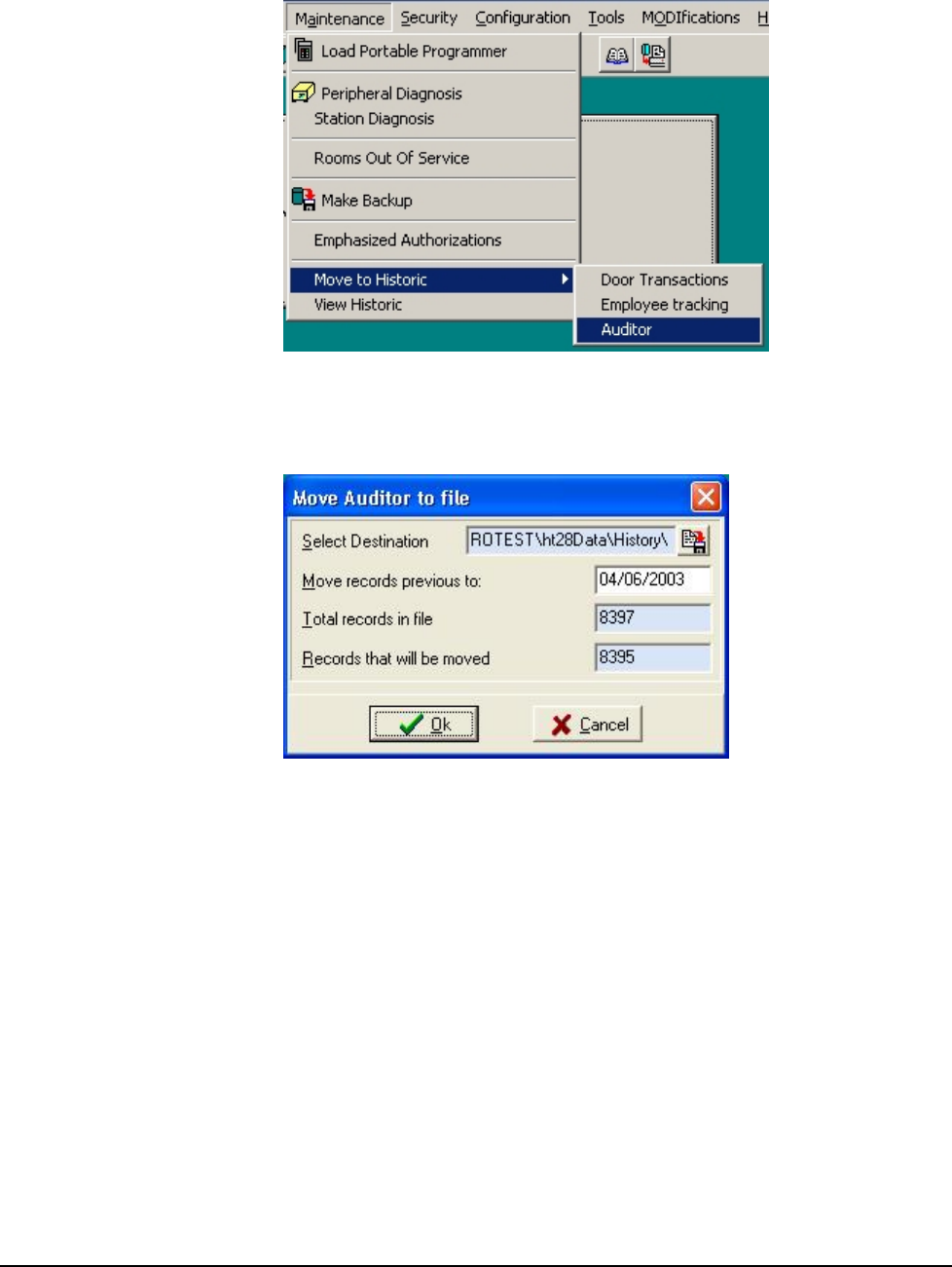
56 • Software - HT24W / HT28 Smart Onity HT24W / HT28 Smart
Move to Historic
If desired, certain auditor databases can be archived to text files by using the Move
to Historic feature. This will not only move the records to a text file, it will also
erase those records from the live database.
Select Move to Historic, then the type of data to move to historic.
Select the destination folder and name the file, then select the cut off date for moving
the data. All records previous to the data entered will be archived and deleted from
the live database.
Once a record has been moved to historic, it can still be viewed by selecting View
Historic from the Maintenance Menu; however, there is no indexing or filtering
capability on this data.
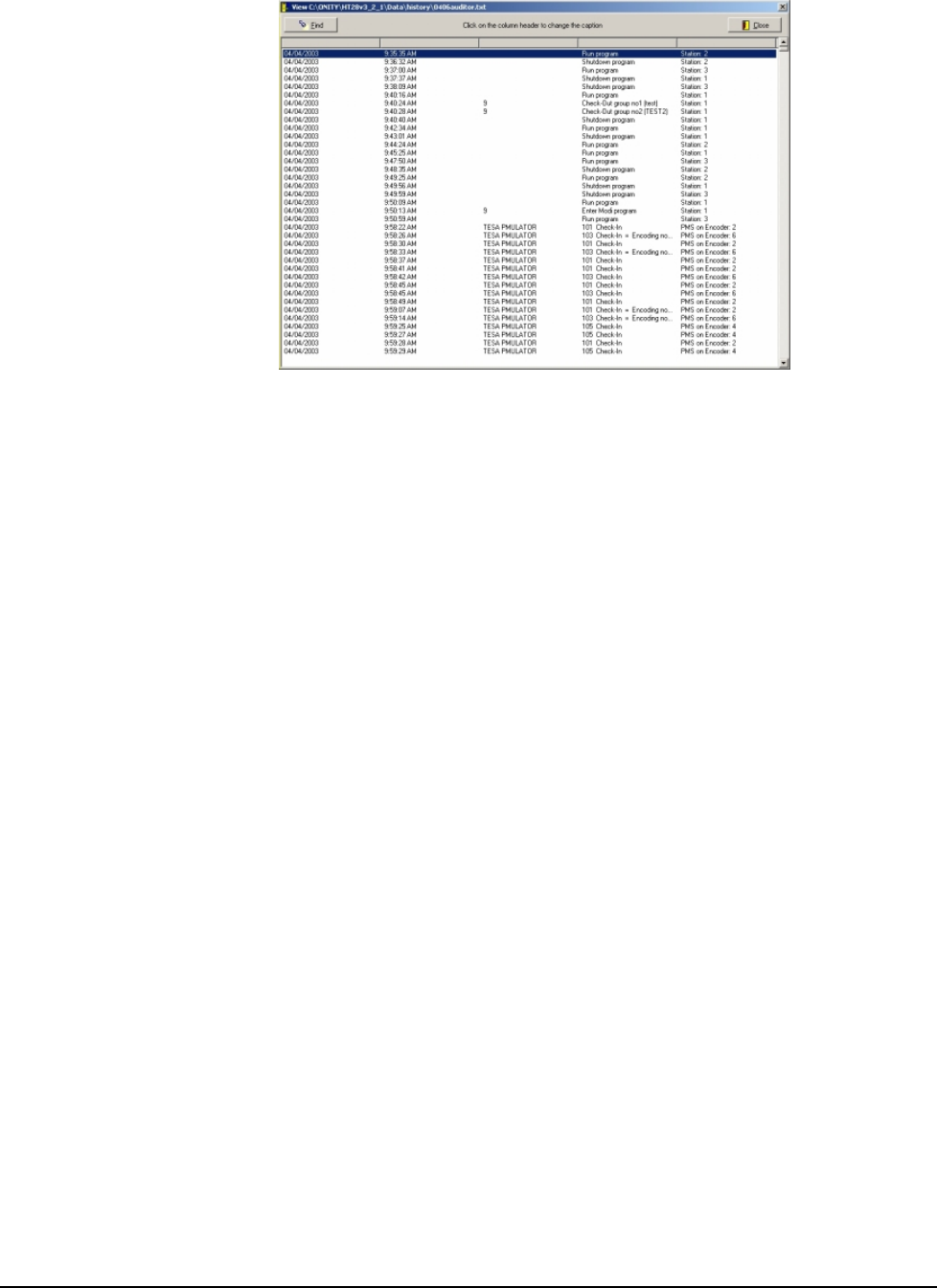
Onity HT24W / HT28 Smart Software - HT24W / HT28 Smart • 57
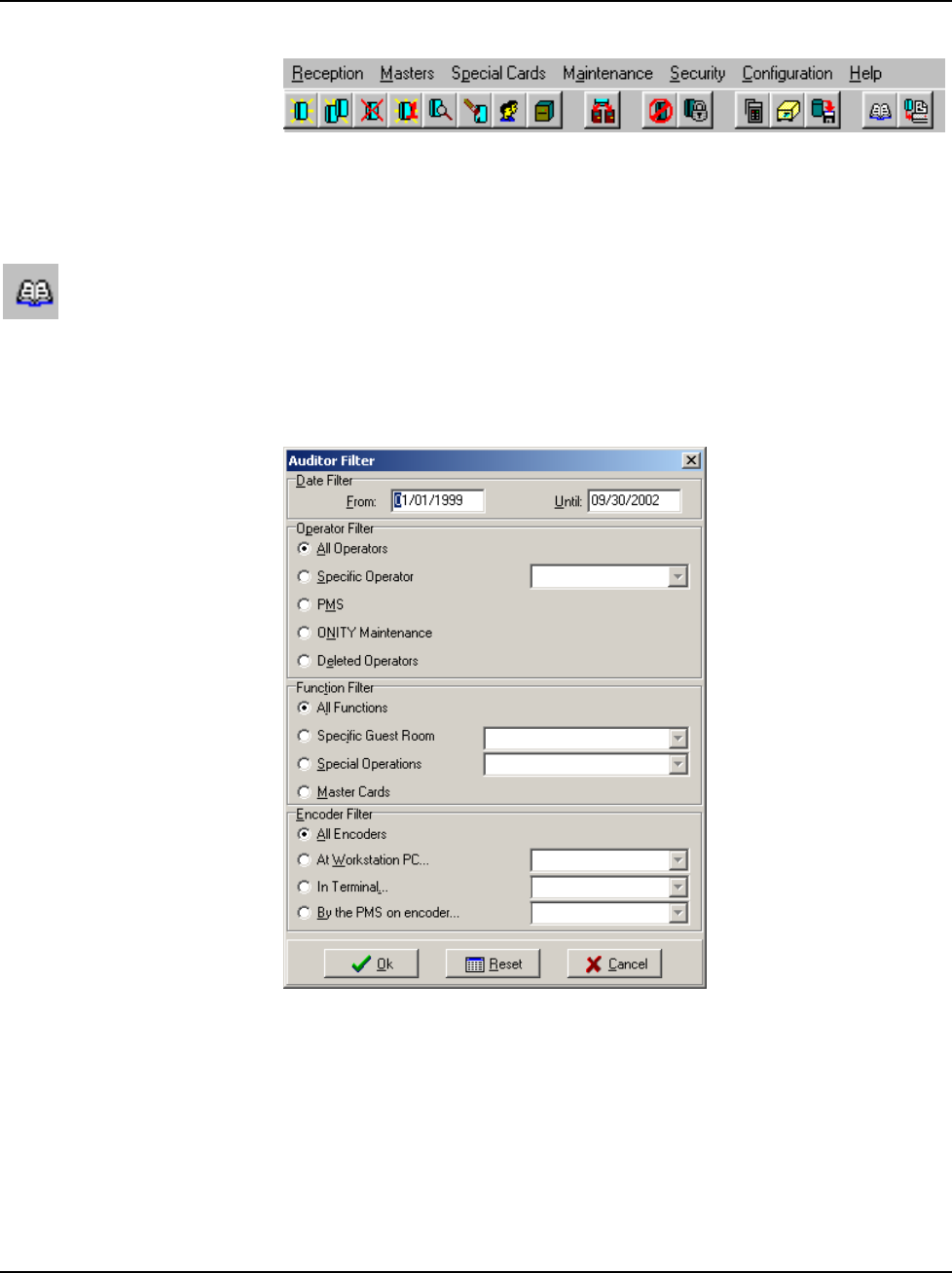
58 • Software - HT24W / HT28 Smart Onity HT24W / HT28 Smart
Security Menu
The Security Menu contains the functions most helpful in monitoring and
maintaining the security of the system and locks.
System Auditor
System Auditor
This function is used to view the transactions that have occurred on the computers.
The system records all the transactions that have occurred in the system, who made
them, and when they were made. These transactions may be viewed on the screen, or
printed out.
To view the System Auditor, click the System Auditor Tool.
System Auditor Filter
To generate an audit report, perform the following steps:
1. Select System Auditor from the Security menu or click on the System
Auditor Tool.
2. The software has the ability to show you only the audits you wish to
see. To select audits from a particular time period, enter the dates in
the Date Filter section. The default dates will show you the whole
history of your system.

Onity HT24W / HT28 Smart Software - HT24W / HT28 Smart • 59
3. The Operator Filter section allows you to view the audits from a
particular system operator.
• All Operators shows you the operations performed by any
operator, current or deleted, on your system.
• Specific Operator will show only the operations performed by one
particular operator selected from the pick list.
• PMS shows any operations performed as a result of a Property
Management System request.
• Onity Maintenance shows any operations performed while a Onity
trainer or technician is logged into your system.
• Deleted Operators shows any actions performed by operators who
are no longer active in your system. This allows you to
immediately secure your system and analyze the auditor at a later
time.
4. With the Function Filter, you can view only the operations you wish to
see. For example, you may only wish to view the system history for
room 101.
• All Functions will show any operation made on the system.
• Specific Guest Room will show only operations regarding a
particular guest room, selected from the pick list.
• Special Operations shows operations that are not related to
guestrooms, such as encoding a programming card. Select a
specific operation from the pick list.
• Master Cards shows operations regarding any master card
function. Note that changing a generic master code and encoding
master canceling cards must be viewed with the Special Operations
option.
5. The Encoder Filter will allow you to view the transactions of a specific
workstation, terminal, or PMS encoder.
• All encoders will show transactions regardless of location.
• At Workstation PC - will show any transactions at a specific
workstation computer, selected from the pick list.
• At Terminal - will show any operations performed at a specific
HT22i or HT24i terminal encoder, selected from the pick list.
• By the PMS on encoder - will show operations of a specific PMS
encoder, selected from the pick list.
6. When all of your filters are selected, click the OK button and the
software will combine all of your criteria and display a report.
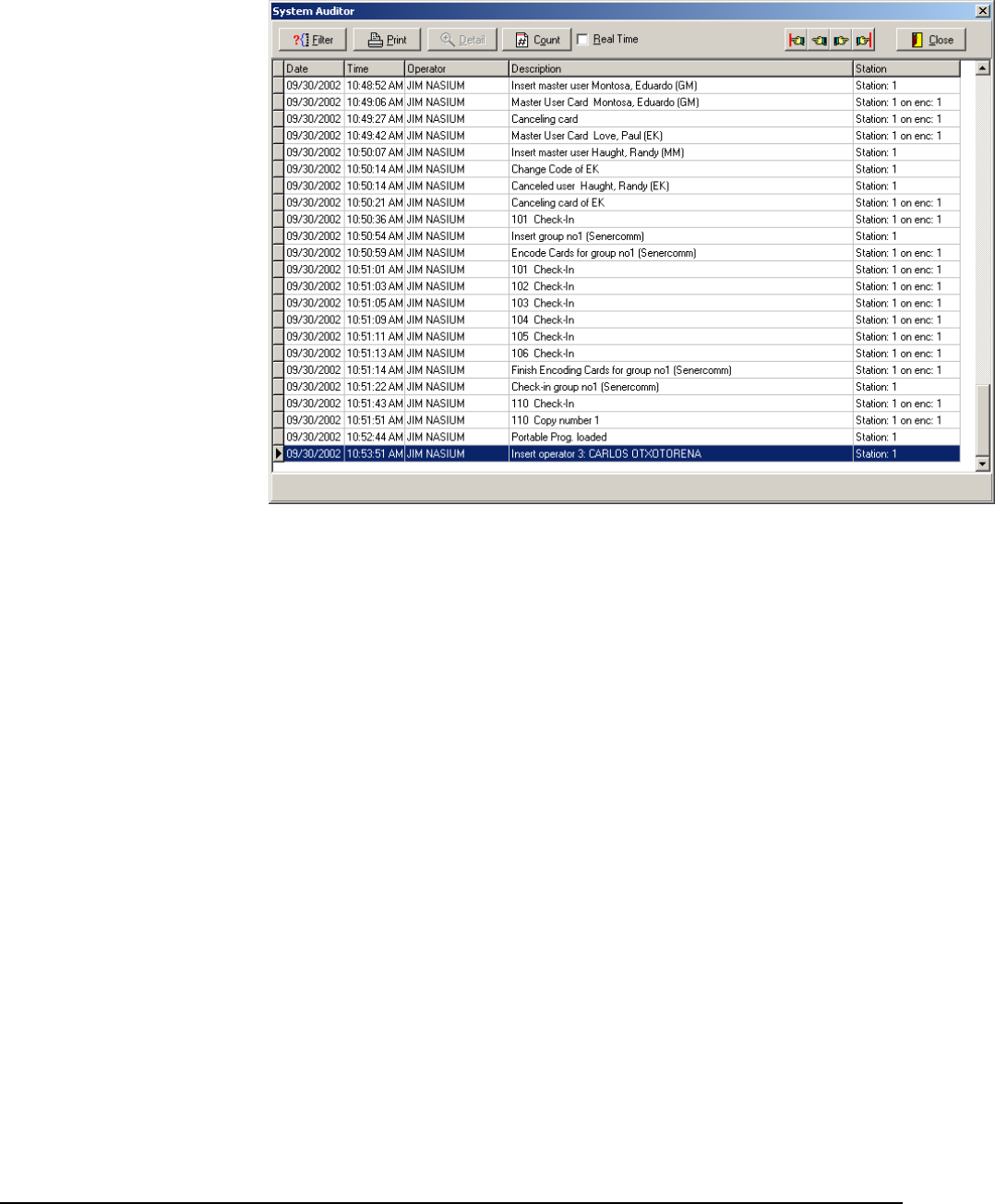
60 • Software - HT24W / HT28 Smart Onity HT24W / HT28 Smart
System Auditor Report
The System Auditor Report shows all of the transactions that matched the criteria set
up in the Filters window. If the list does not contain the information you are looking
for, you can adjust the filter at any time by clicking the Filter button.
The report shows the date, time, operator, operation, and location of each transaction.
If the transaction is a New Guest Check-In or a Guest Copy, the Details button will
show all the attributes of the card, including expiration date, authorizations, and
special privileges encoded on the card.
N
ote: If you need to scroll
through a long list, turn the
R
eal Time feature off.
You can view a Real Time report of transactions if you check the Real Time check
box. As soon as a transaction takes place that fits your Filter criteria, an entry will
appear at the bottom of the list. The list will refresh every few seconds even if there
are no new events. After each refresh, the last transaction will be selected.
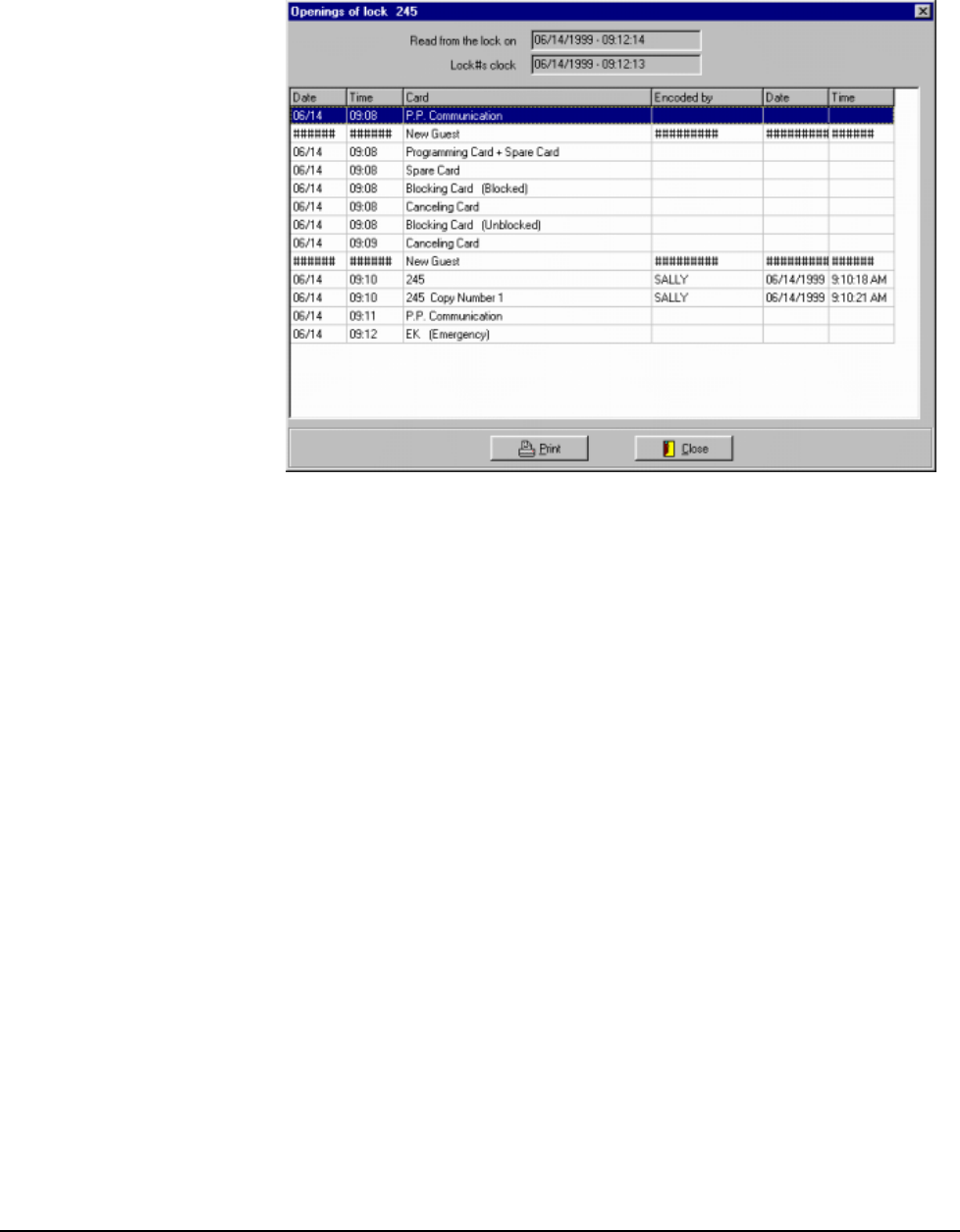
Onity HT24W / HT28 Smart Software - HT24W / HT28 Smart • 61
Lock Openings
This function is used to display or print the audit trail from a guestroom lock or off-
line card reader. This data is retrieved from the locks using the portable programmer.
To view the openings of a lock, follow these steps:
1. Connect the portable programmer and turn it on.
2. Select Lock Openings from the Security menu.
3. A list will appear with all of the locks that have been read by the PP. If
you read a lock more than once, there will be two entries in this list.
Select one entry and press ENTER or click the Read button.
4. Now a window will appear with all of the recorded events from the
lock you selected. You can view the whole list on screen or print it for
inspection.
To view the openings record of another lock, click the Close button and return to
Step 3 above.
Door Transactions
This function is used to display or print the audit trail from an on-line card reader or
a lock whose auditor has been retrieved by the portable programmer. The audit trail
of the on-line reader will include both valid access entries and invalid access
attempts.
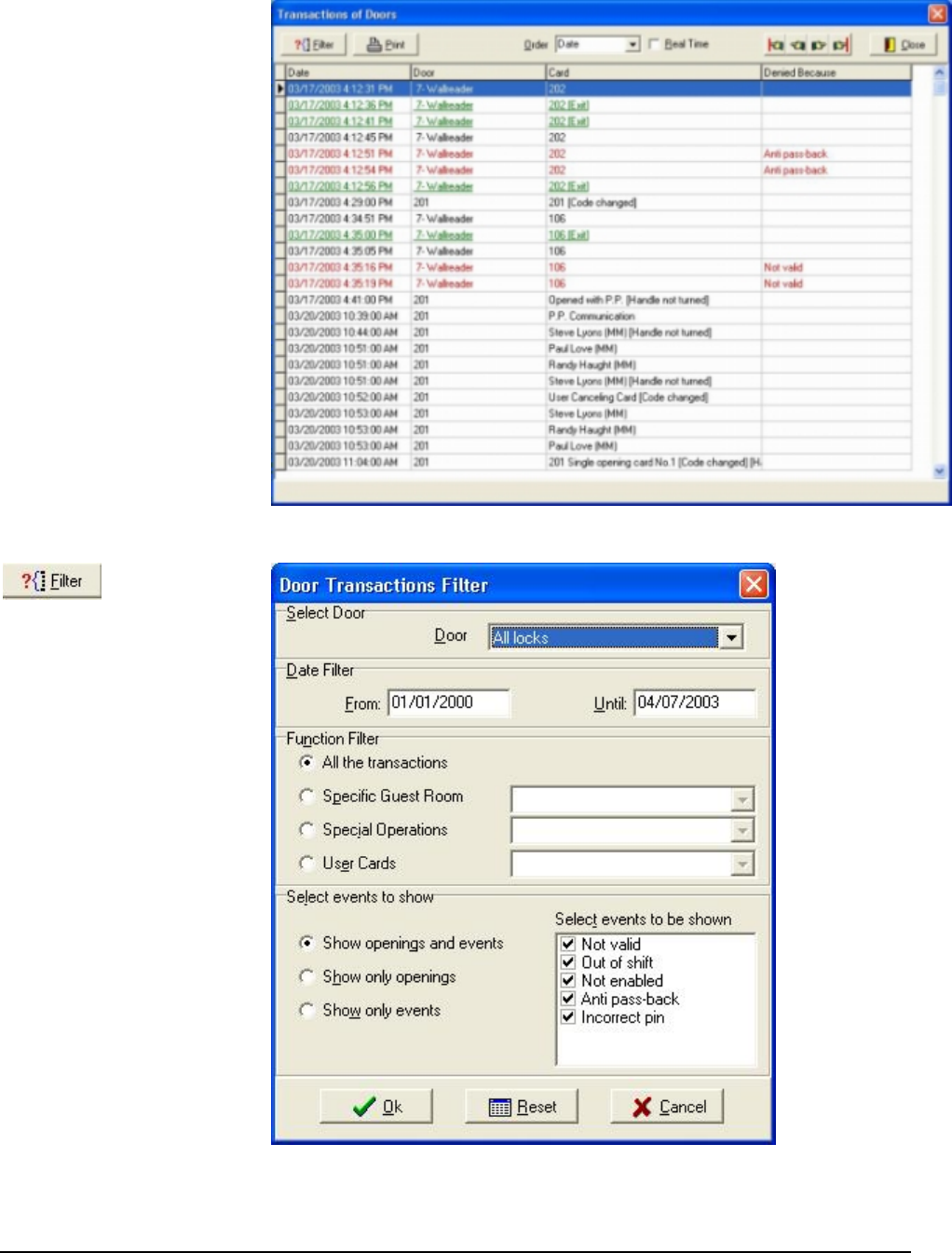
62 • Software - HT24W / HT28 Smart Onity HT24W / HT28 Smart
Filtering the Door Transactions Report
Filter Icon
Follow these steps to set up the definition of the openings you wish to see:
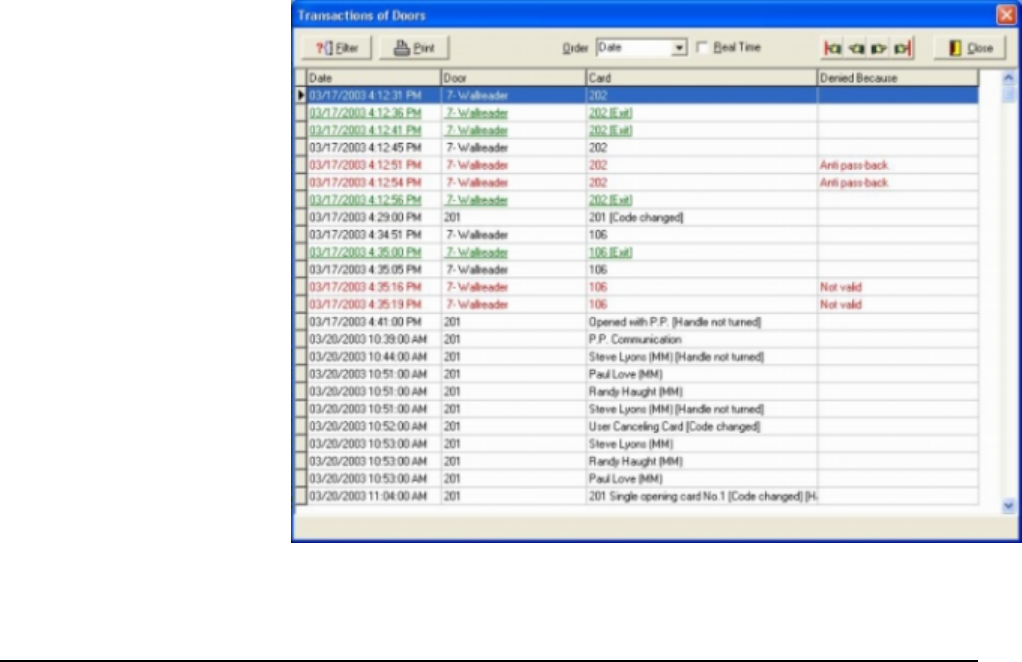
Onity HT24W / HT28 Smart Software - HT24W / HT28 Smart • 63
1. Select Door Transactions from the Security Menu. Then select the
Filter button
2. Use the drop down box next to Door to select the door or doors you
would like to see..
3. Using the date filter, you can limit the openings you see to only those
in the time frame that interests you.
4. The Function Filter can further limit your search to only those openings
that interest you. You can view all openings, only the openings for a
particular guest room, special operations, or openings of a particular
master card. Special operations include the use of the Exit Button,
Spare Cards, Programming Cards, Canceling Cards, and other
operations that might interest you. All available options are included in
the selection list.
5. Select whether you want to show all transactions, only openings, or
only events. Events include cards denied for many reasons. You can
select which types of events you want to see by checking the boxes to
the right of the screen.
6. When you are satisfied with your filter criteria, click the OK button to
view the openings. If the list of openings does not contain the event
you were searching for, you can modify your filter at any time. To
reset all the filters back to the default, click the Reset button.
The Openings List
The openings list is a table showing all of the openings from the selected peripheral
that match your filter criteria. The table shows the date, time, and which card was
used.
The table shows the openings in Real Time. This means that if someone uses their
card in this peripheral, you will see a record of the opening within moments of the
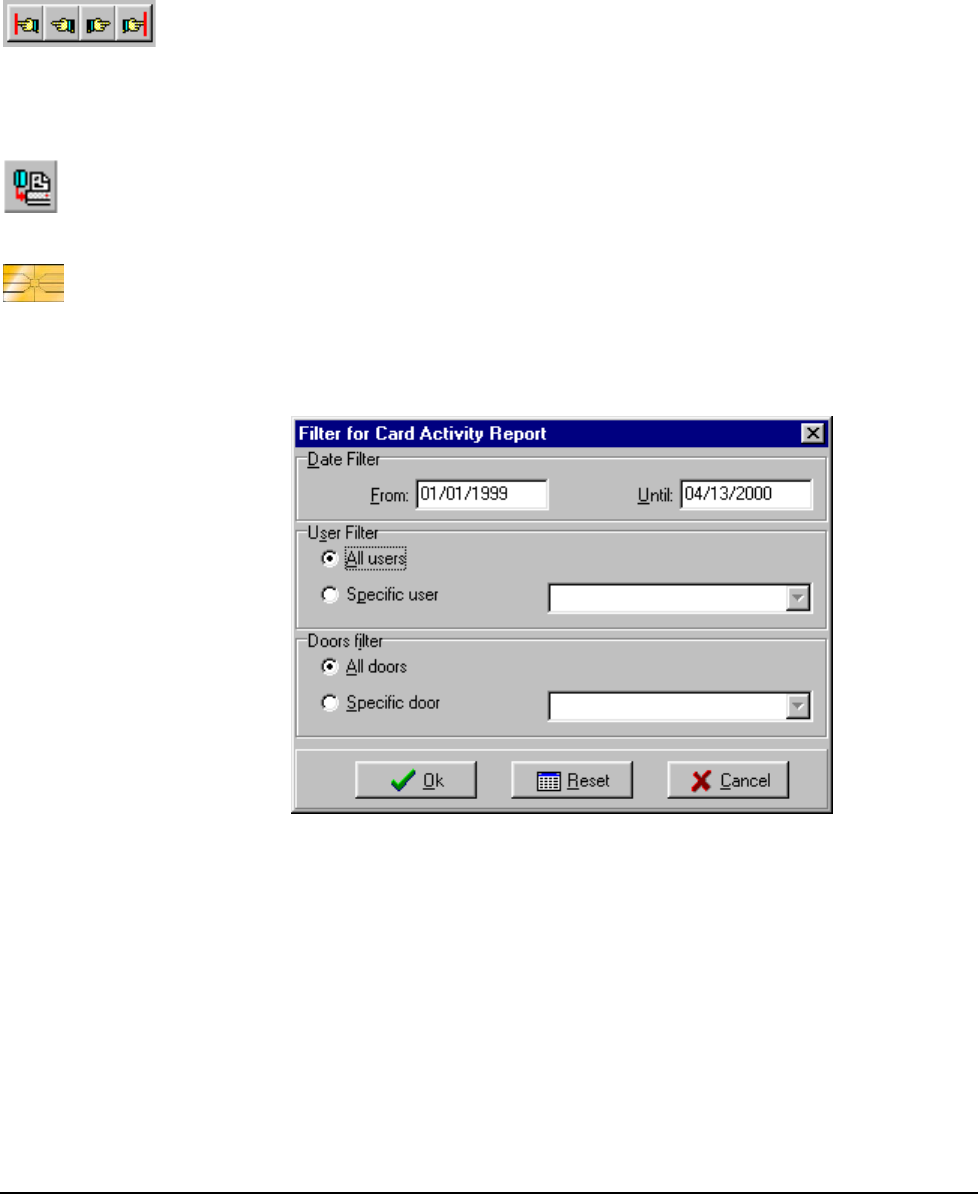
64 • Software - HT24W / HT28 Smart Onity HT24W / HT28 Smart
actual event. The system will scan the peripheral every few seconds, and any new
openings will be added to the bottom of the list. If your list is long, you may wish to
turn this feature off while you look at your list so that the list is not changing. To
turn off the Real Time feature, click the check box at the top of the window so that
there is no check in the box.
N
avigation Buttons
With the Real Time feature turned off, you can use the special navigation buttons to
move to the first record at the top of the list, to the previous record, to the next
record, or to the last record at the bottom of the list.
To print your list, click on the Print button at the top of the window.
Card Activity Report
Card Activity Report
Available only with
H
T28 Smart!
When smart cards are used by guests or staff in an HT28 smart lock, the lock can
write information onto the smart card after each use. This is one of the most
powerful features of the HT28 smart locks. This information can be very useful in
recognizing problems in the locks or with the cardholders. The information includes
which doors the card has been used to open, when those doors were opened, and if
those doors had low batteries or other maintenance issues.
To see a report of all the collected card information select Card Activity Report from
the Security Menu or click the tool.
Filtering the Card Activity Report
The card activity report can be filtered to show only the data that is interesting to
you. You can view the activity of a particular master user, or the traffic through a
particular door, or any combination. The report can also be filtered by date so that
you get exactly what you want to see.
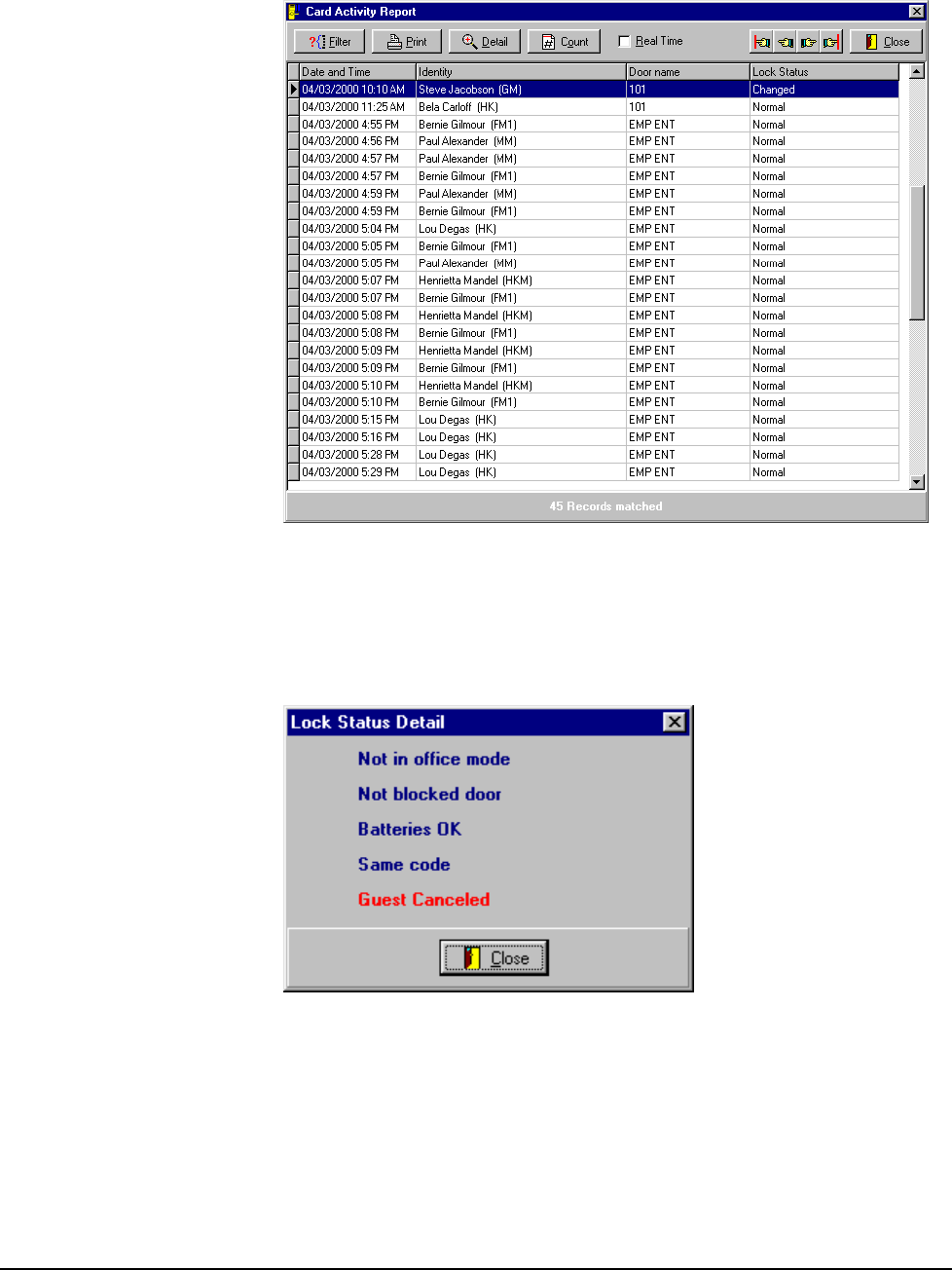
Onity HT24W / HT28 Smart Software - HT24W / HT28 Smart • 65
The Report – What It Means
The Card Activity report shows a lot of useful data. Perhaps the most interesting is
the time and date that a user unlocked a door. This data is shown with the user's
name and the type of master card they used, the door name, and a lock status
indicator. If the lock status indicator shows 'Changed' you can view details of the
parameters stored inside the lock memory.
Lock Status Detail
The lock status indicator will show if anything has changed in the parameters stored
inside the lock. If all parameters are normal there are no details to show. Each
parameter is explained below.
• Office Mode status – reports whether the lock is in office mode or not.
• Blocked status – reports whether the door has been blocked with the
blocking card
• Battery status – reports if the battery level is good.
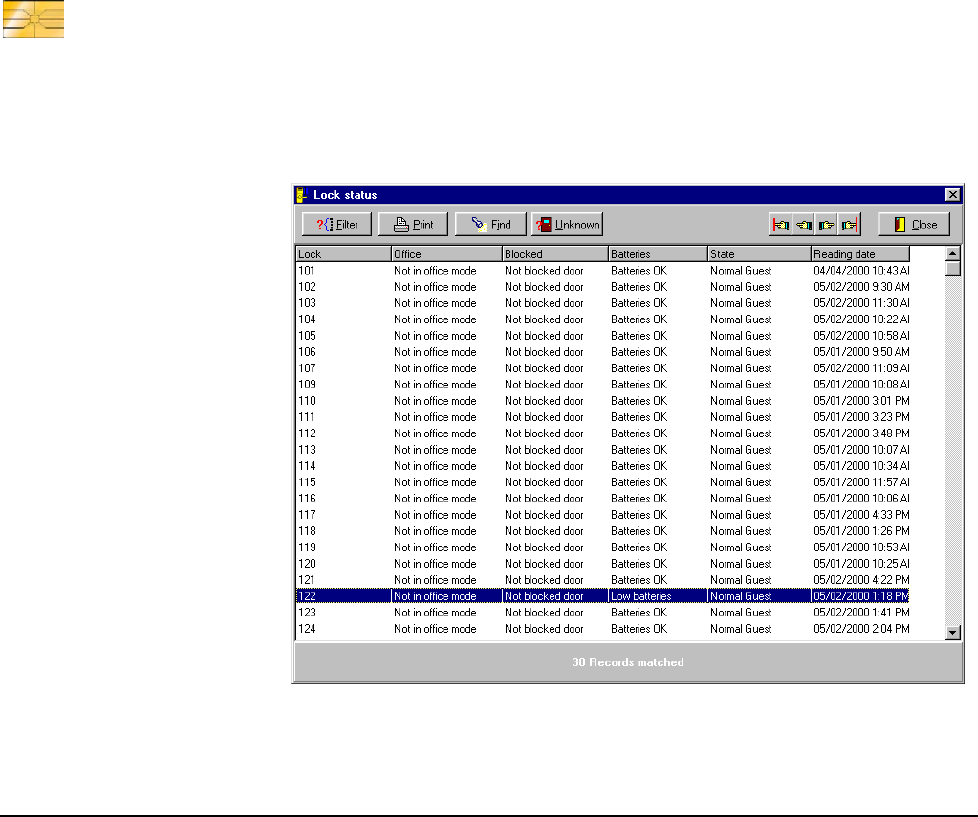
66 • Software - HT24W / HT28 Smart Onity HT24W / HT28 Smart
• Code status - reports whether the card that was used has a new code or
the same code. When a lost master card is replaced, the new card gets a
new code.
• Guest status – reports whether a guest canceling card has been used in
the lock, if a spare card is currently being used, if a suite card is being
used, or if a normal guest card is being used.
Other Options – Real Time
If you are using several revalidation units around your property, the system
continually checks for updates from the devices. Each time an update occurs the
new information is placed at the bottom of the list.
If you want to scroll through the list be sure the Real Time box is unchecked so your
data will not be changing while you are browsing through it.
Other Options – Count
By clicking the Count button you can see the number of records that matched your
filter criteria.
Lock Status Report
Available only with
H
T28 Smart!
The lock status report will show you the most recent information about the locks in
your hotel based on the collection of all of the data on the smart cards carried by the
master users or guests.
Although in most cases you only need to see the most recently collected information,
this report will show you up to 9 records per lock. For example, you may want to
view more than one record to know if you have had low battery indications for
several days.
The report displays the following information:
• Room number

Onity HT24W / HT28 Smart Software - HT24W / HT28 Smart • 67
• Office function status
• Blocking card status
• Battery level
• Guest status - reports whether a guest canceling card has been used in
the lock, if a spare card is currently being used, if a suite card is being
used, or if a normal guest card is being used.
• Reading Date – this is the most recent opening known to the system.
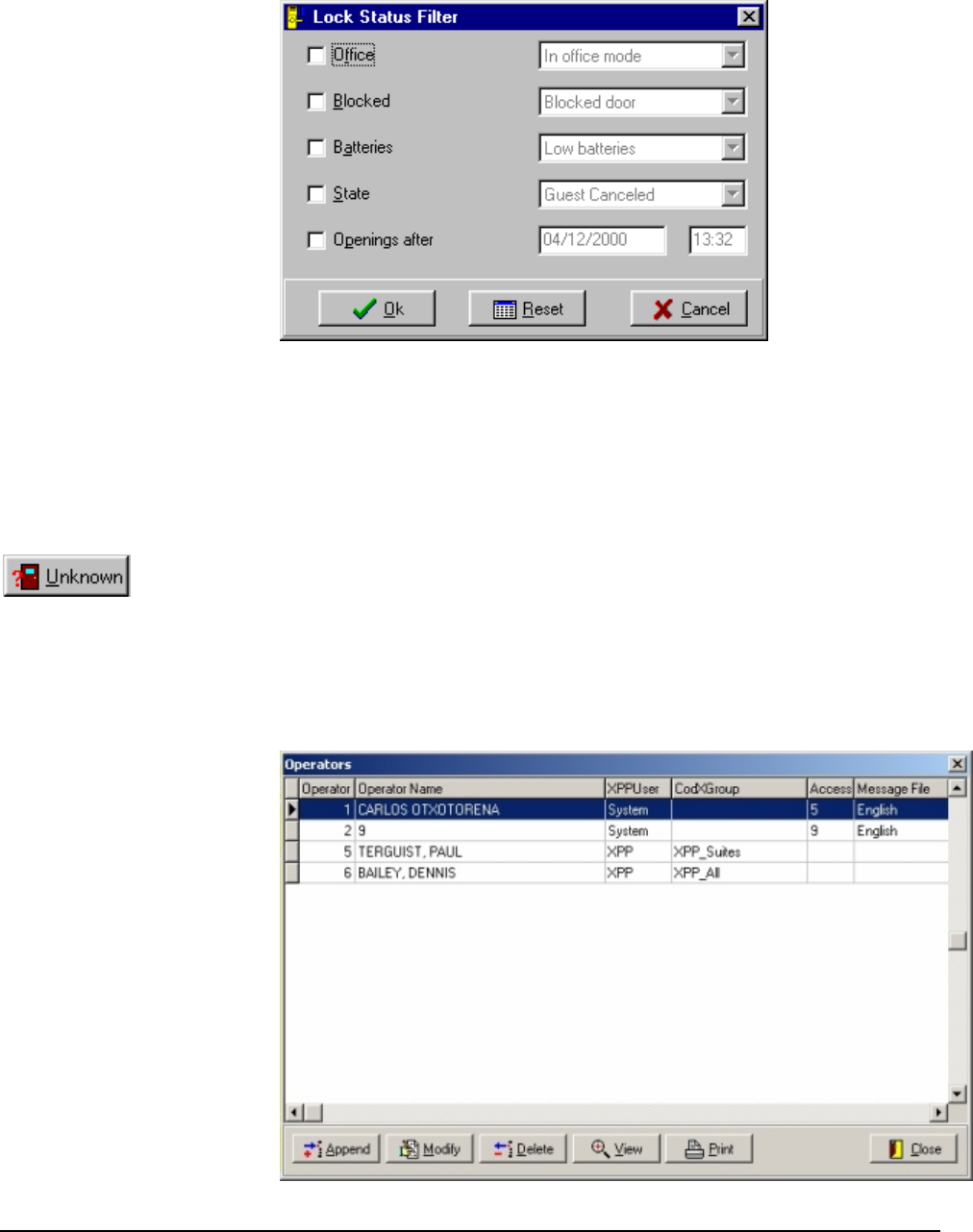
68 • Software - HT24W / HT28 Smart Onity HT24W / HT28 Smart
Filtering the Lock Status Report
You can use this filter to view only the records with certain features, such as low
battery or only reports from this morning.
To narrow the view, check one or more of the filter boxes. Then select the records
you want to see from the list boxes on the right side of the screen. If a check box is
unchecked, the report will show all records for that category.
Unknown Rooms
Unknown button
In some cases there may be rooms that do not appear in the list so their status is
unknown. Maybe the rooms did not fit the filter criteria, or maybe the room is not
accessed very often and there is no reading in the system. If you want to see the
rooms that do not appear in the list, simply press the Unknown button.
Operators
This function is used to enter system operators, XPP operators, their passwords, and
their access levels into the system.
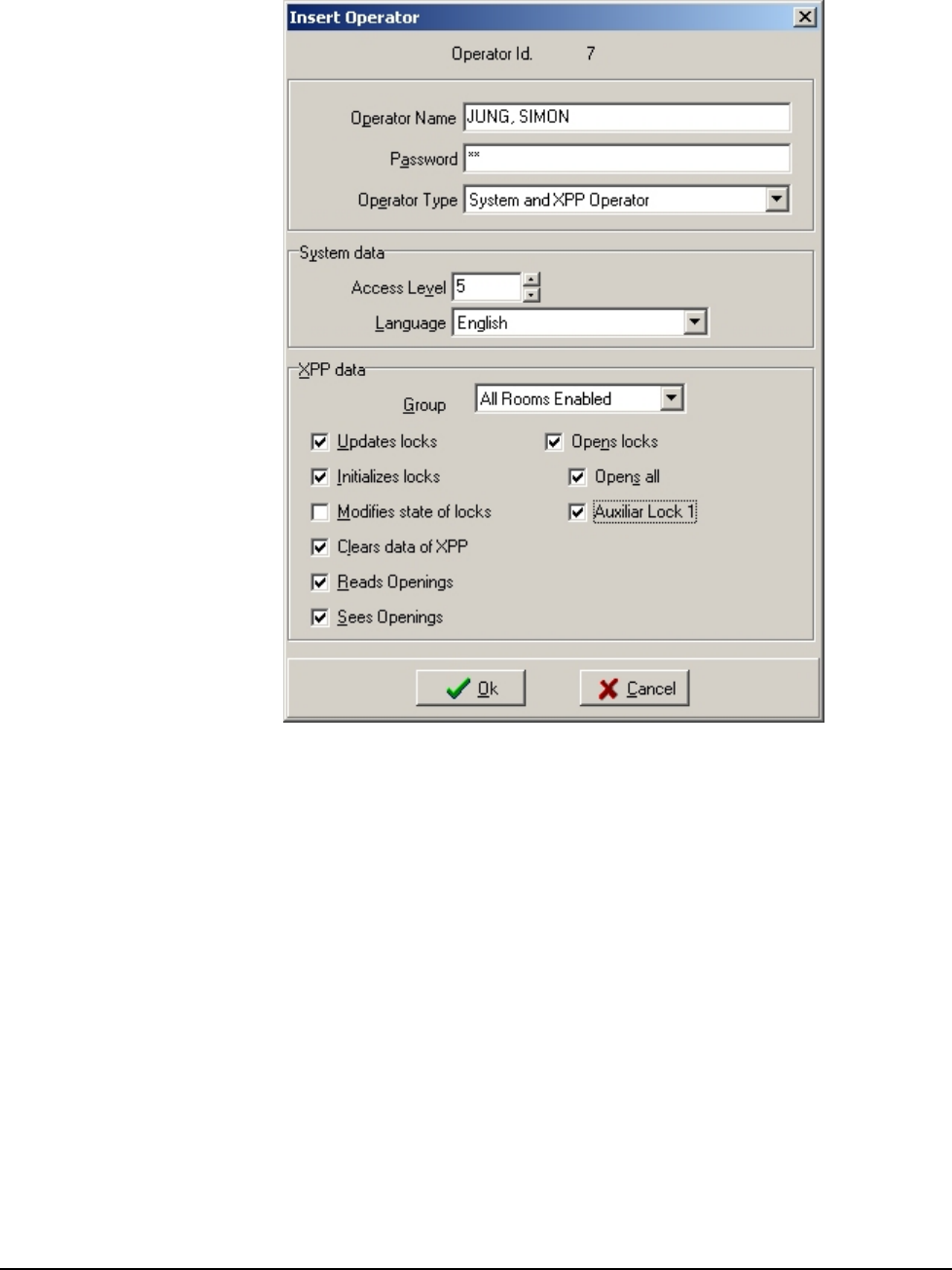
Onity HT24W / HT28 Smart Software - HT24W / HT28 Smart • 69
Adding Operators
To add a new operator to the system, perform the following steps:
1. Select Operators from the Security menu.
2. Click the Append button at the bottom of the Operators window.
3. Enter the operator’s name in the appropriate. Each operator must have a
unique operator name because this name is recorded in the System
Auditor.
4. Enter a password for this operator. Each operator must have a unique
password. If you enter a password that matches an existing password
you will get an error message.
5. Select the type of operator to setup. If this operator will have access to
the system, choose System operator. If this operator will be an XPP
user, choose XPP operator. If this user will be both a system and an
XPP operator, choose System and XPP Operator.
6. Next, choose the Access level and Language for this operator.
7. If this operator is an XPP operator, choose the appropriate XPP group
and select the XPP functions this operator will have access to.
8. Click OK when finished.

70 • Software - HT24W / HT28 Smart Onity HT24W / HT28 Smart
Modifying Operators
Click the Modify button to change the attributes of an existing operator. The steps to
change attributes are the same as those to add a new operator.
Deleting Operators
To delete an operator, select Operators List from the Security menu. Select an
operator from the list and click the Delete button. You cannot delete operators that
have the same level as you or a higher level. You may only delete operators with a
level lower than your own.
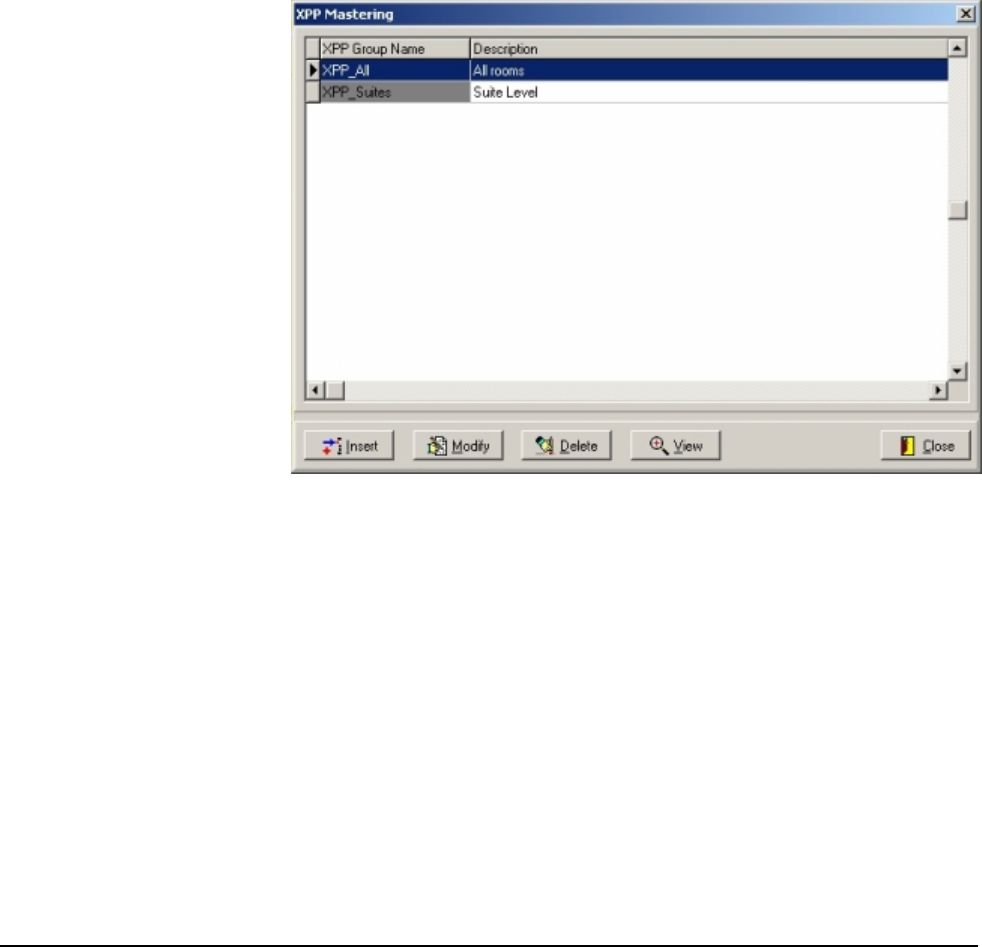
Onity HT24W / HT28 Smart Software - HT24W / HT28 Smart • 71
Operator Levels Required
There are nine levels
available, but in the US most
p
roperties only use five.
Operators in the system are only allowed to access certain menu items or functions.
This control is managed by the level of the operator and the level of the function.
The level required to use each function can be customized by the hotel management.
To view or modify the operator levels required to perform functions, select Levels
Required from the security menu. Every function is listed with the current level
required to access it. The functions are listed in the order they appear on the menus
starting with the Reception menu and working down and then across. Also included
in the list are some function buttons that are not in menus. Create New Master is an
example of one of these function button items. To change the level required to use a
feature, simply highlight the feature and type a new number between 1 and 9.
XPP Mastering
Select the XPP Mastering menu option to set up XPP groups. Doing this will allow
you to set up XPP operators that only have access to a certain group of rooms.
To set up an XPP group, select XPP Mastering from the Security Menu, then click
the Insert button.
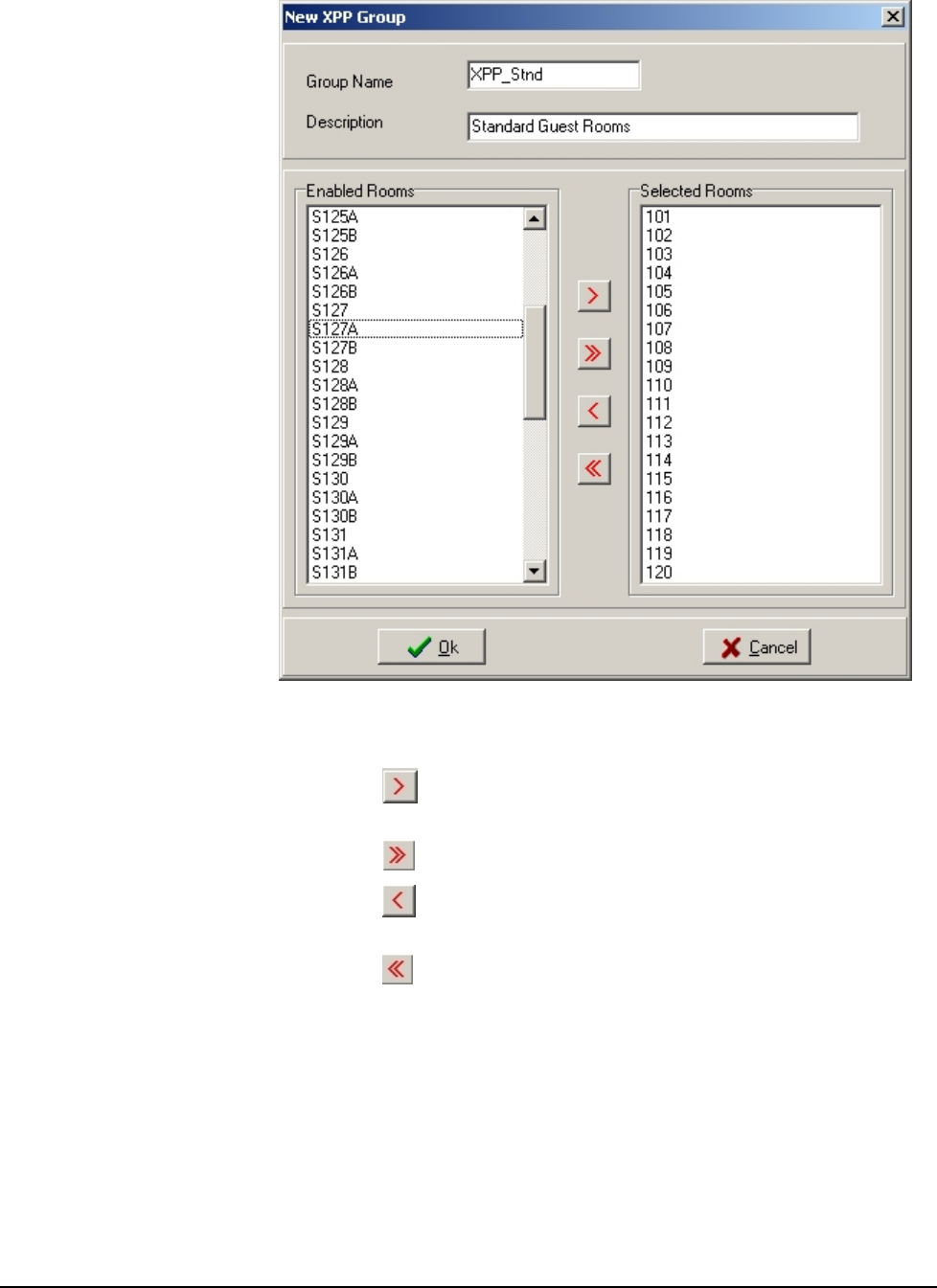
72 • Software - HT24W / HT28 Smart Onity HT24W / HT28 Smart
On this screen, key in the Name of the group and a description in the appropriate
fields. Next, select the rooms that belong to this group and click the right arrow
button. These selection buttons are described below:
• Use this button to select a single room, or to select all of the
highlighted rooms.
• Use this button to select all rooms.
• Use this button to deselect a single room, or to deselect all of the
highlighted rooms.
• Use this button to deselect all rooms.
Once the XPP groups have been configured, you can assign XPP operators to a
specific group.

Onity HT24W / HT28 Smart Software - HT24W / HT28 Smart • 73
Configuration
Language
The language option allows the system operator to view messages and screen text in
any of the loaded languages. To change the language of the system, simply select
the Language option from the configuration screen and pick a language from the list.
If a required language is not loaded with your system, contact a Onity representative
to check the list of available languages.
Change Date and Time
The locks in the system and most computers will adjust automatically for Daylight
Savings Time, but occasionally it may be necessary to update the time on your
computer. The Change Date and Time function will allow you to make updates
without exiting the system. Onity recommends that only high level operators have
access to this function because an incorrect time could prevent cards from opening
doors or prevent a PMS system from making cards at Check-In.
Station Configuration
There are a few parameters that must be set for your system to function properly.
These parameters can be adjusted by using the Station Configuration selection on the
Configuration Menu.
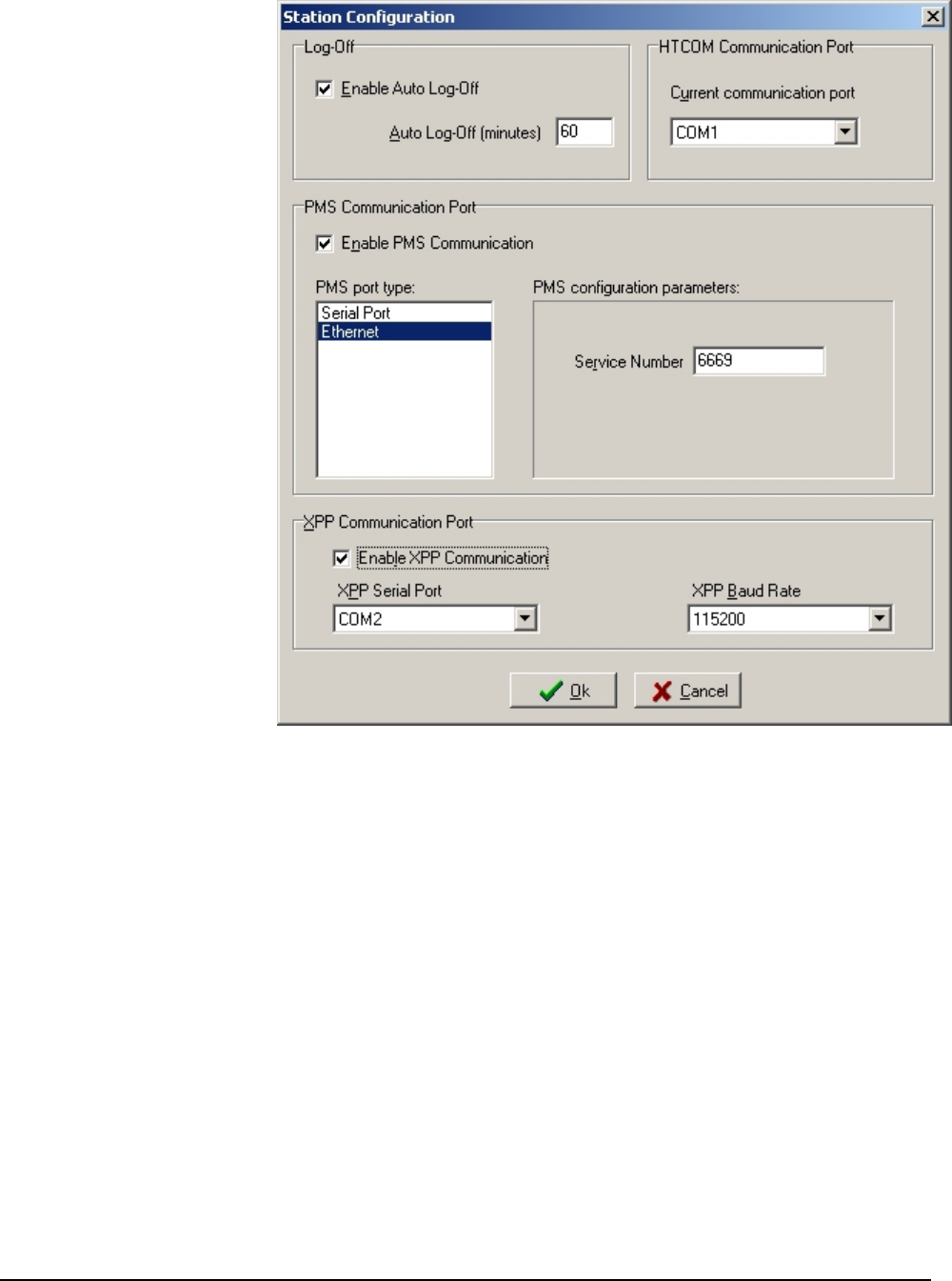
74 • Software - HT24W / HT28 Smart Onity HT24W / HT28 Smart
• Auto Log-Off – This option lets you choose whether the system will
log users out after a certain period of not being used. If the Enable
Auto Log-Off check box is selected, the system will lock the screen
after the number of minutes entered in the box below.
• HTCOM Communication Port – This is the serial port that the system
uses to control any encoders, PPs or other online peripherals. Encoding
cards is impossible if this parameter is set wrong.
• PMS Communications Port – This setting defines how the PMS is
connected to the Onity system. The port type setting defines if the
connection is through an RS232 serial connection or through TCP/IP
over an Ethernet connection. If the connection is serial, the port and
baud rate must be set to match the settings of the PMS system. If the
setting is Ethernet, the PMS system will need to know the port setting
in order to communicate properly.
• XPP Communication Port – This is the serial port that the system uses
to communicate with the XPP. In addition to selecting the port, also
select the XPP Baud Rate. Typically, this is set to 115200.
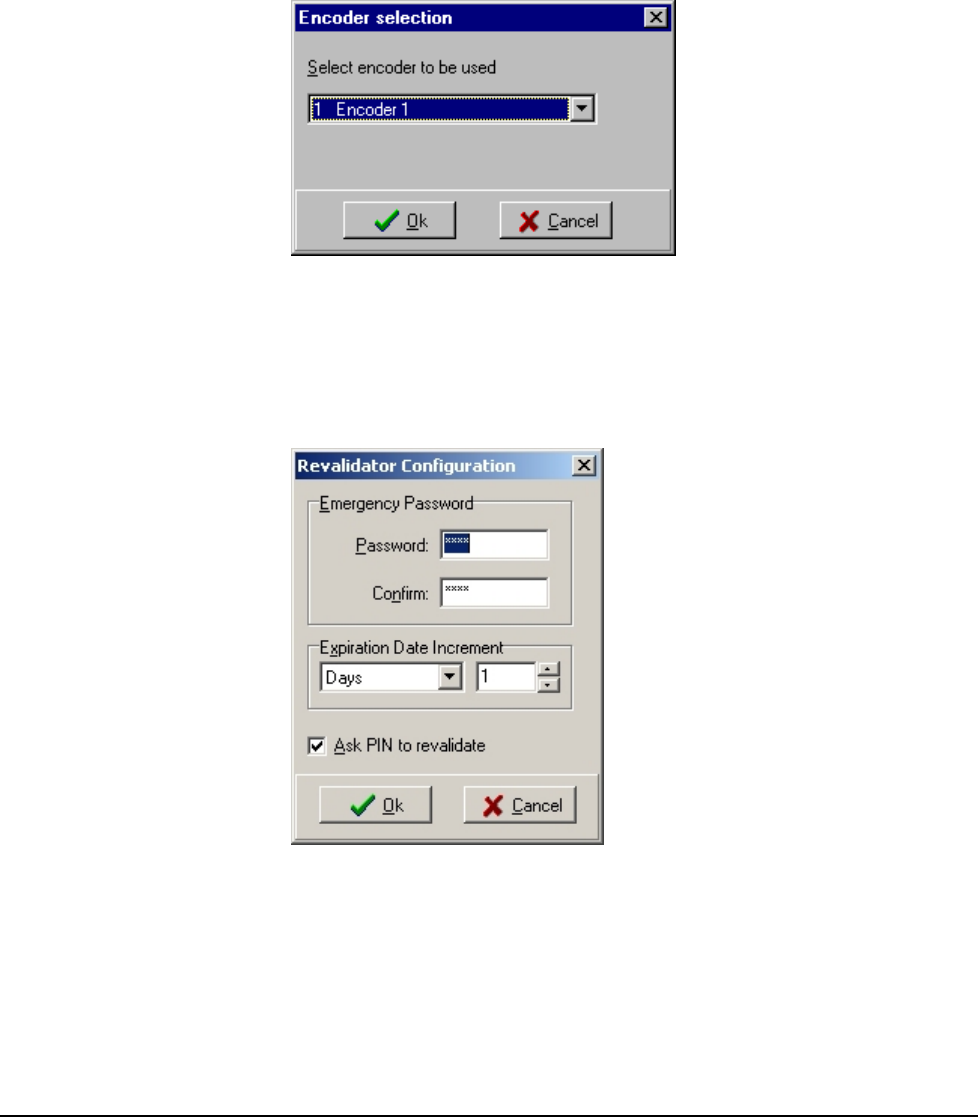
Onity HT24W / HT28 Smart Software - HT24W / HT28 Smart • 75
Change Encoder
There is a feature in the software that allows online devices like encoders and wall
readers to be connected to any Onity computer. Encoders connected to a workstation
computer can be terminal encoders or PMS controlled encoders. In previous systems,
a workstation computer could only control one encoder.
If using this system, you must declare which encoder each workstation will use
locally. Choose Change Encoder from the Configuration Menu, and select the
encoder to be used by the local workstation.
This encoder will be used when making keys from the workstation.
Config. Emergency Reval.
If your system uses the online revalidators, it is necessary to configure the way these
revalidators will operate in case of a system failure causing a loss of communication
between the PC and the revalidator.
To parameters that must be set are:
• Emergency Password – This is the password that must be entered at the
revalidator to enter emergency mode in the case of a loss of
communication with the PC. This password can be up to 8 alpha-
numeric characters long.
• Expiration Date Increment – If it is necessary to use the revalidators in
emergency mode, all users will use the same date increment. Choose

76 • Software - HT24W / HT28 Smart Onity HT24W / HT28 Smart
an increment that works best for your property. This increment can be
a number of hours or a number of days.
• PIN – Finally, you must decide if users will be required to enter their
PIN when operating in emergency mode.
Once communication with the PC has been reestablished, the revalidators will
automatically exit emergency mode and begin working as normal. If you have
disabled any users manually on the revalidators, you must do so again on the PC, as
these changes do not automatically update the PC.
Note: It is imperative that the Emergency Password be remembered. There is
no alternative way to enter emergency revalidation if the password is forgotten,
and your user keys will have no way of being updated.
Check-Out Warning
The system can warn you if you are about to perform a New Guest Check-In for a
room that has not Checked-Out. If you would like to use this feature, select Check-
Out Warning on the configuration Menu. If the feature is active, there will be a
check mark next to the menu item. To deactivate the feature, click again and the
check mark will disappear.
PMS Enabled
If your hotel has a Property Management System that is interfacing to Onity, the
PMS Enabled item on the Configuration menu must be checked. To change the
setting, simply click on the menu item.
Show PMS Communications
When troubleshooting a connection with a PMS, it is often useful to see the data that
flows between the systems. The Show PMS Communications window does this. All
of the valid commands that the system receives and all of the responses it sends to
the PMS are displayed here.
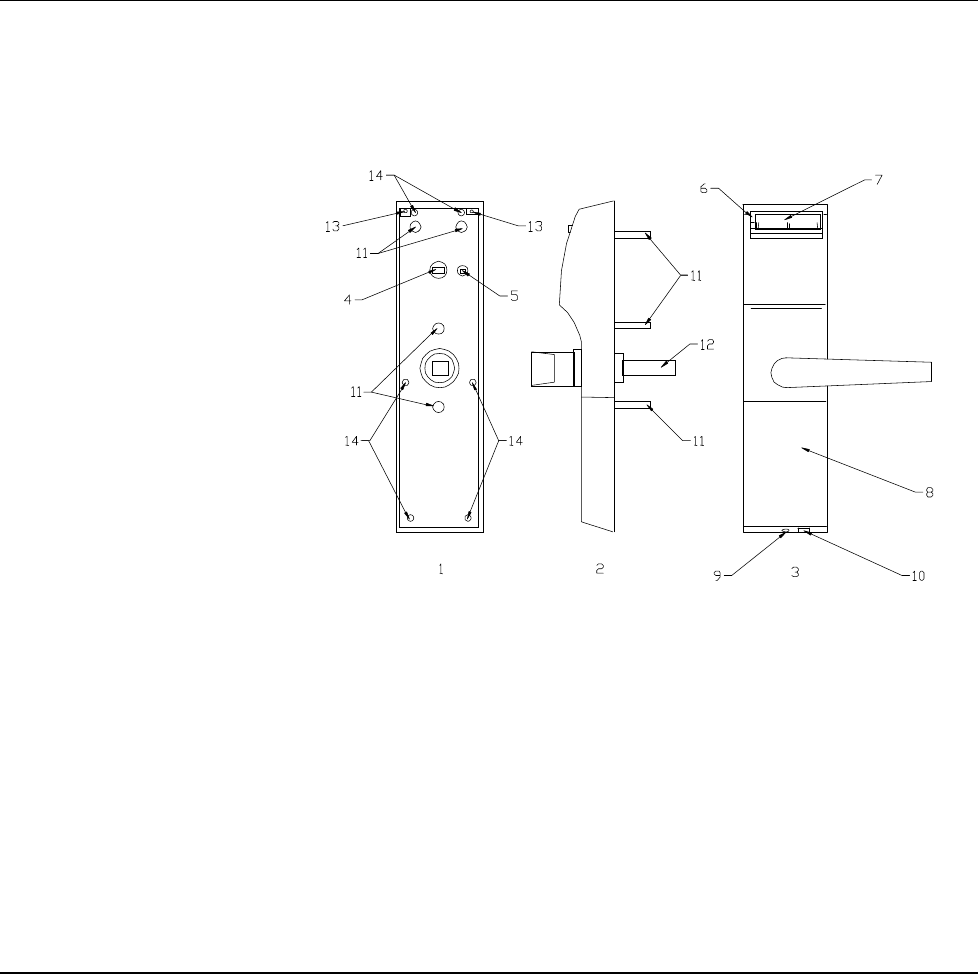
Onity HT24W / HT28 Smart Hardware • 77
Hardware
HT24W / ADVANCE (Magnetic) System Components
HT24 Magnetic Stripe Lockset
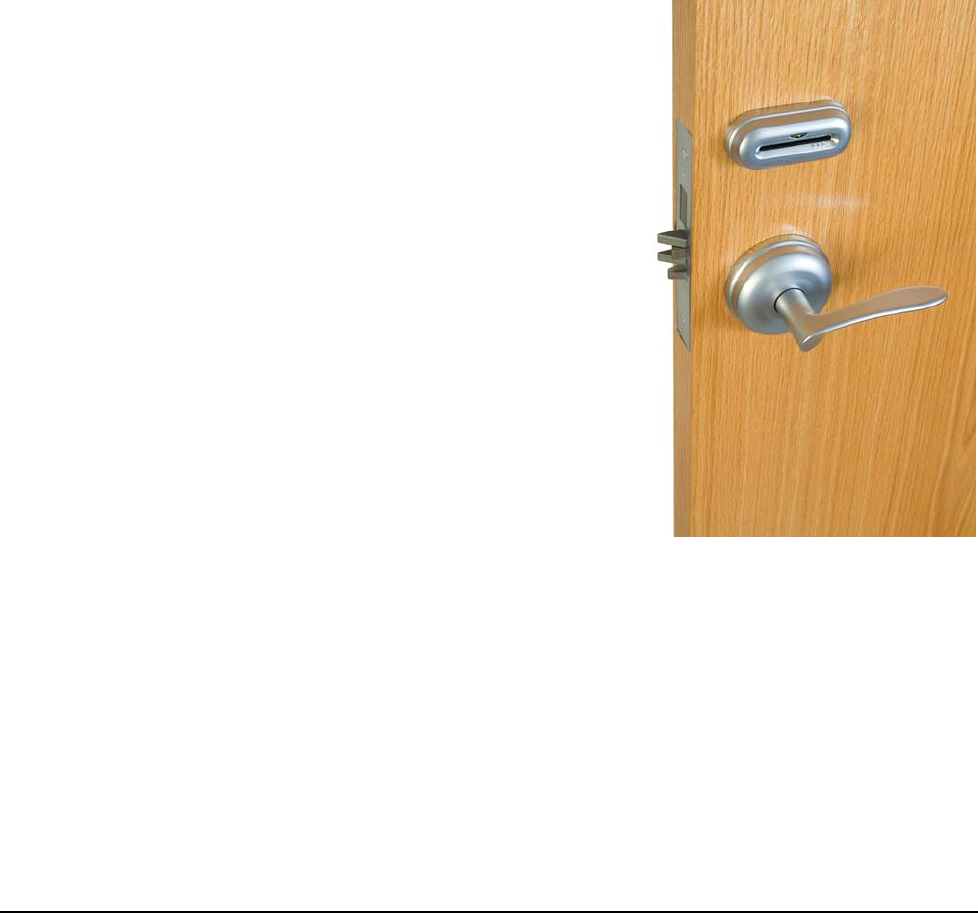
78 • Hardware Onity HT24W / HT28 Smart
1. Rear View 8. Battery Access Cover
2. Side View 9. Battery Access Cover Screw
3. Front View 10. Portable Programmer Connection
4. Privacy Indicator Connection 11. Mounting Posts
5. Clear Button 12. Spindle
6. Light Indicators 13. Escutcheon Screws
7. Card Insertion Slot 14. Back Cover Screws
[HT24 shown above]
Modes of Operation and
Capabilities – HT24 Lock
and ADVANCE Magnetic
stripe lock
• Standard Guestroom
Mode / Suite Mode
The standard operation
of an ADVANCE
magnetic stripe lock /
HT24 lock is normal
guest room mode. In
this mode, a single guest
card code is allowed to
enter along with any
selected master cards.
To gain access, the card
must have the proper
site code, the correct
card code, any
applicable authorization,
and be within the
activation and
expiration dates.
[ADVANCE (Magnetic
Stripe lock )]
• Foyer Mode
A foyer lock does not keep an audit trail or card codes. To gain

Onity HT24W / HT28 Smart Hardware • 79
access, the card must have the proper site code, any applicable
authorization, and be within the activation and expiration dates.
• Selective Mode
The selective lock is a combination of corridor and back-of-house locks
found in ADVANCE magnetic stripe lock / HT24 systems.
Essentially, a selective lock is a freely keyed lock that can accept as
many as 250 users with an audit trail, or 500 users without (when
equipped with the HT28 or HT24F locks). Guest room keys and staff
cards can be set to have access in the locking plan. To gain access, the
card must have the proper site code, the correct card code, any
applicable authorization, and within the activation and expiration dates.
Automatic Code Change – ADVANCE magnetic stripe lock /
HT24 Lock
The most important feature of the Onity electronic lock is that it changes its code
automatically for each new guest that checks into the room. Each new guest card
used in a lock will automatically void the previous guest card.
In a similar manner, the lock will also accept a new master card. Any new master
card used in a lock will automatically void the previous master card.
Battery Operation – ADVANCE magnetic stripe lock / HT24
Onity locks are powered by 4 AA size alkaline batteries. These batteries are expected
to last between 2 and 4 years, depending on a number of factors. Factors that can
shorten battery life are:
• The freshness of the batteries when they are purchased.
• The number of transactions per day.
• Extreme cold weather.
• Battery quality.
Onity recommends the use of major brand batteries in the locks, such as Energizer,
Duracell, and Panasonic batteries. In installations where the lock will be subjected to
extremely cold temperatures, use 4 AA size Lithium batteries. Both Alkaline and
Lithium batteries may be purchased through Onity.
A low battery indication is given to staff cards for approximately one month prior to
the batteries being completely dead. The hand-held Portable Programmer can also be
used to check the level of the batteries.
Audit Trail – ADVANCE magnetic stripe lock / HT24 Lock
Onity locks use non-volatile memory to store a record of the most recent openings.
The Onity HT24 lock records the last 100 openings. This means that the locks will
not lose the audit trail, even if the batteries are removed. Reading the lock will
produce a list of all cards used in the lock and the date and time they were used.
Real Time Clock – ADVANCE magnetic stripe lock / HT24
Lock
The Onity lock circuitry contains a "real time" clock. This means that the lock is able
to determine if a card should be admitted based not only on the code of the card, but
also the date and time.

80 • Hardware Onity HT24W / HT28 Smart
Daylight Savings Time Change – ADVANCE magnetic stripe
lock / HT24 Lock
With the software, Onity locks can be loaded to automatically change for Daylight
Savings Time. The lock will remember the date of the next change. This means that
the lock must be loaded twice each year with the date of the next change.
Panic Operation – ADVANCE magnetic stripe lock / HT24
Lock
Onity locks feature panic retraction of the deadbolt from inside the guestroom.
Operation of the lever from inside the guestroom retracts both the deadbolt and the
latch, fulfilling the requirements of various building codes, life safety codes, and the
ADA.
Magnetic Cards
The standard Onity magnetic keycard is an ISO standard three-track, low-coercivity,
flush mount magnetic stripe keycard. The card complies with the ABA requirements
for keycard dimensions and materials. The Onity information is encoded on track
three in an encrypted and proprietary format, leaving tracks one and two open for use
in another system, such as a point-of-sale system.
The card is re-usable. When the card is re-encoded with new information, the
previous information is destroyed, much like taping over an old movie on videotape.
If the card becomes dirty, scratched, or cracked, you must discard it. Dirty cards can
contaminate the heads in the locks and encoding equipment which will result in those
units requiring more maintenance. Scratched cards may not operate reliably. Cracked
cards might break off inside the locks or encoding equipment, again requiring
immediate maintenance and causing inconvenience to your guests.
Replacement keycards are available from Onity in both a generic format and with
custom graphics. Replacement keycards may also be purchased from another vendor
who can guarantee adherence to the ISO standards and the quality of the card. As a
benchmark indicator of keycard vendors, Onity rejects cards from over 90% of the
keycard vendors because of poor quality.
Card Care – Magnetic Card
Magnetic cards can be re-used many times without affecting the card. There are a
few precautions that can extend the life of the cards even further.
• Make sure the cards are clean. This is very important because dirt and
grime can scratch the surface of the magnetic stripe affecting the ability
of the lock to read the information. Dirty cards can also cause damage
to the reader of the lock and the encoding equipment.
• Make sure the cards are flat. The lock cannot read a card that has been
folded or creased.
• Keep the cards away from magnets. Because the information is
encoded on a magnetic stripe, magnets can destroy the data. Direct
contact with a small refrigerator magnet will erase all or part of a card.
In some instances powerful motors, such as the kind that drive some
elevators, can damage cards that are stored nearby.

Onity HT24W / HT28 Smart Hardware • 81
• Throw away worn out cards. Eventually any card will become worn
out. The magnetic material will become thin and the information
cannot be properly encoded on the card.

82 • Hardware Onity HT24W / HT28 Smart
HT24 Card Readers
HT24 Off-line readers
Off-line readers are stand-alone units that do not require connections to a central
computer. The off-line readers do require a 12-volt DC power supply to operate. The
off-line reader acts as a switch to control an electrical locking device, such as an
electric strike, magnetic lock, automatic door, or gate operator. In all other regards,
the off-line reader behaves like the stand-alone lock. The off-line reader can operate
in three modes – Standard mode, Selective mode, and Foyer mode.
• Standard Guestroom Mode / Suite Mode
The reader is declared as a door to a single room or suite. The reader
will only open to master cards or cards made specifically for its room
designation and will store the last 500 events.
• Selective Mode
The reader will recognize the individual codes for up to 1000 cards. If
there are 250 cards or less with access assigned, the reader will record
the last 500 events. If there are more than 250 cards, then no audit trail
will be kept by the reader.
• Foyer Mode
The reader is declared as a common entrance door for a section of the
property. The reader will check the card for valid site data, proper
authorizations (if any), valid time shift, and expiration date. If the card
meets these criteria, then the reader will allow access to the property.
Off-line readers can be set up to perform actions automatically. At pre-specified
times, the reader may lock and unlock the door it controls. As an example, the reader
may be programmed to unlock the lobby doors at 6:00a.m. and lock the lobby doors
at 11:00p.m. Cards with the office attribute may also be used to toggle the off-line
reader from locked to unlocked, and back again.
HT24 On-line readers
On-line readers are devices that are connected to the front desk main console for
instantaneous update and audit capability. Each reader is connected to a controller,
which in turn is connected through the Onity HTCOM network to the front desk
main console. All Check-In and Check-Out information is immediately relayed to
the reader, so that access privileges can be granted or denied on a minute-by-minute
basis.

Onity HT24W / HT28 Smart Hardware • 83
The on-line reader acts as a switch to control an electrical locking device, such as an
electric strike, magnetic lock, automatic door, or gate operator. If the locking device
requires 12VDC power, and draws less than one Amp of current, the internal power
supply of the reader control unit may be used to power the locking device.
The on-line reader has a much larger capacity for data than the stand-alone locks.
The on-line reader can recognize the codes for up to 8000 rooms and masters, and
will store the last 8000 openings. If communication with the front desk console is
interrupted, the on-line controller continues operating normally with the last access
data received from the front desk console. Once communications are restored, the
front desk console will update the on-line reader with any changes made during the
interruption.
The on-line reader has a feature called anti-passback. This feature allows connection
of a second reader to the controller. The second reader is used to record exits. Anti-
passback only allows cards to re-enter an area if the card was used to exit the area.
As an example, if an on-line reader was used to control the gates in a parking deck,
users may freely enter the deck the first time. Once they use their card to exit the
deck, they may re-enter at a later time. However, if they were to enter the deck, then
give the card to a friend to allow them to park in the deck, the card will not allow the
second entry, because no exit has been recorded. This feature is optional; it is not
active unless requested at the time of setup.
Encoders
Encoders are used to create working guestroom and master cards for your Onity
locks. They can operate with a Property Management system or directly from the
software. There are several varieties of encoder available from Onity, each with
different features, but they all serve the same basic purpose.
HT22 Encoder
The HT22i insertion encoder is a single-track manual insertion encoder. No
information can be encoded on track 1 or 2. When used with the HT24W/HT28
system, the HT22i insertion encoder is controlled directly by a PC or through
HTCOM in a PMS network. In addition, the HT22i can use the onboard display and
keypad to function as a terminal on the HTCOM network. From an HT22i in
terminal mode, users can create new keys and perform other transactions directly
with only one PC acting as the server. Refer to the section of this manual about
Terminals for details.
The HT22M has an internal 3-track motorized encoding deck with integrated smart
card encoder. This deck is capable of encoding HICO, LOCO, and Smart cards.
This encoder can encode information on all 3 tracks of a magnetic stripe card when
connected to the PC based system.
HT22 Display and keypad
The display on the HT22 encoder provides instructions and messages to the front
desk operator. The eight-line display is back-lit when messages are displayed for
easy viewing. The characters on the display can be made lighter or darker by
adjusting the contrast knob under the left rear ledge of the unit.
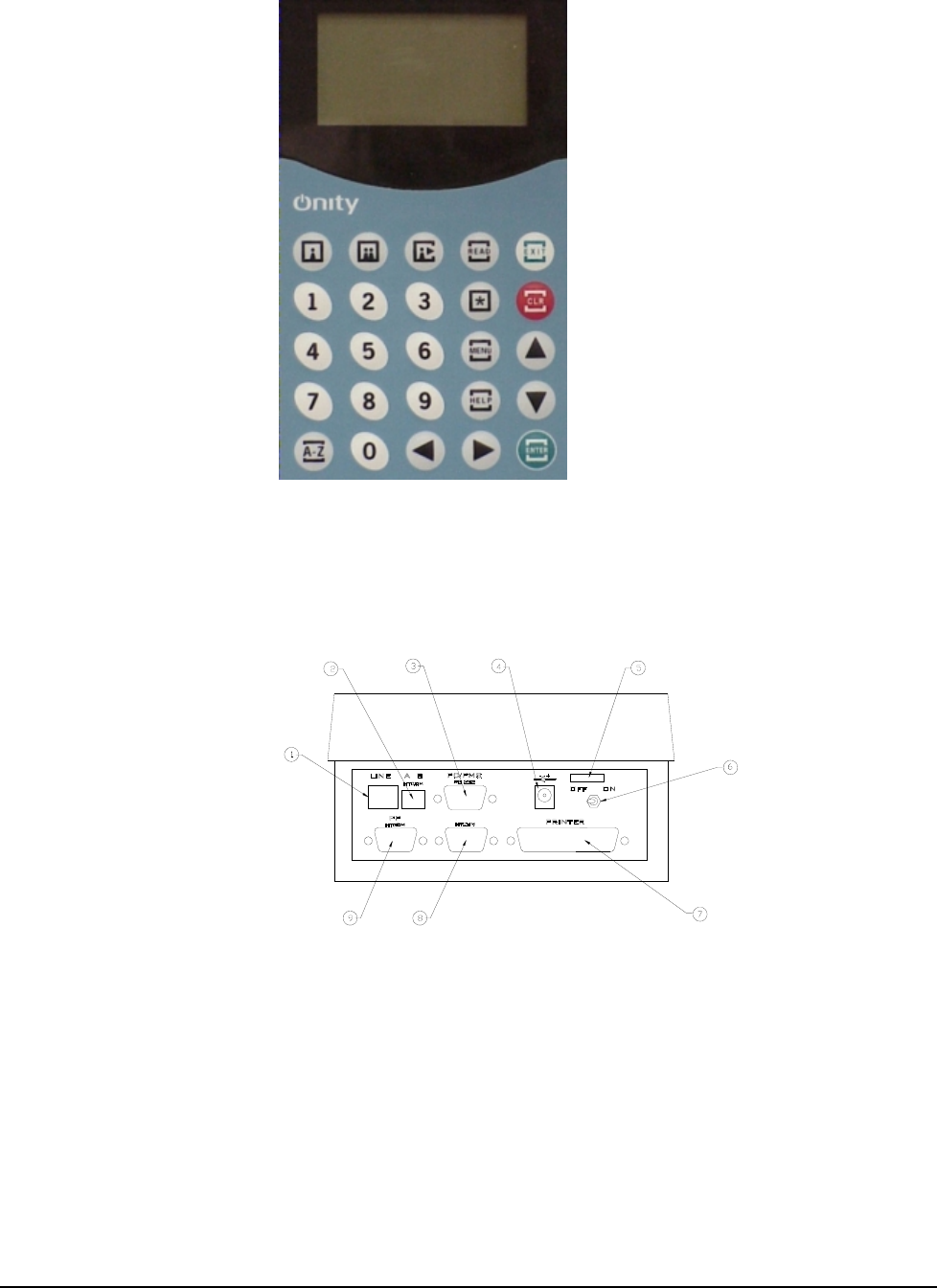
84 • Hardware Onity HT24W / HT28 Smart
HT22 Connections
The DB9 connectors (8 and 9) are used to connect the encoder to the communication
distributor through the HTCOM network
.
1. Not Used With This System 6. On/Off Switch
2. HTCOM Connection – AB Format 7. Not Used With This System
3. Firmware Update Connection 8. HTCOM Connection
4. 12VDC Power Input 9. HTCOM Connection
5. Strain Relief
HT24+ Motorized Encoder
The Onity motorized encoder is a three-track magnetic stripe card encoder. It
records Onity information in a secure proprietary format on track 3 and can encode
information in ISO standard format for other systems on tracks 1 and 2. This

Onity HT24W / HT28 Smart Hardware • 85
information can be entered by the desk clerk at the time of check-in or it can be
specified by the Property Management System. Limited default information,
including room number and expiration date, can also be encoded on track 1 or 2.
The Onity motorized encoder can be controlled by a PC running the software as a
server or as a workstation. The motorized encoder can also be controlled through
HTCOM in a PMS network.
• Light Indications
The red LED (1) is illuminated when the unit is turned on
The green light (2) is illuminated when the encoder is waiting for a card
to be inserted for reading or writing. Once the card is inserted, this LED
will go out.
The other red light (3) is illuminated when the encoder returns the card
after finishing a read and/or write operation.
• Switches
The red power setting switch (7) is used to select the type of power that
is being supplied at the site; either 115VAC or 220VAC. Installations
within the United States will use the 115VAC setting. For information
about the power supplied to your property, please contact your local
electric utility company.
The Power switch on the back of the unit (11) is used to turn power to
the unit on or off. Inside the switch housing is a small compartment that
contains the main power fuse and one spare.
If you have the High Coercivity model, the encoding mode selector
switch (12) is used to select either High Coercivity or Low Coercivity
encoding. High Coercivity encoding uses either 2750 Oersted or 4000
Oersted magnetic stripe cards. Low Coercivity encoding uses 300
Oersted magnetic stripe cards.
• HT24+ Connections
The DB9 connectors (9 and 10) are used to connect the encoder to the
communication distributor through the HTCOM network.
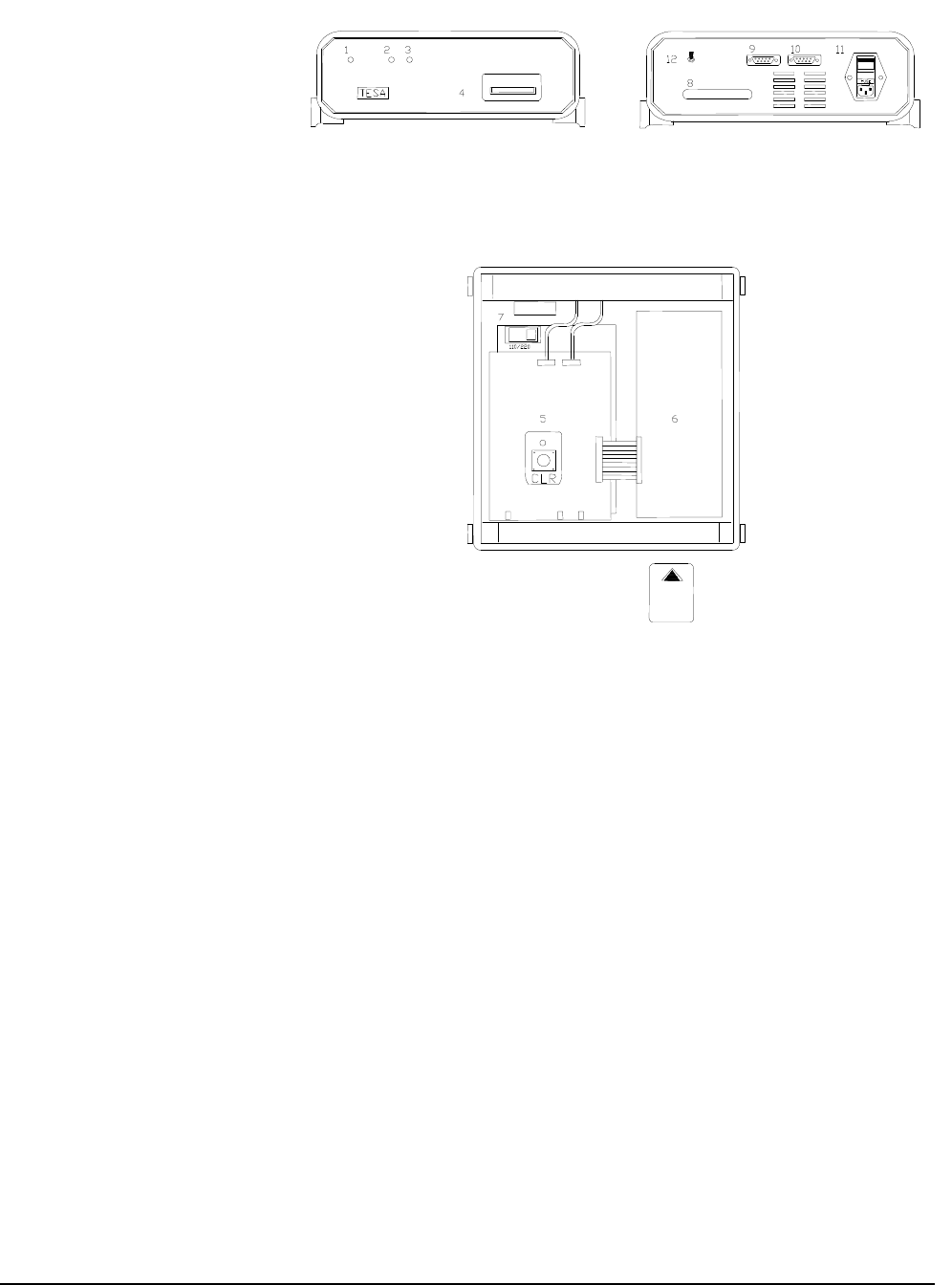
86 • Hardware Onity HT24W / HT28 Smart
1. Red Light (Power) 7. Power Selection Switch – 110/220 VAC
2. Green Light (Begin Operation) 8. Rear Ejection Port
3. Red Light (Operation Complete) 9. HTCOM Connection
4. Card Insertion Slot 10. HTCOM Connection
5. Clear Button 11. On/Off Switch and Fuse
6. Card Encoding Unit 12. Encoding Mode Selector – HiCo/LoCo
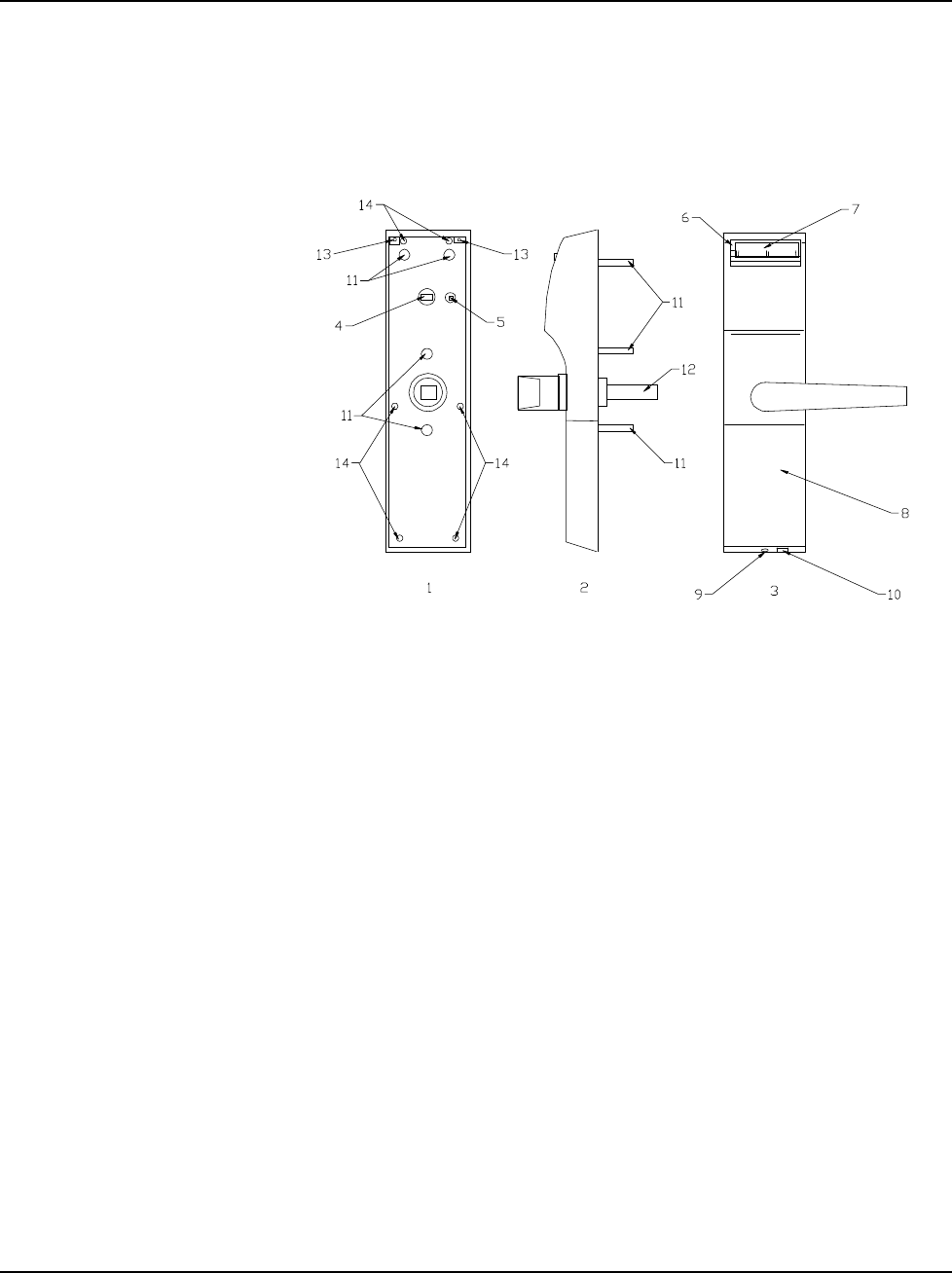
Onity HT24W / HT28 Smart Hardware • 87
HT28 / ADVANCE Dual Smart System Components
HT28 Dual / ADVANCE Dual Technology Lockset
1. Rear View 8. Battery Access Cover
2. Side View 9. Battery Access Cover Screw
3. Front View 10. Portable Programmer Connection
4. Privacy Indicator Connection 11. Mounting Posts
5. Clear Button 12. Spindle
6. Light Indicators 13. Escutcheon Screws
7. Card Insertion Slot 14. Back Cover Screws
[HT Dual shown above]
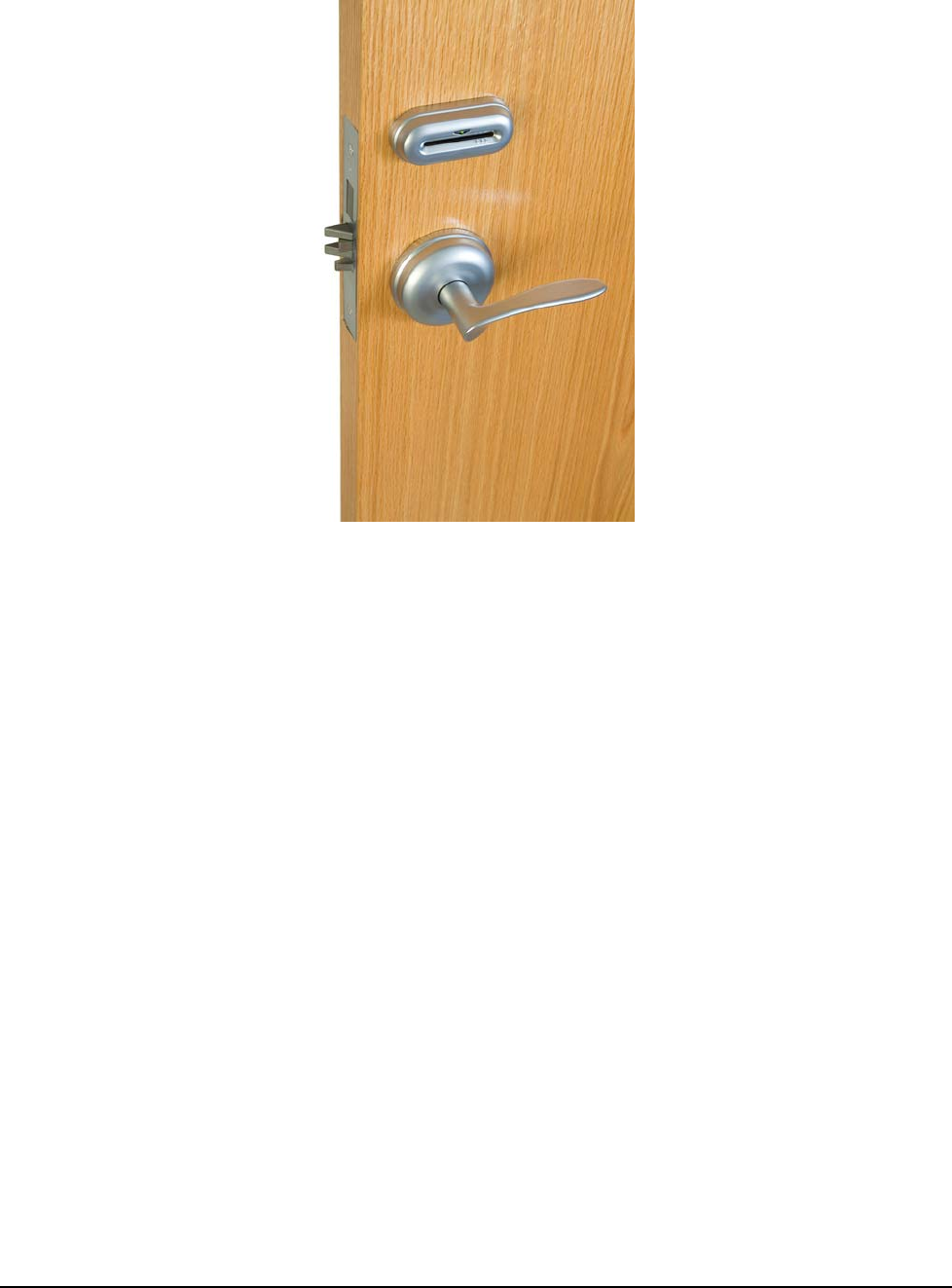
88 • Hardware Onity HT24W / HT28 Smart
[ADVANCE Dual shown]
Modes of Operation and Capabilities HT28 Dual / ADVANCE
Dual
• Standard Guestroom Mode / Suite Mode
The standard operation of an HT28 Dual / ADVANCE Dual lock is
normal guest room mode. In this mode, a single guest card code is
allowed to enter along with any selected master cards. To gain access,
the card must have the proper site code, the correct card code, any
applicable authorization, and within the activation and expiration dates.
• Foyer Mode
A foyer lock does not keep an audit trail or card codes. To gain access,
the card must have the proper site code, any applicable authorization,
and within the activation and expiration dates.
• Selective Mode
The selective lock is a combination of corridor and back-of-house locks
found in HT24 systems. Essentially, a selective lock is a freely keyed
lock that can accept as many as 250 users with an audit trail, or 500
users without. Guest room keys and staff cards can be set to have
access in the locking plan. To gain access, the card must have the
proper site code, the correct card code, any applicable authorization,
and within the activation and expiration dates.
Automatic Code Change – HT28 Dual / ADVANCE Dual
The most important feature of the Onity electronic lock is that it changes its code
automatically for each new guest that checks into the room. Each new guest card
used in a lock will automatically void the previous guest card.

Onity HT24W / HT28 Smart Hardware • 89
In a similar manner, the lock will also accept a new master card. Any new master
card used in a lock will automatically void the previous master card.
Battery Operation – HT28 Dual / ADVANCE Dual
Onity locks are powered by 4 AA size alkaline batteries. These batteries are expected
to last between 2 and 4 years, depending on a number of factors. Factors that can
shorten battery life are:
• The freshness of the batteries when they are purchased.
• The number of transactions per day.
• Extreme cold weather.
• Battery quality.
Onity recommends the use of major brand batteries in the locks, such as Energizer,
Duracell, and Panasonic batteries. In installations where the lock will be subjected to
extremely cold temperatures, use 4 AA size Lithium batteries. Both Alkaline and
Lithium batteries may be purchased through Onity.
A low battery indication is given to staff cards for approximately one month prior to
the batteries being completely dead. The hand-held Portable Programmer can also be
used to check the level of the batteries.
Audit Trail – HT28 Dual / ADVANCE Dual
Onity locks use non-volatile memory to store a record of the most recent openings.
The Onity HT28 Dual / ADVANCE Dual records the last 500 openings. This means
that the locks will not lose the audit trail, even if the batteries are removed. Reading
the lock will produce a list of all cards used in the lock and the date and time they
were used.
Real Time Clock – HT28 Dual / ADVANCE Dual
The Onity lock circuitry contains a "real time" clock. This means that the lock is able
to determine if a card should be admitted based not only on the code of the card, but
also the date and time.
Daylight Savings Time Change – HT28 Dual / ADVANCE
Dual
With the software, Onity locks can be loaded to automatically change for Daylight
Savings Time. The lock will remember the date of the next change. This means that
the lock must be loaded twice each year with the date of the next change.
Panic Operation – HT28 Dual / ADVANCE Dual Onity locks feature panic
retraction of the deadbolt from inside the guestroom. Operation of the lever from
inside the guestroom retracts both the deadbolt and the latch, fulfilling the
requirements of various building codes, life safety codes, and the ADA.
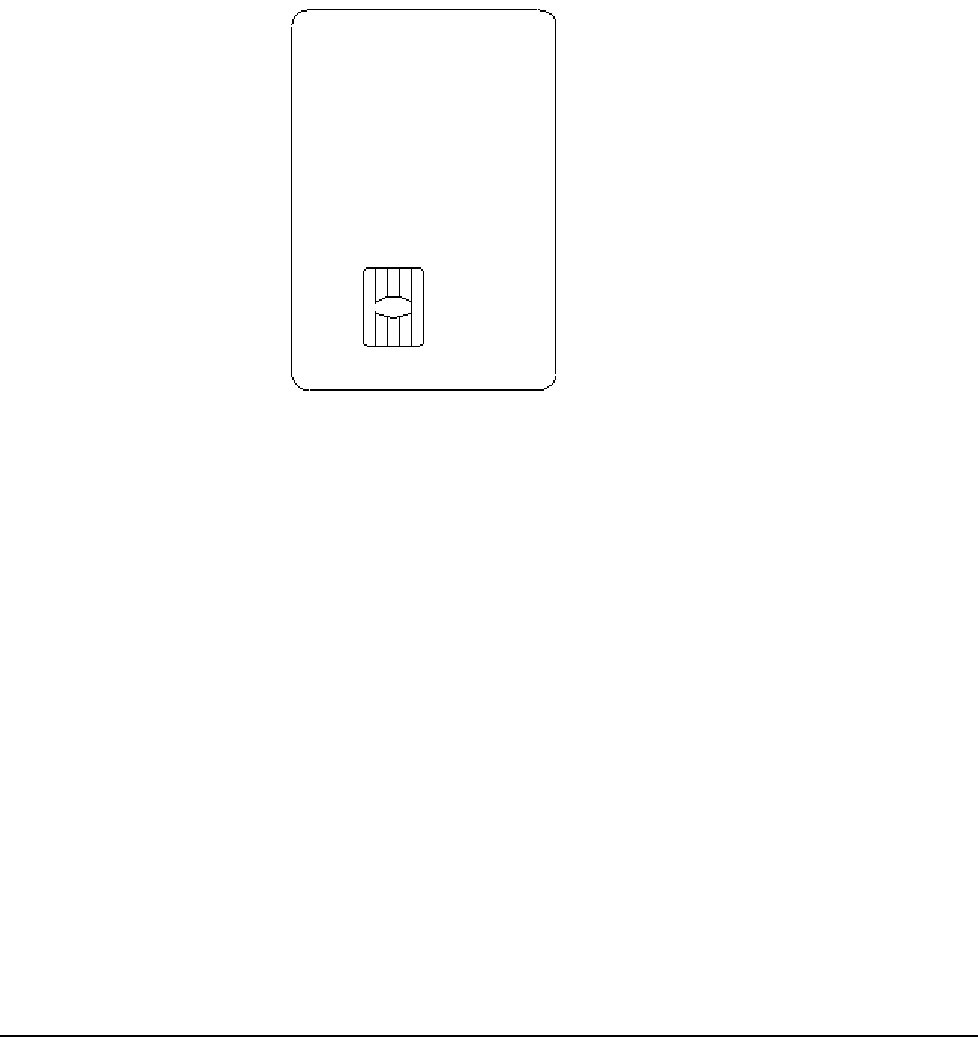
90 • Hardware Onity HT24W / HT28 Smart
Smart Cards
In addition to traditional magnetic stripe cards, the HT28 lockset will read and write
to microprocessor cards and memory cards. Smart cards can store a great deal more
data than magnetic stripe cards, and magnets or small scratches that will destroy the
information on a magnetic card cannot damage smart cards.
A variety of smart cards are available on the market today and all of them have
different features and capabilities. The Onity HT28 Smart system can work with
several different types of smart cards and memory cards – each with its own features
and costs. The section below offers a brief description of the cards offered and
approved by Onity.
Memory Cards
Memory cards, like magnetic cards, can be freely written or read. Data on the card is
not password protected. Because of the lack of special security features, memory
cards are usually less expensive than microprocessor cards. It is for this reason that
memory cards should only be used for guest cards, NEVER for staff cards.
Microprocessor Cards
Microprocessor cards are really 'smart' cards. They are equipped with a tiny
microprocessor chip that can perform fairly complicated tasks such as password
protection and data encryption. Microprocessor cards can typically handle a much
larger amount of data than memory cards. Microprocessor cards are the only cards
that should be used for staff cards.
Card Care – Smart Card
Smart cards have the benefit of having powerful electronics in a convenient package,
and they should last for many uses. However, cards may become damaged quickly
without proper care. A smart card is a small computer and needs to be treated with
reasonable care.
• Make sure the cards are clean. Dirt and grime can scratch the gold
colored contacts on the card. If the readers and encoders cannot make
proper contact with the card, no data can be transferred.
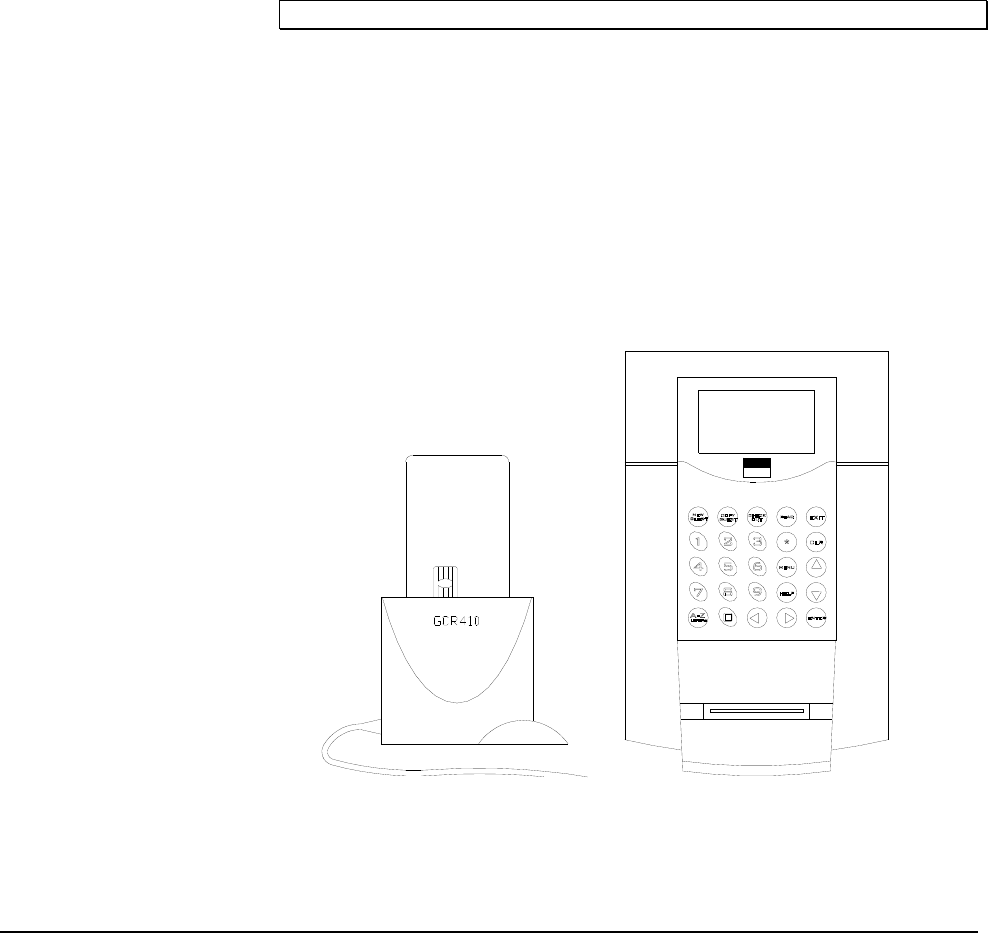
Onity HT24W / HT28 Smart Hardware • 91
• Make sure the cards are flat. The contacts of the card can become loose
or completely separated from the plastic if the cards are bent
excessively. . For example, storing the card in an overstuffed wallet and
then sitting on the wallet will cause damage over time.
• Keep the cards away from static electricity. Although the internal
electronics of smart cards are well protected from the elements, there is
a chance that static electricity will damage the card. This is, after all, a
very tiny computer inside the card.
• Do not keep the smart card on a key chain with metal keys. The metal
keys may damage the chip by constantly rubbing against it.
• If the card is used constantly throughout the day, consider the use of a
neck lanyard with a plastic pouch for the card. This will keep the card
close and handy for quick use, and also protect it at the same time.
• Educate the cardholder. Each cardholder needs to be educated on the
proper care of the smart card to avoid misuse and damage to the card.
Note: Magnets cannot damage or erase smart cards.
Smart Card Encoder
If using the HT22M encoder, there is no need for additional equipment to encode the
Smart Cards. If using the HT22i encoder, an additional piece of equipment is needed
to allow for the encoding of the smart cards.
The HT22i insertion encoder uses an external encoder to encode smart cards.
Connections – External Smart Card Encoder
The external encoder connects to the RS-232 port on the rear of the HT22i encoder.
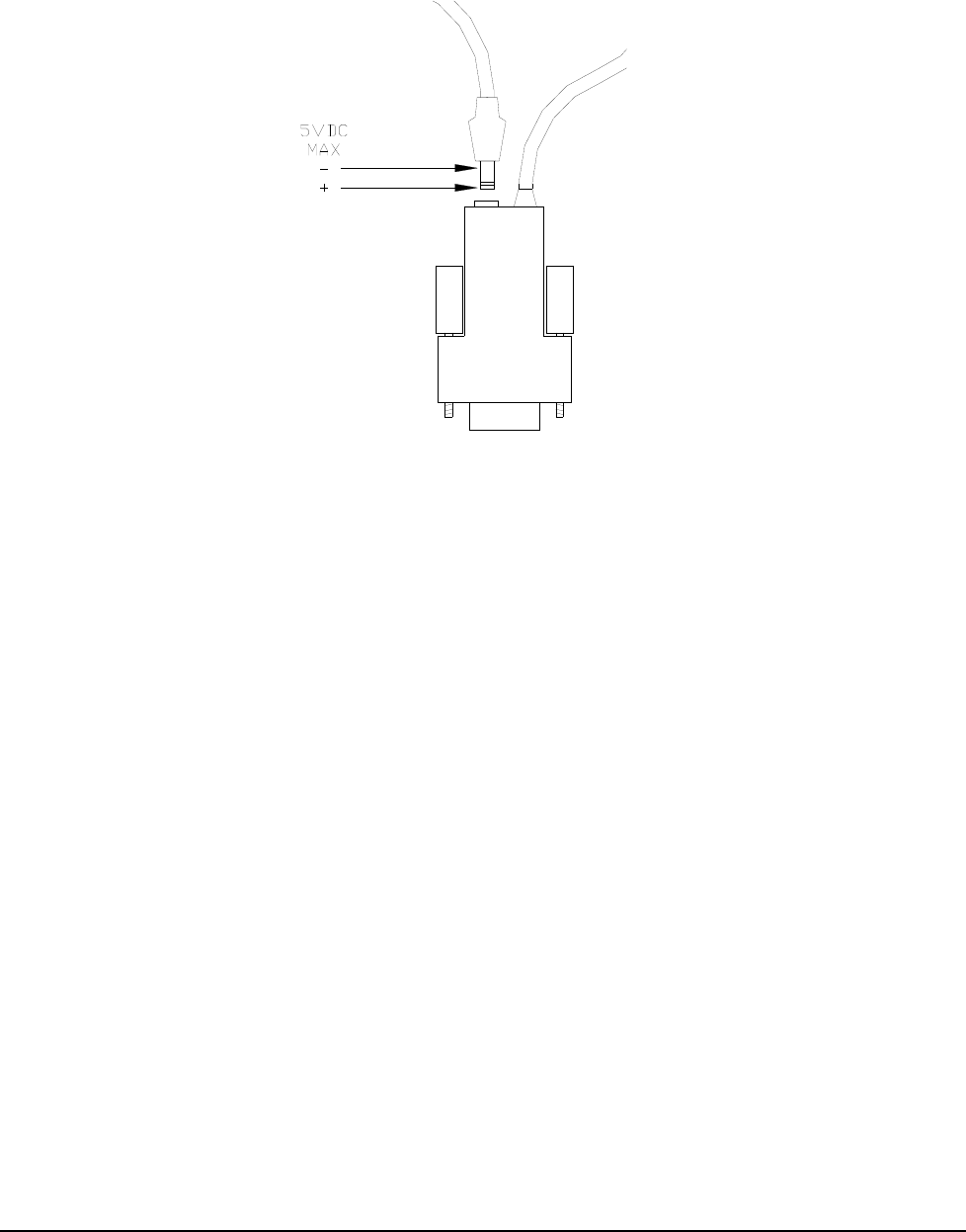
92 • Hardware Onity HT24W / HT28 Smart
Power Requirements for the External Smart Card Encoder
The external encoder requires a separate 5 VDC power transformer. The transformer
plugs into the DB9 connector at the rear of the HT22i.
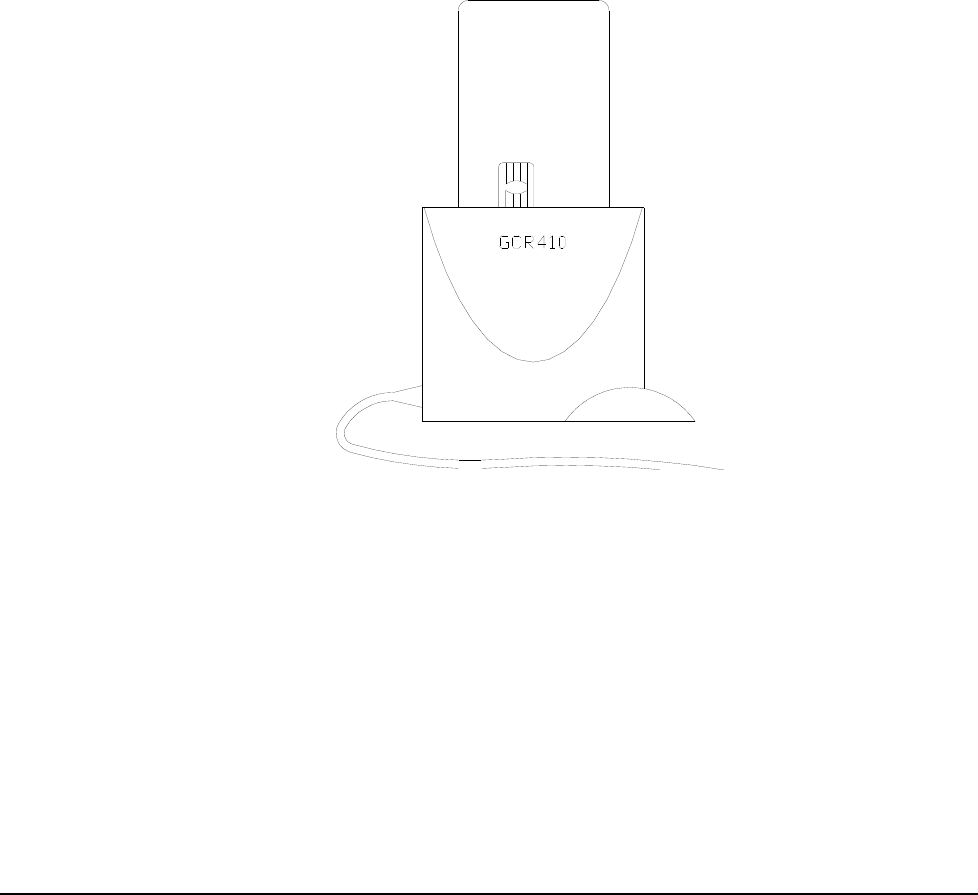
Onity HT24W / HT28 Smart Hardware • 93
Encoding Smart Cards
Smart cards can hold a very large amount of data, so the encoding process is longer
than with magnetic cards. The security features used by microprocessor cards can
also lengthen the encoding time. Overall, the time to encode a smart card is still only
a few seconds.
Because of the memory structure of smart cards, brand new cards require an
initialization process to claim an area of memory for use by Onity. This process,
called personalization, may take a few seconds.
If using the HT22M encoder, the process for encoding the smart card is the same as
for encoding the magnetic stripe cards. Insert the smart card into the encoding deck
of the HT22M with the chip facing up.
If using the external smart card encoder, the cards are inserted into the external
encoder as shown in the picture below, with the gold contacts facing the GCR410
logo.
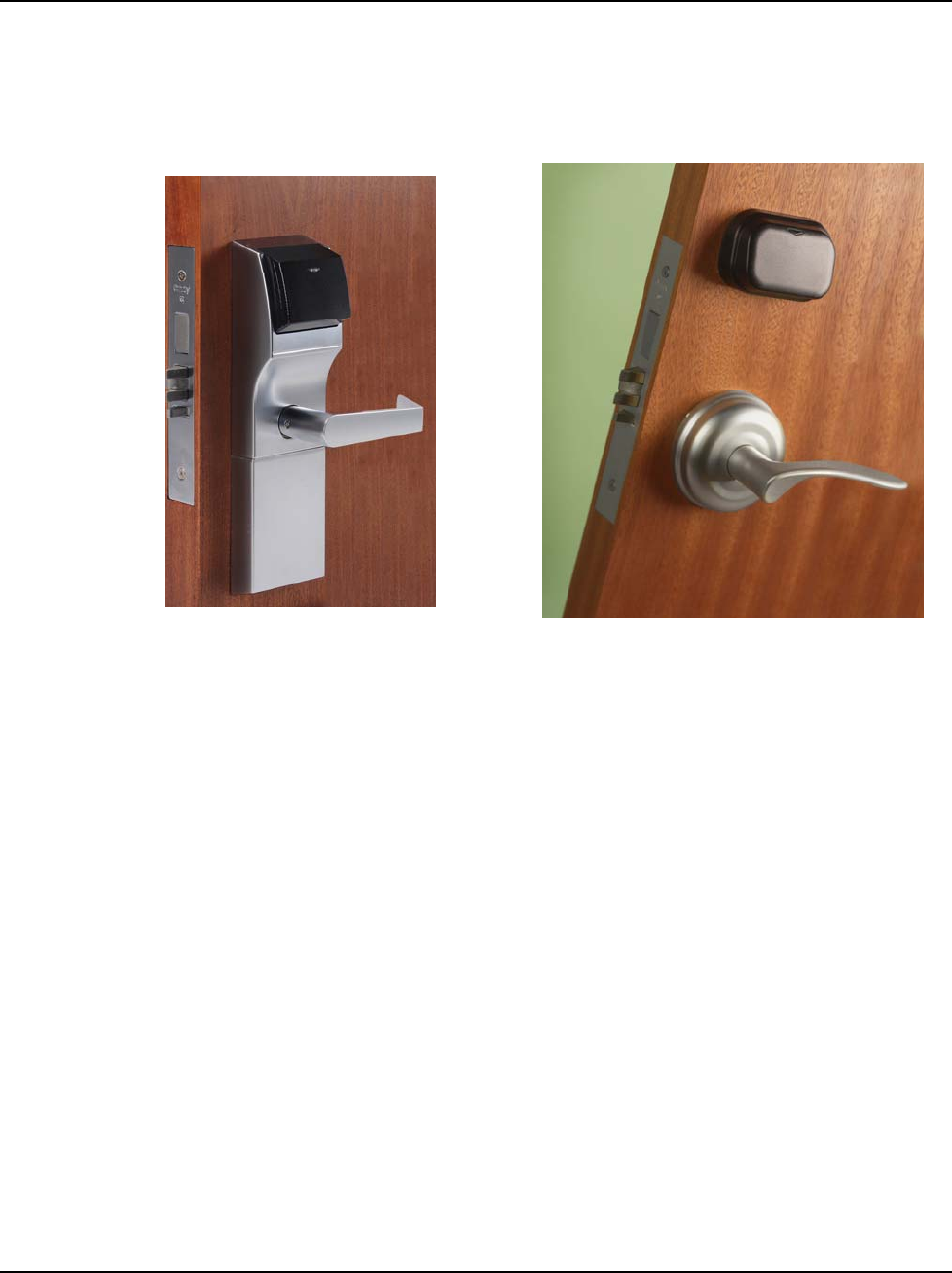
94 • Hardware Onity HT24W / HT28 Smart
HT Proximity, HT RFID and Advance RFID™ System
Components
HT RFID (left) and ADVANCE RFID (right) Lock
Lock Configurations
Five operating configurations are available for the ADVANCE RFID, HT RFID
andHT Prox lock:
• Room (Standard)
When the lock is programmed as a standard room lock, a single guest
code is allowed to operate the lock as well as any valid master keys.
To gain access to the room, the key must have a valid site code, room
or master code, any applicable authorizations & overrides, be within
the date and time restraints.
In this mode, any new guest key will void the previous guest key; and
any new master key will void the previous master key of the same type.
The type of users that may be configured in the keying section of the
setup program to access this type of lock are Masters only.
• Suite and SubSuite
The ADVANCE RFID, HT RFID and HT Prox locks can be specially
configured to work together to secure a suite of rooms. Within a suite,

Onity HT24W / HT28 Smart Hardware • 95
only one lock is configured as the main Suite lock. All other locks of
the same suite of rooms are configured as Subsuites locks. When using
this scenario, the guest key that is programmed for the Suite lock, may
also be configured to open the subsuite locks of the group. A guest key
made for a subsuite lock may also be configured to open the Suite lock
of the group. As with the locks in Room mode, the key must have a
valid site code, room or master code, any applicable authorizations &
overrides, be within the date and time restraints to gain access to the
room.
Any new guest key for the Suite lock will void the previous Suite key
AND subsuite keys. Any new guest key for a subsuite lock will void
the previous subsuite key AND the suite key from that particular
subsuite lock and the suite lock. It will not void OTHER subsuites
keys from the Suite lock.
The type of users that may be configured in the keying section of the
setup program to access the Suite lock are Masters and the Subsuites of
the group. For the Subsuite lock, Masters and the Suite of the group
may be configured for access.
• Foyer
When a lock is programmed in Foyer mode, is will open to all keys that
belong to the system. Additional restrictions can be provided by
authorizations, date and time constraints.
The keying section of the setup program is not applicable to Foyer
locks.
Note: Previous guest and master codes cannot be voided from a
Foyer mode lock. The only way a key will be canceled is by the
expiration date and time.
• Selective
This mode (name in the systems is dependent on the type of system
used) is used for common access doors, such as exit doors and corridor
doors, which need to allow access to a range of guest keys and master
keys. As with the Room, Suite and Subsuite locks, a new key will void
a previous key.
When configuring the keying plan of a selective lock, the full range of
masters AND guest keys is available to grant access to the lock. Up to
250 users (Guests and Masters) may be configured to access this lock
without affecting the size of the audit in the lock. If no audit is needed,
up to 1000 users may be configured to access the lock.
Standard – 250 Users / 500 Openings
Extended – 1000 Users / 0 Openings

96 • Hardware Onity HT24W / HT28 Smart
Lock Operating Modes
In addition to the setups listed above, 4 operating modes are available to the
ADVANCE RFID, HT RFID and HT Prox Lock:
• Standard Mode – When the lock is in standard mode, a valid key is
required to gain access to the lock.
• Office (Free) Mode – The locks may be configured to allow Office (or
Free) access. When in this mode, no key is needed to gain access as the
lock remains in the unlocked position. The locks may be placed in and
out of office mode in two ways:
o Present certain authorized cards twice
o Automatically
Note: Only cards that are valid for the lock AND have the
office mode override may be used to put the lock in and out of
office mode.
• Blocked Mode – When a blocking card is presented to the lock, the
Red LED will start flashing and the lock will enter blocking mode.
When a lock is blocked, no guest keys, and only certain master users,
will be allow access to the lock. To exit the blocking mode, present the
blocking card again to the lock. The Green LED will flash once to
indicate that the blocking has been removed.
• Privacy Mode – When the privacy switch is engaged, typically when
the deadbolt is engaged, only valid keys with the privacy override will
be able to access the room.
Caution: If you use a key that has privacy override, no indication
will be given that the lock is in fact in privacy mode.
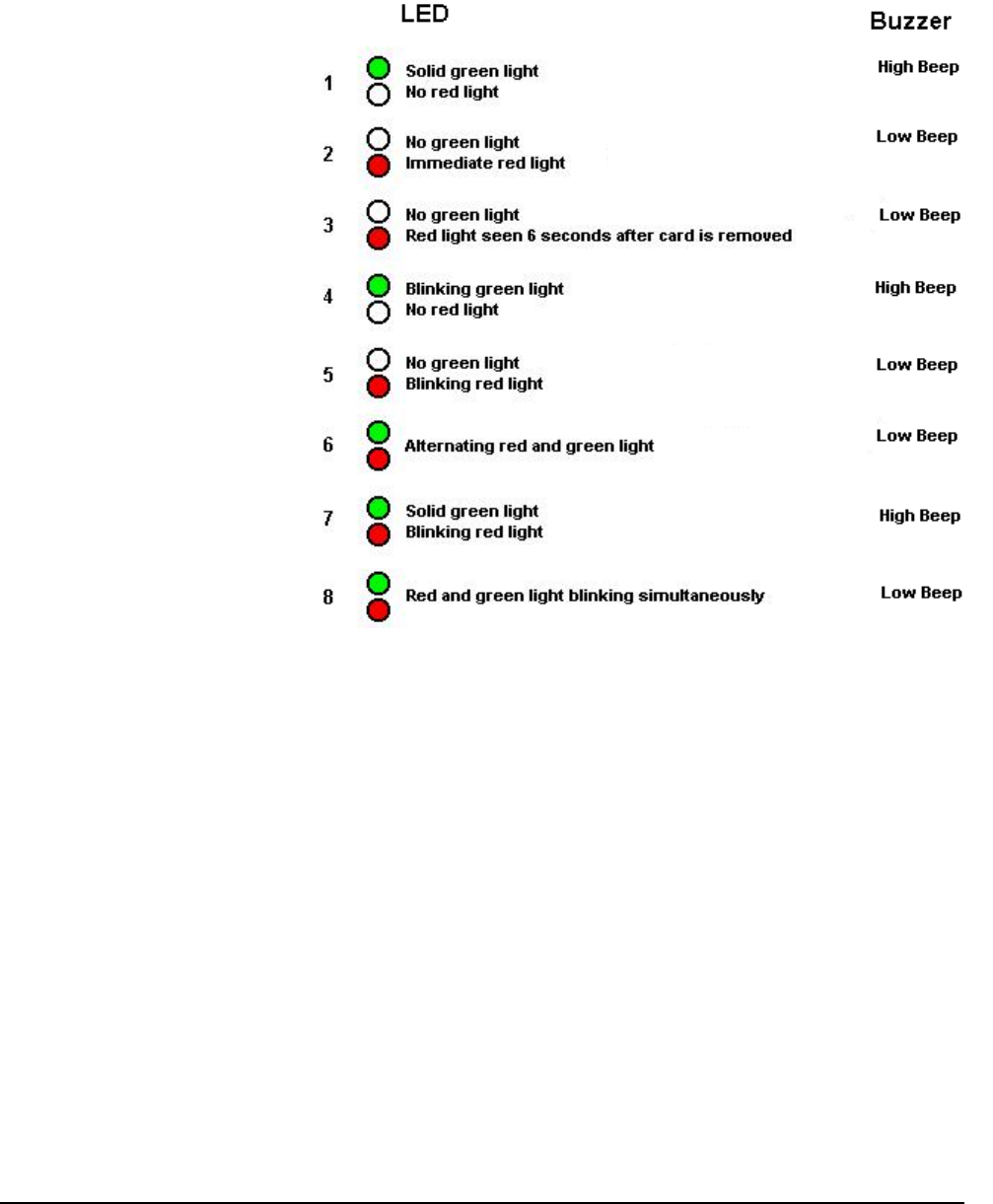
Onity HT24W / HT28 Smart Hardware • 97
Light & Audible Indications
The ADVANCE RFID, HT RFID and HT Prox provide feedback to the user with red
and green LEDs. The possible light indications are:
Description:
1. Valid Key. Door unlocks followed by Green LED indication and high
beep.
2. Invalid Key. The key may be for the wrong door or expired indicated by
Red LED indication and low beep.
3. Unreadable card. The lock recognizes the fact a key was inserted but
could not read or understand the information on the card, indicated by Red
LED indication and low beep
4. Office Function. This is a function that will hold the door open
indefinitely until it is removed, indicated by blinking Green LED indication
and high beep
5. Blocked Door. A Blocking card was used in the lock. Use a Blocking
Card to unblock, indicated by blinking Red LED indication and low beep.

98 • Hardware Onity HT24W / HT28 Smart
6. Dead bolt thrown or Out of Valid Shift. Indication given if the deadbolt
is thrown or a card is inserted that has a shift and the current time is outside
that shift, indicated by alternating Red and Green LED indications and Low
Beep.
7. Low Batteries. Replace batteries and update door, indicated by solid
Green LED and blinking Red LED indications and high beep.
8. Canceling Card. The card being used in the lock is a guest canceling card
or a master canceling card, indicated by blinking Red and Green LED
indications simultaneously and low beep.
Time Tables
Each lock is programmed with one specified Time Table which holds the Shifts and
Automatic changes for the lock.
The operation of the lock with regards to Time Shifts and Automatic Changes may
change based on the type of day specified in the Calendar. Three day types exist –
Work Day, Weekend, and Holiday. For each day type, the lock holds 8 configurable
shifts and 8 automatic changes. One additional shift (Shift 0) is always available and
cannot be changed. Any key with shift 0 will work 24 hours a day.
Daylight Savings Time
In addition to the Three Day Types, the Calendar also allows for Daylight Savings
Time changes. The ADVANCE RFID, HT RFID andHT Prox lock will keep the
next DST change in its memory and automatically adjust the time on the daylight
savings time date. It is necessary to update, read, or initialize the lock with the
portable programmer at some point before the next DST date in order for the change
to occur.
Battery Operation
Onity locks are powered by 4 AA size alkaline batteries. These batteries are expected
to last between 2 and 4 years, depending on a number of factors. Factors that can
shorten battery life are:
• The freshness of the batteries when they are purchased.
• The number of transactions per day.
• Extreme cold weather.
• Battery quality.
Onity recommends the use of major brand batteries in the locks, such as Energizer,
Duracell, and Panasonic batteries..
A low battery indication is given to staff cards for approximately one month prior to
the batteries being completely dead. The hand-held Portable Programmer can also be
used to check the level of the batteries.
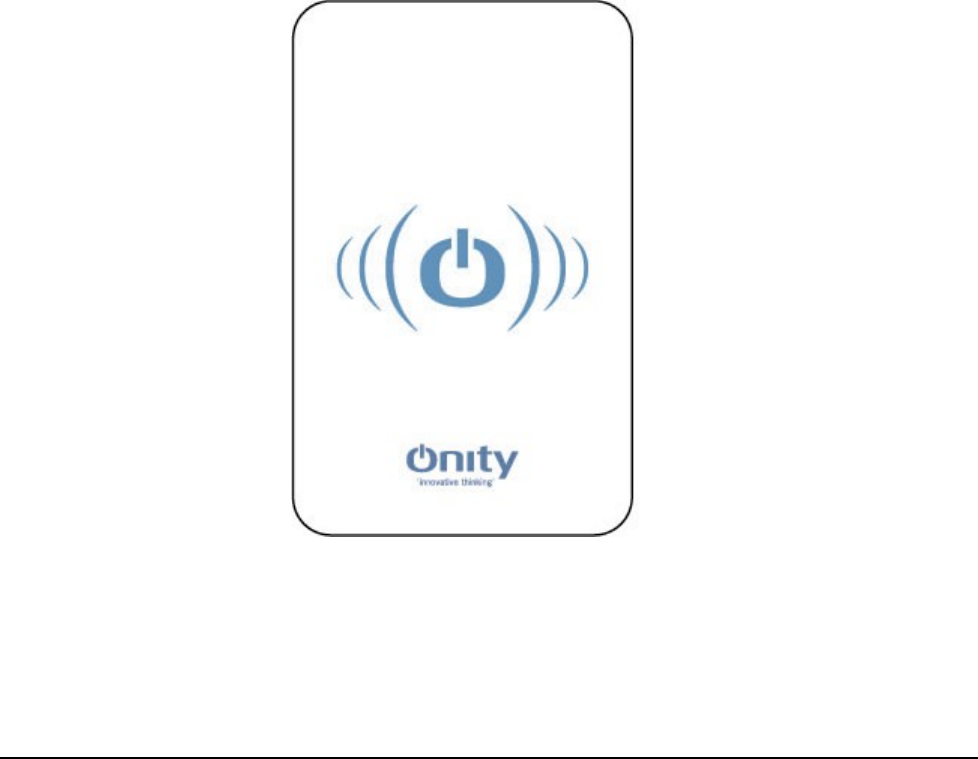
Onity HT24W / HT28 Smart Hardware • 99
Lock Auditor
The ADVANCE RFID, HT RFID and HT Prox lock keeps a record of the last 500
operations. This openings register can be read using the Read Openings function of
the Portable Programmer. The following lists the audits recorded by the lock:
• Valid Opening showing the key used (Guest, Master/User, Spare)
• Communication with portable programmer
• Opening by portable programmer
• Handle not Turned
• Blocked / Unblocked
• Office / End of Office
• Guest code change
• Master code change
• Guest canceling
• Master canceling
• Spare card programming
Keycards & Tokens
The HTProx system uses contactless memory keycards and tokens which follow the
ISO 14443-B standard. Advance RFID and HT RFID use MiFare-compliant
encoding technologies, which follow ISO 14443-A standard, and is compatible with
Mifare classic Ultralight, 1K, and 4K cards. In the current release, no “write back”
feature is available for the keycard to track usage.

100 • Hardware Onity HT24W / HT28 Smart
To use the key, touch the center of the card or token to the top center of the lock
reader and wait for the green light and beep. Then depress the lever to enter the
room.
Up to 3 rooms can be encoded on the key with full functionality. It is possible to
encode a key with 4 rooms, but other features must not be added, such as activation
date and authorizations. The software will notify you if you try to encode a key with
too much information.
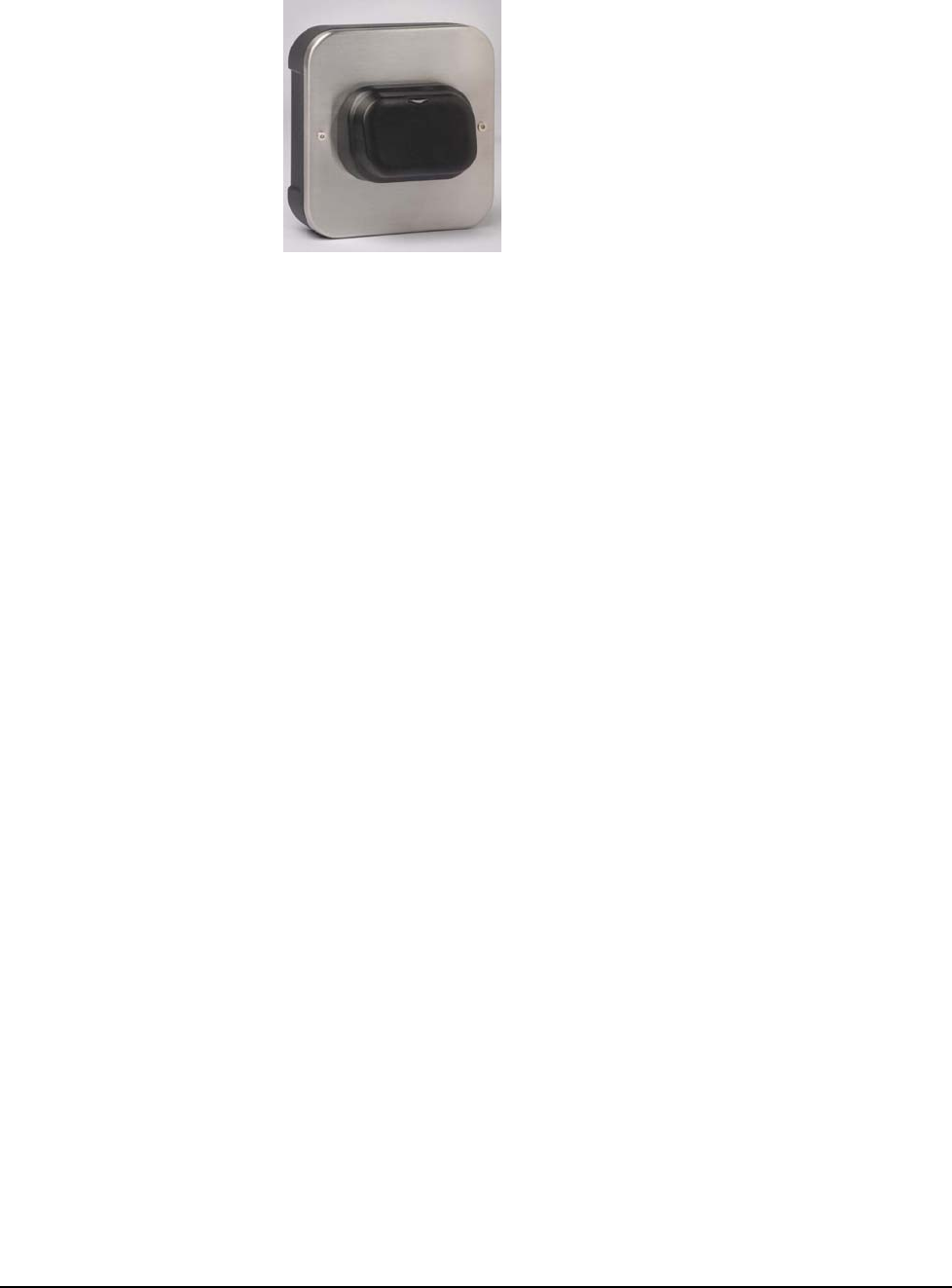
Onity HT24W / HT28 Smart Hardware • 101
ADVANCE RFID Off-line readers
Off-line readers are stand-alone units that do not require connections to a central
computer. The off-line readers do require a 12-volt DC power supply to operate. The
off-line reader acts as a switch to control an electrical locking device, such as an
electric strike, magnetic lock, automatic door, or gate operator. In all other regards,
the off-line reader behaves like the stand-alone lock. The off-line reader can operate
in three modes – Standard mode, Selective mode, and Foyer mode.
• Standard Guestroom Mode / Suite Mode
The reader is declared as a door to a single room or suite. The reader
will only open to master cards or cards made specifically for its room
designation and will store the last 500 events.
• Selective Mode
The reader will recognize the individual codes for up to 1000 cards. If
there are 250 cards or less with access assigned, the reader will record
the last 500 events. If there are more than 250 cards, then no audit trail
will be kept by the reader.
• Foyer Mode
The reader is declared as a common entrance door for a section of the
property. The reader will check the card for valid site data, proper
authorizations (if any), valid time shift, and expiration date. If the card
meets these criteria, then the reader will allow access to the property.
Off-line readers can be set up to perform actions automatically. At pre-specified
times, the reader may lock and unlock the door it controls. As an example, the reader
may be programmed to unlock the lobby doors at 6:00a.m. and lock the lobby doors
at 11:00p.m. Cards with the office attribute may also be used to toggle the off-line
reader from locked to unlocked, and back again.
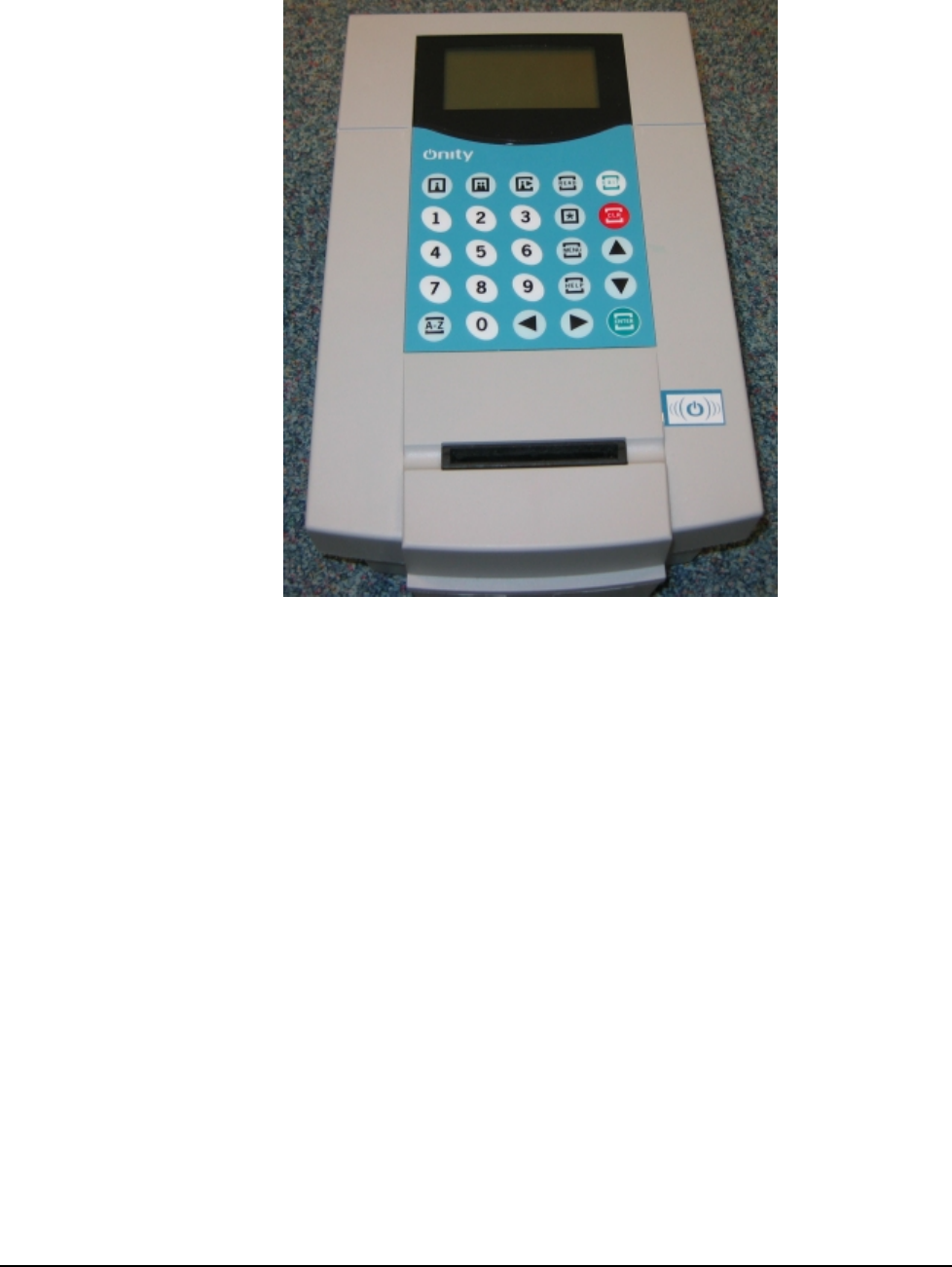
102 • Hardware Onity HT24W / HT28 Smart
HT22iP Encoder (HT Proximity Only)
The HT22iP encoder has the capability of encoding both Magnetic Stripe keycards
and Proximity cards and tokens. This encoder can either be part of a computer based
system (HT24W, HT28, EntryFlex) or a stand alone system (HT22).
For standard operating details, refer to your system user manual. The information in
this document only covers the features related to the HT Prox product.
Encoder Setup (HT22iP only, HT Proximity Only)
To setup the encoder to allow both magnetic stripe and proximity encoding, do the
following:
• Press and hold the ‘Exit’ button for 5 seconds to enter the setup menu.
• Arrow down to ‘Card Tech. #1’ and press ‘Enter’
• Select ‘Mag. Stripe’ and press enter
• Arrow down to ‘Card Tech. #2’ and press ‘Enter’
• Select ‘Prox.’ and press ‘Enter’
• Press the ‘Exit’ button to leave the setup menu
The encoder is now setup for both magnetic stripe and proximity encoding.
Proximity Only Setup (HT22iP only, HT Proximity Only)
If the facility only uses the Proximity locks, the magnetic stripe encoding can be
disabled. Do the following to setup the encoder for proximity only encoding:
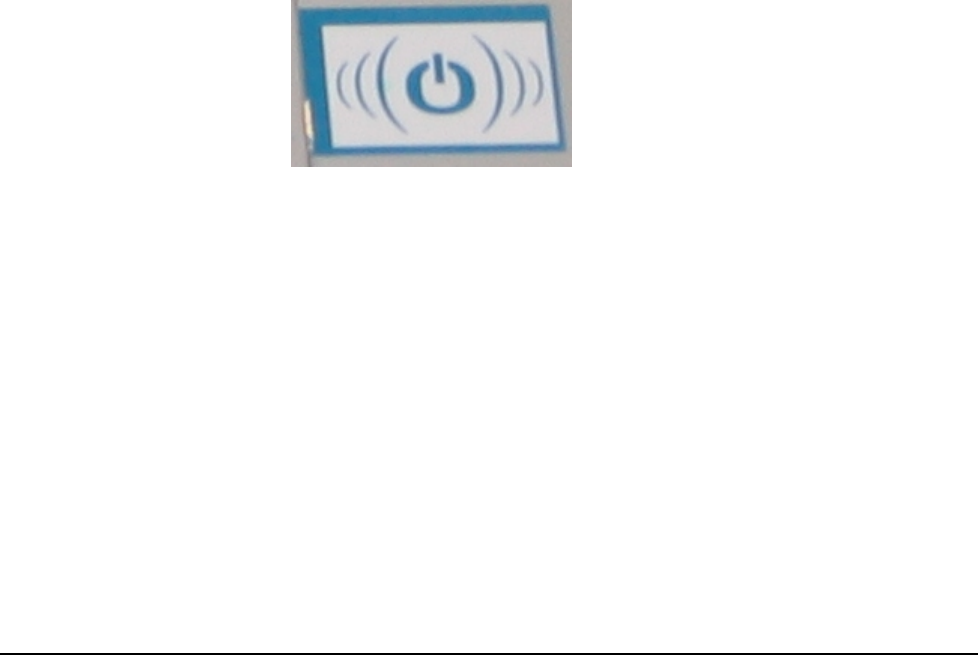
Onity HT24W / HT28 Smart Hardware • 103
• Press and hold the ‘Exit’ button for 5 seconds to enter the setup menu.
• Arrow down to ‘Card Tech. #1’ and press ‘Enter’
• Select ‘Prox.’ and press enter
• Arrow down to ‘Card Tech. #2’ and press ‘Enter’
• Select ‘CLR=None’ and press ‘Enter’
• Press the ‘Exit’ button to leave the setup menu
The encoder is now setup for proximity encoding only. If you are using a computer
based system, you should select proximity only for your card technology.
Encoding Keys
Refer to your system user manual for detailed instructions on encoding, as this
manual only deals with the actual presenting of the key to the encoder.
Magnetic Stripe Encoding (HT22iP only, HT Proximity Only)
When prompted for magnetic stripe encoding, insert the keycard into the slot of the
encoder, then remove the keycard. If an error occurs, the encoder will beep and
display the error message. If the encoding is valid, no error beep is given and the
card is ready for use.
Proximity Encoding
When prompted for proximity encoding, present the proximity card or token to the
Prox Logo on the encoder. When the encoder is ready to encode a proximity key, it
will begin to beep. Present the card at the logo point shown below. The encoder will
emit a louder beep when the encoding has been completed.
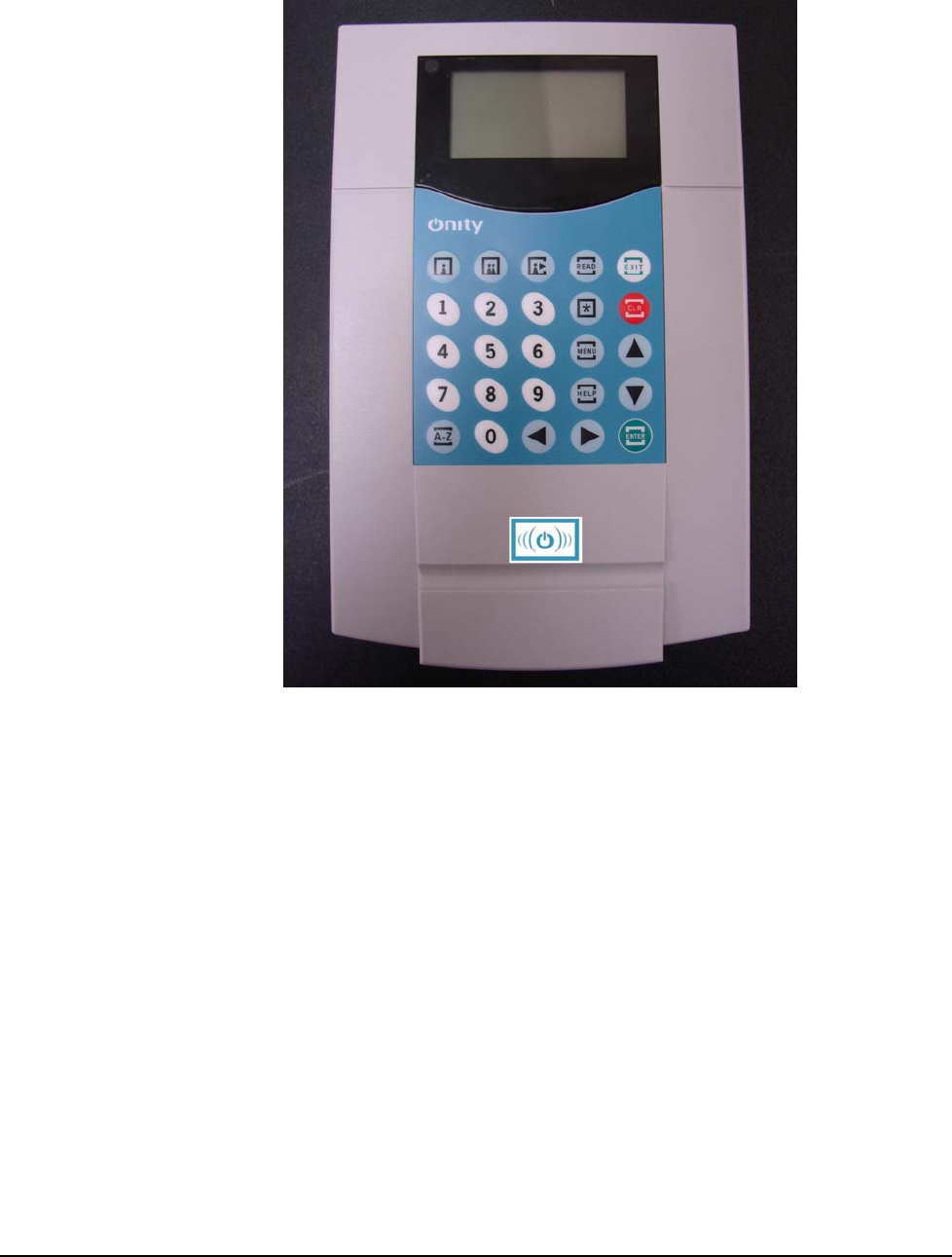
104 • Hardware Onity HT24W / HT28 Smart
HT22P Encoder (ADVANCE RFID / HT RFID Only)
The HT22P encoder is used specifically with Advance RFID and HT RFID cards and
tokens, and is NOT compatible with HT Proximity systems. The encoder cannot
encode HT Prox cards or be used at HT Prox installations. This encoder must be
used in conjunction with a computer based system (HT28) and is not to be used as a
stand alone system .
Physically, the HT22P encoder can be distinguished from the HT22iP by the lack of
a card insertion slot.
Encoder Setup
Do the following to setup the encoder for Advance RFID or HT RFID encoding:
• Press and hold the ‘Exit’ button for 5 seconds to enter the setup menu.
• Arrow down to ‘Card Tech. #1’ and press ‘Enter’
• Select ‘Prox.’ and press enter
• Arrow down to ‘Card Tech. #2’ and press ‘Enter’
• Select ‘CLR=None’ and press ‘Enter’
• Press the ‘Exit’ button to leave the setup menu
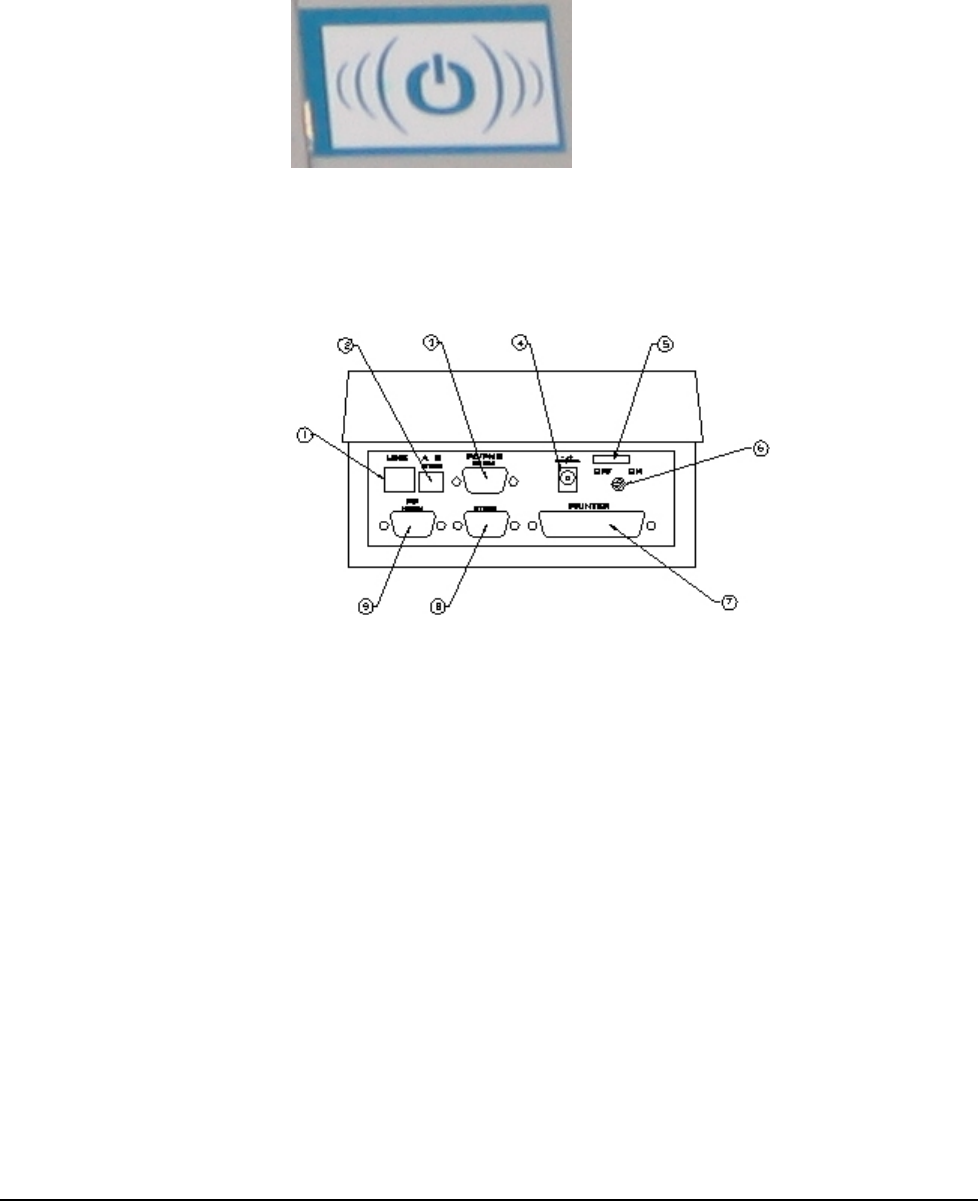
Onity HT24W / HT28 Smart Hardware • 105
Proximity Encoding
When prompted for proximity encoding, present the proximity card or token to the
Prox Logo on the encoder. When the encoder is ready to encode a proximity key, it
will begin to beep. Present the card at the logo point shown below. The encoder will
emit a louder beep when the encoding has been completed.
Connections
1. Not Used With This System 6. On/Off Switch
2. HTCOM Connection – AB Format 7. Not Used With This System
3. Firmware Update Connection 8. HTCOM Connection
4. 12/15VDC Power Input 9. HTCOM Connection
5. Strain Relief
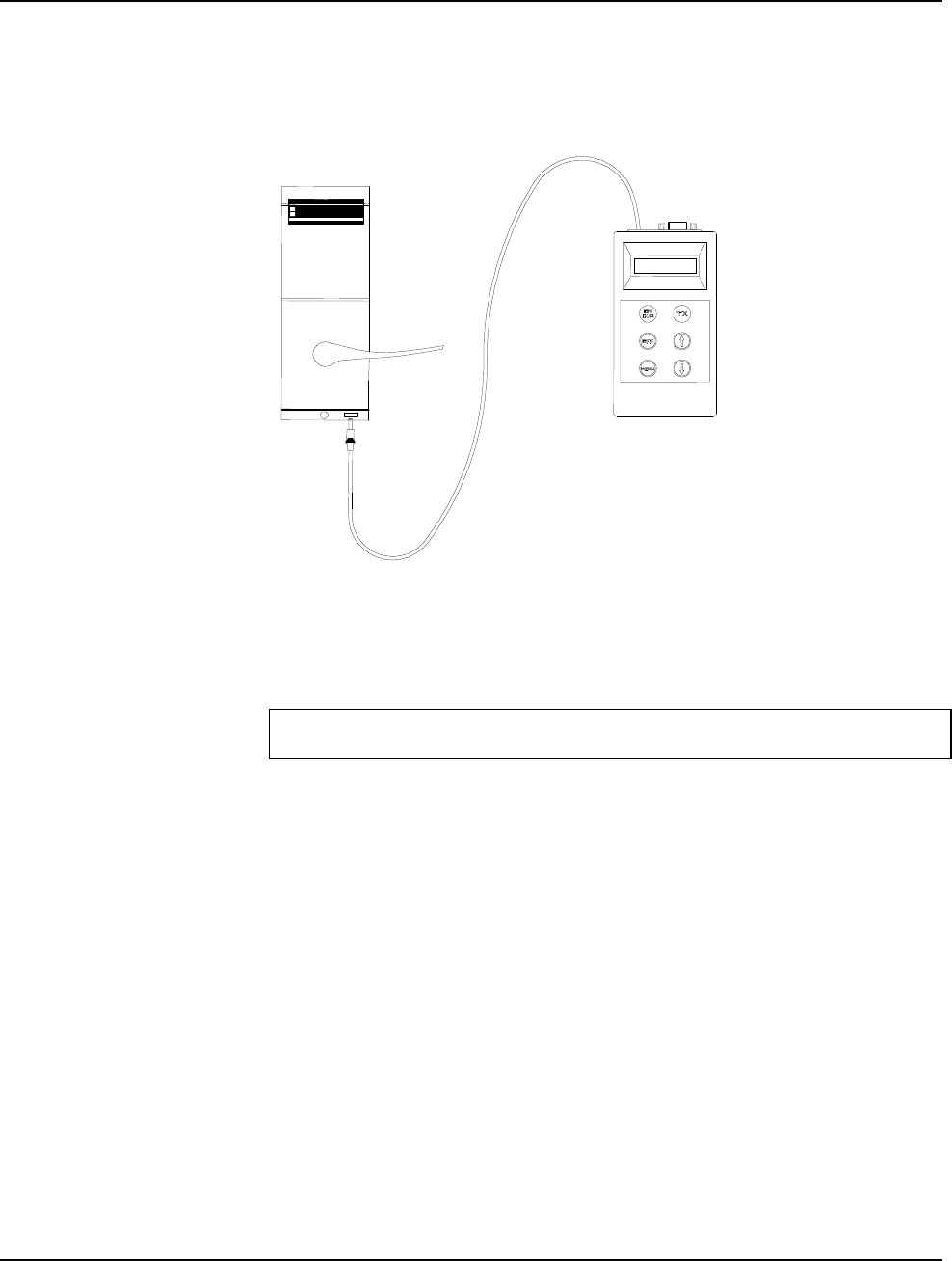
106 • Hardware Onity HT24W / HT28 Smart
General Components
Portable Programmer
The Portable Programmer, commonly called the PP, is used to carry information
between the lock and the front desk equipment. It can also be used to open a
guestroom and to test the operation of a lock.
When the locks are first installed, the PP is used to initialize each lock to a particular
room number, load its table of room codes, and set the internal clock.
Note: Since the PP can be used to unlock a door, it should be secured when not in
use.
If you are unable to secure the PP, remove and reinstall one battery after use. This
will clear the memory and require that the PP be connected to the console before it
can be used again. Connection to the console requires a management level password;
therefore, proper security is maintained.
Batteries – Portable Programmer
The PP uses 4 AA batteries which are expected to provide about 50 hours of use. If
the display is not visible, the batteries must be replaced.
Connecting the PP to the Lock
The PP is connected to the lock with the plug on the attached cable. On the bottom of
the lock, to the right, you will see a hole (called a jack). Insert the end of the cable
(the plug) into the jack. Before you connect the PP to the lock, however, you may
first need to connect it to the console. This generally depends upon the operation you
wish to perform. In fact, the PP may inform you if it needs to be connected to the
console first. The reasons for this will become clear as you read further in this
section.

Onity HT24W / HT28 Smart Hardware • 107
Connecting the PP to the Front Desk System
The PP is connected to the front desk system with a DB9 male cable. Plug one end of
the cable into the connector on the PP. Plug the other end of the cable into the connector
on the front of the Communication Distributor labeled PP. The connector will only go in
one way. Refer to the sections called Lock Openings for the steps required to perform
each specific operation
Portable Programmer Buttons
ON/CLR (red)
The ON/CLR key turns the PP on. It also is used to clear or abort an operation
and return to the menu.
OFF
The OFF key turns the PP off. The PP will turn itself off after about 30 seconds
of inactivity.
MENU
The MENU key selects the various menu choices. Each time you press the
MENU key it will advance to show you the next menu choice.
TX (green)
The TX key is the "transmit" or "GO" button. It is used to start the
communication with the lock once the correct menu selection has been made.
UP & DOWN ARROWS
The UP / DOWN ARROW keys scroll through the options within a menu
choice. For example, if you have used the MENU key to select the UPDATE
menu, then the UP / DOWN ARROW keys will allow you to select the proper
door to be updated.
Portable Programmer Menu Options
UPDATE Option
Update is used to make the data in the lock match the data in the front desk console.
You will update a lock for the following reasons:
• Twice each year to load the daylight savings time information.
• If you change the code of a Programming Card, a Canceling Card, or a
Blocking Card.
• If a change is made to the locking plan such as adding new doors or
new master cards.
Update will also notify a lock if a master card has been changed.
To update the information in a lock, you must first download the data from the front
desk computer to the PP.
After the PP is loaded with data, go to the door that is being updated and follow
these steps:
1. Plug the PP into the lock.
2. Press the ON/CLR key to turn on the PP.
3. Press the MENU key until UPDATE appears.
4. Press the UP or DOWN arrow key to select the desired room. (see note)

108 • Hardware Onity HT24W / HT28 Smart
5. Press the green TX key.
6. Unplug the PP when it is finished.
READ Openings Option
The lock contains an audit trail of the last 100 openings. To view this audit trail you
must use the READ OPENINGS function of the PP.
To read a lock, follow these steps:
1. Go to the desired door and connect the PP.
2. Turn the PP on and select READ OPENINGS by pressing the
MENU key.
3. Press the green TX key.
4. Unplug the PP and take it to the front desk console.
5. Refer to the section on Lock Openings to print this report.
NOTE: You may read the openings of more than one lock. You will be allowed
to select which lock openings to print at the front desk console.
TEST Option
The TEST function will test most functions of the lock, including the batteries, the
electronics, and the handle switches. It will also indicate the reason a card was
rejected in a lock. A good time to test each lock is during the time change that occurs
twice each year, since you are at the door with the PP.
To test each lock, follow these steps:
1. Connect the PP to the lock, turn it on and select TEST with the
MENU key.
2. Press the green TX key. This will show you the room number of this
lock, the lock type and version, the door number and will test the red
and green lights.
3. Press the TX key again, this will show the date and time in the lock
and test the batteries. You should see "Batteries OK". If not, replace
the batteries.
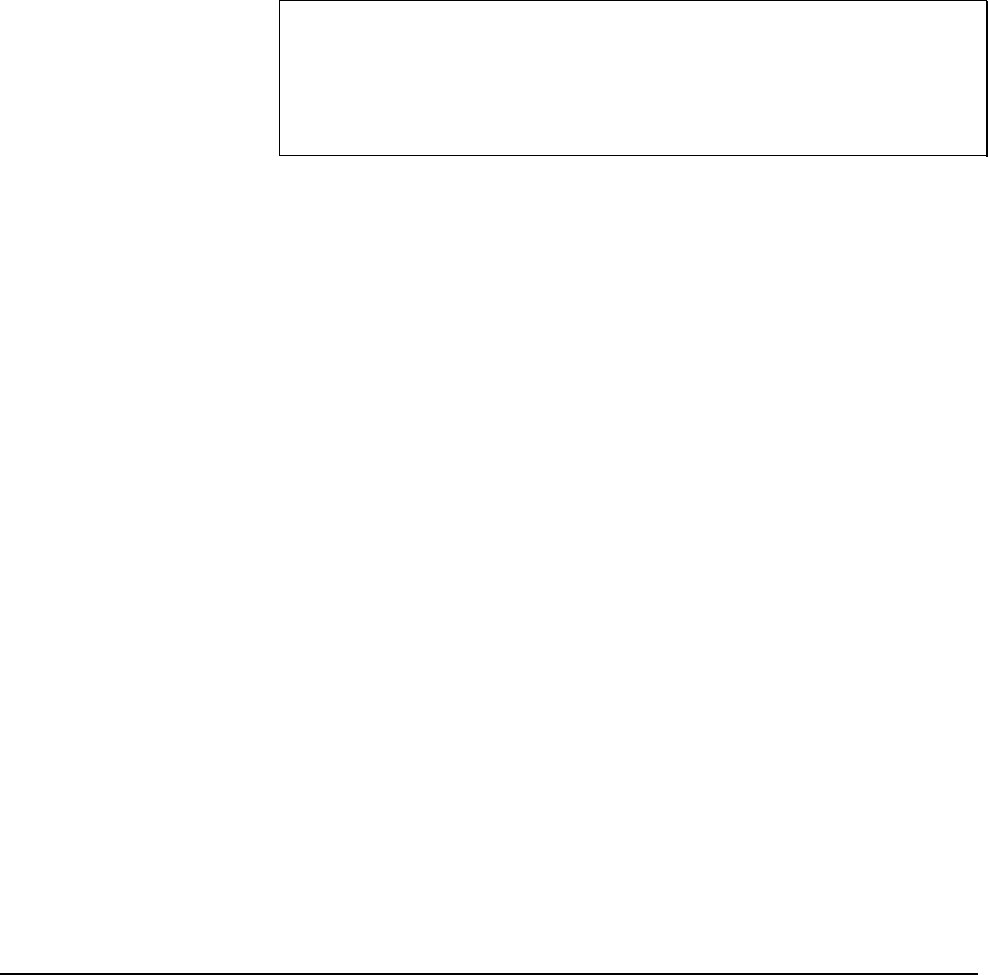
Onity HT24W / HT28 Smart Hardware • 109
4. Press the TX key again and operate the outside handle, the deadbolt,
and insert a card. For each of these operations you should see a
message that indicates that the corresponding switch in the lock was
activated. If you do NOT see a message for any of these operations, or
if the message remains on the screen after you have completed the
operation, the lock needs to be repaired.
5. Press the TX key again. If your lock has a keyboard, press the buttons.
The character you press should be displayed.
6. Press the TX key again. You will see “MAN. DATE” and the
manufacturing date of the lock electronics.
7. Disconnect the PP.
8. Insert and remove the Diagnostic Card. You should see a green light.
Go to the next door.
NOTE: It is a good idea to use the Diagnostic Card during this test. You will need
a card anyway to perform the card switch test and the Diagnostic Card can be used
for this purpose.
NOTE: The TEST function may also be used to indicate why a card was rejected
by the lock. Simply connect the PP to the lock, select the TEST function, and insert
the card in the lock. The PP will display the reason the card was rejected.
INITIALIZE Option
The INITIALIZE function is generally used the first time a lock is installed. It
establishes the room number for the lock and loads all the lock data. You should only
use this function if you have replaced a lock on a door.
To initialize a lock, follow these steps:
1. Turn the PP ON and select INITIALIZE with the MENU key.
2. Use the UP or DOWN arrow keys to select the room number. Make
certain to select the CORRECT room number.
3. Press the green TX key.
4. Disconnect the PP when it is finished.
This lock is now initialized. Make a guest card for the lock and test it. Also, be sure
to test the master card(s).
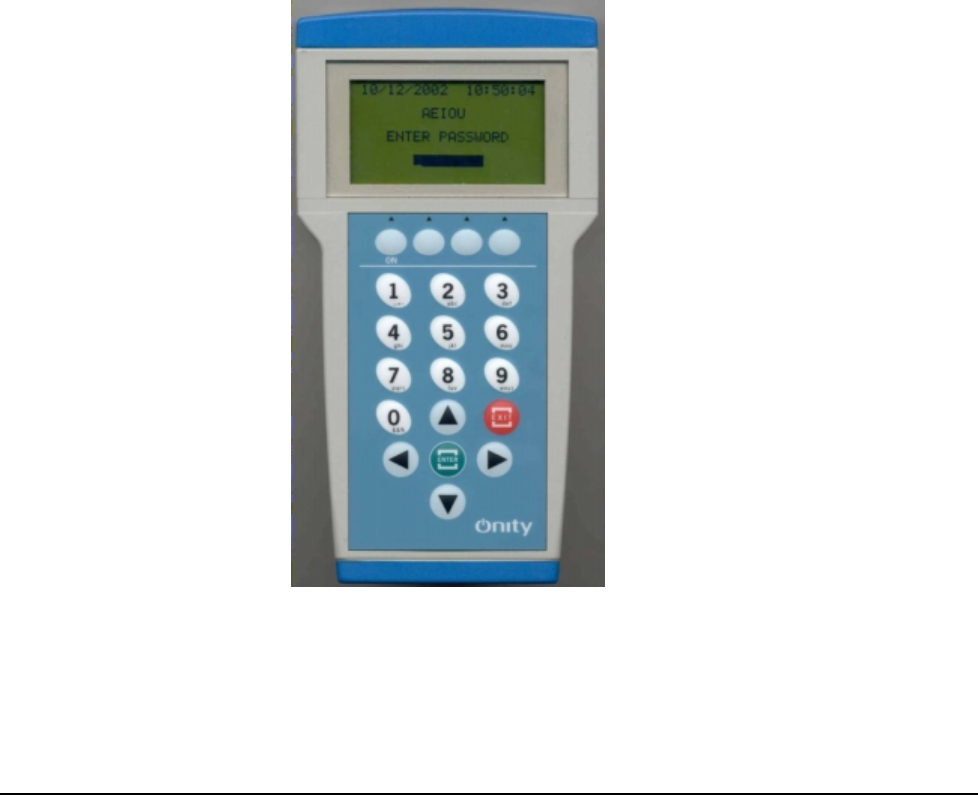
110 • Hardware Onity HT24W / HT28 Smart
OPEN Option
The OPEN function can be used to unlock a door that will not respond to a guest
card or any master cards. It will even open a door that has missing or dead batteries.
To OPEN a door with the PP, follow these steps:
1. Connect the PP to the lock and turn it ON.
2. Select OPEN by pressing the MENU button.
3. The message "Access Code:" will be displayed on the screen. Press the
UP arrow key to find the first digit of the code, and then press the TX
key. Press the UP arrow key again to find the second digit, and press
the TX key. Repeat this procedure for digits 3 and 4. Upon entering the
fourth digit, the PP will display "Transmitting" and the lock should
open.
Just like an Emergency key, the OPEN function will unlock a door that is locked
with the deadbolt. For this reason the PP should be secured when not in use. If you
cannot secure the PP, remove and reinstall one battery after each use. This will
require that you connect the PP to the console load the programmer prior to
performing the three steps above.
Extended Portable Programmer (XPP)
The Extended Portable Programmer (XPP) performs the same task as the standard
Portable Programmer, but has features that the standard PP does not have. These
include the ability to set up Operators to use the XPP, Allow or disallow various
functions based on operator level or at the time of loading, greatly increased
capacity, and the ability to load via directly connecting to the serial port of the
computer which allows for faster loading of the unit.
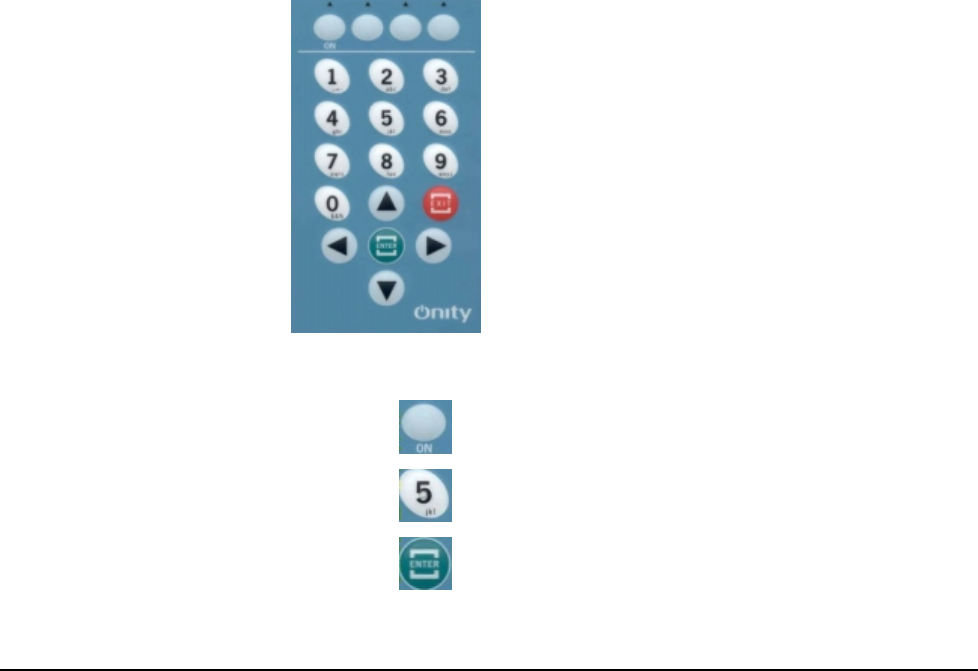
Onity HT24W / HT28 Smart Hardware • 111
Batteries – Extended Portable Programmer
The uses 4 AA rechargeable batteries (Nickel – Metal-hydride NiMH). To charge
the unit, plug in a 12VDC power supply to the connector on the top of the unit.
There are 2 charging modes:
• Fast Charge – When the XPP is inactive and the batteries charge in
about 1 hour. The green LED is illuminated when the XPP is in Fast
Charge.
• Maintenance Mode Charge (Slow Charge) – When the XPP is active
and the power supply is plugged in.
XPP Connections
The XPP connects to the HT28 System via the PC serial port using a DB9F – DB9F
serial cable. It can also be connected to a USB port using a USB – RS232 adapter
(sold separately). Plug one end of the connector into the PC serial port and the other
into the 9 pin connector of the XPP.
The XPP can also be connected to the HTCOM when used in Standard PP emulation
mode. This is done using the DB9M – DB15F cable supplied with the unit. The
DB9M connector is connected to the PP connection of the Communication
Distributor and the DB15F connector to the 15 pin connection on the XPP. Note:
When used in this mode, the extended features are not available.
The XPP is connected to the lock with the XPP to Lock communication cable
(DB15F – 2.1mm Barrel connector). Plug the DB15F connector into the 15 pin
connector of the XPP and the barrel connector into the PP Jack of the lock.
XPP Keypad
The XPP has an easy to use and easy to understand keypad. The function of the keys
is described below:
• Use to power the XPP on.
• Alpha Numeric keys, used to enter letters or numbers.
• The Enter key is used to complete a transaction, select an item
in a list, or answer YES to a choice on the screen.

112 • Hardware Onity HT24W / HT28 Smart
• The Exit key is used to cancel a transaction, or to answer NO to
a choice on the screen.
• The four arrow keys are used to scroll through the menu options
and selection lists on the XPP
XPP Soft Keys
The four keys at the top of the XPP keypad are called Soft Keys. The functionality
of these soft keys changes based on the menu or option that is currently selected. On
the screen above these soft keys, the current function is displayed.
XPP Menu Options
Update Lock
Update is used to make the data in the lock match the data in the front desk console.
You will update a lock for the following reasons:
• Twice each year to load the daylight savings time information.
• If you change the code of a Programming Card, a Canceling Card, or a
Blocking Card.
• If a change is made to the locking plan such as adding new doors or
new master cards.
Update will also notify a lock if a master card has been changed.
To update the information in a lock, you must first download the data from the front
desk computer to the PP.
After the XPP is loaded with data, go to the door that is being updated and follow
these steps:
1. Plug the XPP into the lock using the XPP to Lock cable.
2. Press the ON key to turn on the XPP.
3. Enter your password if using XPP operators.
4. Select Update Lock and press Enter.
5. Press the green Enter key again. It is not necessary to choose a room
number at this point because the XPP will read the number from the
lock.
6. Unplug the XPP when it is finished.
Initialize Lock
The INITIALIZE function is generally used the first time a lock is installed. It
establishes the room number for the lock and loads all the lock data. You should only
use this function if you have replaced a lock on a door.
To initialize a lock, follow these steps:
1. Turn the XPP ON, enter password if applicable, and select
INITIALIZE with using the arrow key and press Enter.
2. Use the arrow keys to select the room number. Make certain to select
the CORRECT room number.

Onity HT24W / HT28 Smart Hardware • 113
3. Press the green Enter key.
4. Disconnect the XPP when it is finished.
This lock is now initialized. Make a guest card for the lock and test it. Also, be sure
to test the master card(s).
Read Openings
To view the audit trail of a lock or safe, you must use the READ OPENINGS
function of the XPP.
To read a lock, follow these steps:
1. Go to the desired door and connect the PP.
2. Turn the PP on, enter password if applicable, and select READ
OPENINGS by using the arrow keys.
3. Press the green Enter key.
4. Unplug the PP and take it to the Onity computer to view the openings
on the computer. You can also view the openings directly on the
screen of the XPP, using the Show openings options.
5. Refer to the section on Lock Openings to print this report.
NOTE: You may read the openings of more than one lock. You will be allowed
to select which lock openings to print at the front desk console.
Show Openings
After reading the openings of a lock, it is possible to view those openings directly on
the XPP by selecting the show openings function. If there are multiple openings
reports in the XPP, select the desired report and press Enter to view.
Test Option
The TEST function will test most functions of the lock, including the batteries, the
electronics, and the handle switches. It will also indicate the reason a card was
rejected in a lock. A good time to test each lock is during the time change that occurs
twice each year, since you are at the door with the PP.
To test each lock, follow these steps:
1. Connect the XPP to the lock, turn it on, enter password if applicable,
and select Test Lock using the arrow keys.
2. Press the green Enter key. This will show you the room number of this
lock, the lock type and version, the door number and will test the red
and green lights.
3. Press the Enter key again, this will show the date and time in the lock
and test the batteries. You should see "Batteries OK". If not, replace the
batteries.
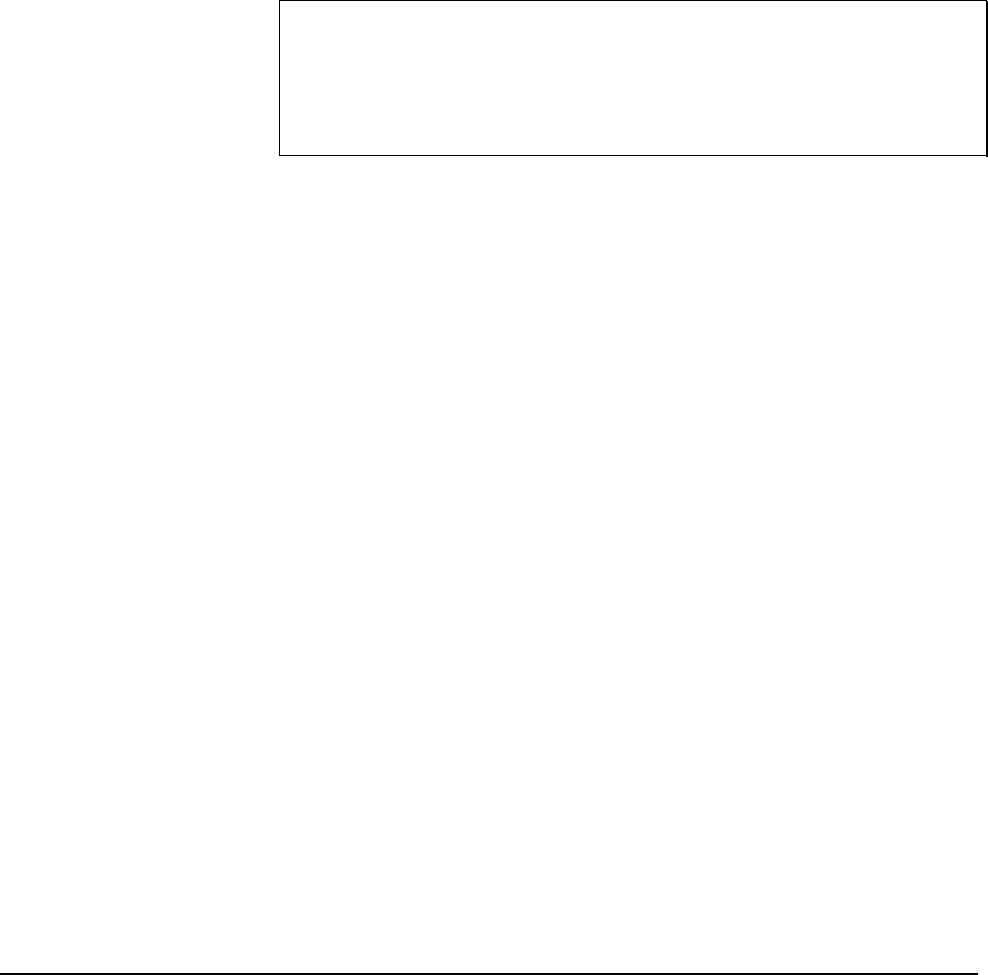
114 • Hardware Onity HT24W / HT28 Smart
4. Press the Enter key again and operate the outside handle, the deadbolt,
and insert a card. For each of these operations you should see a
message that indicates that the corresponding switch in the lock was
activated. If you do NOT see a message for any of these operations, or
if the message remains on the screen after you have completed the
operation, the lock needs to be repaired.
5. Press the Enter key again. If your lock has a keyboard, press the
buttons. The character you press should be displayed.
6. Press the Enter key again. You will see “MAN. DATE” and the
manufacturing date of the lock electronics.
7. Disconnect the XPP.
8. Insert and remove the Diagnostic Card. You should see a green light.
Go to the next door.
NOTE: It is a good idea to use the Diagnostic Card during this test. You will need
a card anyway to perform the card switch test and the Diagnostic Card can be used
for this purpose.
NOTE: The TEST function may also be used to indicate why a card was rejected
by the lock. Simply connect the PP to the lock, select the TEST function, and insert
the card in the lock. The PP will display the reason the card was rejected.

Onity HT24W / HT28 Smart Hardware • 115
Open Lock
The OPEN function can be used to unlock a door that will not respond to a guest
card or any master cards. It will even open a door that has missing or dead batteries.
To OPEN a door with the XPP, follow these steps:
1. Connect the XPP to the lock and turn it ON.
2. Enter your password if applicable.
3. Select Open Lock using the arrow keys and press Enter.
4. If you are not using XPP operators, The message "Access Code:" will
be displayed on the screen. Enter the Access code that was loaded into
the XPP when the it was loaded from the computer, then press Enter.
Power the Lock
In the event that the batteries are dead in a lock, the XPP can be used to power the
lock, which will allow you to use a keycard to open the lock. To do this, follow
these steps:
1. Connect the XPP to the lock and turn it on.
2. Enter your password if applicable.
3. Select Power the Lock using the arrow keys and press Enter.
4. Use a valid key to open the lock.
Use of this function would typically be by XPP operators who do not have access to
the Open function.
Clear Locking Plan
When finished using the XPP, it is recommended that you use the Clear Locking
Plan function to delete the information in the XPP. This should be done to protect
the property in the event the XPP is lost or stolen. To clear the locking plan, follow
these steps:
1. Turn the XPP on and enter your password if applicable.
2. Use the arrow keys to select Clear Locking Plan and press Enter.
3. Press Enter again to answer yes to the question ‘Are you sure?’.
4. All information about the locks will be erased from the unit. The test
function and the power the lock function are still available to use.
Communications Distributor
The communications distributor is one of the most important pieces of the Onity
system. Without it you cannot load the Portable Programmer or encode cards. The
communications distributor converts signals from the serial port of a computer to a
secure proprietary communications network called HTCOM.
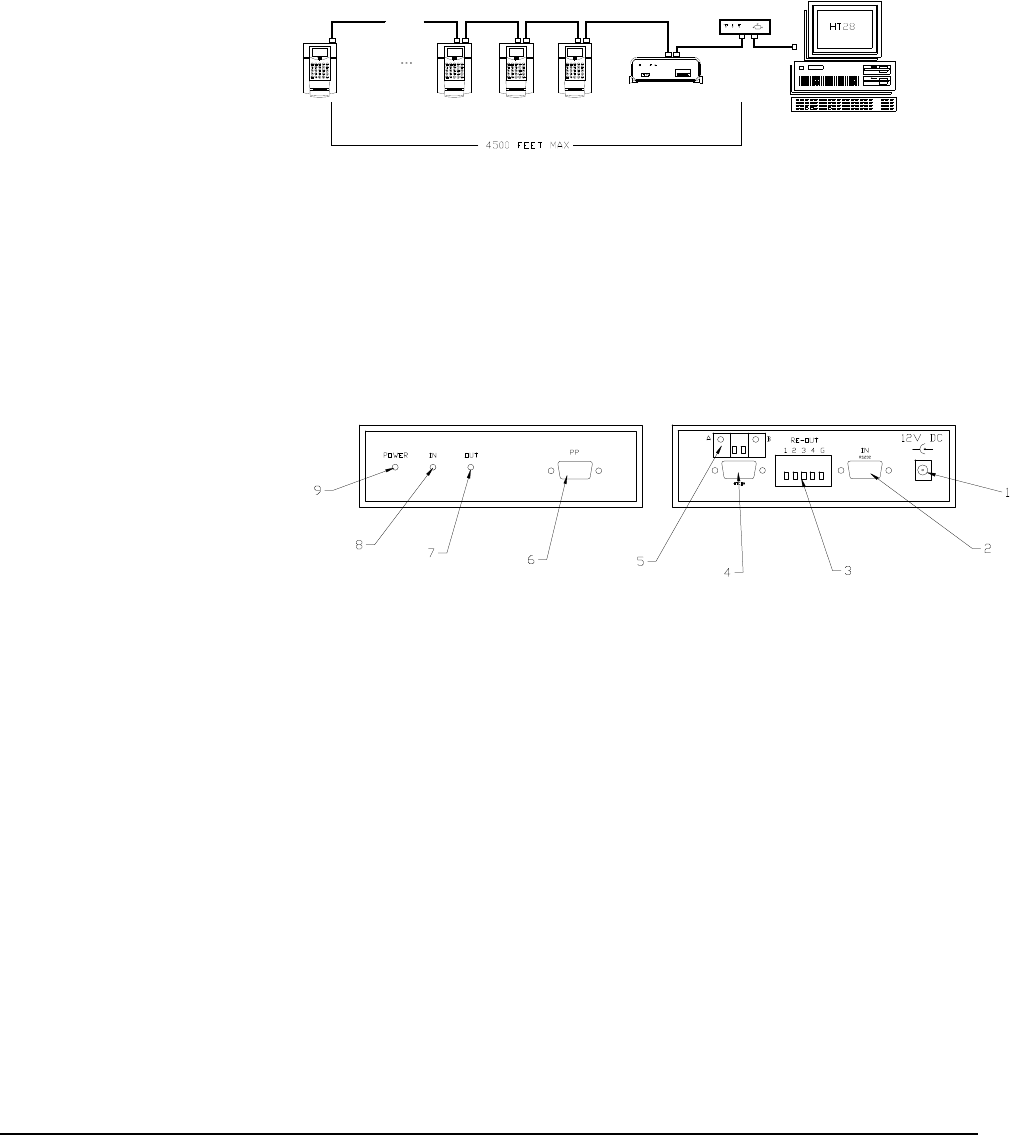
116 • Hardware Onity HT24W / HT28 Smart
HTCOM Network
The HTCOM network has a total distance limit of 4500 feet. That is the entire
distance from the communications distributor to the very last device on the network.
This distance limitation can be extended by using repeaters in the network. If you
require online devices with cable distances over 4500 feet, contact Onity technical
support for assistance in configuring your HTCOM network.
Connections and Light Indications – Comm. Distributor
The following picture shows all of the connections of the distributor. It also shows
the location of lights that may be useful in troubleshooting HTCOM network
problems. When the distributor has power, the power LED should be on and steady.
When the distributor is connected to the PC and the software is running properly, the
LED labeled IN should be flashing rapidly. When the HTCOM network is active
and devices are connected properly, the OUT LED should also be flashing rapidly.
1. Power – 12VDC 6. Portable Programmer Connection
2. PC Connection 7. HTCOM OUT LED
3. Repeater Connection 8. HTCOM IN LED
4. HTCOM Output – DB9 connection 9. Power LED
5. HTCOM Output – 2-wire terminal block

Onity HT24W / HT28 Smart Hardware • 117
Terminal Mode Encoders
Terminals are HT22 encoders that are able to perform basic reception operations
without a PC workstation. All terminals are connected back to the main server PC
through the HTCOM network, just like standard encoders and other online devices.
The 25-button keypad on the HT22 is used when the unit is in terminal mode to
perform common front desk operations. Menus allow the operator to select the
desired function and “Hot Keys” provide quick access to the most common front
desk operations: New Guest Check-In, Copy Guest, Check Out and Read. A Single
Opening Card can also be made by using a menu system. The following paragraphs
will explain the steps necessary to perform each of these tasks. To access any of
these functions, you must enter your user password. This is the same password used
to access the software.
New Guest Check-In Using Terminal Mode
1. Enter a room number and press the DOWN ARROW. You may enter
another room if this key is to open multiple guestroom locks. A card
can have as many as 3 rooms on it. When you have entered all of the
rooms, press the DOWN ARROW again to continue.
2. If your hotel is using authorizations, the screen will prompt you to grant
or deny access for each one. To grant access, press the green ENTER
button. To deny access, press the red CLR button. Continue this until
all authorizations have been completed.
3. The screen will now prompt you to enter the number of nights this
guest will be staying. You may change the default by using the number
pad. Press ENTER when the screen shows the correct number of
nights.
4. The unit will calculate the expiration date based on the number of
nights you entered. Check this to make sure it is correct. You may use
the LEFT/RIGHT ARROW keys and the number pad to make changes.
Press ENTER when it is correct.
5. Now, you must enter the number of cards you wish to issue to this
guest. To change the default, use the number pad. Press ENTER when
you are ready to encode cards.
6. The screen will prompt you to insert and remove each card. If there is
an error in the encoding process, the screen will let you know to re-
insert the card.
Copy Guest using Terminal Mode
The steps to make an additional card for a guest are exactly the same as for a new
guest. Refer to the New Guest Check-In procedure above.
WARNING: Never make a copy for a guest who has lost a room card. Always
perform a New Guest Check-In to void the lost card.

118 • Hardware Onity HT24W / HT28 Smart
Check-Out using Terminal Mode
To check a guest out of the hotel and mark the room as vacant, follow this one step
procedure. Using the number pad, enter the room number you wish to Check-Out,
then press ENTER. The screen will inform you when the operation is complete.
Read Card using Terminal Mode
To read a card, press the READ hot key at the top of the keypad. The screen will
prompt you to insert a card. When you do this, the information about the card will
be displayed on the screen. Reading Master cards and special cards will not give you
any information except that it is a master or special card.
Single Opening Card using Terminal Mode
1. To access the Single Opening Card operation, press the MENU button.
Press the DOWN ARROW until Single Opening Card is highlighted
and press ENTER.
2. Enter a room number to check the guest into and press the DOWN
ARROW. You may only make a Single Opening Card for one guest
room.
3. If your hotel is using authorizations, the screen will prompt you to grant
or deny access for each one. To grant access, press the green ENTER
button. To deny access, press the red CLR button. Continue this until
all authorizations have been completed.
4. The screen will now prompt you to enter the number of nights this
guest will be staying. You may change the default by using the number
pad. Press ENTER when the screen shows the correct number of
nights.
5. The unit will calculate the expiration date based on the number of
nights you entered. Check this to make sure it is correct. You may use
the LEFT/RIGHT ARROW keys and the number pad to make changes.
Press ENTER when it is correct.
6. The screen will prompt you to insert and remove a card. If there is an
error in the encoding process, the screen will let you know to re-insert
the card.

Onity HT24W / HT28 Smart Hardware • 119
Online Revalidator
The Onity Revalidator provides a way to securely manage staff cards following a
very simple philosophy. If each master card is encoded to expire in six months, the
risk associated with a lost master card is large. Each master card of that type,
Housekeeping masters for example, must be re-encoded with a new code to lock out
the lost card. This could involve many cardholders and could be very inconvenient.
However, if each master card expires at the end of each shift, the risk associated with
a lost master card is reduced, especially if the lost master card is reported at the end
of the day.
To easily manage cards that expire daily a system is needed to extend the expiration
date of master cards without inconveniencing security personnel or managers. This
is the beauty of the revalidation system. Each morning, master users simply
perform a quick operation at a revalidation device and the master cards are extended
for another day.
The revalidation system can be used for much more than just extending the
expiration date on the master cards. You can also change any master user parameter,
such as shift or authorizations, and office mode or privacy override attributes. You
can also use this system as a communications tool to get messages to your staff such
as weekly schedules, daily task lists, benefits updates or a simple birthday greeting.
If you are using smart cards with card activity reporting, the revalidation process can
be an extremely effective way of retrieving usage reports and information about lock
problems such as low batteries.
Revalidator Options
There are many options available when using the revalidation system. Most options
can be different for each master user and the options are enabled on the Revalidation
tab of the Master Users screen.
PIN – Personal Identification Number
Because the revalidation station may be in an unattended area and master cards can
have access to a large number of guest rooms and other secure areas, you may decide
that extra protection is required to be sure that the system is secure. To add some
extra security to the revalidation system, you can require that master users enter a 4-
digit personal identification number to ensure that the person revalidating the card is
actually the staff member assigned to that card.
Each master user can have a unique PIN that you assign, or you can allow the master
user to change the PIN whenever they revalidate. You could even require that a staff
member change their PIN the next time he or she revalidates the master card.
For detailed instructions on setting these features, please refer to the Master User
screen described earlier in this manual.
Revalidation Increment
The revalidation increment is the length of time the expiration date of the card can be
extended when it is revalidated. The highest level of security is achieved with the
shortest revalidation increment. However, this could be very inconvenient for your
staff, so the option is left for management to decide for each specific card holder.

120 • Hardware Onity HT24W / HT28 Smart
The revalidation increment can be in hours or days, and the operation of the system
is slightly different depending on this setting.
Use revalidation increments
in hours to "recharge" the
master cards.
• Hours
With the revalidation increment in hours, master cards are "recharged" with the
number of hours you set. That is, the new expiration time is based on the time
the card is revalidated.
For example, the increment is set for 8 hours and a master user revalidates at
2:30 PM. The expiration date of that card would be extended to 10:30 PM
regardless of the expiration date on the card. If the staff member revalidates
again at 4:00 PM, the expiration would be extended to midnight.
• Days
If the revalidation increment is set in days, the card will always expire at the
same time, only the expiration date will change. It does not matter what time
the card is revalidated.
For example, the increment is set for 1 day and a master card is set to expire at
7:00 Tuesday evening. If the staff member revalidates at 4:30 PM on Tuesday
the expiration date will be extended to 7:00 PM on Wednesday. If the staff
member revalidates again at 8:00 PM, the expiration date is not changed, as it is
already set for the next day.
Use revalidation increments
in days to maintain consistent
expiration times.
Note: We recommend that you set the revalidation increment less than or equal
to the shift that a card holder works. For example, if a card holder works an 8
hour shift, the revalidation increment should be set to 8 hours or less.
Enable Revalidation
You can prevent a master user from revalidating his card by simply disabling the
revalidation option. For example, you may need to speak with the staff member or
there may be a disciplinary reason to prevent revalidation. Whatever the case, the
card cannot be revalidated until you change this setting.
Revalidation Shift
The revalidation shift can be used to limit the time of day a master user can
revalidate his/her master card. This can be a useful tool to prevent large groups of
staff members from trying to use the revalidation station at the same time. It can also
allow you to maintain a tighter level of security over the master cards carried by your
staff.
Messages for Users
Because your staff members must revalidate their master cards frequently, the
revalidation system can be a very useful communications tool. You can provide
room lists for your housekeepers, or task lists for your maintenance personnel. There
are many reasons you may wish to get some information to your employees.
Messages for each master user are entered in the Master Users screen on the
Revalidation tab. Messages can be up to 1,000 characters long including spaces.
Remember though that the on-line revalidation station has a small screen, so long
messages may be difficult to communicate.
Users can print messages when they revalidate if revalidator unit is attached to any
standard parallel printer or the special revalidator printer available from Onity as an
option.
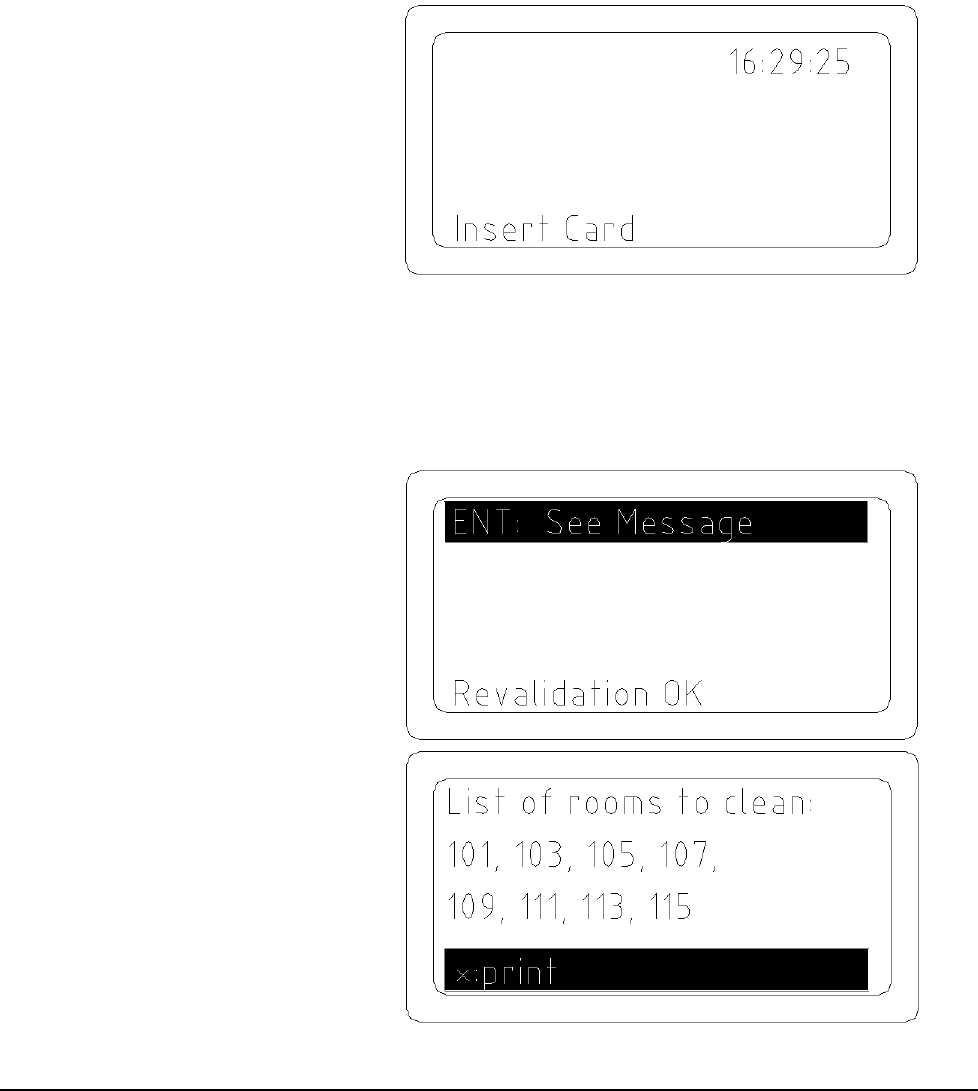
Onity HT24W / HT28 Smart Hardware • 121
Using the Revalidator
From the staff member's point of view, the revalidation process is very simple and
quick. In its idle state, the revalidator will display "Press any Key".
• To revalidate a master key, first press any key on the revalidator.
• The revalidator will then prompt the user to insert the card. If using a
magnetic stripe key, the stripe on the key should be facing upward and
on the left side of the keycard as you insert the keycard. If using a
smart card, the chip should be facing down as you insert the keycard
into the slot.
• Once the card has been inserted, do not remove the card until the
display prompts you to do so. If using a smart card, this process may
take a few seconds for the system to recover the card activity
information.
• If a message has been entered for this user, the screen will beep and
prompt the user to press enter to see the message. The message will be
displayed on the screen.

122 • Hardware Onity HT24W / HT28 Smart
• If the optional printer component is installed, the user may press the
star key (*) to print the message.
The following list gives a description of the revalidation process.
1. Read the card. The first step in the process is to identify the card and
check the attributes of the master user.
2. Recover card activity information. If the card is a smart card, the
system will recover card activity and lock status reports.
3. Encode new information onto the card. New information includes
extended expiration date and any attribute changes.
4. Display messages. If there is a message for this user it is displayed
now. The user can scroll through a long message and print it out if an
optional printer is connected.
Emergency Mode - Revalidator
If the revalidator loses communication with the main Onity server, the revalidation
process can continue in Emergency Mode. When this happens, the system has fewer
features and is intended to maintain active master cards until the connection can be
re-established.
To maintain the security of the revalidation system, a revalidation station will not
enter Emergency mode without a password.
Configuring Emergency Mode of the Revalidator
In order to use emergency mode, it must first be set up in the Onity software. From
the Configuration Menu, select Config. Emergency Reval. Enter the password that
must be used to set an encoder into emergency mode. You must also choose the
Expiration Date increment that will be used while in emergency mode, as all masters
are extended for the same revalidation increment. If a PIN is required, check the box
labeled "Ask PIN to revalidate" and the user must enter a PIN in order to revalidate.
Note: It is very important to remember the password that is set up in this step.
Without this password, it will be impossible to use the Revalidator if
communication is lost.
Revalidator Emergency Menu
Being in Emergency Mode does not prevent you from disabling revalidation for
users or changing the revalidation parameters. When the revalidation station is in
Emergency Mode, press the MENU button and enter the Emergency mode password.
The menu has several options and allows you to modify the expiration increment, the
PIN Required option, manage users, and set the date and time.
To disable revalidation for a user, highlight the Mast. Users option and press
ENTER. Scroll through the list until you find the user you are looking for. Press the
* button to enable or disable revalidation for this user. Enabled users are marked
"OK”, and disabled users are marked "off."
Any changes made during Emergency Mode should be made identically at all
revalidation stations. When the connection to the main Onity server is re-
established, highlight Quit Emerg. Mode on the menu and press ENTER.

Onity HT24W / HT28 Smart Hardware • 123
Revalidator Emergency Mode Limitations
In emergency mode, all users have the same revalidation increment and PIN required
attribute. Also, card activity and lock status reports are not collected because there is
no connection to the main Onity server. When Emergency Mode ends, all functions
will return to the previous settings.
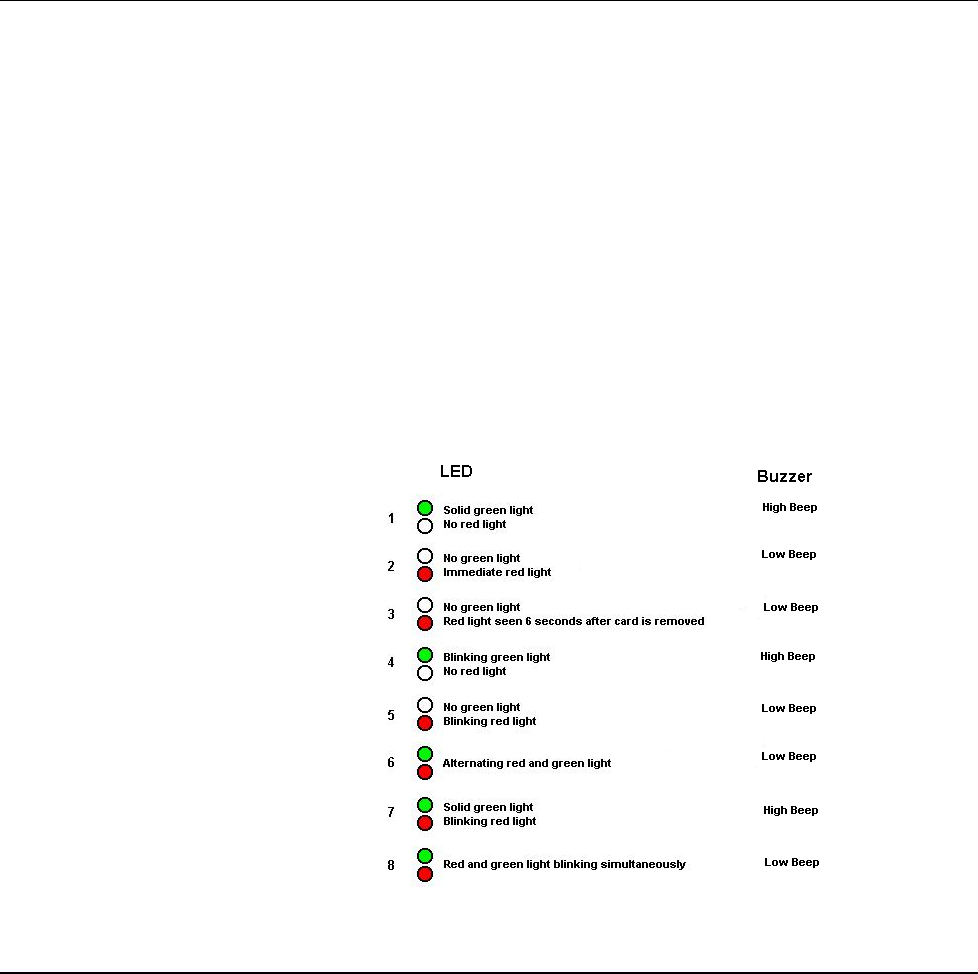
124 • Quick Reference Guide Onity HT24W / HT28 Smart
Quick Reference Guide
Lockset Light Indications
• Green Light – Valid Opening. Operate the handle to gain access to
the room.
• Red Light – Invalid Attempt. Card may have expired, been voided by a
new guest card, or may be for a different room.
• Alternating Red and Green Lights – Privacy indication or card out of
shift.
• Flashing Red Light – Blocked.
• Flashing Green Light – Office Mode.
• Delayed Red Light (Illuminates six seconds after card insertion) – Card
not encoded or incorrectly inserted.
• Green Light with Flashing Red Light – Low battery indication.
• Flashing Green and Red Lights – A Canceling card has been used for
this guest or master card.
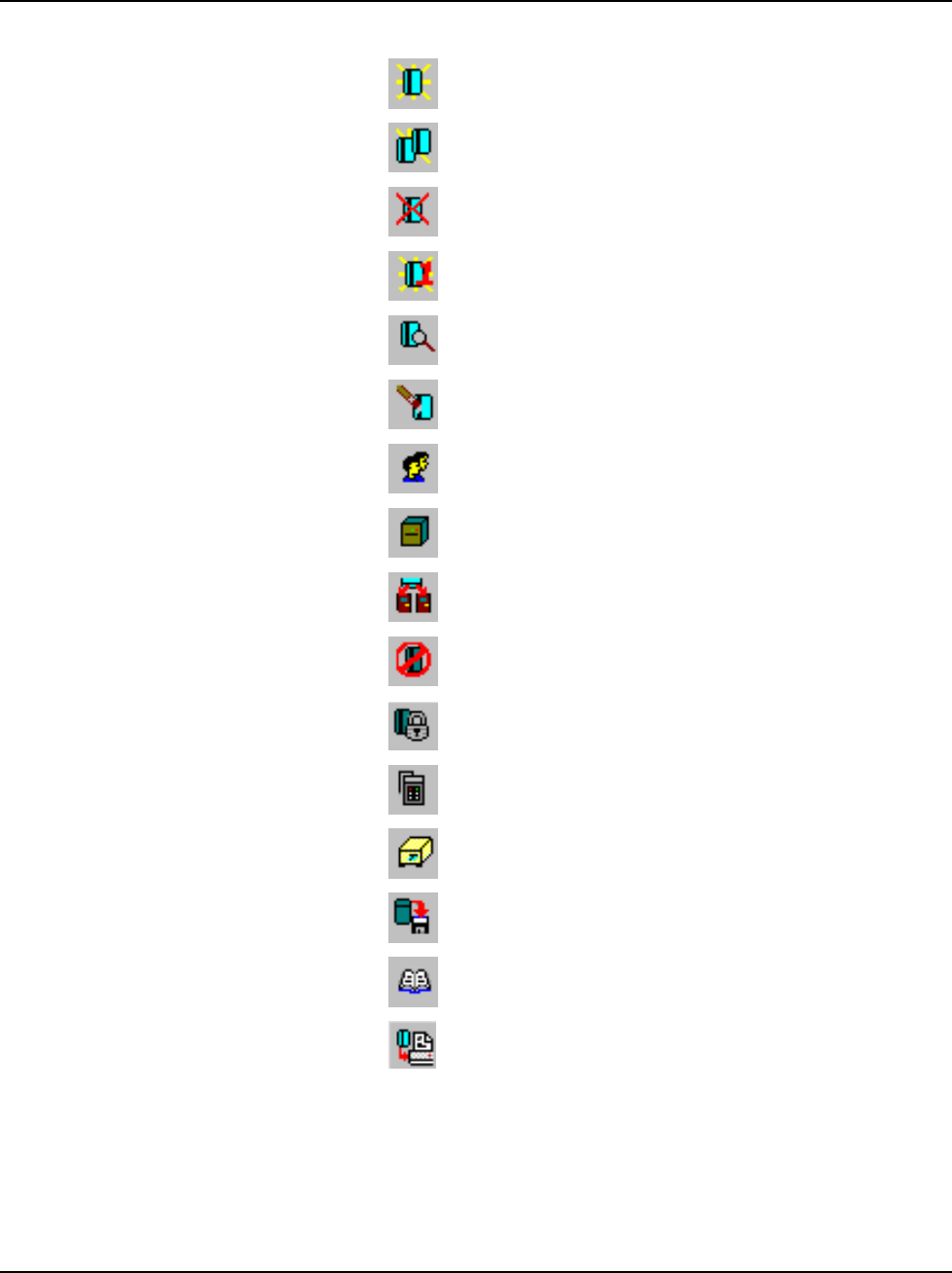
Onity HT24W / HT28 Smart Quick Reference Guide • 125
HT24W / HT28 Smart Software Icons
• - New Guest Check-In
• - Guest Copy
• - Check-Out
• - Single Opening Card
• - Read Card
• - Erase Card
• - Groups
• - Peripheral Openings
• - Master Users
• - Encode Canceling Card
• - Encode Blocking Card
• - Portable Programmer
• - Peripheral Diagnostics
• - Back Up Data
• - System Audit
• - Card Activity Report

126 • Quick Reference Guide Onity HT24W / HT28 Smart
HT24W / HT28 Smart Shortcut Function Keys
These keys can be pressed from the main screen any time an operator is logged in to
quickly access the most frequently used functions. Some functions may not be
available to all operators because their password level does not allow access to the
operation.
• F1 - Help
• F2 - Rooms List
• F3 - Read Card
• F4 - Erase a Card
• F5 - New Guest Check-In
• F6 - Guest Copy
• F7 - Check-Out
• F8 - Single Opening Card
• F9 - Logout
• F10 - Reception Menu
• F11 - Master Users
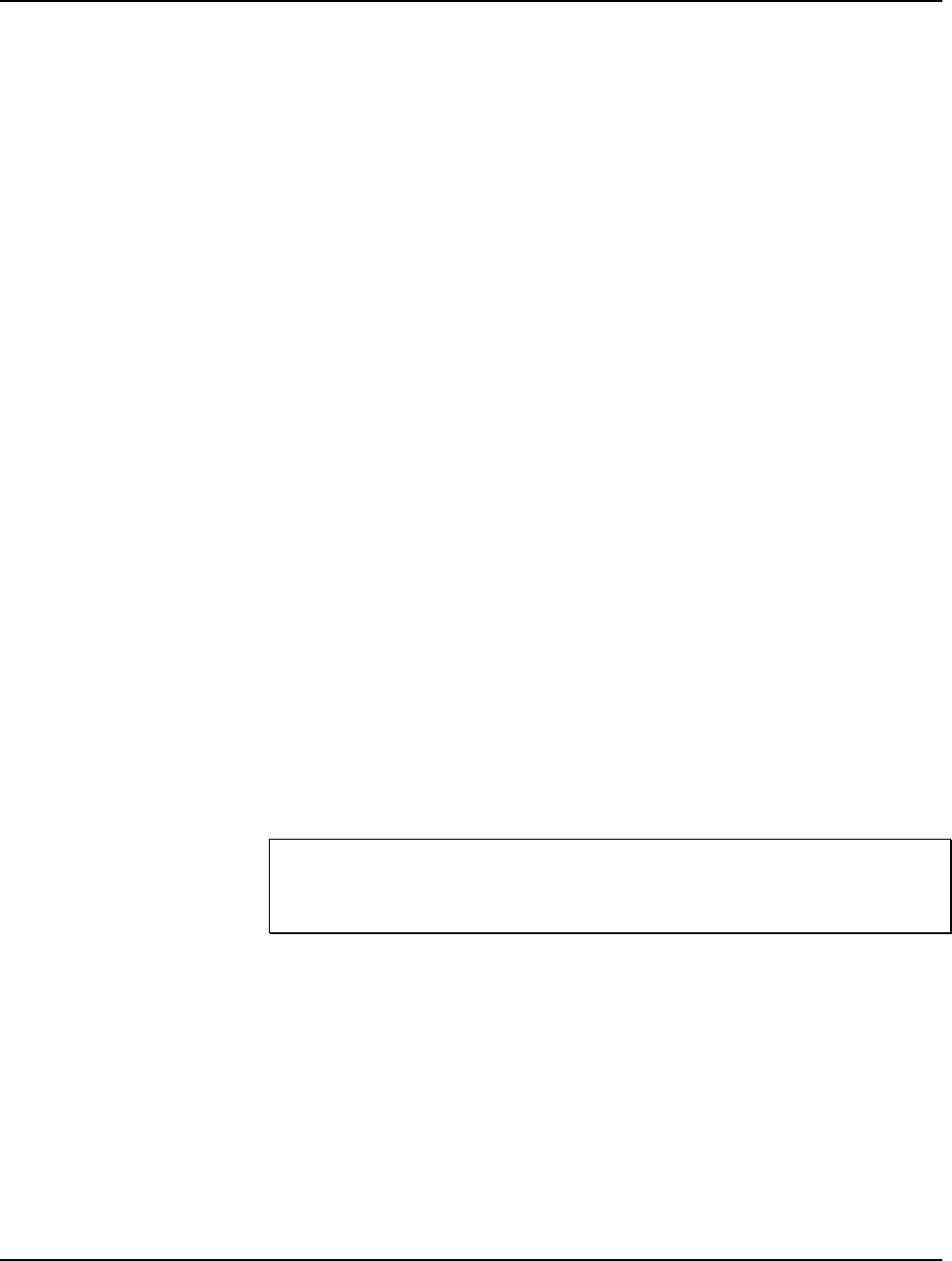
Onity HT24W / HT28 Smart Quick Reference Guide • 127
What to Do If …
The following section provides a quick reference answering common questions
concerning the system. The answers to these questions provide step by step
instructions to solve the problems and may refer you to other sections of this manual
for more details on a particular step.
A staff member has lost a master card …
If a staff member has lost a master card you need to make sure that the card cannot
be used if found. There are several options described in the Master cards section of
this manual.
The most secure way to lock out a lost master card is to follow these steps.
• Enter the Master Users List (F11)
• Highlight the lost master user in the list
• Click the Cancel button at the bottom of the screen
• Answer Yes to confirm that you wish to cancel this user
• Select Master Canceling Card from the Masters Menu
• Highlight the type of master that was lost, GM for example. The
master user that list the card will be displayed in the lower section
of the screen
• Click the Encode button to make the card.
• Use this card in any lock that the lost master card could open.
• If the staff member needs a new card, you can re-enable (or un-cancel)
her.
• Highlight the name in the Master Users List and click the Modify
button.
• Click OK on the Modify screen and answer Yes to re-enable.
• Now you can make a new card for the staff member.
Note: Any other cardholders of this type (GM in the previous example) will be
locked out of the doors by the canceling card. These users need to update their
cards with new information. This can be done at a revalidation unit or at a Onity
computer.
Our PMS interface is down …
If you have multiple encoders that are normally controlled by the PMS you can
easily convert them to operate as terminal mode encoders. Go to the Peripheral
Diagnostics option on the Maintenance Menu. Use the Change Mode feature to
change the PMS encoders to terminal mode encoders. Then, operators can log into
the terminals with their normal operator password. Once logged in, they can encode
guest keys, make copies, read cards and perform other functions that will keep the
front desk operational until the PMS is back online.

128 • Quick Reference Guide Onity HT24W / HT28 Smart
There is an entire section in this manual dedicated to explaining the operation of
terminal mode encoders.
Note: Motorized encoders cannot be used as terminals because they do not have
keypads or displays.
Power is out and our encoders don't work …
Although all Onity encoders have battery backup, except for the motorized encoder,
if the power goes out for an extended period of time the encoders may stop working.
If this happens, you can still get new guests into their rooms by using the Spare Card
system. The Spare Cards will operate the guest rooms until you are able to issue new
cards to the guest.
Note: Spare Cards and Programming Cards must be prepared in advance because
you will not be able to make them when you need to use them.
To review the use of the Spare Card system and how to prepare for a power outage,
refer to the section of this manual titled Using the Spare Card System.
A guest needs a late check-out time …
Typically, the expiration time on the card is shortly after your standard check-out
time. If a guest needs to stay for a late check-out you should make a copy for that
room and adjust the expiration time to be long enough for the guest's needs.
Daylight Savings Time is next week …
Planning for Daylight Savings Time changes does not only involve changing the
time on your front desk console. This is the time to make sure all of your systems are
set to the correct time and date and are functioning normally. The following list will
help guide you at this time:
1. Your Onity computer may adjust for daylight savings time
automatically. If it does not, you can manually adjust the time in your
Onity front desk system. Refer to the section of this manual titled
Change Date and Time for step by step instructions on this procedure.
A message box may automatically pop up to confirm the time change.
If you have a PMS interface, make sure to change the time on both
systems.
2. Load the Portable Programmer. Refer to the section of this manual
titled Load Portable Programmer for step by step instructions on this
procedure.
3. If the dates of the time change are set up in your system, the locks will
automatically make the time adjustment on the correct day. The locks
must be updated within the six months prior to a time change to be
loaded with the proper information.
We want to provide our own cards …
Onity rejects over 90% of the
magnetic keycard vendors
who submit samples.
Technical Support recommends purchasing magnetic stripe cards from Onity. Onity
uses only the highest quality mag-stripe cards available. Onity’s quality requirements
are so strict that over 90% of the vendors who apply to supply cards through Onity
fail to meet the requirements. Onity also recommends purchasing Mifare cards from
Onity to insure the specified read range is met.

Onity HT24W / HT28 Smart Quick Reference Guide • 129
Because it is impossible for Onity locks to work with all varieties of smart cards they
are only available through Onity. Our smart cards are pre-configured by the
manufacturer with special information that is required for operation.
We want to punch holes in our master cards to
wear them on a chain …
The trick with punching a hole in the card is picking a non-vital area for the hole.
Place the card in front of you with the graphic facing you, just like you would insert
it into a lock. Punch the hole within ½ inch of the top right corner of the card.
When should we replace our cards …
When the cards become scratched, or the plastic can be seen through the magnetic
stripe, they should be replaced. It is important to note that many times, the leading
edge of the magnetic stripe will wear before the rest of the stripe. If you have a
question, compare the card to a new card. If the stripe has receded from the edge,
replace it.
Troubleshooting
Guest card will not open the door – red light
A quick red light indicates that the lock has properly read the card, and made an
informed decision to reject the card. Begin by using the READ function of the front
desk console. Most problems of this nature begin with the encoding process. As a
final step, you may proceed to the door with the guest card and the Portable
Programmer. Use the following checklist to assist you:
1. Read the card. What is the expiration date and time? Has the card
expired?
2. Was the card made for the proper room number?
3. Has another guest been checked into the same room, voiding the
original guest card?
4. Take the Portable Programmer to the door. Connect the PP to the lock,
turn it on, and press the MENU key until the word Test appears on the
display. Do not push any buttons. Insert the guest card in the lock. The
PP will display the reason that the card does not work in the lock.
Guest card will not open the door – flashing red
light
This means that the lock was blocked with a blocking card. Assign the guest to
another room or use the blocking card again to unblock the lock.
Guest and staff cards will not open the door –
flashing red and green lights
A flashing red and green indicator means the privacy indication has been activated.
Since this is only accomplished from inside the room, the room is probably occupied.

130 • Quick Reference Guide Onity HT24W / HT28 Smart
If you know for a fact that the room is not occupied, use the PP to test the function of
the privacy indicator. If the indicator is faulty, replace the lock.
Guest and staff cards will not open the door – solid
green, flashing red light
This is the low battery indication for the lock. The lock has two levels of low battery
detection:
1. A warning level indicating that the batteries are weak but the lock
remains operational. This indication is typically displayed to staff
cards only.
2. A low battery shut down level indicating that the batteries may be too
weak for the lock to function properly. This indication is displayed to
any valid card.
Replace the batteries in the lock with fresh AA Alkaline batteries.
Card has broken in lock
Use the point of a knife and pry the broken card up from the slot. When the card is
removed, make a new card for the guest. If the card cannot be removed from the
lock, use the Portable Programmer to open the door, and then replace the lock.
The programmer will not turn on
The Portable Programmer runs on 4 AA Alkaline batteries, which are good for about
50 hours of usage. If the unit will not turn on, make sure that the batteries are fully
seated in the battery compartment. If they are, then replace the batteries.
The programmer beeps, but the screen is blank
Replace the batteries in the Portable Programmer.
The screen on our encoder is blank
Make sure that the power cord is plugged in and the unit is turned on. Double-check
your power by installing 6 AA Alkaline batteries in the encoder and checking all of
the functions.
We get encoding errors when making cards
Make sure that the cards are not worn or dirty. The front desk area of a hotel is a
very busy area, and debris can build up around the encoders. Make sure the card slot
is free of debris by gently blowing air through the slot. If the problem persists,
purchase cleaning cards from Onity, and use one in the encoding slot.

Onity HT24W / HT28 Smart Quick Reference Guide • 131
Our PMS says that Onity is not responding
The most common problem with the PMS interface is the inability to make keys.
Some of these issues relate to the PMS companies and how they code the software,
but the vast majority of these issues can be solved using common sense. If the PMS
appears to be operating normally, and the Onity system appears to be operating
normally, but the two systems are not working together, check the following items:
1. Make sure the PMS interface cable is fully connected to the back of the
Onity server. If the connector is installed at an angle, straighten it so
that all of the pins may make contact.
2. Make sure the PMS interface cable is fully connected to the PMS
terminals. If there is also an intermediate connection, make sure it is
fully connected.
3. Make sure that the Onity server is not running a process that will
temporarily halt PMS communications, such as viewing the Peripheral
Diagnostic screen.
4. Make sure that the PMS server is not running a process that will
temporarily halt communications, like a batch reporting process.
Make sure the baud rate settings for the two systems are set the same. Consult your
PMS manuals for the proper settings, and refer to the section of this manual titled
Station Configuration to set the Onity baud rate.
If the PMS connection is through Ethernet, be sure the Port Number is set properly in
both systems.

132 • Appendix A – Certifications Onity HT24W / HT28 Smart
Appendix A – Certifications
Advance RFID
CERTIFICATIONS
Federal Communications Commission
FCC ID: R32-RFIDMIFARE01
Industry Canada
IC ID: 5058A-RFIDMIFARE01
USER INFORMATION FOR RF DEVICES
Part 15 - §15.21
Changes or modifications not expressly approved by the party responsible for compliance
could void the user's authority to operate the equipment.
Part 15 - Class A digital device or peripheral§15.105(a)
This equipment has been tested and found to comply with the limits for a Class A digital
device, pursuant to part 15 of the FCC Rules. These limits are designed to provide
reasonable protection against harmful interference when the equipment is operated in a
commercial environment. This equipment generates, uses, and can radiate radio frequency
energy and, if not installed and used in accordance with the instruction manual, may cause
harmful interference to radio communications. Operation of this equipment in a residential
area is likely to cause harmful interference in which case the user will be required to correct
the interference at his own expense.
Part 15 - Class B digital device or peripheral§15.105(b)
This equipment has been tested and found to comply with the limits for a Class B digital
device, pursuant to part 15 of the FCC Rules. These limits are designed to provide
reasonable protection against harmful interference in a residential installation. This
equipment generates, uses and can radiate radio frequency energy and, if not installed and
used in accordance with the instructions, may cause harmful interference to radio
communications. However, there is no guarantee that interference will not occur in a
particular installation. If this equipment does cause harmful interference to radio or
television reception, which can be determined by turning the equipment off and on, the user
is encouraged to try to correct the interference by one or more of the following measures:
—Reorient or relocate the receiving antenna. —Increase the separation between the
equipment and receiver. —Connect the equipment into an outlet on a circuit different from

Onity HT24W / HT28 Smart Appendix A – Certifications • 133
that to which the receiver is connected. —Consult the dealer or an experienced radio/TV
technician for help.
This device complies with Industry Canada license-exempt RSS standard(s). Operation is
subject to the following two conditions: (1) this device may not cause interference, and (2)
this device must accept any interference, including interference that my cause undesired
operation of the device
HT RFID
CERTIFICATIONS
Federal Communications Commission
FCC ID: R32-HTRFIDMFR01
Industry Canada
IC ID: 5058A- HTRFIDMFR01
USER INFORMATION FOR RF DEVICES
Part 15 - §15.21
Changes or modifications not expressly approved by the party responsible for compliance
could void the user's authority to operate the equipment.
Part 15 - Class A digital device or peripheral§15.105(a)
This equipment has been tested and found to comply with the limits for a Class A digital
device, pursuant to part 15 of the FCC Rules. These limits are designed to provide
reasonable protection against harmful interference when the equipment is operated in a
commercial environment. This equipment generates, uses, and can radiate radio frequency
energy and, if not installed and used in accordance with the instruction manual, may cause
harmful interference to radio communications. Operation of this equipment in a residential
area is likely to cause harmful interference in which case the user will be required to correct
the interference at his own expense.
Part 15 - Class B digital device or peripheral§15.105(b)
This equipment has been tested and found to comply with the limits for a Class B digital
device, pursuant to part 15 of the FCC Rules. These limits are designed to provide
reasonable protection against harmful interference in a residential installation. This
equipment generates, uses and can radiate radio frequency energy and, if not installed and
used in accordance with the instructions, may cause harmful interference to radio
communications. However, there is no guarantee that interference will not occur in a
particular installation. If this equipment does cause harmful interference to radio or
television reception, which can be determined by turning the equipment off and on, the user
is encouraged to try to correct the interference by one or more of the following measures:
—Reorient or relocate the receiving antenna. —Increase the separation between the
equipment and receiver. —Connect the equipment into an outlet on a circuit different from
that to which the receiver is connected. —Consult the dealer or an experienced radio/TV
technician for help.
This device complies with Industry Canada license-exempt RSS standard(s). Operation is
subject to the following two conditions: (1) this device may not cause interference, and (2)
this device must accept any interference, including interference that my cause undesired
operation of the device
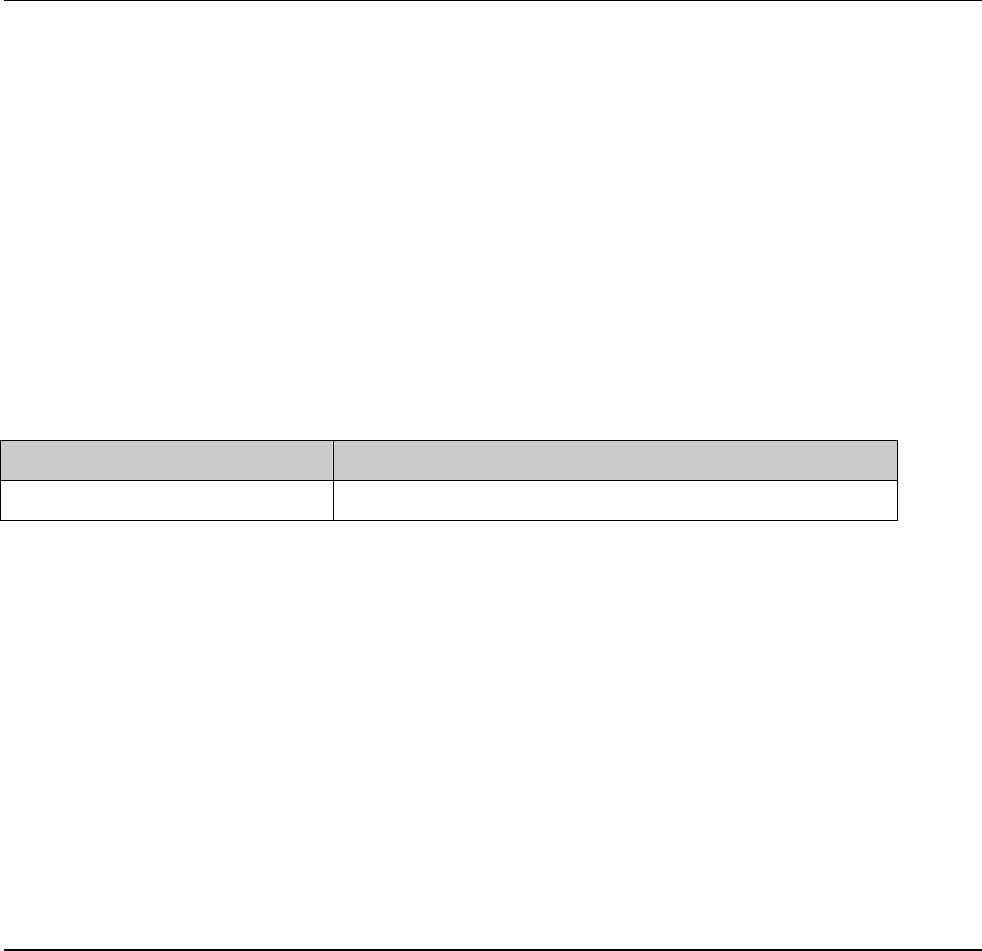
134 • Onity HT24W / HT28 Smart
Appendix B – Import Users
Add User Command
It is possible to import users into the system using a plain text file. Each line of this
file contains a command to execute. The lines that begin with character “#” are
considered comments.
The message itself has two fields: the command and the command parameters or
fields. The command is the first character of the line and must be separated from the
fields by a space character. Spaces at the beginning or end of a line are disregarded.
Separators delimit every field within the message. The separator is the comma
character represented as ‘,’ in this document. If a field is missing, its separators will
still be part of the message.
If a comma is to be present within a given field, e.g. user names (Smith, John), the
field is enclosed in double quotes.
Each command that cannot be executed correctly will create an error line. Following
is the format of the import command (note the ‘_’ character represents a space):
Command Description
A Adds a new user to the database.
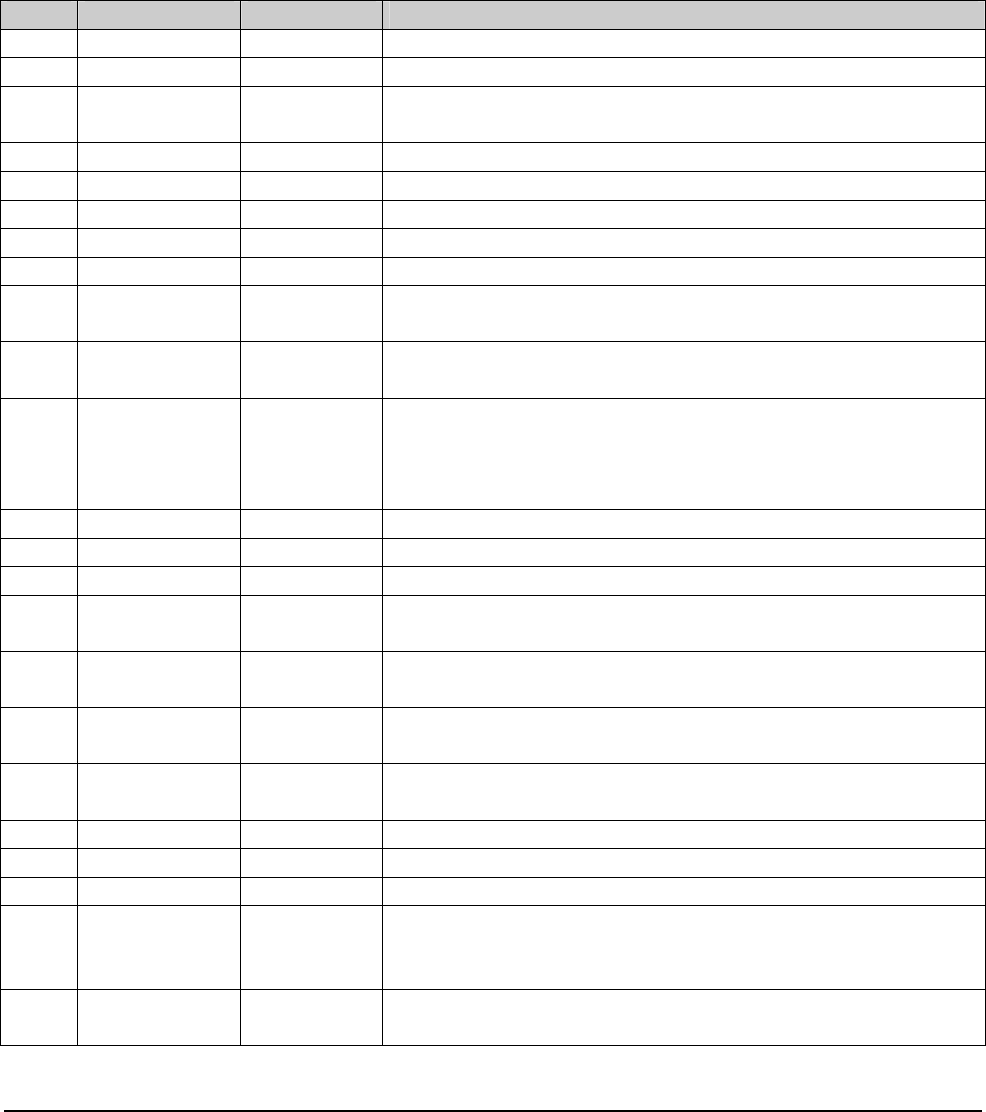
Onity HT24W / HT28 Smart Appendix B – Import Users • 135
Format:
A Name,Type,Mast,P,O,B,Shift,Aut,Dexp,Texp,Tinc,Inc,Pin,Apin,Mpin,Cpin,Rev,RS,NID,Dep,C,Dact,
Tact
The data fields may contain data conforming to the following specifications. Refer to Add/Edit
Users for more information on these fields.
Field Description Mandatory Comments
Name User Name * User name
Type Type of User * H – Hotel users
Mast Master Code Only for
types H & G Must be the name of an existing master
P Privacy 0 – No; 1 – Yes
O Office 0 – No; 1 – Yes
B Block 0 – No; 1 – Yes
Shift Shift From 0 to 8
Aut Authoriza A string with the numbers of the assigned authorisations
Dexp Date
Expiration A string with the expiration date for the user in format
YYYYMMDD.
TExp Time
Expiration Time of expiration from 0 to 23
Tinc Type
Increment 0 – None;
1 – Hours
2 – Days
3 – Months
Inc Increment Depends on the type of increment
Pin Pin A number from 1 to 9999
Apin AskPin 0 – No; 1 – Yes
Mpin Must Modify
Pin 0 – No; 1 – Yes
Cpin User Can
Modify Pin 0 – No; 1 – Yes
Rev User can be
Revalidated 0 – No; 1 – Yes
RS Revalidation
Shift Format : HH:MM-HH:MM
Including the “:” and the “-“
NID Number Id This field is not used for this system
Dep Department This field is not used for this system
C CardNumber
This field is not used for this system
DAct Date
Activation A string with the activation date for the user in format
YYYYMMDD. If a user has activation date, it must have an
expiration date.
TAct Time
Activation Time of activation from 0 to 23

136 • Appendix B – Import Users Onity HT24W / HT28 Smart

Onity HT24W / HT28 Smart Glossary of Terms • 137
Glossary of Terms
Amenity
An item or service that a hotel offers to some guests but not to all guests. There may
be a charge for the use of this service. Concierge lounges, guestroom safes and
fitness centers are some common amenities.
Grand Master Key
In a conventional metal key system the grand master key will open every door in the
system.
HTCOM
The proprietary communications network between Onity computers and peripheral
devices like encoders, revalidators and on-line readers.
ISO
International Standards Organization - This group defines standards such as
magnetic card encoding. Onity Motorized encoders can encode magnetic tracks 1
and 2 with ISO information.
Memory Card
A smart card with memory that can be written or read without requiring a password.
Microprocessor Card
A type of smart card with built in data security features such as encryption and
password protection.
Office Function
The ability of a lock to be unlocked for unrestricted access. This may be
accomplished by using an authorized card or automatically at predefined times. The
lock will remain in office mode until manually or automatically changed back into
standard mode.

138 • Glossary of Terms Onity HT24W / HT28 Smart
Panic Retraction
The ability to retract both the deadbolt and the latch on a lockset by simply using the
lever handle or knob.
PMS
Property Management System - A computer system used by hotels to control and
monitor the operation of the property such as reservations, billing and guest
reception.
Revalidation
A system used to effectively manage master card holders that reduces the
inconvenience associated with lost cards and the staff members who carry the cards.
RFID
RFID refers to Mifare ISO 14443A cards. They are contactless cards that use the
RFID signal from the lock card reader to read the id of the card.
Smart Card
A general term used in this manual to refer to any contact type memory card or
microprocessor card.
Terminal Mode Encoders
Onity encoders that can be used to encode and read guest cards without being
controlled by the PMS or a Onity computer. Room number and other information is
entered by using the keypad of the encoder.

Onity HT24W / HT28 Smart Index • 139
Index
A
A guest needs a late check-out time … 128
A staff member has lost a master card … 127
B
Backup Data 53
C
Card Activity Report 64
Card has broken in lock 130
Change Date and Time 73
Change Encoder 75
Check-Out (F7) 10
Check-Out Warning 76
Communications Distributor 115
Config. Emergency Reval. 75
Copy Guest (F6) 7
D
Daylight Savings Time 98
Daylight Savings Time is next week … 128
Door Transactions 61
E
Emergency Mode - Revalidator 122
Emphasized Authorizations Data 54
Encode Blocking Card 40
Encode Diagnostic Card 41
Encode Guest Canceling Card 40
Encode Safe Emergency Card 42
Encode Spare Cards 41
Encoders 83
Erase a Card (F4) 15
Exit 25
Extended Portable Programmer (XPP) 110
G
Groups 18
Guest and staff cards will not open the door - flashing
red and green lights 129
Guest and staff cards will not open the door - solid
green, flashing red light 130
Guest card will not open the door - flashing red light
129
Guest card will not open the door - red light 129
H
Hotel Information (F2) 16
HT22iP Encoder 102
HT24 Card Readers 82
HT24 Magnetic Stripe Lockset 77
HT24W 3
HT28 Dual Technology Lockset 87
HT28 Smart 3
K
Keycards & Tokens 99
L
Language 73
Light & Audible Indications 97
Load Portable Programmer 43
Lock Auditor 99
Lock Configurations 94
Lock Openings 61
Lock Operating Modes 96
Lock Status Report 66
Logout / Login (F9) 25
M
Magnetic Cards 80
Master Canceling Card 38
Master Users (F11) 27
Mastering Changes 51
Move to Historic 56
N
New Guest Check-In (F5) 4
O
Operator Levels Required 71
Operators 68
Our PMS interface is down … 127
Our PMS says that Onity is not responding 131

140 • Index Onity HT24W / HT28 Smart
P
Peripheral Diagnosis 48
Peripheral Openings 23
PMS Enabled 76
Portable Programmer 106
Power is out and our encoders don't work … 128
R
Read a Card (F3) 14
Revalidation 26
Revalidator Options 119
Room Out of Service 50
S
Show PMS Communications 76
Single Opening Card (F8) 11
Smart Card Encoder 91
Smart Cards 90
Station Configuration 73
Station Diagnosis 50
System Auditor 58
T
The programmer beeps, but the screen is blank 130
The programmer will not turn on 130
The screen on our encoder is blank 130
Time Tables 98
U
Using the Revalidator 121
W
We get encoding errors when making cards 130
We want to provide our own cards … 128
We want to punch holes in our master cards to wear
them on a chain … 129
When should we replace our cards … 129
X
XPP Mastering 71